

3 Week Europe Itinerary: Planning the Perfect Europe Trip
This 3 week Europe itinerary explains how to plan a trip, the best destinations to visit, and how to hit the highlights of Europe in three weeks.
Europe is a stunning continent with so many places to visit and is a bucket list vacation for many. Planning an itinerary to see many destinations can be overwhelming.
My first “big” international trip as a kid was a Europe trip that included a couple days in London, Paris, and Rome followed by a 10 day Mediterranean cruise.
Then, my first “big” trip with my boyfriend was a similar trip that included a few days in Iceland, London, Amsterdam, Rome, and Venice followed by a week long Adriatic cruise.
If you are planning one of your first “big” trips like those listed above or if you are a seasoned traveler, this guide to planning a Europe itinerary is for you.
This guide breaks down the best destinations in Europe to visit, how long to spend in each location, the best way to travel around Europe, and a guide to European cruising.

Some links on this blog are affiliate links, meaning I may earn a commission at no extra cost to you if you make a purchase through them. All opinions are my own, and I only recommend products and services I personally use and believe in. Thanks for your support!
3 Week Europe Trip Itinerary at a Glance
The below itinerary is my favorite way to travel Europe in 2-3 weeks. It’s a great itinerary because it covers a variety of different countries and cultures with minimal transit time between stops.
The itinerary has 16 location days and approximately 4 travel days. Keep reading this guide for more detail on how to plan this itinerary or something similar.
- Travel Day from USA to Reykjavik
- Reykjavik, Iceland – 2 Days
- London, England – 2 Days
- Amsterdam, Netherlands – 1 Day
- Rome, Italy – 3 Days
- Venice, Italy – 1 Day
- Adriatic Cruise – 7 Days
- Travel Day from Venice to USA
Map of this Europe 3 Week Itinerary
Using this planning guide.
This guide walks through a sample three-week Europe trip itinerary that we followed but can be easily tweaked to fit your trip. To personalize the itinerary based on your interests and availability, utilize the tips below.
Adding a destination you have always dreamed of visiting. To do this, look for a stop on this itinerary that is nearby and add a train trip to visit for a few days.
Adjust for flight efficiency . Sometimes, the most direct flights from your home may land in a country not in this list. If that is the case, spend a few days in your arrival city then connect to this itinerary where it makes sense.
Availability when booking may dictate your ability to visit certain locations, especially the cruise portion. Opt for what is available and adjust accordingly.
Daily Itineraries for 3 Weeks in Europe
Reykjavik, iceland.
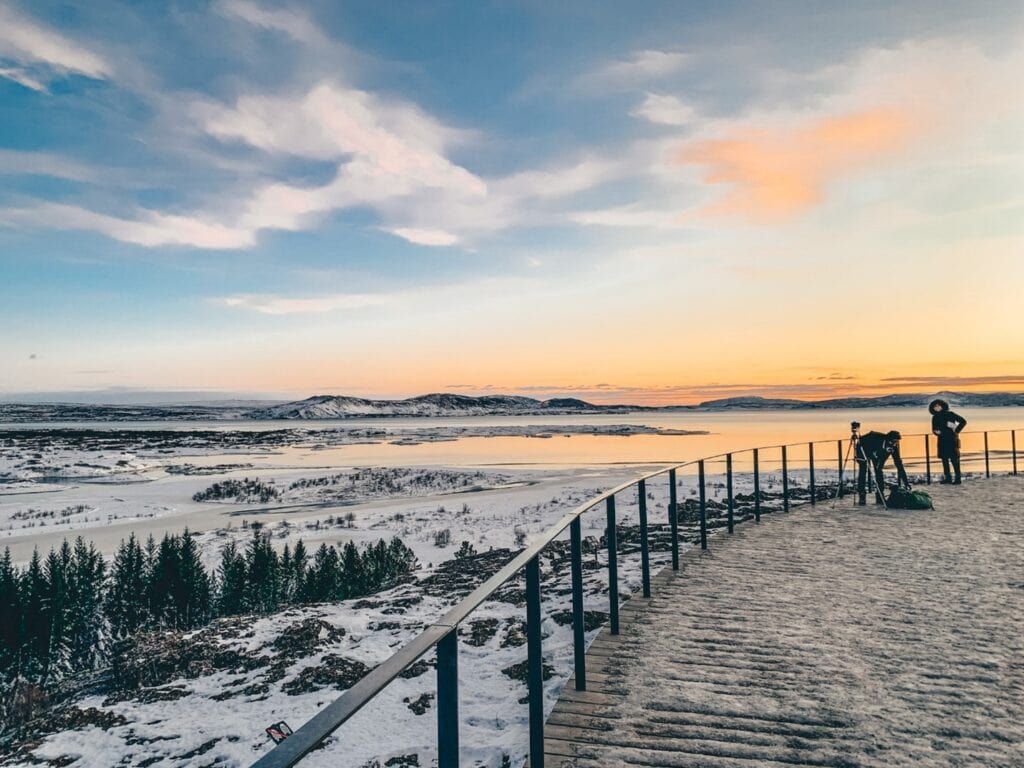
Coming from North America, Iceland is a great stopover location on the way to Europe. Icelandair offers a stopover program that allows you to stay up to seven days in Iceland for no additional cost.
In my sample itinerary, I spent 48 hours in Reykjavik , which is the perfect amount of time to get (slightly) adjusted to the time change and see a few of the highlights of the country.
Three reasons why an Iceland Stopover is a great idea:
1. Save money – Icelandair is a budget airline so you will save money on airfare and save money with their stopover program by not having to book multiple legs.
2. Break Up the Trip – We can all agree long-haul flights can be a drag. Breaking up the journey to Europe with a couple days in Iceland makes the journey more bearable.
3. Iceland is wonderful – Regardless of the above reasons, Iceland is a beautiful country that is worth seeing. From the natural beauty to the fun adventures, an Iceland stopover is a great option for anyone.
Where to Stay in Iceland
Canopy by Hilton
Located in the main area of downtown Reykjavik, the Canopy by Hilton is a wonderful hotel that is walkable to many sites. This hotel has a modern Icelandic style with comfortable luxury.
The rooms are sleek, functional, and large. This hotel is a great option for those who want to be located in the city center near bars, restaurant and shopping.
The Retreat at Blood Lagoon
For a unique and luxurious stay, check in to The Retreat at Blue Lagoon . This spa-like hotel is onsite at the popular Blue Lagoon. The rooms overlook either the lava fields or the blue lagoon.
The hotel offers luxury spa services, private access to the lagoon and onsite upscale restaurants. The proximity to the airport makes this a great option for quick trips.
Iceland Day 1: Relax and Wander

The first stop you need to make when arriving in Iceland is the Blue Lagoon . While this site is known for being touristy, it is popular for good reason. The entire facility has a luxury spa atmosphere.
Since the Blue Lagoon is located between the airport and Reykjavik, it makes the most sense to visit upon arrival. The lagoon is the perfect way to quickly recover from jetlag and rejuvenate your skin after a long flight.
Tip : book your Blue Lagoon tickets ahead of time, they are not available for purchase day-of.
Later, spend the rest of your day exploring Reykjavik on foot. The city is very safe, so wander the streets and visit any stores that pique your interest.
For a great dinner option, visit the Grill Market restaurant for high-end steaks and local bites.
Iceland Day 2: Explore Nature
If you have ever seen a photo of Iceland, you know it has outstanding natural beauty. During your 48-hour Iceland stopover, you must explore some of the natural sites Iceland has to offer.
First, I suggest is a superjeep tour of the golden Circle. The golden circle is a popular drive near Reykjavik that has multiple waterfalls, geysers, and the continental divide. Superjeep.is is a great tour operator for the golden circle.
Your day will begin by getting picked up by a private driver in a recreational vehicle. You will round the golden circle at your own pace while learning about local history and culture from your driver. The benefit of this private tour is the ability to avoid crowds and make stops based on your interests.
If visiting during the winter months, you must do a northern lights tour at night. Iceland is one of the prime places in the world that you can hunt for the elusive northern lights. Superjeep.is offers a wonderful northern lights tour.
Their professional drivers know the best spots to see the lights and will persist for hour trying to find the perfect viewing location.
For more details to plan the perfect 48-hour Iceland stopover, read my guide here .
London, England
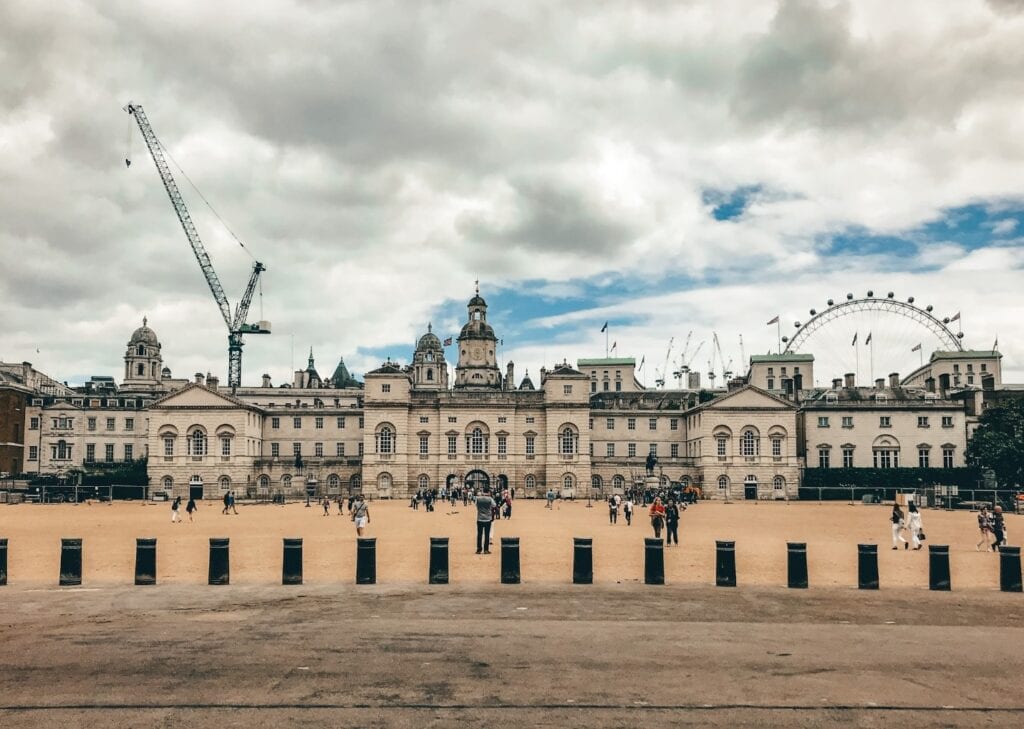
The next stop on your Europe Itinerary will be London, England. After a quick flight from Iceland, London is a great hub to start your European tour.
To make the most of your two days in England, balance time between London and visiting the nearby town of Oxford.
Where to Stay in London
The Chesterfield Mayfair
Located within walking distance of Hyde park, The Chesterfield Mayfair is a great hotel option. This hotel models old-money luxury with wood paneling, elegant chandeliers, and wallpaper. Each room has a slightly different design that adds to the charm of the Chesterfield.
London Marriott Grosvenor Square
The London Marriot Grosvenor Square is an elegant, sleek, modern hotel located in the London City center. As a Marriott Bonvoy member, I seek out Marriott properties around the globe and this one stands out among them all.
The highlight of this hotel is the lush courtyard that is a nice escape from the city.
London Day 1: City Exploration
Your first day in London will be focused downtown. For transportation, take advantage of the advanced train station to easily get all around town.
Some great stops are listed below, pick and choose which sound the most interesting to you. Harrods : This expansive, high-end mall overshadows all other malls in the world. Therefore, you could spend hours wandering the different sections of Harrods and even get lost in there.
Choose 2-3 spaces that sound the most interesting then move on with the city tour.
Westminster Abbey : One of the most famous churches in London, Westminster Abbey is a great stop during your day in London.
For some, a simple walk-by will be sufficient while others may choose to purchase tickets to go inside.
Big Ben : Another iconic landmark, Big Ben is must-see. I recommend doing a walk-by and snapping pictures but forego entering to save time.
London Eye: This giant Ferris wheel provides stunning views of the city from above. The London Eye is a great midday stop to rest your legs while taking in the stunning views.
This London Eye ticket with fast track admission will allow you to skip the line and save time.
Tower of London: The Tower of London is one of my favorite sites on this list.
A ticket for entry will grant you access to both the crown jewels and the palace where you can see medieval torture chambers. Dedicate 1-2 hours of your day to this historic site.
You will only be able to see all the above sites of you move at super-human speed. Instead, select which ideas best suite your interests and enjoy the day at a leisurely pace.
London Day 2: Small Town Visit

For your second day in London, hop on the tube and get out of the city.
The nearby town of Oxford is charming and showcases beautiful architecture. This old, university town has many beautiful churches and lecture halls to visit.
Spend your day walking between the different buildings of the campus and reading the educational placards. Be sure to time your visit because some buildings close based on event or class schedules.
For a super easy day trip, take this full day tour that visits Windsor, Stonehenge, and Oxford. It includes roundtrip transportation, entrance to the sites and guided walking tours.
Amsterdam, Netherlands
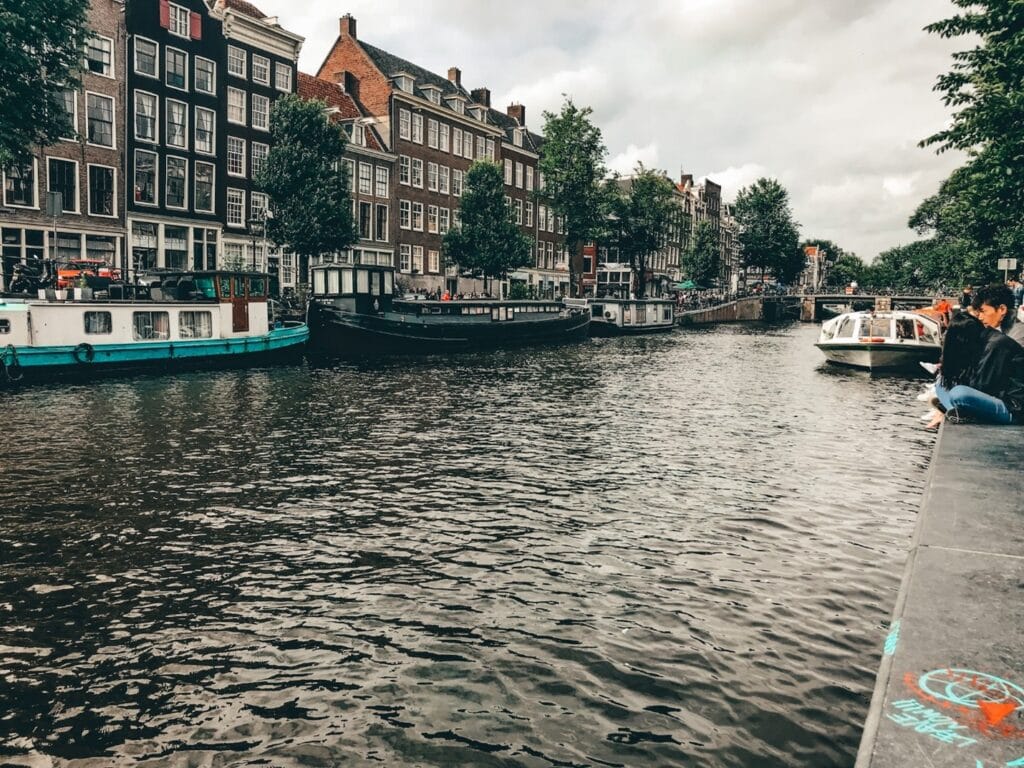
For the next leg, catch a quick 2 hour flight from London to Amsterdam. I will not pretend that one day in Amsterdam is enough time.
This wonderful city deserves at least three full days. However, due to the breadth of this Europe itinerary, we will focus on just the highlights of this city.
Where to Stay in Amsterdam
Park Plaza Victoria Amsterdam
From the outside, the Park Plaza looks like a palace. On the inside, it looks like a modern luxury hotel. This hotel is within walking or biking distance of all the major sites in Amsterdam.
Since it is located on a major canal, the views from the hotel are stunning.
Sheraton Amsterdam Airport Hotel
Since your time in Amsterdam is so short, staying in the Sheraton Amsterdam Airport Hotel may make the most sense logistically.
This hotel is clean, modern, and comfortable. Since it is attached to the airport, you will save a lot of time commuting back and forth.
Amsterdam Day 1: City Highlights
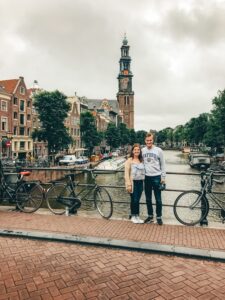
Wander the Canals : The canals are what make Amsterdam so unique and charming. Spend time wandering the canals by foot or bike to find the hidden gems of Amsterdam.
This World War II walking tour is great if you prefer to explore with a guide.
Canal Boat Tour : Another way to see the city is through a canal boat tour. There are many tour operators throughout the city, and you do not need to book ahead.
One option is an open-air booze cruis e which I would recommend for a sunny day.
The other option is a closed-top tour with a commentator. While the second option is less exciting, it is good in poor weather.
Anne Frank House : The Anne Frank house is an absolute must during your one day in Amsterdam. The museum and tour are incredibly well done.
This tour will be emotionally and mentally difficult but extremely important and educational. Be sure to book your tickets early; they can sell out months ahead of time.
Cheese Museum : For all my dairy-lovers, the Amsterdam cheese museum is fun and tasty. You can sample many variations of local cheeses then learn about the cheese making process.
See a two day itinerary for Amsterdam here .
Rome, Italy

Next up on this ultimate Europe trip itinerary is Rome. Rome is one of my favorite cities in the entire world and your three days here are guaranteed to be memorable.
In addition to the below activities, be sure to eat all the things. Indulge yourself with wine, pasta, pizza and gelato. Remember, vacation calories do not count.
Where to Stay in Rome
St Regis Rome
$700 per night
The St Regis Rome is above and beyond beautiful. Located in the coveted Piazza Navona, you cannot go wrong with this hotel. The rooms are large, elegant, and luxurious.
This hotel showcases. world-class service that St Regis is known for. in other words, you will have all of your needs taken care of.
Airbnb Near the Spanish Steps
$150 per night
On my past trip to Rome, I stayed in this gorgeous Airbnb apartment near the Spanish Steps. This place provides incredible value for your money.
The accommodation had the perfect location and great amenities. Since you will be spending a bit more time in Rome, it is great to have a fully functional home-base with a small kitchen.
Rome Day 1: Ancient Rome
The first day in Rome, you will be heading back in history. First, visit the Colosseum. The ticket line for the Colosseum gets extremely long so plan to book your tickets ahead.
If visiting in the summer, plan to visit early in the day before the sun gets too intense.
Next, walk a short distance to the Roman Forum. The entrance here will be included with your Colosseum ticket .
Wander the ancient rubble and learn from the informational signs posted throughout.
With any extra time, visit the outdoor market in the Trastevere neighborhood. There are many vendors selling local food, crafts, and alcohol.
Rome Day 2: Modern City

Day 2 in Rome will focus on the modern city center. If you are staying in one of the accommodations listed above, this will be the area directly surrounding your hotel.
Warning : These sights are all extremely busy so keep an eye out for pickpockets.
Trevi Fountain : Story says, if you toss a coin in the fountain, you will return to Rome someday. If you want to get a classic photo in front of the fountain, arrive at sunrise. Otherwise, you will be shoulder to shoulder with other tourists trying to toss their coin in as well.
Pantheon: A beautiful church in the center of modern Rome. Entrance is free and there is usually little to no line. Walk in, look up, and take in the architectural beauty of this site.
Piazza Navona : One of many vibrant squares in Rome, Pizza Navona is the most famous. This is a great place to relax on a park bench and watch the entertaining street performers. Visit the local artists showcasing their work all around the square and even think about buying a piece to bring home.
Spanish Steps : The Spanish Steps are in the area of Rome with the high-end designer shopping. Walk through the stores and admire the beautiful shoes, purses, and fashion.
If you are looking to splurge, treat yourself to buying something. I bought my first Gucci purse at the Spanish Steps location and it is a fond memory to this day.
Warning : This area is notorious for a tourist scam where a vendor will “gift” women with a rose then harass them to pay for it. To avoid this, do not accept any “gifts” and keep walking.
Rome Day 3: Vatican City
Enter a completely new country tucked into the center of Rome. The Vatican and Sistine Chapel are another opportunity to buy tickets ahead of time and save time.
Meander through the museums, take in the beautiful artwork and if you are lucky, spot the pope.
On our most recent trip to Rome, we noticed extra security when entering St. Peters Square. Oblivious, we continued walking around then heard voices booming from speakers.
In front of us, was the Pope giving a speech on a stage. This is one of the best travel memories I have to date.
Complete Rome travel guide here .
Venice, Italy
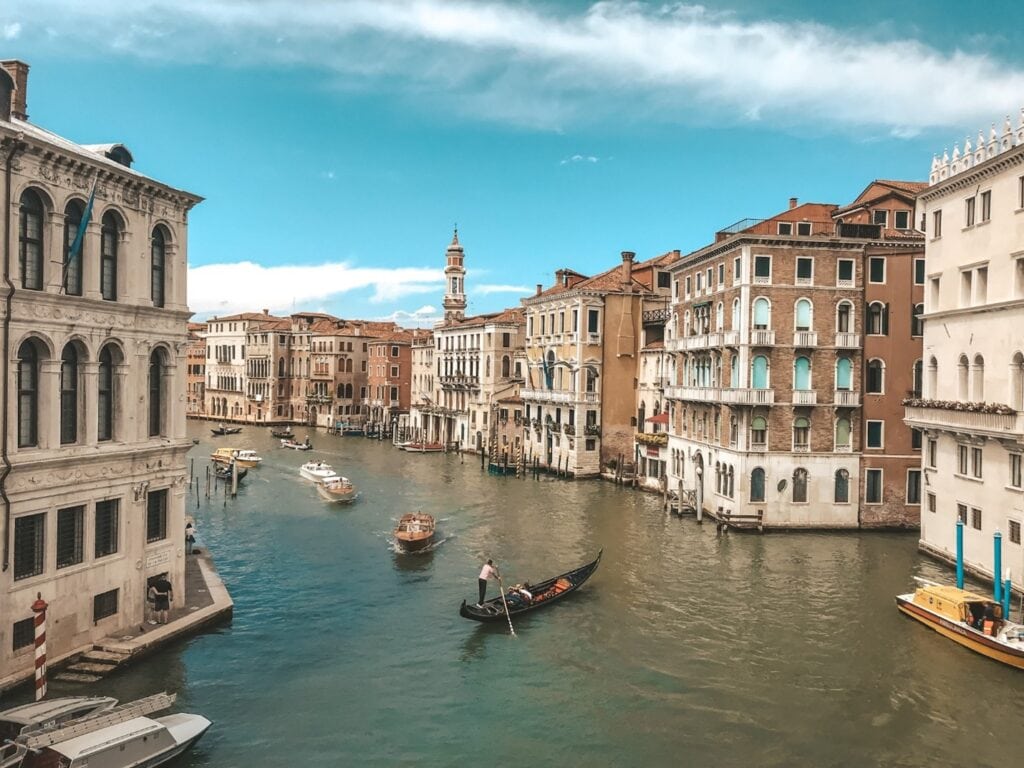
Unpopular opinion, but I think Venice is a bit overrated. While I think everyone needs to visit, 24 hours in Venice is plenty.
This gives you the perfect amount of time to enjoy the canals and visit the major sites without wasting unnecessary money on the expensive accommodations and food.
Where to Stay in Venice
Baglioni Hotel Luna
This hotel is absolutely gorgeous. Baglioni Hotel Luna is in the famous St Marks Square and is well worth the high price tag. The rooms are large, elegant and overlook the canals.
The rooftop lounge is to-die for and will make your 24 hours in Venice unforgettable.
Bauer Palazzo
Another great place to stay in Venice is the Bauer Palazzo . Also, nearby St Marks Square, the located of this hotel will optimize your travel time to all of the major sites during your 24 hours in Venice.
The rooms and hotel facilities are decorated in a traditional style that will make you feel like royalty.
Venice Day 1: City Highlights
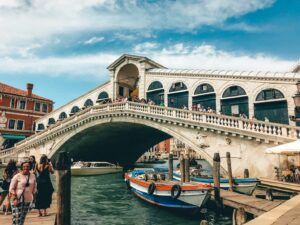
St Marks Square: The center of action in Venice, St Mark’s Square is a great starting point for your day. Admire the landmark clock tower, visit local shops, and visit Saint Mark’s Basilica.
To avoid lines, purchase your basilica tickets ahead of time and arrive early.
Gondola Ride: When people think of Venice, their first though is likely the romantic gondolas that float the canals. This is a must when you visit.
If you wait to book a gondola until you arrive, it will cost around $80. You can book ahead here for $30.
Get Lost in the Canals : Some of my favorite memories of Venice have been getting lost in the canals. Away from the tourist centers, you will wander upon small squares where locals are drying laundry and kids are playing.
These areas showcase the true culture of Venice which in my opinion, overshadows the tourist attractions.
One Week European Cruise
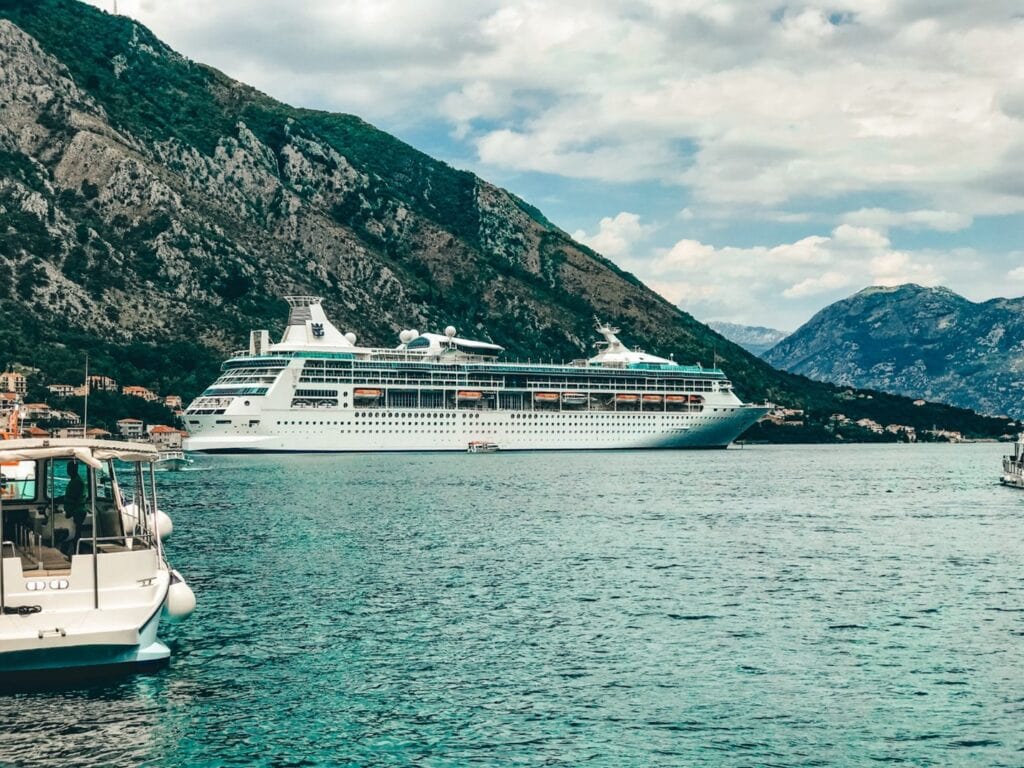
From Venice, your next stop during your 3 weeks in Europe will be a European cruise. After a fast-paced trip with many stops, full travel days and constantly changing hotels, a cruise is the perfect way to relax while still seeing more destinations.
Benefits of Cruising
One Home-Base – A huge benefit of cruising is the ability to unpack and get comfortable in your cabin. You can also get comfortable with the layout of the cruise, the staff and the food options which can be comforting after a couple weeks of jumping around.
See Many Places – It would take at least double the time to see all these ports by land and air travel. Cruising allows you to optimize your time by traveling while you sleep and exploring during the day.
Meet New People- While these cruises hold thousands of passengers, you will find yourself running into the same people time and time again. This is a great way to meet people and make friends from all over the world.
Sample European Cruise Itineraries

There are many different European cruise itineraries leaving from many different ports. For the purposes of this European itinerary, I suggest finding one that embarks from Venice.
I highly recommend Royal Caribbean International , as it is our all-time favorite cruise line. Below, find two sample itineraries that are currently being offered.
European Cruise Itinerary #1: 7 Night Greek Isles Cruise
Venice, Italy — Kotor, Montenegro — Corfu, Greece — Athens, Greece — Mykonos, Greece — Argostoll, Greece — Cruising Day — Venice, Italy
European Cruise Itinerary #2: 7 Night Italy & Adriatic Cruise
Venice, Italy — Cruising — Olympia, Greece — Valletta, Malta — Cruising — Ibiza, Spain — Palma de Mallorca, Spain — Barcelona, Spain
European Cruise Port Guides
The below guides are samples of what you can do in some of the European cruise destinations.
Kotor, Montenegro Port Guide
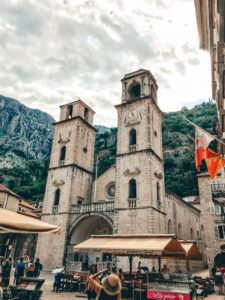
Kotor, Montenegro is a lesser-known town in the Adriatic. Tucked at the base of mountains, this port town has great old-world charm.
Hike to the Castle of Saint Johns . This hike is tucked into the back of old town and consists of approximately 800 steps. At the end, you will be rewarded with panoramic views of the town and port.
Wander the old town of Kotor . Kotor has old-world charm with large walls, fortresses, and community squares. Wandering the streets will allow you to get a sense of the beauty of culture of this town.
Meet the local kittens . Kotor is known for having many stray kittens. These playful creatures are cared for by local businesses and are adorable.
If you prefer to explore with a guide, this private walking tour with food and wine tasting is the perfect way to see the city and learn about its history.
Dubrovnik Croatia Port Guide
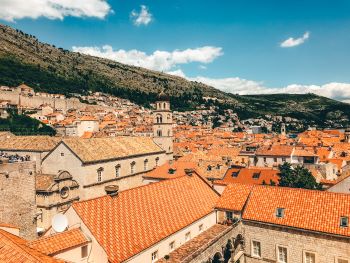
Dubrovnik is an absolutely stunning city that has many things for visitors to do. It’s one of my favorite cities in the world, and a great cruise port.
Here are some of the top things to do in Dubrovnik: 1. Explore The Old Town: Dubrovnik’s beautiful old town is a must-see. Its winding, cobbled streets and ancient architecture make it one of the top tourist attractions in Croatia. Spend some time here wandering around and taking in the sights! 2. Go Island Hopping: Take a boat tour and visit some of the nearby islands, such as Lokrum or Mljet. On these islands you’ll find some gorgeous beaches, caves to explore, and plenty of opportunities to relax. 3. Visit Fort Lovrijenac: This fortress was built during the 11th century and offers incredible views over Dubrovnik’s old town as well as the Adriatic Sea beyond. Climb up to the top for a great photo opportunity!
Olympia, Greece Port Guide

Olympia, Greece, or the Port of Katakolon is the site of the original Olympic games. The main activity here is visiting the Olympic grounds.
Book a tour of the Olympic stadium through your cruise line or a local company. I highly recommend this private guided tour . You will be transported to and from the port, tour the entire stadium and learn about the local history.
Santorini, Greece Port Guide

Santorini is my favorite island in Greece due to the stunning beauty and carefree culture. To get to the town of Oia from the cruise port, be sure to book a boat or bus transfer.
Wander the town of Oia and shop local vendors. The white buildings and cobblestone pathways of Oia are world famous. The entire town is clean, luxurious, and very safe. Wander the hilly streets while stopping at local shops.
If you are there late enough, be sure to catch the sunset . Santorini is world-famous for having the best sunsets. The sky will glow with shades of orange which is a stark contrast to the whites and blues of the town.
Read more about one day in Santorini.
Barcelona, Spain Port Guide
Barcelona is one of the most visited cities in Spain, for good reason. It is a great place to sample the food and culture of this country.
Go to La Sagrada Familia and tour the inside. La Sagrada Familia is a modern church that was designed by Antoni Gaudi. This building is unique for two reasons: the non-traditional architecture and the extended build time (it is still under construction today). This ticket allows you to skip the line and includes a guided tour.
Visit the beaches for relaxing time in the sun. As a beautiful, coastal city, Barcelona has stunning beaches that attract both tourists and locals.
The Best Time to Visit Europe
Europe is a year-round destination. In the summer, focus your itinerary on coastal destinations where you can enjoy the water. In the winter, focus your itinerary on mountain destinations where you can enjoy the snow.
This Europe itinerary focuses on some coastal destinations that are more popular in the spring and summer but will be enjoyable in any season. To adjust this itinerary for the winter, perhaps add a few more destinations in France or Switzerland that known for snow, mountains, or Christmas markets.
Other Great Cities to Visit in Europe
Zermatt, switzerland.
Zermatt Switzerland is one of my favorite towns in Europe. If you are planning a trip for the winter, be sure to include Zermatt on your itinerary. In Zermatt, you can ski beside the Matterhorn, eat authentic cheese fondue, and play in the snow.
Check out my complete guide to Zermatt for more information.
Lake Como, Italy
Lake Como, Italy is not only one of the most beautiful places on Earth, but it’s also one of the most romantic getaways.
Located in the foothills of the Alps, Lake Como has a stunning natural landscape and is home to some of Italy’s finest villas. With its dramatic views, world-renowned cuisine and luxury accommodation options, this Italian paradise is perfect for couples looking for a romantic escape. If you are taking a cruise to or from Italy, Lake Como is a great addition.
Florence, Italy
Florence is my favorite city in Italy . I even like it more than Rome! If you have an extra two days, Florence can easily be added to the end of this itinerary by taking a train from Venice.
In Florence, enjoy the local food and shopping and soak in the last bit of European magic before heading home.
Summary of this Three Week Europe Trip Itinerary

Between the travel days and touring days, this itinerary will be approximately a full 3 weeks in Europe. I find this the perfect amount of time to see many places without getting burned out on full-time travel.
As mentioned above, this Europe trip itinerary is only a sample of how you can spend 3 weeks in Europe. Be sure to adjust based on your interests, budget, or logistics.
Related Posts:
- Balkans Road Trip 10 Day Itinerary & Travel Guide
Best European Countries to Visit in November: 28 Trip Ideas
- Travel Guide & Itinerary For One Day In Dubrovnik Croatia
- One Day In Santorini – The Top Things To Do And See
- The Top Things To Do In Iceland In 2 Days – Guide To 48 Hours In Reykjavik
- One Day In Venice Italy – Quick Travel Guide & Itinerary
- Epic 4 Day Rome Itinerary And Travel Guide
- Two Days In Amsterdam – Quick Travel Guide & Itinerary
Pin for Later:
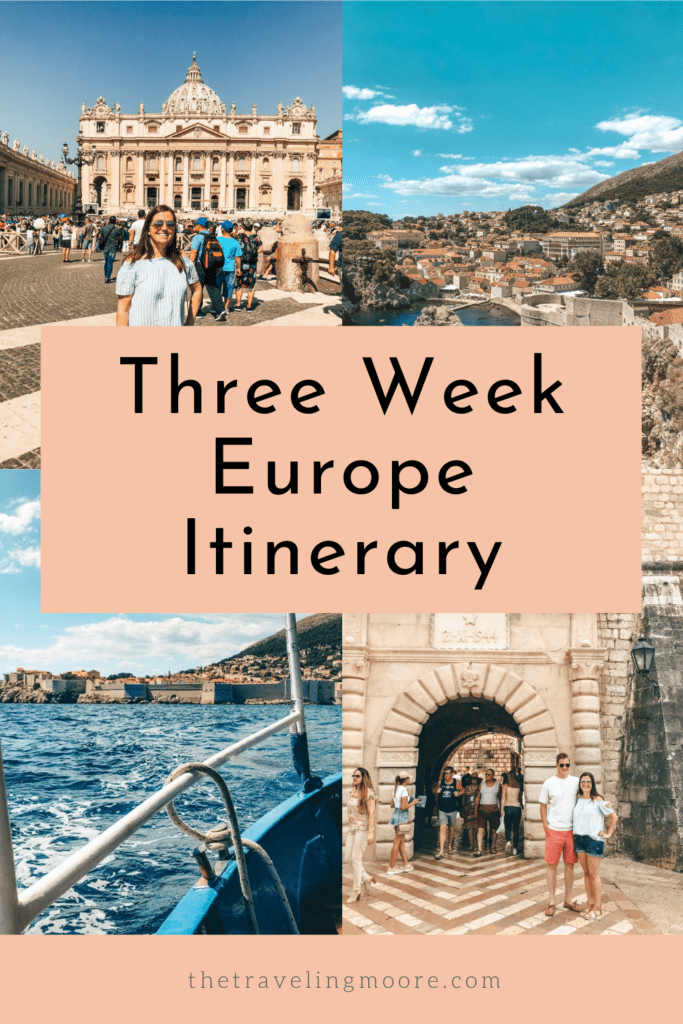
- 12 Best Restaurants in Maui: The Top Restaurants in West Maui
- Men’s Disney Outfit Ideas for Every Park at Disney World
- Complete Guide to a South Lake Tahoe Winter Vacation (2024)
- Quick Guide to a Weekend in San Diego: What to Do & See
Lauren is the creator of The Traveling Moore blog. She's travel obsessed, having been to nearly 50 countries and all 7 continents. She has a full time corporate job, and loves showing others that it's still possible to travel the world with limited PTO hours. Lauren is also travel hacking obsessed, finding every way to travel more often and more luxuriously.
Similar Posts
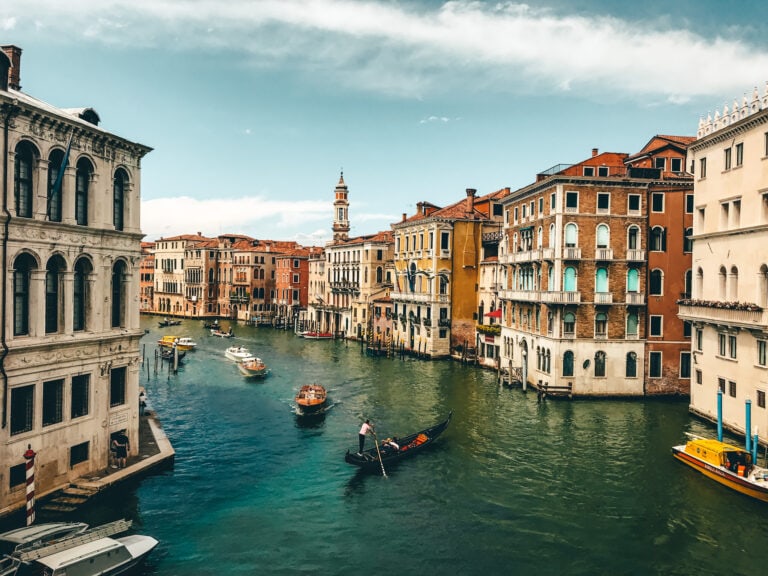
One Day in Venice Italy:Quick Travel Guide & Itinerary
Share via: Facebook Twitter LinkedIn Copy Link More I have a bit of a controversial opinion- I think Venice…
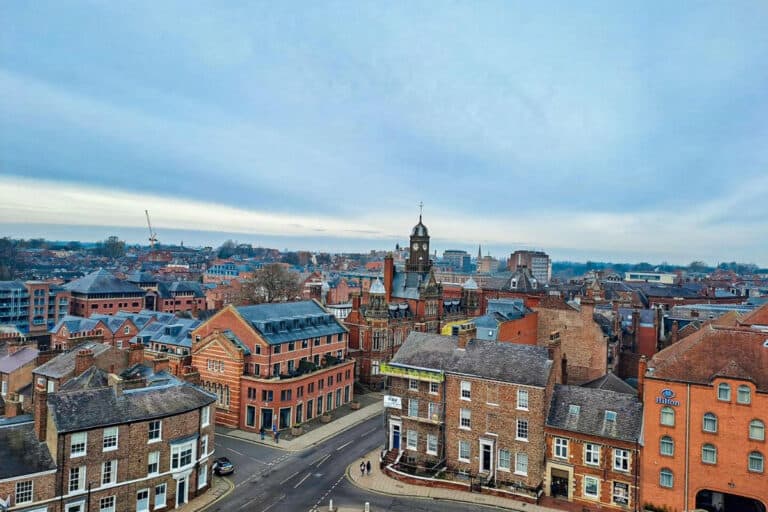
Share via: Facebook Twitter LinkedIn Copy Link More November is one of the most underrated times to visit Europe….
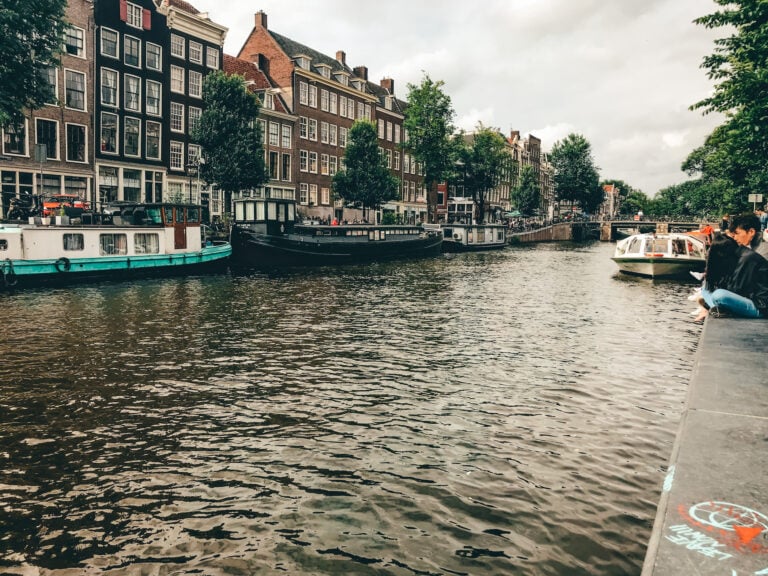
Two Days in Amsterdam: Quick Travel Guide & Itinerary
Share via: Facebook Twitter LinkedIn Copy Link More As part of my three-week Europe trip a few years ago,…
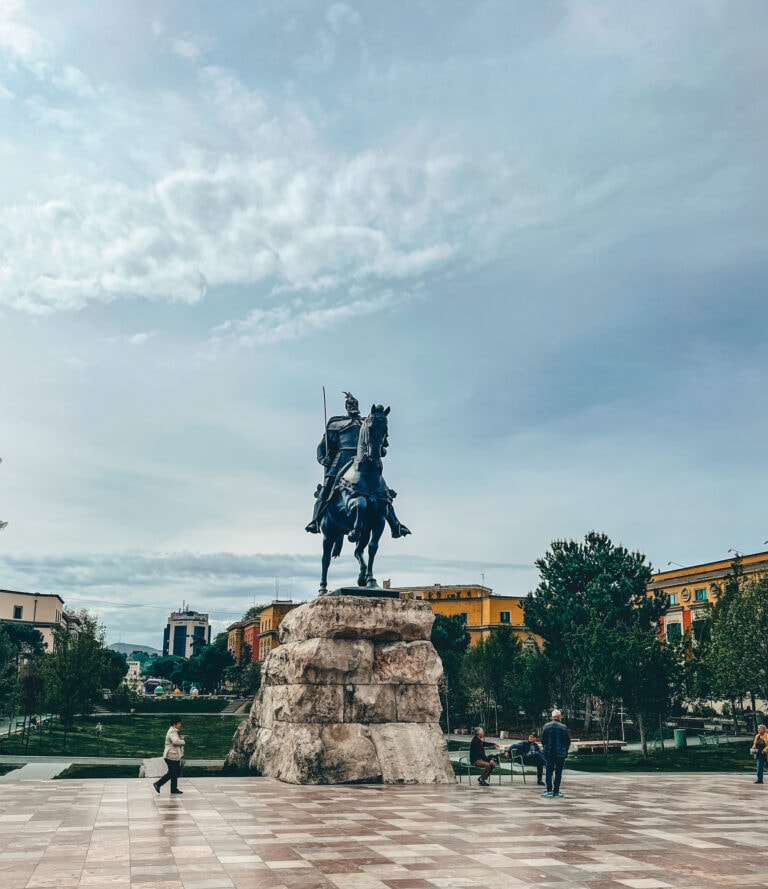
The 11 Best Things to do in Tirana Albania in Two Days
Share via: Facebook Twitter LinkedIn Copy Link More Follow this guide to the best things to do in Tirana…
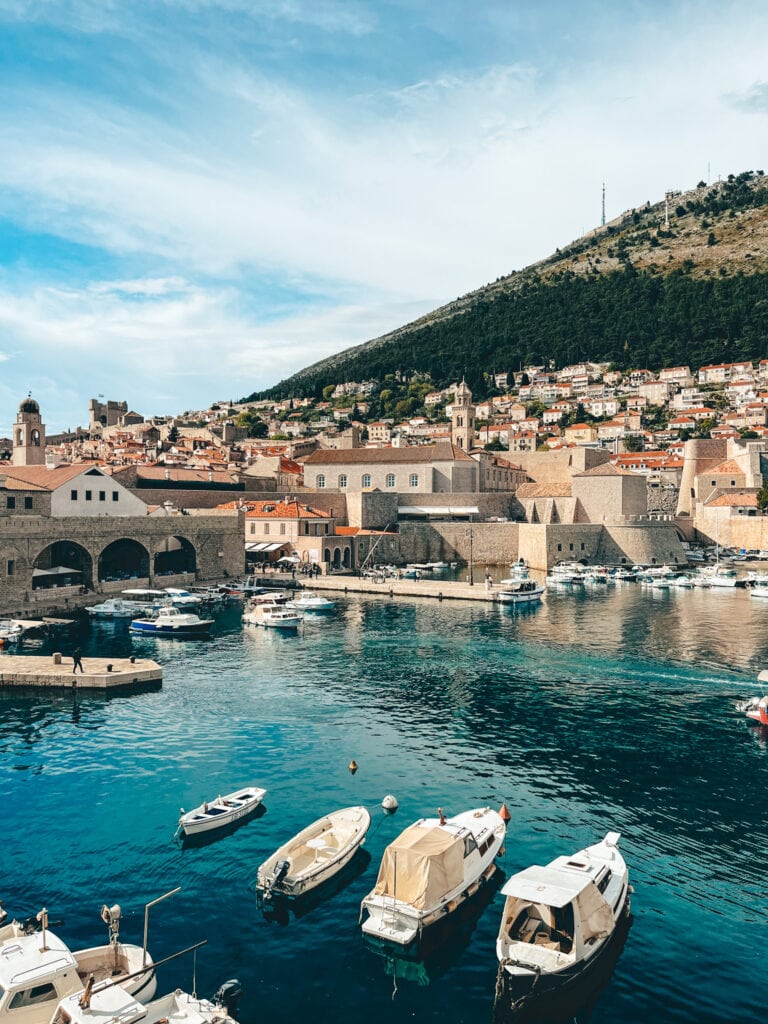
Balkans Road Trip 10 Day Itinerary & Ultimate Travel Guide
Share via: Facebook Twitter LinkedIn Copy Link More Planning a European vacation and wondering where to go? This Balkans…

Travel Guide to a Zermatt Ski Vacation & 4-Day Itinerary
From skiing in the swiss alps to devouring fondue. A complete guide to getting there, what to do, what to eat and most importantly- how to hit the slopes.

Unforgettable Europe in 3 Weeks: Your Essential Guide to Must-see Cities and Hidden Gems
If you’re planning your Europe itinerary for 3 weeks, here’s the ultimate Europe itinerary that will leave you with unforgettable memories.
Share this:
- Click to share on Facebook (Opens in new window)
- Click to share on LinkedIn (Opens in new window)
- Click to share on Twitter (Opens in new window)
- Click to share on Tumblr (Opens in new window)
- Click to share on Pinterest (Opens in new window)
Trying to create the ultimate Europe itinerary for 3 weeks is a tough job, something for the experts. Better yet, for someone who has been to all those places and can advise you on where to go and what to see.
So hello there, I’m Julia, and I have been to all these places in Europe (and much more) I am one of the few travel experts around that will be able to guide you while planning an unforgettable experience that will last forever in your memories. This is not an exaggeration.
If you’re planning your first trip to Europe and have about three weeks to spend on holiday, you want to create for yourself the best possible Europe itinerary. As a Europe travel expert and as someone who has seen most of these places, I’m about to spill the beans and tell you some things not a lot of travel agencies and famous bloggers want you to know about your first trip to Europe.
What do you want to see during your Europe itinerary?
This is not my first blog about how to plan a trip to Europe or my first European itinerary. In fact, I drove in most European countries and did most of the continent by car multiple times. By the way, if you need to rent a car in Europe , always check the reviews.
And the one conclusion I’ve come to time and time again is that Europe is a big place, and it has so much to offer that you should know what you’re looking for before you start looking for it.
What I’m trying to say is that Europe has something for all of us, but we all want and like different things, so there will not be one true Europe itinerary that will fit all kinds of travellers.
That’s why I highly encourage travellers to decide on what they want, and it doesn’t have to be a place or type of place. It could be a vibe or a feeling, the weather, culture, history, or anything that feels important to you.
Fortunately, You can get almost anywhere in Europe in a matter of hours, so creating a European itinerary that includes a bunch of cities from different countries will not be that extreme.
We all travel differently
But before you attempt to create that Europe itinerary for your three weeks holiday in Europe, try to decide on some of the following topics:
- What do you want to see? Cities, towns, villages, landscapes, nature, rivers, mountains, sea, the ocean, etc.
- Do you have any specific weather you prefer? Hot, cold, spring temperatures, cloudy weather, etc.
- What are your preferred activities? City sightseeing, hiking, water sports, extreme sports, etc.
- Are you looking for a certain vibe, something that inspires you or what kind of place brings you joy?
I’ve said many times before that travel destinations are about the way they make us feel, and therefore, there isn’t a one size fits all type of touristic destination or a favourite place we all share. And that’s a good thing.
For instance, I dislike crowded cities and tourist places, and I prefer to stay away from them. As much as I would like to see a certain spot, if it’s too crowded, I know for a fact that it will ruin it for me. And at the end of the day, the only thing that matters is that I enjoy myself and recharge my soul with positive vibes.
So please take a few moments to try to visualize and feel what you would expect to see, and then you will be better at creating a Europe itinerary that suits your personality and travel style.
But that doesn’t matter I wouldn’t give you a base to start planning your itinerary. You can take it as it is, as this is my personal recommendation for a 3 weeks Europe itinerary, but feel free to adjust it to better suit you.
Because the ultimate goal of travelling is to find places and hidden spots that spark our souls, and we all spark differently.

Tips for travelling to Europe
Before you go, check out these insider tips that’ll have you exploring like a savvy local during your Europe 3 weeks itinerary. Buckle up, ’cause here we go!
- Early bird saves your budget: Book your hotels in advance! Scoring a sweet deal on accommodations in Europe is a piece of cake if you’re on the ball. Don’t sleep on it, or you’ll be stuck shelling out the big bucks.
- Bunk like a boss: Hostels are the best choice for budget-conscious wanderers. You’ll save a pretty penny, and hey, you might even make some fab new friends along the way. Check out Generator Hostels (they’re in multiple European cities) or St. Christopher ‘s Inns for a bangin’ good time.
- Bus it, baby: Euro-trains might be all the rage (check out RailEurope for deals), but let’s be real: buses are where it’s at for the wallet-watchers. FlixBus and Omio have got your back, offering cheap tickets that’ll have you zipping across borders without breaking the bank. Check out other ways to travel cheaply in Europe .
- The world’s your oyster (card): Public transportation is a Euro-dream come true. Each major city has a city card that most often includes unlimited public transport and entrance to the most popular touristic attractions. Grab a city card (like London’s Oyster or Amsterdam’s OV-chipkaart) to save some dosh on local transit, and ride the rails like a true Euro-pro.
- Chow down like a champ: Skip the tourist traps and hunt down local markets, street food vendors, and hole-in-the-wall joints for mouthwatering grub that won’t cost an arm and a leg. And for this, you’ll need to get away from the city centre or around popular attractions. Foodies, rejoice!
- Freebie Frenzy : Europeans love to make the most of their vacay time, and that includes taking advantage of the tons of free attractions. Scope out free walking tours, museums, and galleries to give your wallet a much-needed breather. Some cities have a day of the month when museums are free (Yes, that’s Paris!)
- Night owls unite: Europe’s nightlife is absolutely legendary, but it can get pricey. Pre-game with some cheap supermarket booze, and then hit up bars with killer happy hour deals to party the night away without draining your bank account. And in most places, drinking on the street is legal.
- Pack like a pro: Keep your luggage light and versatile. Research all the best apps you need for your first-time travel to Europe . And don’t forget a power adapter for those pesky Euro outlets! Check out here what to pack for your Eurotrip.
- Learn the lingo: Europeans appreciate a traveller who makes an effort with their language. Pick up a few key phrases, and you’ll be winning hearts and scoring local tips left and right.
- Carpe diem: Embrace spontaneity, and don’t be afraid to change plans on the fly for your 3 weeks Europe itinerary. You never know what hidden gems you might stumble upon when you let your Euro-adventure take the wheel.
3-week Europe itinerary
Day 1-4: arrival in london, united kingdom.
London is one of the most famous cities in the world, and it has a lot to offer. While it isn’t a personal favourite, I can’t say it should be overlooked because it has some of the most iconic places on Earth.

Also, London is a major Europe transport hub (check out flights here ), so you will most likely find plenty of flights from your country to London. After you arrive in Europe, you can book your flights using low-cost carriers such as Ryanair or EasyJet.
On the first day, settle in, adjust to the new time and take it easy.
Also, there’s plenty to see in London besides the popular streets, such as Buckingham Palace, the Tower of London, Tower Bridge, the British Museum, and Westminster Abbey. London is a huge city, so there will be more places to see and experience to try than you will have time and energy for. I recommend deciding on a couple of things and then simply going with the flow.
Some of the nice things to do in London include:
- Take a ride on the London Eye for panoramic city views
- Explore vibrant neighbourhoods: Camden, Notting Hill, and Shoreditch
- Attend a West End theatre show
- Day trip to Stonehenge and Bath
Day 5-7: Paris, France
If and only if this is your first time in Europe, then yes, go to Paris. You can simply travel from London to Paris via Eurostar train (get tickets on RailEurope ). It’s easy and convenient. But if you’ve been to Paris before, I would say to skip it and visit some European hidden gems instead.

There’s plenty to do in Paris on your first visit, and some of the most popular activities include:
- Visit famous attractions: Eiffel Tower, Louvre Museum, Notre-Dame Cathedral, and Arc de Triomphe.
- Enjoy a Seine River cruise
- Explore Montmartre, Marais, and Latin Quarter neighbourhoods
- Visit iconic museums: Musée d’Orsay and Centre Pompidou
- Taste authentic French cuisine at a local bistro (it will not be cheap)
- Day trip to Versailles Palace (it’s closed on Monday. Don’t ask me how I know.)
For many, Paris is the essence of Europe, but I disagree. It’s nice, but there’s much more out there. I am including Paris on this Europe itinerary for 3 weeks because I know there’s a big demand for this tourist destination, but I urge you to reconsider. Most of the time, Paris is overcrowded, expensive for most of us, and not very clean. Once you get out of Paris, you might find lovely places, but only if you have the time.
Disclaimer: As someone who has travelled extensively in Europe, Paris is simply not that great. Yes, it is home to the great Louvre Museum (and a few others) and the iconic Eiffel Tower. But unless you’re travelling to take photos for your Instagram or to make your friends jealous, then there are other places that you must visit in Europe before you take a second trip to Paris. I am afraid the internet might cancel me if I say I dislike Paris, so I won’t say it.
Day 8-10: Amsterdam, Netherlands
You can travel from Paris to Amsterdam via RailEurope . After all, the best way to experience Europe is by train, especially if you can afford it. If not, we’ll always have Ryanair, which basically flies everywhere in Europe.

Once you get to Amsterdam, don’t miss out on a canal cruise and a visit to the major sites, Anne Frank House, Van Gogh Museum, and Rijksmuseum. To soak in the spirit of Amsterdam, check out the Jordaan neighbourhood, Vondelpark and canal district (that was my favourite thing to do). Amsterdam has a huge culture around biking, so if you can ride a bike, rent one to explore the city. If you want to see more, spend a day trip to discover traditional Dutch villages. I recommend checking out Zaanse Schans, Volendam, and Marken.
Obviously, Amsterdam is famous for its nightlife, which you can experience in Leidseplein or Rembrandtplein.
Day 11-13: Berlin, Germany
You can easily get from Amsterdam to Berlin via RailEurope . Prepare to explore the most multicultural city of the entire continent.

Berlin is unlike anything else you’ve seen or will see again anywhere in Europe. I fell in love with it the first time I travelled to Berlin.
And I have loved it ever since. Berlin is the kind of place you travel to because you want to feel the creative vibe and the freedom that comes with it. It’s about music, clubbing, flea markets, and an alternative lifestyle.
No matter how many blogs I write about Berlin (and I have quite a few guides), I can never fully translate how this city makes me feel. It’s hectic, new, and yet familiar.
Ok, so once you get into this alternative vibe, you need to see the historical sites in Berlin , such as the Brandenburg Gate, Reichstag Building, the Berlin Wall, the Holocaust Memorial and Checkpoint Charlie. Get a bike (I like Donkey app) or a day ticket for public transport.
Then make sure to see a few of its different neighbourhoods. Explore the vibrant neighbourhoods of Kreuzberg, Friedrichshain, and Prenzlauer Berg. If you’re into museums, you’ll probably need a day to discover all the museums on Museum Island. Check out my blogs on Berlin’s culture and life in Berlin after the wall fell.
And if you have more energy, then Berlin’s nightlife and club scene will keep you up all night. You simply can get bored in Berlin. I would suggest a day trip to Postdam, but I’m not sure you can do all this in just 3 days in Berlin.
Day 14-16: Prague, Czech Republic
Travel from Berlin to Prague via RailEurope or bus. Prague is only a couple of hours away, so this day will not be completely wasted.

On the same day, you’ll have time to explore the Old Town and Charles Bridge. You can end the day at a traditional restaurant where you can taste Czech cuisine.
On the second day in Prague, head over to Prague Castle. Get the ticket that includes the four attractions (you’ll see there’re a bunch of places within the castle that require additional tickets, but that will be enough). However, for the best view, do visit the Lobkowicz Palace, which has a balcony that overlooks the entire city. My personal favourite place in the city.
Prague is one of my favourite cities in Europe , and I’ve been there so many times, I lost count. Some of the things you should not miss in Prague are:
- evening cruise on the Vltava River (get Prague Boat tickets online here )
- Go up in the Astronomical Tower
- Visit the Jewish Quarter and Lennon Wall
- Day trip to Kutná Hora or Český Krumlov
Day 17: Milan, Italy
Get a Ryanair and arrive in Italy. No trip to Europe is complete without a trip to Italy. There’s no place on Earth like Italy. And you will finally understand people’s fascination for Italy.

Ah, Milan! This Italian fashion capital is a must-see for any Euro-tripper. Start by visiting the jaw-dropping Milan Cathedral (Duomo di Milano), a true Gothic masterpiece.
Then, stroll through the posh Galleria Vittorio Emanuele II for a taste of luxury shopping or a cheeky espresso. Catch a glimpse of da Vinci’s iconic Last Supper at the Santa Maria delle Grazie, and don’t miss out on the contemporary art scene at the Fondazione Prada.
Lastly, get your fill of culture at La Scala Opera House or catch a football match at the iconic San Siro Stadium. Milan’s got it all, from haute couture to historic gems!
Day 18-21: Rome, Italy
It can’t come as a surprise that all roads lead to Rome , right?

I know I said that I’m not the kind of person to like big and crowded places, but Rome is a special place. I believe this is the most beautiful city on Earth, and I hope to visit it again as many times as possible.
Rome is simply amazing, and you will not have enough time to see it all in only a couple of days, but you can try.
Of course, you should not miss historical sites such as the Colosseum, the Roman Forum, and Pantheon. And then you’ll need at least half of a day, but probably more, to explore the Vatican City, where you’ll find the famous St. Peter’s Basilica and Vatican Museum.
Of course, you shouldn’t miss the Trevi Fountain or the Spanish Steps.
And eat as much pasta, pizza and gelato as you possibly can.
Day 22: Departure from Rome
Unfortunately, this is it for the Europe itinerary for 3 weeks. Check out of accommodation and head for the airport.
By now, you should have tons of memories from all these European experiences. But now you also know that Europe has so much more to offer. This 3-week Europe itinerary is barely scratching the surface of European culture.
What else can you add to your Europe itinerary?
If you decide to spend more time in Europe, here’s what I recommend:
- Napoli, Italy (best pizza ever)
- Greek cities (Thessaloniki or Athens ) and, of course, the Greek islands (Santorini, Paxos, Zakynthos, Milos or Crete, just to name a few)
- The underrated part of Europe – Eastern Europe . Think about making a road trip to Bulgaria , Bucharest and a mountain hiking trip to Romania and, of course, Budapest, one of the most beautiful cities in Europe.
- Once things get settled, I do encourage you to visit Ukraine – I loved Odesa , Kyiv and Lviv .
- Poland is a huge country, but you shouldn’t miss Krakow, which is simply stunning.
- The Baltic countries are worth their own road trip, or probably around two weeks. If you don’t have that much time, try at least to see Riga, the capital of Latvia , because you’ll be blown away.
- Scandinavia is a trip on its own. These countries are all huge, but you can easily see Helsinki on a day trip from Tallinn , and then the Stockholm archipelago is within reach by ferry. And since you’ve made it this far, the fjords in Norway aren’t like anything you’ve seen before.
- Spain is always a good idea, Barcelona is on the pricier side, but Madrid, Valencia and Seville are some of my favourites city on the peninsula. If you make it more south, Check out Gibraltar, as this is the only place on the continent to see wild monkeys.
- And the southern region of Portugal is only hours away by car from Spain. Check out Algarve ; it’s probably the best place in Europe to see cliffs by the Ocean.
This Europe itinerary for 3 weeks can be customized according to personal preferences and interests. It is advisable to book accommodations, RailEurope train tickets, and popular attraction tickets in advance.
Iulia Vasile
Iulia is a travel expert, blogger, engineer, freelance copywriter, and a curiosity-driven personality. She sees travel as the ultimate tool for self-improvement and personal growth, and that's the main topic of her blog, Juliasomething.com.
Related posts

Visit The Louvre Museum: Essential Tips for an Unforgettable Visit

Paris On A Budget: Musée d’Orsay And Musée du Louvre

Jökulsárlón Glacier Lagoon: Everything You Need To Know
Tell me what you think cancel reply.

3 Weeks in Europe Itinerary
By Author Katie
Posted on Last updated: August 9, 2022
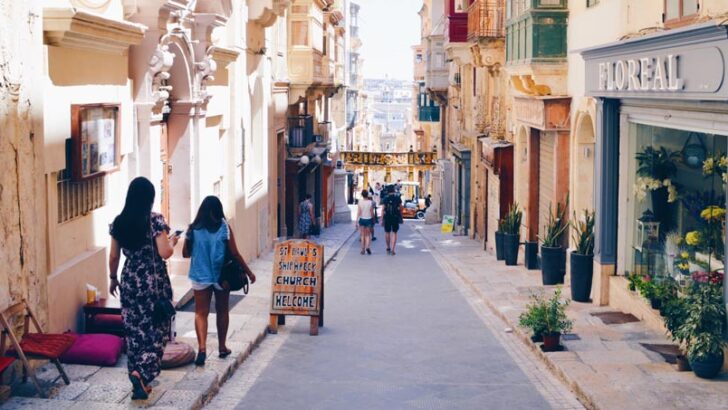
Want to explore Europe? We share this 3 week in Europe itinerary so you know where to go and how to plan the perfect trip.
It’s finally happening! You are all set to embark on your long-coming vacation to Europe and the UK. You have the budget, the fashion accessories to stop people on the tracks of European roads, your passport, and 3 weeks of free days ahead. But there is one problem. How do you choose which places to visit in only 3 weeks?
Europe is full of scenic cities to revel in and thrilling activities that must be ticked off the bucket list. But you can’t fit all this in a 3-week trip. Don’t get paralyzed by stress just yet, as here is your perfect travel solution — the 3-week Europe itineraries.
These itineraries are carefully selected to help you make the most of your “Euro-cation.” Whether you are the type to go backpacking through Central Europe or want all the peace of the beautiful Scandinavian countries, let’s get you through some of the paths that will take you on the best 3 weeks in Europe. Dig in!
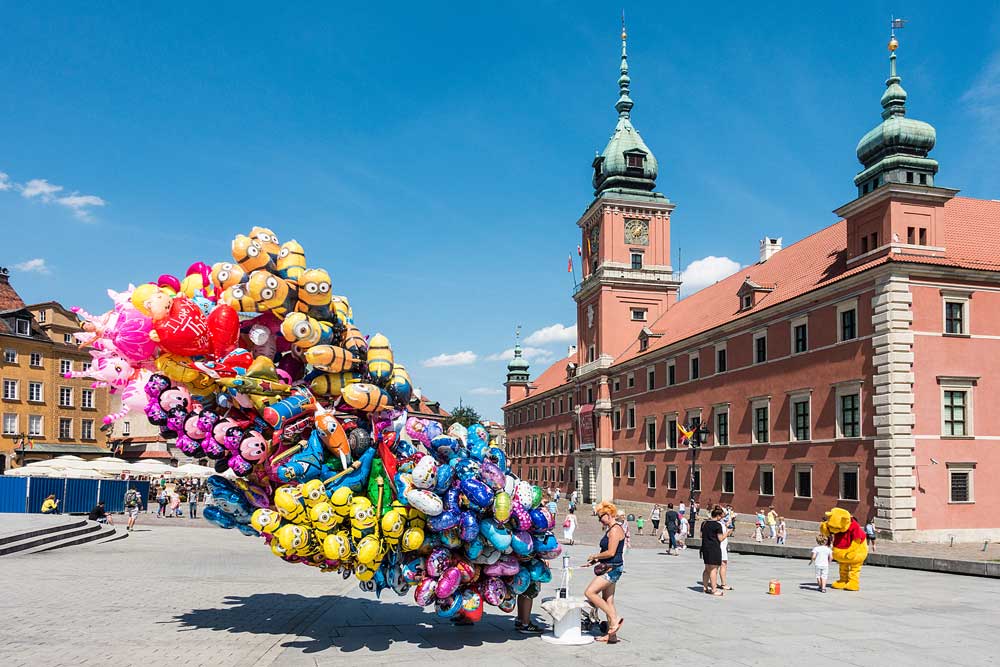
Tips for traveling to Europe
Before you get on to choosing your route, you must take note of the tips below, especially if you are a first-time traveler to Europe . They will make sure you get a smooth trip without wasting any time.
Keep 3-4 Nights for One City
This is a mistake most first-time visitors make. They either keep too many days or too few days for sightseeing in one city. You can count off the days you will arrive and leave, as most people won’t be able to see too much then.
The optimal number is 3-4 days for one city. Setting aside one day for leaving for another city, 2-3 days will give ample time to see all the top exciting places in a city. It is better to see the top spots of multiple cities than all the sights in just one city.

Eurail Pass
When you are traveling for three weeks, you don’t want to be stuck in a new city every few days figuring out their transport system. To prevent this, get a Eurail Pass before hopping on a flight to Europe. Eurail Pass is like a Europe-only ticket that will allow you to board any intercity train in Europe by simply showing the pass. You can order it before entering Europe if you are not a native European.
Claim Compensation for Delayed or Canceled Flights
When you are on the clock, delayed flights are a buzzkill. However, all is not lost if your flight was late. You are eligible for claiming compensation for delayed or canceled flights no matter what citizenship you have. Most people don’t know about their passenger rights, but these rights give you the benefit of getting up to $700 back if a flight is delayed, through no fault of your own, without spending a penny.
It doesn’t apply if you didn’t check in on time. The flight needs to reach the destination late by more than 3 hours for you to get a solid compensation. One of our friends had a flight delay on his way to Europe and he managed to claim TUI flight delay compensation via AirAdvisor. Know your flight delay rights as a passenger before you board one.
Take a Route through the Most Famous Cities
If you are very indecisive on the route but have a solid budget, this is the most spectacular itinerary. It will get you to see the best of Europe in 3 weeks. It is straightforward. It involves going through all the major cities of Europe. In this, you take a route through the following cities:
- Venice, Italy
- Vienna, Austria
- Budapest, Hungary
- Prague, Czech Republic
- Berlin, Germany
- Amsterdam, Netherlands
- Paris, France
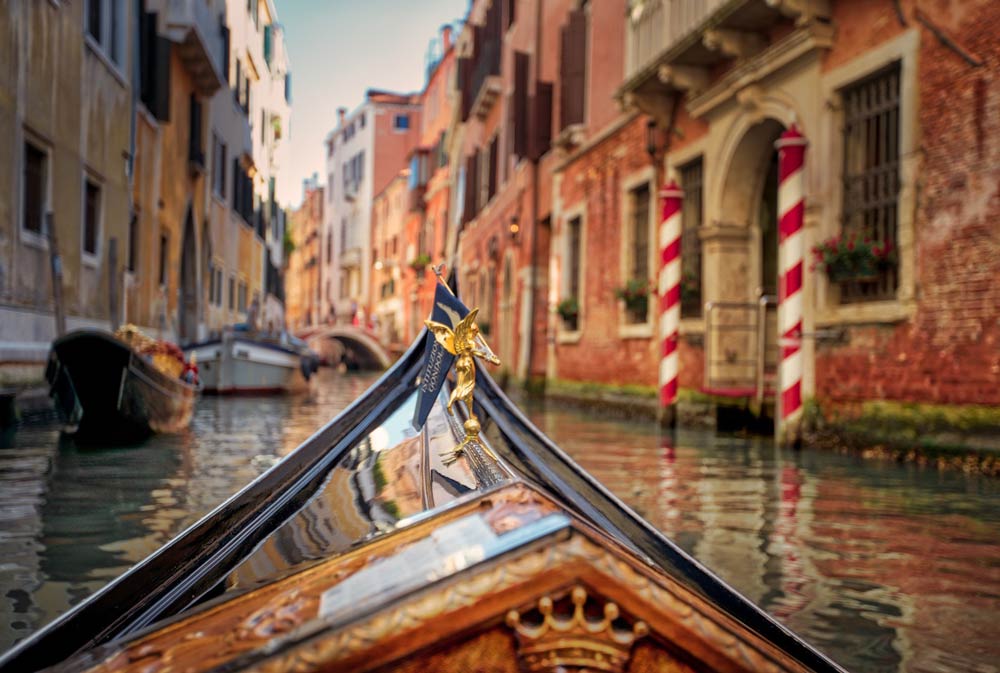
Venice is just 2.5 hours by train from Milan. You can take a 1-hour 10-minute flight from Venice to Vienna. From there, it will take 2 hours and 20 minutes by Railjet train to reach Budapest. An overnight train takes 8 hours to reach Prague.
There is a direct train to Berlin from Prague in 4.5 hours. The intercity Berlin train takes 6 hours and 20 minutes to reach Amsterdam. A Thalys train will take you to Paris in just 3.5 hours. And you are done. All the major cities in one 3-week trip!
Europe in 3 weeks – where to go?
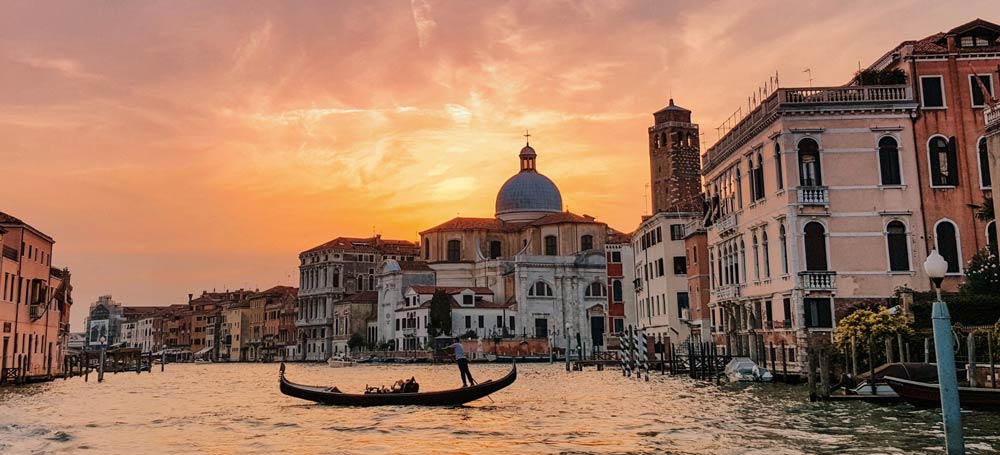
Venice – Italy
It’s one of the finest places in the world surrounded by boats, bridges, and canals; there are plenty of things to do in Venice, Italy . The city gives off vintage, romantic vibes. You can take a ferry to go over the Grand Canal or visit the Bridge of Sighs. The museums, bakeries, and synagogues of the historic Jewish District are a must-visit too. Also, check out the Rialto Bridge and squares of San Polo for markets.
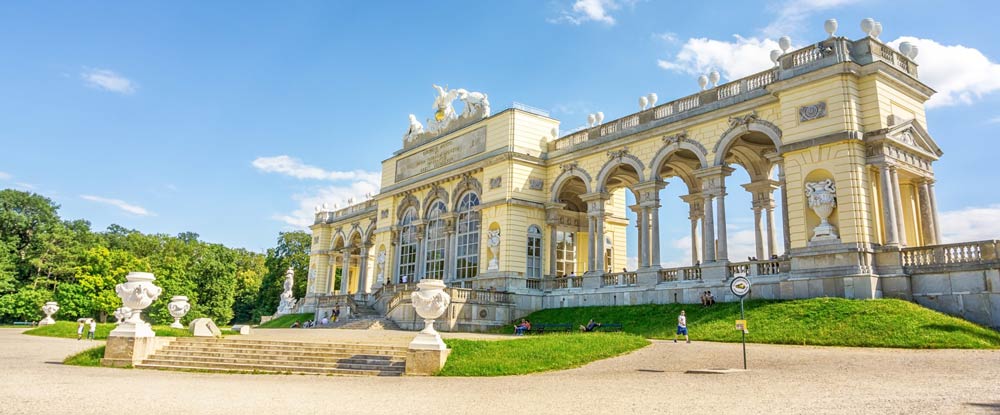
Vienna – Austria
This is a place to enjoy grand architecture from imperial palaces to classic gardens. MuseumsQuartier District is dedicated to a variety of art. Vienna Prater is the world’s oldest amusement park. The Schönbrunn Palace, with its wide gardens, sculptures, and amazing interiors, is a must-visit too.
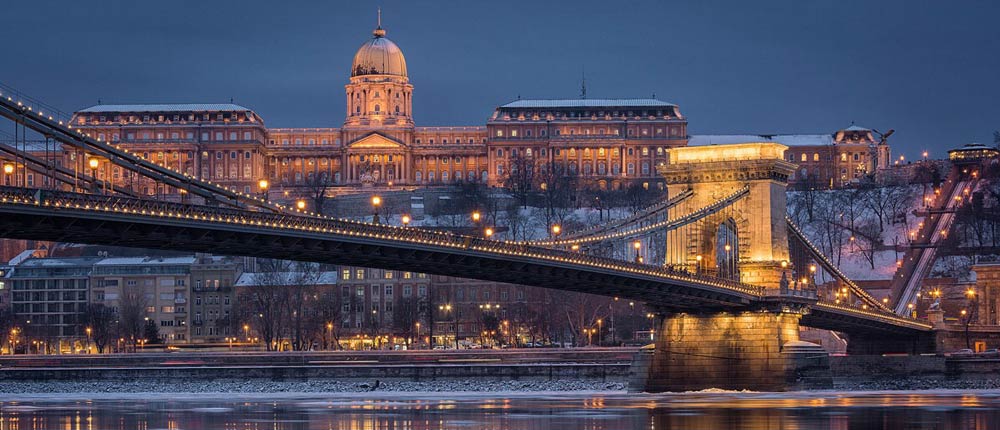
Budapest – Hungary
Some of the popular sites to visit include Buda Castle during the day and Chain Bridge during the night. Make sure you don’t miss taking some spa time at Gellért or Széchenyi thermal baths. Lake Balaton and adjacent areas are a great place to witness rural Hungarian life. Take a tram ride to see the scenic view along the Danube River.
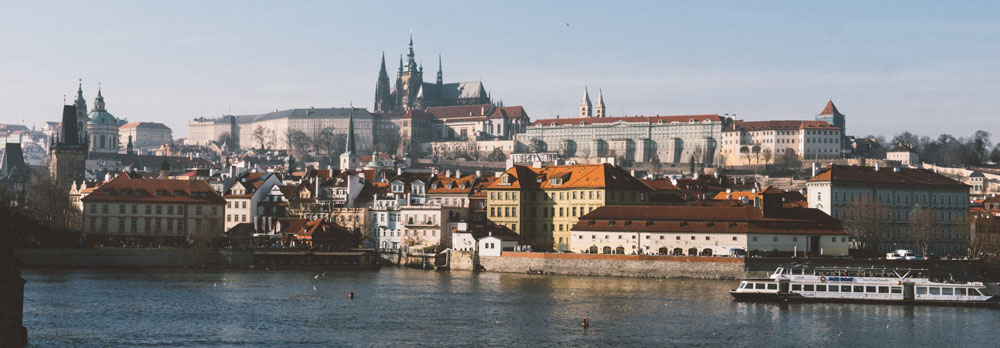
Prague – Czech Republic
Prague gives off medieval vibes. It is known for its colorful baroque buildings and distinctive architecture. Go witness the astronomical clock striking the hour and take a look at the Old Town Square as well. Stroll through the Gothic cathedrals. Vytopna Railway Restaurant is a great place to grab some beer.
Berlin – Germany
Berlin is a vibrant city with a full social life awaiting you. You must check out the East Side Wall in the capital of Germany if you are an ardent art fan. The East Side Wall is a part of the Berlin Wall. While you are there, check out the Berlin Wall Memorial too. Some other sites include Grunewald and Tempelhofer Feld.
Paris – France
The city of love and wine! The name that pops into mind when you hear of Paris is the Eiffel Tower, a place on almost everyone’s bucket list. For art lovers, you can’t miss the Louvre and Centre Pompidou. Make sure to get a taste of one of the amazing flans in the Montmartre neighborhood.
Amsterdam – Netherlands
The art scene here is striking, with narrow streets and many canals. You can take a canal cruise here or take a bike for a tour of the city. Van Gogh Museum and Galerie De Appel display some of the artists’ works in Amsterdam. For something brainy, go for a tour at the Rijksmuseum.
The ideal time would be to spend 3 days in each city, but if you are willing to let go of one of the cities, you can work off more nights in one of your favorite cities on the list. The important thing while traveling is not the area you covered, but how much you enjoyed it.
Have fun in Europe!
This site uses Akismet to reduce spam. Learn how your comment data is processed .
Expert Guide: 3 Weeks in Europe Where to Go - Unveiling Hidden Gems and Renowned Landmarks - Night Box
Friday 15th of December 2023
[…] Sources: 1. Three Week Traveller – Europe in 3 Weeks: 6 Itineraries 2. Creative Travel Guide – 3 Weeks in Europe Itinerary […]
Friday 22nd of April 2022
I'm spending two weeks in Europe for the first time this fall. So excited to go to Paris, Amsterdam, and Munich! I will definitely look into your tip on getting a Eurail Pass. Sounds like it's necessary for a first-timer. Thanks for the info!

3 Week European Road Trip Itinerary (11 Options)
- Post author: Roadtripbuzz
- Post published: December 22, 2022
- Post category: Uncategorized
Welcome to our blog about our epic three-week European road trip itinerary! We can’t wait to share all of the amazing sights, experiences, and memories we made along the way.
Over three weeks, we traveled through several beautiful countries, each with its unique culture and attractions. From Italy and France’s stunning coastlines to Switzerland and Austria’s breathtaking mountain ranges, we saw it all.
We stayed in various accommodations throughout our journey, from cozy bed and breakfasts to luxury hotels. We also tried a wide range of local cuisines and sampled some of the region’s best wines and beers.
We hope that by sharing our itinerary with you, we can inspire you to plan your own European road trip and create lasting memories of your own.
So join us as we take you on an adventure of a lifetime!
Table of Contents
Are 3 weeks enough to travel to Europe?
Three weeks is a good amount of time to travel Europe and see a variety of destinations, but it’s not enough time to visit every country on the continent.
It’s important to carefully plan your itinerary, prioritize the places you want to visit and consider the distances between destinations and the time it will take to travel between them.
If you want to visit multiple countries in Europe, you may want to consider focusing on a specific region or selecting a few key destinations that are relatively close together.
This will allow you to make the most of your time and see as much as possible without feeling rushed.
You could also consider taking longer trips to certain destinations or breaking your trip up into multiple shorter trips to different parts of Europe. This can give you the opportunity to see and experience more while still allowing you to take your time and really immerse yourself in each destination.
Overall, the best way to make the most of a three-week European trip is to plan carefully and be flexible. This will allow you to have a rewarding and memorable experience without feeling rushed or overwhelmed.
How many European countries can you see in 3 weeks?
It’s possible to visit several European countries in three weeks, but it will depend on the specific countries you want to visit and the distance between them.
If you want to visit multiple countries, you may want to focus on a specific region or select a few key destinations that are relatively close together.
For example: if you want to visit several countries in Western Europe, you could consider starting in Paris and making your way through the Netherlands, Belgium, Luxembourg, and Germany.
Alternatively, you could start in Rome and travel through Italy, Switzerland, Austria, and Germany.
If you want to visit Eastern Europe, you could consider starting in Prague and traveling through the Czech Republic, Slovakia, Hungary, and Austria.
Alternatively, you could start in Krakow and visit Poland, Slovakia, Hungary, and the Czech Republic.
It’s important to note that travel times between destinations can vary significantly, and you’ll need to factor in the time it takes to travel between countries when planning a Europe itinerary.
It’s also a good idea to consider the distances between cities and the time it will take to travel between them when selecting your destinations.
Which European country is best for a road trip?
There are many beautiful and interesting countries in Europe that are well-suited for a road trip.
Some popular destinations for road trips in Europe include:
France
France is a diverse country with a wide range of landscapes and tourist attractions, including stunning coastlines, picturesque countryside, and vibrant cities.
Highlights of a road trip in France might include exploring the charming villages of the Loire Valley, driving along the Mediterranean coast, and visiting the iconic city of Paris.
Italy is another popular destination for road trips, with its beautiful coastlines, historic cities, world-class museums, and rolling hills.
Highlights of a road trip in Italy might include visiting the iconic cities of Rome and Venice, exploring the stunning Amalfi Coast, eating a pizza in Napoli and driving through the beautiful Tuscany region, also known for its high-quality local wine.
Spain is a diverse country with a rich cultural heritage and a range of landscapes, from the Mediterranean coast to the Pyrenees mountains.
Highlights of a road trip in Spain might include visiting the vibrant cities of Barcelona and Madrid, exploring the stunning beaches of the Costa del Sol, and driving through the beautiful countryside of Andalusia.
Germany has a rich history and a range of landscapes, from the picturesque Bavarian Alps to the bustling cities of Berlin and Munich.
Highlights of a road trip in Germany might include exploring the charming towns and villages of the Black Forest, visiting the historic city of Dresden, and driving through the beautiful countryside of Bavaria.
What’s the best time to visit Europe?
The best time to visit Europe depends on various factors, including your personal preferences, the specific destinations you want to see, and the type of activities you want to do.
Here are a few things to consider when planning your trip:
Consider the weather
Europe experiences a wide range of weather, from the hot and dry summers of the Mediterranean to the cold and snowy winters of the Northern countries.
If you’re planning a trip to Europe, it’s essential to consider the weather and choose a time of year that is suitable for the activities you want to do.
In general, the climate in Europe is characterized by four seasons: spring, summer, fall (autumn), and winter. The specific months each season falls in can vary depending on the region.
Spring (March, April, May)
The weather in spring is generally mild and pleasant, with temperatures ranging from cool to warm, depending on the location.
In the southern regions of Europe, such as the Mediterranean and the Black Sea, the weather can be pretty warm during the spring months, with average temperatures in the mid-60s to mid-70s Fahrenheit (around 20-25°C).
In the northern regions of Europe, such as the Scandinavian countries and the Baltic states, the weather can be cooler during the spring months, with average temperatures in the 40s to 50s Fahrenheit (around 5-15°C).
Summer (June, July, August)
The weather in summer is generally warm to hot, with temperatures ranging from mild to hot, depending on the location.
In the southern regions of Europe, such as the Mediterranean and the Black Sea, the weather can be quite hot during the summer months, with average temperatures in the mid-70s to mid-80s Fahrenheit (around 25-30°C).
In the northern regions of Europe, such as the Scandinavian countries and the Baltic states, the weather can be mild to warm during the summer months, with average temperatures in the 60s to 70s Fahrenheit (around 20-25°C).
Fall (September, October, November)
The weather in fall is generally mild to cool, with temperatures ranging from warm to cool, depending on the location.
In the southern regions of Europe, such as the Mediterranean and the Black Sea, the weather can be quite mild during the fall months, with average temperatures in the 60s to 70s Fahrenheit (around 20-25°C).
In the northern regions of Europe, such as the Scandinavian countries and the Baltic states, the weather can be cool during the fall months, with average temperatures in the 40s to 50s Fahrenheit (around 5-15°C).
Winter (December, January, February)
The weather in winter is generally cold, with temperatures ranging from cool to cold, depending on the location.
In the southern regions of Europe, such as the Mediterranean and the Black Sea, the weather can be quite mild during the winter months, with average temperatures in the 50s to 60s Fahrenheit (around 10-20°C).
In the northern regions of Europe, such as the Scandinavian countries and the Baltic states, the weather can be very cold during the winter months, with average temperatures in the 20s to 30s Fahrenheit (-5 to -10°C).
It is important to note that the weather in Europe can vary widely from year to year, and it is always a good idea to check the forecast for the specific location and time of year that you will be visiting.
Crowd factor
Europe is a popular tourist destination, and the crowds can vary significantly depending on the time of year.
Generally, the summer months (June, July, and August) are the busiest and the most expensive, while the shoulder seasons (April, May, September, and October) are less crowded and often offer better deals.
Festivals and events
Europe is home to various festivals and events throughout the year, from music and sporting events to cultural festivals and holiday celebrations.
If you’re planning a trip to Europe, you might want to consider visiting during a specific festival or event that interests you.
The best time to visit Europe is a matter of personal preference.
Some people prefer to visit during the warm and sunny summer months, while others prefer to visit during the cooler and less crowded shoulder seasons.
Ultimately, the best time to visit Europe will depend on your specific interests and priorities.
How much should I budget for a 3-week Europe trip?
The cost of a three-week Europe trip can vary widely depending on several factors, including
- your travel style
- the specific destinations you visit
- the time of year you travel
- and the type of accommodation and transportation you choose.
Here are some general estimates of the costs incurred during a three-week Europe trip.
Airfare
The cost of airfare to Europe can vary depending on your departure city and the destinations you visit.
It is a good idea to book your flights well in advance and be flexible with your travel dates to get the best deals.
Accommodation
Depending on your travel style and the type of accommodation you choose, you can expect to spend anywhere from $50 to $300 per night on accommodation.
If you are willing to stay in budget hotels, hostels, or Airbnb rentals, you can save on accommodation costs.
As a rough estimate, you should pay around $50-100 per night for a hotel or vacation rental, depending on the location and amenities.
If you are staying in hostels or camping, you might expect to pay around $20-30 per night.
Transportation
The cost of transportation will depend on the specific destinations you visit and the mode of transportation you choose.
If you plan to travel by plane, you can expect to pay around $100-200 for a one-way ticket between major European cities.
If you plan to travel by car, you will need to budget for fuel costs, tolls, and parking fees.
Food and drink
The cost of food and drink can vary widely depending on the specific destinations you visit and your dining habits.
You can expect to pay around $10-30 per day for meals in most European cities, although prices can be higher in touristy areas.
Activities
The cost of activities will depend on the attractions you visit and the type of activities you participate in.
Some popular attractions and activities in Europe, such as museum admissions and guided tours, can be expensive, while others, such as walking tours and outdoor activities, can be more affordable.
As a rough estimate, you might expect to pay around $30-100 per day for activities such as visiting famous landmarks and museums, depending on your destinations.
More expensive activities such as skydiving or skiing cost $100-200 per day.
Bottom line
As a general rule, it is a good idea to budget at least $100-150 per day per person for a three-week trip to Europe.
This estimate includes transportation, accommodation, food, and activities but does not include the cost of airfare.
Based on these estimates, you might expect to budget around $2,500-5,000 per person for a three-week trip to Europe.
However, this is just a rough estimate, and the actual cost of your trip will depend on your specific destinations, mode of transportation, accommodation, and activities.
Top travel tips for your 3 weeks Europe trip
Here are some top travel tips for your three-week trip to Europe.
Plan your itinerary carefully: It’s important to carefully plan your Europe itinerary and prioritize the places you want to visit.
- Consider the distance between destinations
- the time it will take to travel between them
- and the type of transportation you will use
It’s also a good idea to be flexible and leave some room in your schedule for unexpected delays or detours.
Pack light: Europe has a wide range of climates and landscapes, so it’s important to pack clothing suitable for various weather conditions. Try to pack light and bring only the essentials, as you’ll likely be on the move a lot, and you don’t want to be weighed down by heavy luggage.
Research local customs and etiquette: Each European country has its own unique culture and customs, so it’s a good idea to research local etiquette before arriving. This can help you avoid offending locals and make your trip more enjoyable.
Learn some basic phrases in the local language: Even if you don’t speak the local language fluently, learning some basic phrases can go a long way in helping you communicate with locals and make your trip more enjoyable.
Use local transportation: Europe has an extensive public transportation network, including trains, buses, and subways, which can be an economical and convenient way to get around. Consider using local transportation instead of renting a car, as it can be more cost-effective and help you avoid the hassle of navigating unfamiliar roads.
Stay safe: As with any trip, it’s important to stay safe while traveling in Europe. Research the local safety conditions and take precautions to protect yourself and your belongings.
The key to a successful and enjoyable three-week trip to Europe is to plan carefully and be flexible.
Top travel itineraries for 3 weeks in Europe
It’s easier to create a specific three-week Europe itinerary with more information about your interests and priorities and the specific destinations you want to visit.
For that reason, we compiled three different itineraries for different profiles so you can get inspired by the one that talks to you the most.
Europe itinerary for nature enthusiasts
Day 1: Arrive in Zürich, Switzerland.
Day 2: Explore Zürich’s natural beauty and take a day trip to the Swiss Alps.
Day 3-5: Drive to Interlaken and take a hike in the Jungfrau region.
Day 6-8: Drive to the Italian Dolomites, enjoy the mountain town and go rock climbing.
Day 9-11: Drive to the French Pyrenees and go hiking in the mountains.
Day 12-14: Drive to the Spanish Pyrenees and go rafting on the Noguera Pallaresa River.
Day 15-17: Drive to the Basque Country and go surfing in San Sebastián.
Day 18: Depart from Bilbao.
Itinerary for visiting historical monuments
Day 1: Arrive in Paris, France.
Day 2-4: Explore Paris and see iconic landmarks such as the Eiffel Tower and Notre Dame Cathedral, or get lost among the colorful baroque buildings.
Day 5-7: Take the Eurostar to London and visit historic landmarks such as Buckingham Palace and the Tower of London.
Day 8-10: Take a day trip to Stonehenge and visit the Roman baths in Bath.
Day 11-13: Fly to Rome and visit ancient landmarks such as the Colosseum, the Vatican City, and the Pantheon.
Day 14-16: Explore the ruins of Pompeii and take a day trip to the Amalfi Coast.
Day 17-19: Visit the historic city of Venice and take a gondola ride (boat trip) through the grand canal.
Day 20: Depart from Venice.
Europe Itinerary for foodies
Day 1: Arrive in Barcelona, Spain.
Day 2-4: Explore Barcelona and try local specialties such as paella, tapas and sangria.
Day 5-7: Drive to the Basque Country and visit San Sebastián, known for its delicious pintxos (tapas).
Day 8-10: Drive to the Italian region of Tuscany and visit the cities of Siena and Florence. Try local specialties such as Chianti wine and truffles.
Day 11-13: Drive to the French region of Provence and visit the cities of Nice and Marseille. Try local specialties such as bouillabaisse and ratatouille.
Day 14-16: Drive to Andalusia’s Spanish region and visit Granada and Seville’s cities.
Try local specialties such as tapas and flamenco.
Day 17-19: Drive to Lisbon, Portugal, and try local specialties such as pastéis de Nata and port wine.
Day 20: Depart from Lisbon.
These are just a few examples of three-week Europe trip itineraries that focus on different interests.
The specific destinations and activities can be adjusted based on your personal preferences and the specific things you want to see and do.
Travel itinerary for 3 weeks in Eastern Europe
Eastern Europe is a diverse and fascinating region with a rich history and culture. Here is a sample three-week travel itinerary for Eastern Europe.
Day 1: Arrive in Prague, Czech Republic.
Day 2-4: Explore Prague and visit landmarks such as the Old town square, Charles Bridge, and the Prague Castle.
Day 5-7: Take a train to Krakow, Poland and visit landmarks such as the Wawel Castle and the Kazimierz Jewish District.
Day 8-10: Take a train to Budapest, Hungary and visit landmarks such as the Buda Castle and the Széchenyi Thermal Bath.
Day 11-13: Take a train to Vienna, Austria and visit landmarks such as the Schönbrunn Palace and the Vienna State Opera.
Day 14-16: Take a train to Salzburg, Austria and visit landmarks such as the Salzburg Cathedral and the Hohensalzburg Castle.
Day 17-19: Take a train to Munich, Germany and visit landmarks such as the Marienplatz and the Nymphenburg Palace.
Day 20: Depart from Munich.
This itinerary allows you to visit some of the most iconic cities in Eastern Europe and experience the rich culture and history of the region.
Three-week travel itinerary for Northern Europe
Day 1: Arrive in Copenhagen, Denmark.
Day 2-4: Explore Copenhagen and visit landmarks such as the Tivoli Gardens and the Nyhavn waterfront.
Day 5-7: Take a ferry to Stockholm, Sweden and visit landmarks such as the Vasa Museum and the Gamla Stan (Old Town).
Day 8-10: Take a train to Helsinki, Finland and visit landmarks such as the Helsinki Cathedral and the Suomenlinna Sea Fortress.
Day 11-13: Take a ferry to Tallinn, Estonia and visit landmarks such as the Tallinn Old Town and the Kadriorg Palace.
Day 14-16: Take a train to Riga, Latvia and visit landmarks such as the Riga Castle and the St. Peter’s Church.
Day 17-19: Take a train to Vilnius, Lithuania and visit the most famous landmarks such as the Vilnius Cathedral and the Gediminas’ Tower.
Day 20: Depart from Vilnius.
3-weeks Central Europe itinerary
Central Europe is a diverse and fascinating region with a rich history and culture.
Here is a sample three-week travel itinerary for Central Europe.
Day 2-4: Explore Prague and visit Prague castle, the old town square, the Charles Bridge and the Prague Castle.
Day 5-7: Drive to the German region of Bavaria and visit the cities of Munich and Nuremberg.
Day 8-10: Drive to the Austrian region of Tyrol and visit the cities of Innsbruck and Salzburg.
Day 11-13: Drive to the Italian region of Trentino-Alto Adige and visit the cities of Trento and Bolzano.
Day 14-16: Drive to the Italian region of Lombardy and visit the cities of Milan and Brescia.
Day 17-19: Drive to Veneto’s Italian region and visit Venice and Verona’s cities.
Day 20: Depart from Verona.
This itinerary allows you to visit some of the most iconic cities in Central Europe and experience the rich culture and history of the region.
3-week itinerary for visiting modern and vibrant cities in Europe
Day 1-3: Amsterdam, Netherlands. Explore the canals and visit the Anne Frank House. Check out the city center of this modern city. Visit the Red Light District and sample some Dutch cuisine.
Day 4-6: Berlin, Germany. Visit the Brandenburg Gate and Checkpoint Charlie. See the Berlin Wall and the Holocaust Memorial. Explore the trendy neighborhoods of Neukölln and Kreuzberg.
Day 7-9: Prague, Czech Republic. Visit the Prague Castle and the Charles Bridge. Check out the John Lennon Wall and the Jewish Quarter. Explore the city’s nightlife in the Vinohrady and Žižkov districts.
Day 10-14: Vienna, Austria. Visit the Schönbrunn Palace and the Hofburg Imperial Palace. See the Kunsthistorisches Museum and the Naturhistorisches Museum. Take a walk through the city’s beautiful gardens and parks.
Day 15-22: Milan, Italy. Visit the Cathedral of Milan and the Galleria Vittorio Emanuele II. Check out the Brera Art Gallery and the Leonardo da Vinci National Museum of Science and Technology. Shop and dine in the Navigli district.
There are many other modern and vibrant cities in Europe that you can visit, such as Paris, Barcelona, London, and Lisbon.
De-tour to view the Northern Lights in Europe
Day 1-3: Tromsø, Norway
- Tromsø is a popular destination for viewing the Northern Lights, as it is located above the Arctic Circle and has a high probability of clear skies.
- Explore the city’s museums and cultural attractions, such as the Polar Museum and the Tromsø Cathedral.
- Take a tour to the nearby islands or go dog sledding or snowshoeing in the surrounding wilderness.
Day 4-6: Reykjavik, Iceland
- Reykjavik is another great destination for viewing the Northern Lights, as it is located in the high-latitude region of the Northern Hemisphere.
- Visit the city’s museums and landmarks, such as the Reykjavik Art Museum and the Hallgrimskirkja Church.
- Take a tour to see the Golden Circle or go whale watching in the nearby waters.
Day 7-9: Rovaniemi, Finland
- Rovaniemi is the capital of Lapland and is a popular destination for viewing the Northern Lights.
- Visit the Santa Claus Village and the Arktikum Science Museum.
- Take a tour to see the nearby wilderness and try activities such as reindeer sledding and snowmobiling.
The best time to view the Northern Lights in Europe is during the colder months, from September to April, when the nights are longer and the skies are clearer.
The Northern Lights are most active during solar storms, which usually occur around the equinoxes (March and September). However, the Northern Lights can be unpredictable, and it is not guaranteed that you will see them even during the optimal viewing times and locations.
It is important to note that the Northern Lights are a natural phenomenon, and it is impossible to guarantee their visibility. It is also important to dress warmly and be prepared for cold weather conditions.
Backpacking itineraries for 3 weeks in Europe
Backpacking in Europe is a popular and affordable way to explore the continent.
You can follow many different itineraries depending on your interests and the specific destinations you want to visit.
Here are a few sample three-week backpacking itineraries for Europe
Europe itinerary for budget travelers
Day 1: Arrive in Berlin, Germany.
Day 2-4: Explore Berlin and visit landmarks such as the Brandenburg Gate and the Berlin Wall.
Day 5-7: Take a bus to Prague, Czech Republic and visit cultural attractions such as the Charles Bridge, the historic jewish district, and the Prague Castle.
Day 8-10: Take a bus to Krakow, Poland and visit landmarks such as the Wawel Castle and the Kazimierz Jewish District.
Day 11-13: Take a bus to Budapest, Hungary and visit landmarks such as the Buda Castle and the Széchenyi Thermal Bath.
Day 14-16: Take a bus to Vienna, Austria and visit landmarks such as the Schönbrunn Palace and the Vienna State Opera.
Day 17-19: Take a bus to Salzburg, Austria and visit landmarks such as the Salzburg Cathedral and the Hohensalzburg Castle.
Day 20: Depart from Salzburg.
Europe itinerary for beach lovers
Day 2-4: Explore Barcelona and visit landmarks such as the Sagrada Família and the Gothic Quarter.
Day 5-7: Take a bus to Marseille, France and visit landmarks such as the Old Port and the Notre-Dame de la Garde.
Day 8-10: Take a bus to Nice, France and visit landmarks such as the Promenade des Anglais and the Musée Matisse.
Day 11-13: Take a ferry to the island of Corsica and visit landmarks such as the Ajaccio Citadel and the Calvi Beach.
Day 14-16: Take a ferry to the island of Sardinia and visit landmarks such as the Nuraghe Su Nuraxi and the Costa Smeralda.
Day 17-19: Take a ferry to the island of Sicily and visit landmarks such as the Valley of the Temples and the Catacombs of Palermo.
Day 20: Depart from Palermo.
Europe in 3 weeks for families
Europe is a great destination for families, with a wide range of attractions and activities that are suitable for people of all ages.
Here are some of the best places to visit in Europe for families with children under 10 years old:
Paris, France: Paris is an elegant city and a great destination for families, with a wide range of kid-friendly attractions such as Disneyland Europe, the City of Science and Industry, the Eiffel Tower, the Louvre Museum, and the Jardin du Luxembourg.
London, United Kingdom: London is another great destination for families, with a range of child-friendly attractions such as the Tower of London, the London Eye, and the Science Museum.
Barcelona, Spain: Barcelona is a vibrant and colorful city with a range of kid-friendly attractions such as the Sagrada Família, the Gothic Quarter, and the Barcelona Zoo.
Rome, Italy: Rome is a city with many historic sites and a range of kid-friendly attractions such as the Colosseum, the Pantheon, the Vatican City, and the Trevi Fountain or immerse yourself into the history of ancient Rome.
Amsterdam, Netherlands: Amsterdam is a charming and picturesque city with a range of kid-friendly attractions such as the Rijksmuseum, the Anne Frank House, and the Vondelpark.
Here is a sample three-week road trip itinerary for families with children in Europe:
Day 2-4: Explore Paris and visit landmarks such as the Eiffel Tower and the Louvre Museum.
Day 5: Drive to the Loire Valley and visit castles such as the Château de Chambord and the Château de Chenonceau.
Day 6-7: Drive to the French Alps and visit the ski resort town of Chamonix.
Day 8-10: Drive to the Italian Dolomites and visit the towns of Bolzano and Merano.
Day 11-13: Drive to the Italian region of Tuscany and visit the cities of Siena and Florence.
Day 14-16: Drive to the Italian region of Umbria and visit the cities of Perugia and Assisi.
Day 17-19: Drive to the Italian region of Lazio and visit the city of Rome.
Day 20: Depart from Rome.
This itinerary offers a mix of city sightseeing and outdoor adventures and allows you to visit some of Europe’s most beautiful and iconic regions.
You can adjust the specific destinations and activities based on your family’s interests and preferences.
You may also like: Why road trips are better than flying? (Answered!)
Final thoughts
In conclusion, a three week itinerary is the perfect amount of time to explore this diverse and fascinating region.
With careful planning and a bit of flexibility, you can see a wide range of destinations and experience the rich culture and history of Europe.
Whether you are interested in history, nature, culture, or cuisine, there is a European itinerary that will suit your interests and budget.
With so many amazing places to visit in Europe, it can be tough to choose the perfect itinerary. However, the key is to focus on your interests and priorities and to be open to new experiences.
Don’t be afraid to mix and match different destinations and activities, and be willing to adjust your plans as you go.
No matter what itinerary you choose, a three-week trip to Europe is sure to be an unforgettable experience.
So why wait? Start planning your trip today and discover all that Europe has to offer!
You Might Also Like

Will My Car Break Down On a Road Trip?

Traveling the Pan American Highway With Your Dog (Practical Guide)

Can You Drive From Africa to Europe? (6 Itineraries)

How to Plan Your Europe Itinerary 3 Weeks on a Budget
By Alice Ross | ITINERARY
- ITINERARY » How to Plan Your Europe Itinerary 3 Weeks on a Budget

Traveling to Europe is one of the biggest dreams of many people from many parts of the world. After the feeling of excitement of deciding to go for a Eurotrip, the most overwhelming part comes up: creating an itinerary .
A lot of us hear travel stories and see pictures from other people's social media pages of their trips to Europe. Because we see that they posed next to the Eiffel Tower and the Swiss Alps , we assume that we should also take the route they took.
But you have to know that everyone's itinerary is unique. When you compare your trip to others, it's more likely for it not to go according to plan. If you have 3 weeks to spare in Europe, you're lucky as we will help you how to plan in.
This Europe itinerary 3 weeks will help you make the best decisions for yourself. We will make sure that you wouldn't be overwhelmed with information, and let you know what's really important and what's not. Here is a useful guide on how to plan your Europe itinerary 3 weeks.
MAKING DECISIONS
Who are going with you? Your best friend? Brother or sister? Parents?Spouse? A group of friends? Whom you are going with makes a huge impact on making plans for accommodation , destinations, and transportation options.
What to do? Are you interested to see the most famous paintings in Paris? Do you want to have a tour at the Whiskey Distilleries in Scotland? Dreaming of riding the Ferris wheel while looking at the Big Ben in London? Or maybe you want to experience drinking in the pubs in Ireland ?
Of course, it's not necessary for you to have a theme for your trip, but having a bucket list of what to do would be more fun and exciting for you. It will also help you organize you Europe itinerary 3 weeks better too!

Via visitlondon.com
Where to go depends on what you are planning to do during your trip . It also depends on WHEN you're planning to go. If you are planning to go during summer, then maybe you want to go to south Italy and enjoy the beach or maybe you're planning to go in winter, you can find the best place to do skiing. You must also keep in mind that days are normally longer during summertime the farther you go up to north – and conversely, shorter during the winter, which results in much shorter days for exploring.
Why you want to go should depend on your main purpose. Do you want to relax and enjoy your free time? Do you want to experience the local culture of the Europeans? Do you want to see that beautiful setting of your favorite movie in real life? Do you just want to get away from the screaming kids? Or make your co-workers jealous? Choose your reason and it will be easier for you to make prepare your Europe itinerary 3 weeks.

When planning a trip, the first thing we tend to do is to check for the best airfare deals . While a lot of travelers do go in the low season months of August and July, there's certainly a reason why the best time to set your Europe itinerary 3 weeks is summertime.
Summertime has longer days for you to see more attractions, have better weather, less wind, and rain. The only not-so-good thing is that airfares and hotel rates are more expensive.
There are many budget airlines that normally offer flights between major European cities for only $50 to $250. If you're lucky, you can even score cheaper deals. In order to get the cheapest fares, book as early as possible. The lowest cost seats run out quickly, which leaves more expensive fares for those who book late.

New basic airlines take off annually. There are major European airlines which are facing competition from low-cost carriers, have even also decided to have seat sale to attract more passengers.
A lot of budget airlines concentrate on particular hubs, like Norwegian Air has centers in Bergen, Oslo, Copenhagen , London, Alicante, and Stockholm.
Below are some of the third-party websites that you can check for the cheapest flight offers:
- WhichAirline
If your concern is your budget, it's important to know which city has the cheapest flight on a particular day, this will help you decide where and when to go.
ACCOMMODATION

Via planetware.com
When you've already booked your airfare, the next thing you will have to work on your Europe itinerary 3 weeks is where you are going to spend your nights while you're traveling.
There are cities where it's better to only spend a day and move to another city when the night comes. Some people find it more expensive to stay the nights in a particular city that they simply decide to move to another.
The B&Bs that are quite popular in the United State tend to be more expensive than those in the United Kingdom, so you must be aware of them. The typical rates for a room in Europe play around$30 to $60 per person, which normally comes with breakfast. You can try to ask for a discount if you are planning to stay longer than 2 nights or more during your 3 weeks of traveling.
GROUND TRANSPORTATION

Now that you know when, where, and why you're traveling to Europe , the next thing you have to figure out is how to get there? If you are staying more than just a few days in the UK and Ireland,renting a car would be the best idea.
While it's possible to take the public transports like train and bus when getting around, a more fun and interesting way to travel would be to go at your own pace. If you're going to take a bus, making a detour at hidden castles and interesting restaurants wouldn't be possible. Doing this will give you a lot of opportunities.
The thought of driving on the other side of the road might be worrying you,or you're thinking that cars with automatic transmission cars would be so expensive, but it is definitely worth it.
Take note that gas can be so expensive there. It runs approximately $8 a gallon right now. But the good news is that the engines of European cars normally run much more effectively and you could typically get about 45 miles per gallon from them. But then again, filling up a tank could still cost you $100, so budget wisely.
OTHER THINGS TO CONSIDER
Now that you're done doing the important research, booked your tickets, made a hotel reservation , and decided where which form of land transport to take. You think you're ready to go? Not really! Here are some more you should add when planning for your 3-week Eurotrip.

Imagine breaking your arm while you are on your trip or maybe losing your baggage while on the plane together with all your money. Fortunately enough, there is an insurance to help you.
There are different kinds of travel insurance you should consider before your trip. But there are travel insurance plans you can get that include coverage for cancellations, hurricanes, interruption, medical emergencies, lost, evacuation, stolen, delayed baggage, and others. By investing a small amount of money, you will have a peace of mind.

Via myfiveacres.com
Sure, you have already packed dozens of times for your previous trips, so what is the big deal? Well, there are restrictions you have to be aware of. Long-haul flights apply new rules, and it befits you to know them before you're line up for your flight.
Carry-on: Most airlines, not only in Europe, have carry-on guidelines on their sites passengers have to follow . Some put weight and/or size restriction, so make sure you check the website first before picking which bag you choose to carry with you . This also depends on the city you are flying to, so make sure you did a research.
Checked luggage: There are airlines that are now charging heavy fees for overweight luggage, and putting limitations on the number of items a person is allowed to check in. Also, there are some airlines that cut the locks on the check-in baggage by TSA for airport security purposes. So, it would be a smart idea to simply use cable ties to when locking your bag, so that if ever TSA has to check in your bag , you won't be wasting a lock.
When traveling to Europe, don't forget to carry the most important thing with you when traveling Europe – a possible and great attitude. Having a good attitude can take you a long way, especially if you are in an unfamiliar city. After all, you're in Europe, so how what can possibly go wrong?
By following this Europe itinerary 3 weeks guide for budget travelers, you're in for of magnificent memories, exciting experiences, and meeting wonderful people. Do you have any tips you want to share when preparing for a travel itinerary? Leave it in the comment box below!
Rating: 4.47 (17 votes)
Thank for your voting!
About the Author
Hi, I’m Alice Ross, a long-term traveler who left the corporate world to travel the world. I chose to live life on my own phase and live day by day while immersing myself in new experiences, new knowledge, and new people in a different walk of life I met along the way.
RELATED POSTS
Suggested Itinerary: One Week Vacation Ideas Europe
4 Great 30th Birthday Trip Ideas Which Will Inspire You
Leave a Comment:
Save my name, email, and website in this browser for the next time I comment.
(4) comments
At last, someone comes up with the “right” answer!
Aw thank you so much!
Hi Alice, Great post. I know so many people in Europe travelling right now! Perfect post. And thanks for sharing the picture of my suitcase (its covered in WAY MORE stickers now) and linking to our article on how to pack light.
My tip for those packing: If you think “I might need this”, you don’t! Leave it at home.
Thank you for your tip! I love adding stickers to my suitcase too, they give such a cool look and make it super easy to find your checked luggage!
Travel blog
Don't Miss A Thing: The Ultimate Three Week Europe Itinerary

7.02min read
Published 7 April 2022

Flight Centre
You’ve got three weeks in the UK and Europe – how are you going to spend them? Three weeks might seem like a long time, but believe us when we say that you could spend a lifetime travelling around this part of the world and there would still be more places to see, food to try and experiences to have.
Luckily, we’re here to help you see as much as possible in the time you’ve got! Here are our top three UK and Europe itineraries to give you some inspiration. Pick your favourite one or stitch them all together to create the ultimate UK and Europe trip. It’s entirely up to you!
Itineraries
- UK and Europe
- Scandinavia

Itinerary One: UK and Europe
Dublin, ireland.
Where better to start your adventure than the friendly city of Dublin ? Visit the Book of Kells at Trinity College Dublin for a dose of history and follow it up with a trip to the Guinness Storehouse . It’s the perfect place to learn all about Ireland’s most iconic beverage!
Edinburgh, Scotland
Next up is Edinburgh , Scotland’s stunning capital! Walk the cobbled Royal Mile, hike Arthur’s Seat or explore Scotland’s intriguing history at Edinburgh Castle and the Palace of Holyroodhouse . The city is full of historic sites to explore. If you’re visiting in August, make sure to check out the famous Edinburgh Festival Fringe.
London, England
Journey south and get ready to immerse yourself in the hustle and bustle of London life. Catch a theatre performance in the West End and explore the many incredible (and often free) world-class museums London has on offer. You’ll also want to visit all the iconic landmarks like Buckingham Palace, Westminster Abbey, St Paul’s Cathedral and Trafalgar Square.
London is home to lots of incredible parks and green spaces that shouldn’t be skipped! Pack a picnic and head to Greenwich Park, Battersea Park, Kensington Gardens or Regent’s Park. You’ll forget you’re in the major, metropolitan city of London.
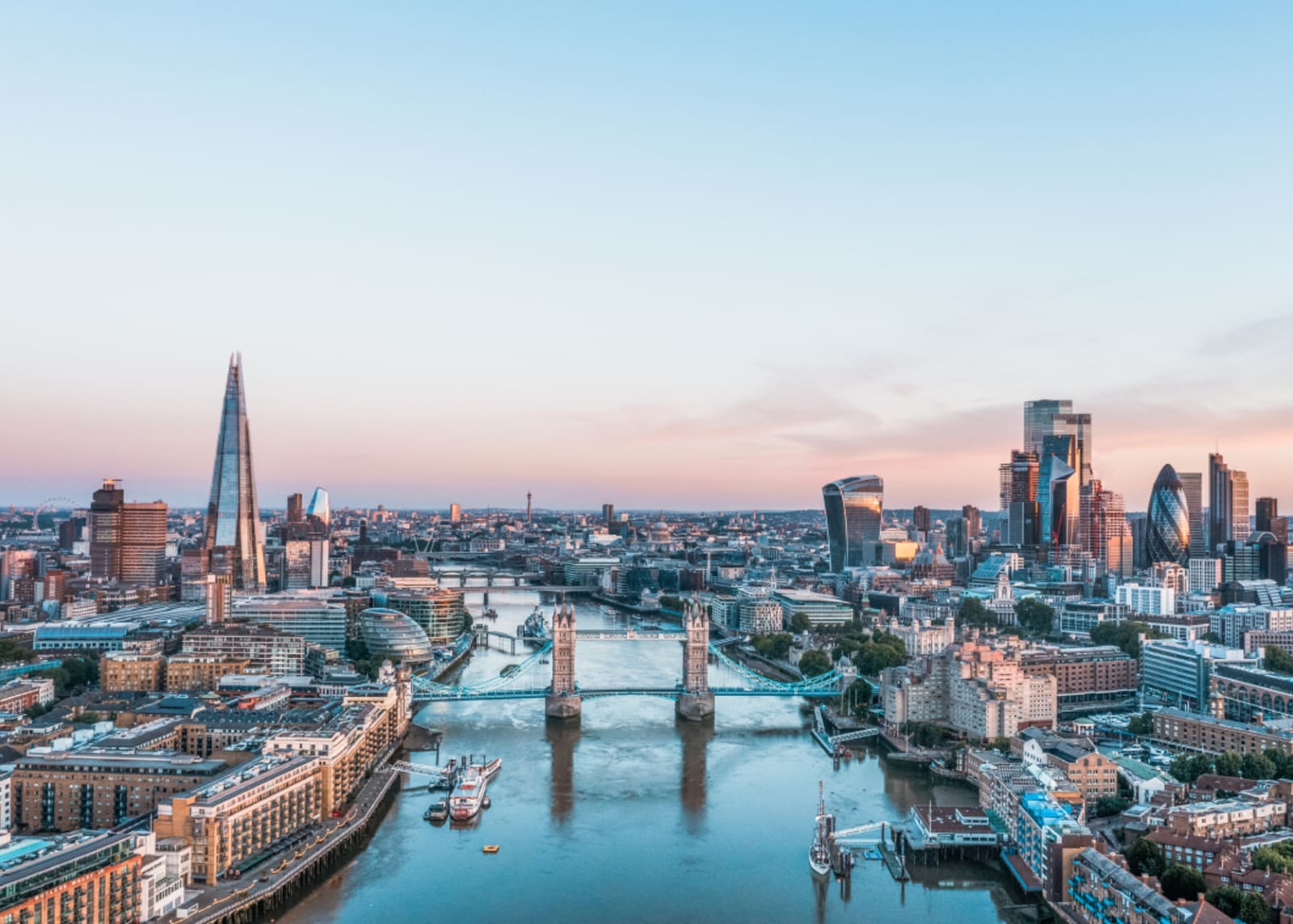
Paris, France
Day 9 to 11.
Wave goodbye to the United Kingdom as you cross the Channel and arrive in Paris . Climb the Eiffel Tower, walk along the Seine and pay a visit to da Vinci’s Mona Lisa at the Louvre . For something different, explore the charming, cobbled streets of the Montmartre district. Oh, and don’t forget to allow plenty of time for bread, cheese and croissants while you’re there!
Amsterdam, the Netherlands
Day 13 to 14.
Next stop, the Netherlands! We’d recommend visiting the Rijksmuseum and the Van Gogh Museum for a bit of culture while in Amsterdam . Or spend some time at the Anne Frank House to learn more about this incredible young girl’s story. Rent a bicycle to explore the city like a local and make time to try some poffertjes, or Dutch pancakes.
Berlin, Germany
Day 15 to 16.
Immerse yourself in history at the East Side Gallery, once part of the Berlin Wall and now a 1.3km long art installation, and the Memorial to the Murdered Jews of Europe. Keen to get outdoors? Pay a visit to Tempelhofer Feld for something different! It’s an abandoned runway-turned-city park. And don’t leave Berlin without sampling some of Europe’s best kebabs.

Prague, the Czech Republic
Day 17 to 18.
From Berlin to Prague ! Lose track of time admiring the famous Prague Astronomical Clock in Old Town Square or take a stroll across the striking Charles Bridge. Prague Castle is another attraction that you won’t want to miss. The castle dates all the way back to the 9th century.
Salzburg, Austria
Day 19 to 20.
Next stop on your Europe itinerary is the charming city of Salzburg . Visit the Getreidegasse, Mozart’s birthplace and now a bustling shopping street, or head to Hohensalzburg Fortress , one of Europe’s largest medieval castles. Fan of the Sound of Music? See the sights of Salzburg made famous by the movie on a guided tour.
Zermatt, Switzerland
Day 20 to 21.
Onwards to the Swiss Alps! Go skiing, take in the views and explore an enchanting glacier palace at the Matterhorn Glacier Paradise , Europe’s highest mountain station. A visit to Zermatlantis, the Matterhorn Museum, is perfect for those looking to find out more about the history of the famous Swiss landmark.
Switzerland is also a great place to experience some of the best train travel in the world! Try the Jungfrau Railway and journey to the highest railway station in Europe. It’s a good idea to book your train tickets in advance. You can also reserve a seat to make sure you get a great view while on board.
UK and Europe Travel: Tips on Where to Visit Based on Your Travel Type
CHECK IT OUT ➜
Itinerary Two: Europe
Barcelona, spain.
Admire the distinct architecture of La Sagrada Familia, Barcelona’s famously unfinished basilica, or the colourful ceramic designs decorating Park Güell . Authentic Spanish paella and tapas are also a must while visiting Barcelona.
Rome, Italy
Hopefully you’ve been practising your Italian because the next stop on our travel itinerary is Rome ! Be transported back to the time of gladiators with a visit to the Colosseum. The Trevi Fountain and the Pantheon are also incredible landmarks that you’ll want to tick off the bucket list.
Spend a full day exploring Vatican City if you can! From the Renaissance architecture of St. Peter’s Basilica to Michelangelo’s incredible painting ceiling in the Sistine Chapel, the world’s smallest city is sure to leave a big impression.
Venice, Italy
The second Italian stop in this Europe itinerary is Venice , the famous ‘floating city’. Known for gondola rides on the Grand Canal, the imposing St. Mark's Basilica and Doge’s Palace, Venice is sure to keep you busy.
Make sure you try the seafood and explore the colourful Burano neighbourhood while you’re there. And if bridges are your thing, don’t miss the Rialto Bridge and the Bridge of Sighs. Both are hundreds of years old and bursting with history!
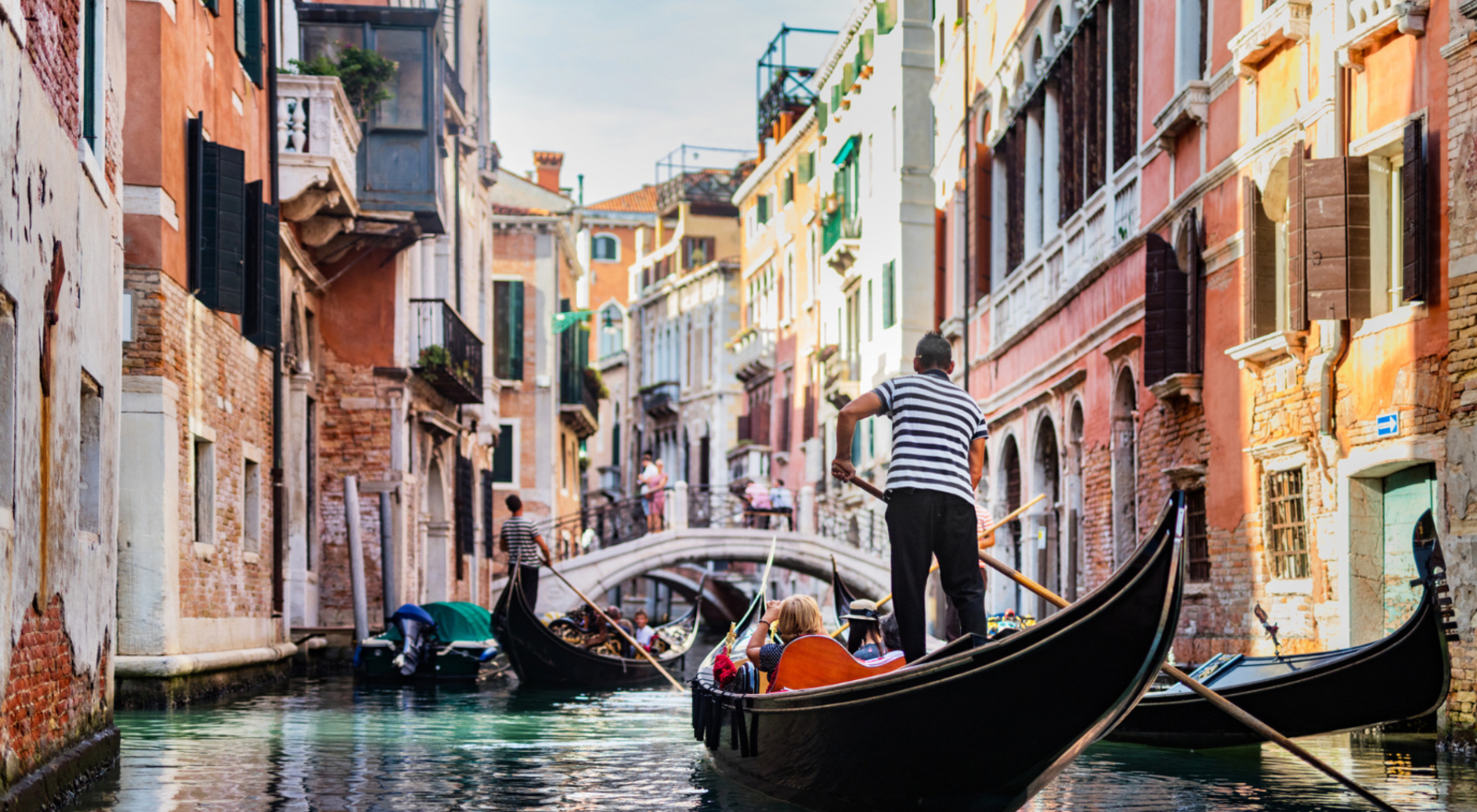
Zagreb, Croatia
Day 10 to 11.
Your adventure continues with a stop in the Croatian capital of Zagreb ! This often-overlooked destination is full of museums, galleries and cultural attractions to explore. Check out King Tomislav Square, a beautiful green space found in the city centre, St. Mark’s Church and the Cathedral of Zagreb. For those looking for quirkier experiences, pay a visit to the Museum of Broken Relationships – an entire museum dedicated to failed romantic relationships!
Budapest, Hungary
Day 12 to 14.
From the imposing Hungarian Parliament Building and Buda Castle to views of the Danube River. Hungary’s major city of Budapest has something for every traveller! Relax and let your worries wash away with a visit to the Széchenyi Thermal Bath or be moved by the Shoes on the Danube Bank memorial honouring the Jews who were killed there during World War Two.
Listed as a UNESCO World Heritage Site, make sure you save some time to wander Budapest’s beautiful streets. Sampling some local delicacies, like Kürtőskalács (a delicious, sweet treat) and goulash, is also highly recommended!
Athens, Greece
Day 15 to 18.
Next up on our three-week Europe itinerary is Athens , the birthplace of modern democracy and Western civilisation. Once one of the world’s most influential cities, Athens is full of ancient monuments to marvel at, like the Parthenon and the Panathenaic Stadium. Don’t miss the National Archaeological Museum and the Acropolis Museum to take in that Greek history before fuelling up on souvlaki, moussaka and gyros!
Travel Tips: How Much Does It Cost To Go To The UK & Europe?
Istanbul, turkey, day 19 to 21.
This adventure ends in Istanbul , a major city in Turkey and well worth a visit! Don't miss the iconic Blue Mosque, also known as the Sultan Ahmed Mosque, Hagia Sophia and the Galata Tower. And no trip to Istanbul would be complete without a wander through the Grand Bazaar, one of the world’s biggest and oldest covered markets! It’s the perfect spot to pick up some unique Turkish souvenirs for your family and friends back home.

Itinerary Three: Scandinavia
Copenhagen, denmark.
Our third itinerary starts further north, in chilly Copenhagen ! Don’t miss Tivoli Gardens , one of the oldest amusement parks in the world, or the famous Little Mermaid statue. Do as the locals do and get around by bicycle, eat in some of the world’s best-hatted restaurants and explore Freetown Christiania, the self-governing community in the heart of the city.
If you want to see Scandinavia a little differently, cruising is a great option! For more information on cruising post-COVID-19, see How Safe Is Cruising Post COVID-19?
Stockholm, Sweden
Next stop, Sweden ! Immerse yourself in culture by exploring the narrow, cobbled streets and impressive historic buildings of Gamla Stan, Stockholm’s Old Town. After you’re done there, head to the Vasa Museum for the chance to admire and learn all about the Vasa, a well-preserved seventeenth-century warship. Museum-lovers might also like to check out ABBA The Museum , Stockholm Medieval Museum and the Viking Museum .
Helsinki, Finland
Time to visit another major Scandinavian city – Helsinki ! Located on the Gulf of Finland in the country’s south, Helsinki is the perfect place to unwind for a day or two.
Explore the vibrant Market Square for traditional food options and unique souvenirs paired with striking views out over the South Harbour. In winter, you’ll find heated café tents waiting to keep you warm while you enjoy your hot chocolate or coffee and soak in the atmosphere! Feeling adventurous? Take a ferry out to the UNESCO World Heritage Listed Suomenlinna Fortress , an eighteenth-century island fortress.
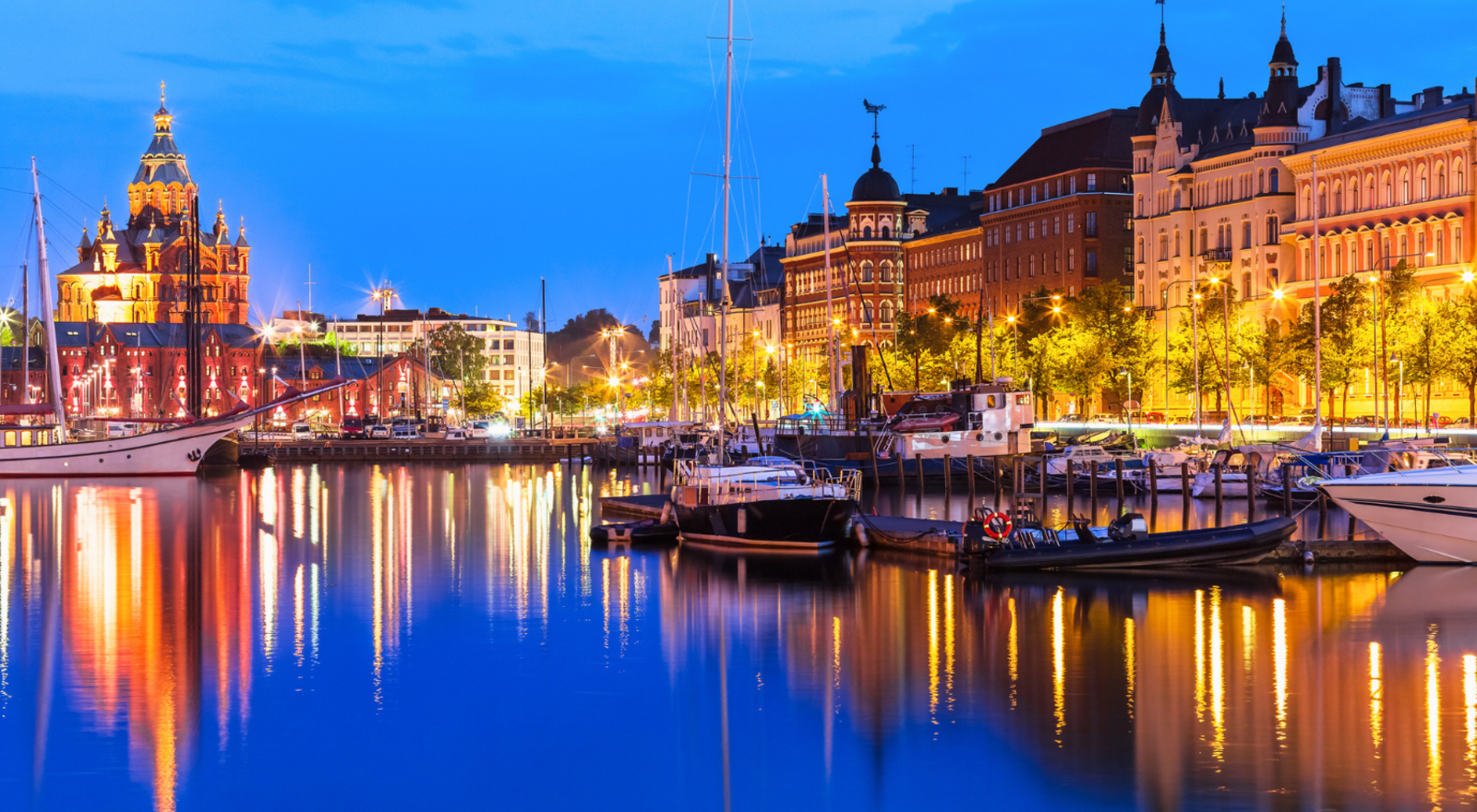
Rovaniemi, Finland
Day 8 to 11.
Onwards and upwards! Rovaniemi , the capital of Lapland , is the next stop on this three-week itinerary. Known as the Official Hometown of Santa Clause, Rovaniemi is the perfect place to get into the Christmas spirit – no matter what time of year you visit!
Spend a full day exploring Santa Clause Village . Meet Santa Clause, hang out with the reindeer and enjoy Christmas-themed Arctic cuisine. And what better time to get started on the Christmas shopping? Oh, and keep your eyes on the skies when the sun goes down in case the northern lights decided to come out and play.
Lofoten Islands, Norway
Looking for something a little more remote? You’ll love this next stop! The natural beauty of the Lofoten Islands dotted along the northern Norwegian coastline is unforgettable. It's also far enough north to experience the midnight sun when visiting in the summer or to search for the northern lights in winter.
Explore small fishing villages, feast on some of the freshest seafood around or brave the arctic waters (wetsuits definitely required) and go surfing. Yes, you read that right!
Oslo, Norway
Time to go to Oslo ! Visit the Bygdøy Peninsula for the city’s best museums (try the Norwegian Maritime Museum , the Norwegian Folk Museum and the Fram Museum ) and incredible hiking trails.
Visit Akershus Castle and Fortress to learn about Oslo’s medieval history. Then, go tobogganing in Korketrekkeren or try Fårikål (lamb and cabbage stew – a Norwegian favourite). No matter how you spend your time here, Oslo is sure to keep you busy!

Reykjavik, Iceland
Day 18 to 21.
The last stop on this epic three-week adventure is the charming city of Reykjavik ! Admire the striking architecture of Hallgrímskirkja church and be sure to check out the famous Sun Voyager sculpture. You’ll also want to make time for a mosey down Laugavegur, Reykjavik’s main shopping street, for souvenirs and a coffee.
There are lots of incredible day trips (or multi-day trips if you have the time) that depart Reykjavik and explore other attractions in Iceland ! Try planning a day trip to the Snaefellsnes Peninsula, Thingvellir National Park, the Blue Lagoon or Geysir.
There are so many ways to enjoy your trip to Europe or the UK . Be inspired by the itineraries above or plan your own travel itinerary. However you choose to spend your weeks in Europe or the UK, you’re sure to make memories that will last a lifetime.
Explore UK and Europe Deals
Find a Consultant
Watch our new YouTube Series - Relax
Site quick links, help & support.

Flight Centre acknowledges the Traditional Custodians of Country throughout Australia.
© Flight Centre Travel Group Limited. ATAS Accreditation No. A10412.
*Travel restrictions & conditions apply. Review any specific conditions stated and our general terms at Terms and Conditions . Prices & taxes are correct as at the date of publication & are subject to availability and change without notice. Prices quoted are on sale until the dates specified unless otherwise stated or sold out prior. Prices are per person.

The Ultimate 3 week European Road Trip Itinerary 2024

Are you looking to Spend 3 or more weeks exploring Europe ?
If that’s the case, this is the guide for you!
No matter if you are travelling by Car, Rail or Bus, this Ultimate 3 week European road trip itinerary will give you the best taste of Europe.
From crystal-clear waters to stunning architecture, you won’t want to miss out on these tourist destination hot spots.
Imagine yourself exploring different cultures and eating the best dishes Europe has to offer – all while taking in wonderful views of unique cities!
Whether this is your first time abroad or you’re an experienced traveller, our three-week itinerary will show you why travelling around Europe is a must!
By the end of this article, you will feel confident and ready to book your trip to Europe.
So let’s get started and help you plan the ultimate holiday!
🚨Before we jump in, I’m always asked what the best car rental company to use is in Europe. And for so many reasons, I always use and recommend DISCOVER CARS They are always happy to help which makes booking and using a rental car become so stress-free. I also love how they compare every single company available so you get the best deal each and every time!
🚗 CHECK OUT DISCOVER CARS HERE
Don’t forget to get your Free Key Phrase Guide Below so you can explore Europe with ease ⬇️

The Best 3 week European Road Trip Itinerary Route
To get a taste of all Europe has to offer, these are the best destinations to add to your 3 week European road trip itinerary.
This Route will allow you to see a lot in a small amount of time. This will work out around 2-3 days in each place. For a more relaxed 3 week European road trip itinerary, (with more time in each place) limit your trip to 5/6 countries.
Guides to Inspire and Plan your 3 week European road trip
Europe’s Best Trips: 40 Amazing Road Trips

Lonely Planet’s Where To Go When Europe

The New York Times 36 Hours Europe

How much does it cost to travel to Europe for 3 weeks?
This completely depends on your budget. For a daily budget, I would set aside €50 PP for accommodation, food and site seeing.
However, this doesn’t include travel insurance, flights and other transport options.

It’s easy to budget for a 3-week European road trip itinerary if you use comparison sites for hotels and flights.
You can also plan a European road trip itinerary to include cheaper Countries to visit if you are on a budget.

To save serious amounts of money when booking your Europe adventure, use the guide below⬇️

How to plan a 3 week European road trip itinerary
With so many Countries, routes and languages, it can be hard to know how to start planning your 3 week European road trip itinerary.
The best start is to set a budget, select a few places you don’t want to miss and go from there.
Europe is easy to explore in 3 weeks so don’t stress. From experience, not everything goes to plan.
There can be flight delays, strikes and protests so the best advice is to leave some time in your 3 week European road trip itinerary to account for these (fingers crossed none of these happen during your European trip).
✈️ To make the planning process easier and stress-free, Click Here for a Step by Step Guide.

The best places to visit in Europe in 3 Weeks
Europe has so many amazing places to visit, no matter how much time you have.
I do recommend packing a good travel pillow for your drive so you can be comfortable!
And like I’m sure you have heard a million times, it does matter what you want to see and do during your trip.
To help you have the ultimate taste of Europe, here are the best places you should visit during your 3 weeks in Europe.
Ready? let’s start exploring some of the best places to visit in Europe⬇️
Poland is one of the places you never hear much of when people start planning a 3 week European getaway.
But it should be!

With its location smack bang in the middle of Europe, vibrant Cities and idyllic natural landscapes, it’s somewhere you can’t miss on your 3-week European road trip itinerary.
Here are a few places in Poland to add to your itinerary:
✔️ Krakow- this is one of the best places to stay in Poland
✔️ Tatra Mountains
✔️ Bialowieza Forest
✔️ Auschwitz-Birkenau Memorial and Museum
Auschwitz is a place everyone needs to visit at least once in their lifetime. Click here to learn more about visiting Auschwitz and other Holocaust sites in Europe.
If you want to learn more about Auschwitz and other holocaust sites or get ready for visiting these places, this book list will help you.
Poland is an incredibly beautiful place to visit with so much history and great things to do.
It is probably not one of the most popular destinations in Europe to visit so is an amazing way to get a true taste of Europe, without the crowds.
Want to add somewhere amazing to your 3 week European road trip itinerary?
Well, Czechia is the spot for you. No matter if you visit in the Summer or Winter, you will find it impossible not to fall in love with this destination .

Czechia/ Czech republic is a place that deserves to be on any Europe itinerary.
With great beer and lots to do, I guarantee this is a place you will love and want to visit again and again!

Here are a few places in Czechia to add to your itinerary:
✔️ Prague Castle
✔️ Charles Bridge
✔️ Prague Astronomical Clock
✔️ Lennon Wall

Personally, I think no visit to Europe is complete without visiting this destination. Its people, food and history make this a must visit all year round !

Slovakia is full of unique traditions, rich cultures and untouched views.
You will be drawn in by the amazing things you can do here. Make sure it’s added to your itinerary for a few days you won’t forget.

Here are a few places in Slovakia to add to your itinerary:
✔️ Bratislava Old Town
✔️ St Elizabeth’s Cathedral (Dóm Svätej Alzbety)
✔️ Zelené pleso

Looking for the most Postcard worthy views? Well, Why not throw in some thermal baths and amazing food too?
Hungary is the perfect place for a culture vulture wanting to try some of the best food in Europe.
Make sure you add Hungary to your European trip itinerary. It is one place you really don’t want to skip.

Here are a few places in Hungary to add to your itinerary:
✔️ Széchenyi Thermal Bath
✔️ Hungarian Parliament Building
✔️ Buda Castle
✔️ Széchenyi Chain Bridge
✔️ Faust Wine Cellar

Austria is always a great stop-off location on any Europe Adventure .
With so much great food to try and amazing buildings to explore, adding Austria to your itinerary will not leave you disappointed.

Here are a few places in Austria to add to your itinerary:
✔️ Cafe Central in Vienna
✔️ Explore Salzburg
✔️ Sigmund Freud museum Vienna
✔️ The Dancing Horses
✔️ Schönbrunn Palace
✔️ Vienna museum quarter

No Trip to Europe would be complete without sampling the sites of Italia.
Known for its incredible food , Historical sites and amazing wine , adding Italy to your 3 week European getaway will be the best decision you make!

Here are a few places in Italy to add to your itinerary:
✔️ Explore the Historical sites of Rome
✔️ See the Last Supper in Milan
✔️ Book a Helicopter tour
✔️ Taste some Local Wine in Lake Garda
✔️ Visit the Duomo Cathedral in Milan
✔️ Spend a day or two in Venice, the City of Canals

Why Should you add France to your 3 week itinerary?
Well from Countryside to Coast, France is a great place to add to any Europe Itinerary for the Countless things you can see and do.
No matter what you love doing on a trip, France has you covered.
Just make sure you take a travel cooler with you so you can enjoy amazing snacks on the go!

Here are a few places in France to add to your itinerary:
✔️ Mont saint Michel
✔️ The sites of Paris
✔️ D-Day Beaches
✔️ The French Riviera
✔️ Honfleur

Beer, Castles and Currywurst. These are a few of the things that make Germany an awesome stop on a trip to Europe.

Here are a few places in Germany to add to your itinerary:
✔️ Brandenburg Gate
✔️ Neuschwanstein Castle
✔️ Reichstag Building
✔️ Visit Rakotzbrücke Bridge
FAQs about exploring Europe
I’m sure you have a few more questions you need to answer before booking your getaway to Europe. To help you out, these are the most frequently asked questions about driving and visiting Europe:
Three weeks seems like a short amount of time to explore Europe – after all, the continent has so much to offer! But if you plan carefully, it is definitely possible to get what feels like a comprehensive experience around the region within this amount of time!
This will depend on what you want to see and do. In terms of seeing amazing sites, the UK is full of amazing road trip destinations like Snowdonia and Cornwall . But for an all-round destination full of incredible sites and easy roads to navigate, you should hire a car in Iceland .
Hiring a car is the best way to visit multiple places across Europe during one trip. Thanks to the Geography of many countries, you can get to a few countries in just a few days.
Europe has plenty to offer its first-time visitors! If you are not very confident in navigating it alone, I highly recommend booking a group tour to take the stress away. But if you are ready for adventure, try renting a car or booking the train to see Europe at your own pace!
I hope this post was useful! To help you have the best trip, here are some most useful articles:
What Do You Need To Know About Driving In Europe In Winter? The Complete Guide
Everything You Need To Know About Renting A Car In Lithuania
The Best Places To Stay In Gozo Without A Car: The Ultimate Guide
The Ultimate Luxury Car Hire Options In France For Your Next Getaway
What Is The Best France Driving Kit? Complete Checklist & Requirements Guide
The Ultimate Gran Canaria Road Trip: Best Places To Stay & Things To Do
What Should I Know Before Renting A Car In Greece?
Road trip gifts: Ultimate gift ideas for all travel lovers
📍 3 week European road trip itinerary sign-off: Europe has so many amazing places for you to explore. Use this guide to create the ultimate 3 week European road trip itinerary to see the very best the continent has to offer.
Lowri Thomas is the founder of Many Other Roads. She lives and travels in Europe and has explored more than 40 countries. She is joined on her travels with her dog Scout and they explore Europe mostly by road. Born in Wales, she also shares the best things to do in Wales, UK and beyond. She helps over 50,000 people per month plan epic Europe adventures and road trips.
Related Posts

A Marrakech Marvel: Why you need to visit Marrakech Henna art Cafe Review

How to create the Best Europe Road Trip Plan 2023
Leave a comment cancel reply.
You must be logged in to post a comment.
Privacy Overview

- Australasia
- Central America
- North America
- South America
- Buenos Aires
- Mexico City
- New York City
- Rio de Janeiro
- Overwater bungalows
- Cruise tips
- Sightseeing Passes
- Attractions
- Theme parks
- When to visit where
- Backpacker Indexes
Sign up for our monthly Priceoftravel newsletter
11 Best first-time Europe itineraries for 1, 2, or 3 weeks
Europe is going to be very busy in the summer of 2024 as the world is back to normal and travel demand is higher than ever. One other key factor is that most European currencies are still hovering at lower levels historically compared to the US dollar, which means that Europe will feel somewhat cheap again this year. In fact, according to our World Backpacker Index , European cities like Lisbon, Madrid, and Munich are about 30% cheaper to visit than Boston, Chicago, and New York City. In other words, flying to Europe might seem expensive, but most things will be cheaper once you get there compared to the costs of visiting a large US city.
Below you’ll find 11 of the most popular and best itineraries for a first visit to Europe. Your first visit is not really the time to be different or creative, and the famous destinations tend to be popular for a reason. In other words, it’s kind of silly to visit, say, Bulgaria, if you’ve not yet been to France or Italy. I lay out the best options along with how long to stay in each place as a general guide. I also discuss Mediterranean cruises, which can actually be an amazing way to see a lot of Europe on your first visit, especially if you don’t like going back and forth to train stations and airports every 2 or 3 days.
For a bit of fun you might be interested in the cheapest 5-star hotels in Europe , which start at US$80 per night for really nice hotels. It helps show that if you choose some of the cheaper cities, you can treat yourself to some luxury that you can’t afford in most other places.
This article was last updated in March, 2024.
There are 11 starter itineraries described in detail below
- Classic London and Paris
- England and Scotland
- Paris and Italy
- Mediterranean cruise
- France, Belgium, and Netherlands
- Paris and elsewhere in France
- Switzerland
- Best of cheap eastern Europe
For each itinerary there are suggestions of other destinations that are easy to add on to the main cities.
Note: This article was most recently updated in March, 2024
Building the best itinerary for your first trip to Europe
Below there are 11 popular itineraries for one week in Europe. If you’ve only got a week then choose one of them and assume you’ll return again to conquer more of this amazing part of the world. If you’ve got more time then you can choose from some of the top add-on suggestions for each one.
Start in the most famous cities
Your first visit to Europe is no time to try to be different or edgy. I recommend that you focus on these 5 great cities before you start branching out into cheaper or more obscure places.
Keep your travel days to a minimum
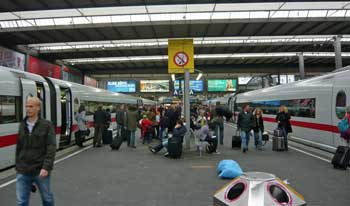
Spend 3 (or 4) nights in almost every major city
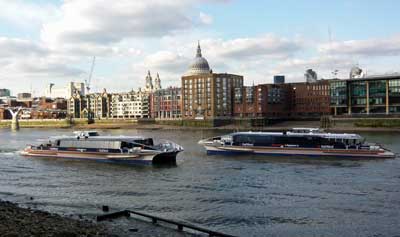
So many first-time visitors are initially planning on spending only 1 or 2 nights in major cities that I wrote a detailed explanation of why 3 nights is ideal for almost all European cities , even if you want to see as much as possible.
3 (or 4) nights will be enough for any city on your first trip
Most first-time visitors are tempted to move too quickly, but it can also be a mistake to move too slowly. It’s really amazing how much you can see in two full sightseeing days. If you spend too long in one city you’ll end up seeing things that are way down your list, while you could be in another city seeing things at the top of your list there.
Choose cities that are easy to reach from each other
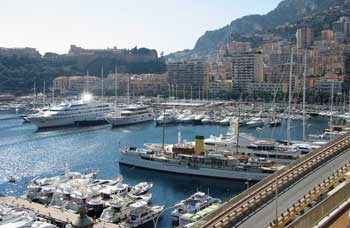
For your first trip it’s best to visit cities that are no more than a 5-hour train ride apart.
Choose cities that are connected by reasonable train rides rather than flights
To build on the point above, finding cheap flights within Europe is easy, but train travel is about a million times more enjoyable and less stressful. You’ll enjoy the train rides almost as much as the cities, so focus on places that are within 5 hours of each other by train.
Start with one of the classic itineraries below, and then add to it if you have more time
If you only have 7 days then you’ll find a list below of classic itineraries that are well-suited to a first visit to Europe. Hopefully you have more than 7 days though, and if you do you can add in one or more of the suggested add-on cities to build an itinerary that appeals most to you.

Best 1-week itineraries for the first time in Europe
Itinerary 1: classic london and paris.
- London (3 or 4 nights)
- Paris (3 or 4 nights)
Fly into either city and take the 2-hour Eurostar train between them
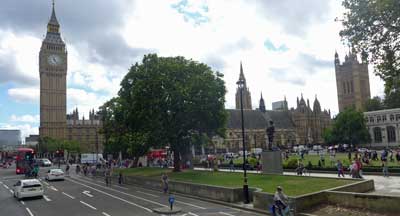
London highlights
- Big Ben and Parliament
- Westminster Abbey and St. Paul’s Cathedral
- Tower of London and Tower Bridge
- West End shows (Broadway equivalent) and classic pubs
- Buckingham Palace and Windsor Castle
Paris is actually far more beautiful than London and the food is famously much better as well. Since Paris gets so many tourists from non-French speaking countries, it’s easy to get by on just English, and the Metro system makes it fast and easy to get around. The architecture of both cities is amazing from the Tower of London, Big Ben, Westminster Abbey to the Louvre and the Eiffel Tower. These cities each pack a huge punch and they are very different from each other as well. Actually, England is arguably the best choice for your first trip to Europe .
Paris highlights
- Eiffel Tower
- Louvre Museum and Museum de Orsay
- Arc de Triomphe and other monuments
- Montmartre neighborhood and Sacré Coeur Cathedral
- Probably the world’s best affordable restaurants and wine
Best add-ons to London and Paris
- Edinburgh (2 or 3 nights, from London)
- Amsterdam (2 or 3 nights, from Paris)
- Bruges and Brussels (2 nights, from Paris)
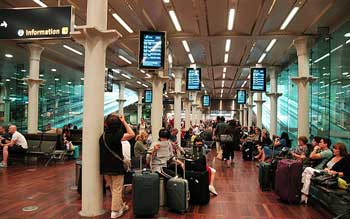
>>> Best one-week London and Paris itinerary in detail >>> Check London hotel deals >>> Check Paris hotel deals
Itinerary 2: England and Scotland
- York (1 night)
- Edinburgh, Scotland (2 or 3 nights)
- Inverness, Scotland (2 or 3 nights)
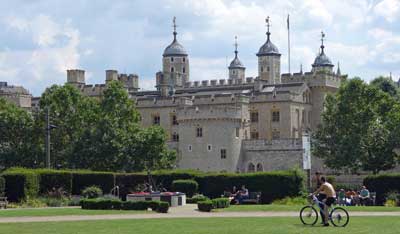
York is a small Roman city with intact city walls and one of the most famous cathedrals in Europe. Edinburgh is not only the capital of Scotland, but it’s easily the second most interesting city in all of Britain. If your time is short, skip York and spend more time in Edinburgh.
If you prefer to focus on the south of England on your first trip then the best option is to go to Bath or nearby Bristol after London. Bath is another of England’s top destinations and it’s a gorgeous city that has been a spa resort for many centuries. It’s also reasonably close to Stonehenge. You can also easily get to Cornwall in England’s southwest corner from Bath, and that’s a whole different and fascinating experience (with nicer weather than up north).
If you’ve got more than a week and want to spend more time in Scotland, especially in the summer months, the place to head to is Inverness. It’s a small town that is considered the gateway to the Scottish Highlands, but it’s an interesting and charming place on its own. You can take day-trips by bus to the highlights of the Highlands including the Isle of Skye and Loch Ness. Between you and me, it’s better to minimize time in Loch Ness or skip it altogether because it’s not one of the more photogenic parts of Scotland and the monster has always been a hoax.
Travel times between the recommended places
- London to York by train: 2 hours
- York to Edinburgh by train: 2.5 hours
- London to Edinburgh by train: 4 hours
- Edinburgh to Inverness by train: 3.5 hours
- London to Bath by train: 85 minutes
Best add-ons to England and Scotland
- Paris (3 or 4 nights from London)
- Amsterdam (3 nights from Paris)
If you think you want to spend your whole trip in Britain you should have a look at our article on the best itineraries in England, Scotland, and Wales .
>>> Check London hotel deals >>> Check Edinburgh hotel deals
Itinerary 3: Paris and Italy
- Paris (3 or 4 nights)
- Venice (1 night)
- Florence (2 or 3 nights)
- Rome (3 nights)
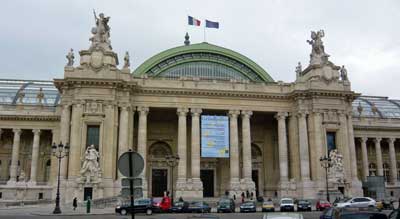
From Paris you can easily fly to Venice (or nearby Treviso) where you should try to spend about 24 hours. Venice is small enough to see in a full day, and so crowded that most people are satisfied to leave after that day. The key is to stay in the main part of the main island so you can enjoy Venice before the cruise passengers and day-trippers arrive, and also after they leave for the day. Two nights in Venice would not be wasted time, and it’s possibly the most gorgeous city in the entire world, but you can see the best of it in a bit over 24 hours.
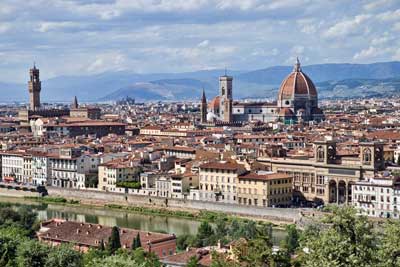
Rome also lives up to the hype and spending a day in the Vatican City will be a highlight even for non-Catholics, but it’s also a crowded and busy city so three days is usually enough for most people. Similar to Paris, Rome is an unusually beautiful city from almost any angle when you are in the historical center. You’ll walk through a stunning piazza (town square) and then turn a corner and you’ll see gorgeous buildings or public statues that are as nice as anything in the museums. Seriously, it’s worth a visit.
Paris to Venice flight: 1 hour 35 minutes Venice to Florence by train: 1 hour 53 minutes Florence to Rome by train: 1 hour 16 minutes
You can of course instead fly from Paris to Rome and then go north to Florence and then to Venice and fly home (or back to Paris) from there, and it would be just as enjoyable.
Best add-ons to Paris and Italy
- Nice/Cannes/Monaco (2 or 3 nights)
- Avignon (2 nights)
- Bourges (2 nights)
- Bordeaux (2 nights)
- Aix-en-Provence (2 nights)
- Reims (2 nights)
- Dijon/Burgundy (2 nights)
- Milan (1 or 2 nights)
- Lake Como (2 nights)
- Siena (2 nights)
- Cinque Terre (1 night)
- Naples / Sorrento /Amalfi Coast/Pompeii/Capri (3 to 5 nights)
- Sicily (3 to 4 nights)
>>>Much more information in this article about the best France and Italy itineraries >>> Check Paris hotel deals >>> Check Venice hotel deals >>> Check Florence hotel deals >>> Check Rome hotel deals
Itinerary 4: Mediterranean cruise
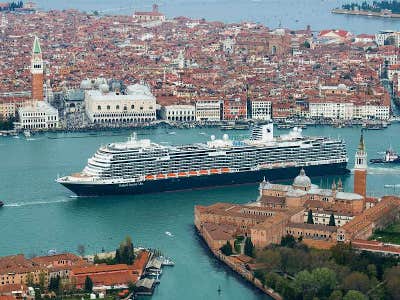
In spite of the reputation of cruises to be floating buffets, they can actually be an excellent way to visit a great number of amazing European cities in a short time. The ship typically is in port from the early morning until mid evening, often giving you the opportunity to have dinner in the city (unlike Caribbean cruises). Better still, the cruise ports are often near the center of town, so you can just walk off the ship and do sightseeing on foot or by public transportation.
Mediterranean cruises usually start at 7 nights but can go up to 3 weeks, which can provide an amazing tour of the entire region without having to pack and repack your bags more than once. They also can provide excellent value, especially compared to the price of taking trains or flights and finding new hotels in every destination.
Most popular Mediterranean departure ports
Barcelona, Spain – It’s an easy port to reach. Ships generally go from Barcelona with stops in France and then Italy.
Rome (Civitavecchia), Italy – The port isn’t very close to Rome, but it’s easy to get back and forth. Ships go west to France and Spain as well as south around the tip of Italy and then on to Croatia, Venice, and to Greece.
Venice, Italy – The cruise ships no longer dock close to the best tourist areas, but it’s easy enough to visit Venice for a day or two before boarding a ship. Ships starting in Venice go south and then head west and to Rome and then to France, or they go south to Croatia and then head east to Greece.
Athens, Greece – The cruise port of Piraeus is just south of Athens and easy to reach. Ships from Athens usually head west towards Croatia, Italy, France, and Spain, but there are also ships that visit Greek islands and Turkey.
>>> Check for deals on Mediterranean cruises
Alternative to consider: a river cruise
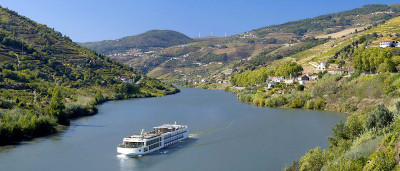
Amsterdam , Budapest , and Prague are some of the most popular river cruise ports, but there are dozens of others including many smaller towns in France where few other tourists will be when you stroll off the ship. There is little or no entertainment on the river cruise ships, but passengers don’t miss it because the entire day and into the evening is spent just steps from local cultural offerings and restaurants.
>>> Check for Europe and river cruise deals
Itinerary 5: France, Belgium, and Netherlands
- Paris (3 nights)
- Brussels and Bruges (1 or 2 nights)
- Amsterdam (2 or 3 nights)
Paris to Brussels: 1 hour 22 minutes Brussels to Bruge: 58 minutes Bruges to Amsterdam: 2 hours 45 minutes Amsterdam to Paris: 3 hours 17 minutes
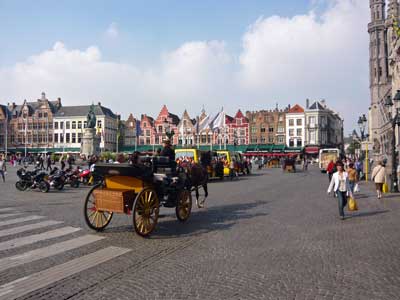
Spending 4 nights in Paris and 3 nights in Amsterdam would be a great trip, but if you want to see something else you’ve got a couple options in between. My advice is to spend an afternoon looking around the Grand Place (main square) in Brussels and then hop a 58-minute train ride to Bruges for a night or two. Brussels isn’t a great tourist city, but Bruges really is so it’s a better option for most people. Whatever you choose out of this group, you can be back in Paris on another high-speed train for your flight home.
Best add-ons to France, Belgium, and Netherlands
- Luxembourg City (1 or 2 nights)
- Cologne, Germany (1 or 2 nights)
- Interlaken, Switzerland (2 or 3 nights)
>>> Check Paris hotel deals >>> Check Bruges hotel deals >>> Check Amsterdam hotel deals
Itinerary 6: Paris and elsewhere in France
And a choice of:
- Normandy (2 nights)
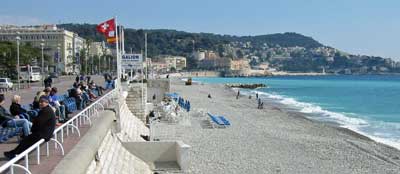
While Nice is a wonderful tourist city for a look at the French Riviera, the other larger cities of Lyon and Marseilles are probably better saved for a future trip because they are light on key sights compared to many smaller towns. Wine lovers can rent a car or take trains into Bordeaux or Burgundy. Since you can get between most of these towns by train in 2 hours or less, spending only 2 nights in each one is a reasonable option if you want to see a lot in a short time.
Normandy is an interesting choice and easy to reach in only about two hours by train from Paris. Some visitors like to see the famous WWII beaches and memorials, while others (especially in summer) like to check out one or more of the beach-resort towns. Deauville is one of the more famous of those, and it’s also famous for its horse race track and as one of the epicenters of the industry in Europe.
Best add-ons to Paris and elsewhere
- More France, of course
>>> Check Paris hotel deals >>> Check Nice hotel deals
Itinerary 7: Italy
- Rome (3 nights)
- Florence (2 or 3 nights)
- Venice (1 or 2 nights)
Rome to Florence: 1 hour 16 minutes Florence to Venice: 1 hour 53 minutes
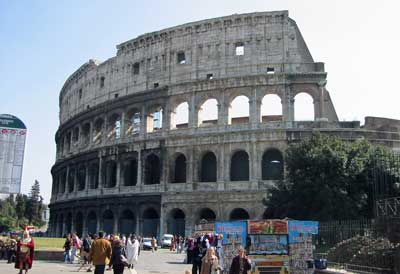
Venice is small enough that you can see the main sights in about 24 hours, and it’s so insanely crowded that many people tire of it after about a day as well. It’s better to pay more for a hotel to be on the main island and visit quickly than to save money with a hotel on the mainland where you’ll be in crowds going back and forth as well. Florence is the most relaxing of the 3, and also a great base for side trips to Pisa, Siena, and Cinque Terre, just to name a few.
Going to Italy? Here are the best first-time Italy itineraries for 3 days to 2 weeks (in much greater detail)
Best add-ons to Italy
>>> Check Rome hotel deals >>> Check Florence hotel deals >>> Check Venice hotel deals
Itinerary 8: Spain
- Madrid (4 nights) (including day trip to Toledo)
- Barcelona (3 nights)
Madrid to Barcelona: 2 hours 30 minutes
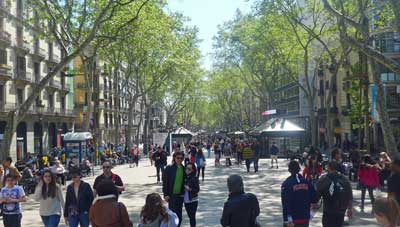
A huge part of Spain’s tourism industry is built around its southern beaches and islands such as Ibiza, Mallorca, and Tenerife (in the Canary Islands). For most people it’s best to ignore those places on your first trip because none of the beaches are special enough to spend days on them compared to the culture of the cities.
Best add-ons to Spain
- Valencia (2 nights)
- Seville (2 or 3 nights)
- Granada (2 or 3 nights)
- Lisbon (3 nights)
By popular demand, I’ve added a full article on where to go in Spain with itineraries from 7 to 10 days up to two weeks .
>>> Check Madrid hotel deals >>> Check Barcelona hotel deals >>> Check Lisbon hotel deals
Itinerary 9: Germany
- Berlin (3 nights)
- Munich (2 or 3 nights)
- Rothenburg ob der Tauber (1 night)
- Füssen (1 night)
Berlin to Munich: 6 hours 2 minutes Munich to Rothenburg ob der Tauber: 2 hours 56 minutes Munich to Füssen: 2 hours 4 minutes
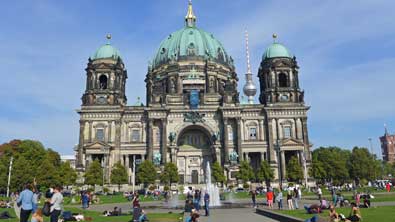
Those two cities are the keys to a Germany visit, and after that you’ve got a wide variety of choices. I cover most of the popular choices in my article on where to go in Germany , which covers several smaller towns that are major highlights.
Best add-ons to Germany
- Cologne (1 or 2 nights)
- Hamburg (2 or 3 nights)
- Amsterdam (3 nights)
- Prague (3 nights)
- Salzburg (2 or 3 nights)
- Vienna (3 nights)
- Interlaken, Switzerland (3 nights)
- Lucerne, Switzerland (2 or 3 nights)
>>> Check Berlin hotel deals >>> Check Munich hotel deals
Itinerary 10: Switzerland
- Interlaken (3 nights)
- Bern (1 night)
- Lucerne (3 nights)
Zurich Airport to Interlaken: 2 hours 10 minutes Interlaken to Bern: 53 minutes Bern to Lucerne: 1 hour 50 minutes Lucerne to Zurich Airport: 1 hour 3 minutes
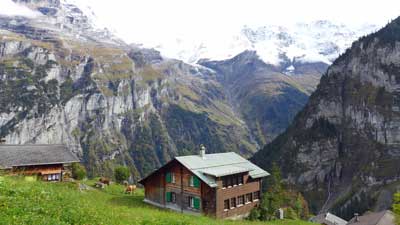
Interlaken is the best hub for the most dramatic Alps views and experiences. The one-hour cable car ride up to the Schilthorn observation deck is something you’ll never forget, and the only thing that might be more dramatic is the train ride up to the Jungfraujoch station, which is the highest in Europe. Lucerne is almost as beautiful with a scenic lake at its heart and also great mountaintop views nearby. If you do want to see a Swiss city then the capital of Bern is the most interesting and photogenic on a short visit. Read more about where to go in Switzerland for even more ideas.
Best add-ons to Switzerland
- Munich (3 nights)
- Italy (as long as you’ve got)
>>> Check Interlaken hotel deals >>> Check Lucerne hotel deals
Itinerary 11: Eastern Europe’s best cheap cities
- Budapest (3 nights) and/or
- Krakow (3 nights)
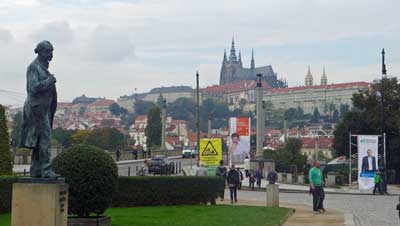
Each of these cities is beautiful and historic, but English is less widely spoken so they can also be quite a bit more challenging for a first-time visitor. Another difficulty is that the trains between them are still quite slow compared to the high-speed rail in the West, so it takes most of a day from one to another, and a bus is often a better choice. I cover this best cheap Europe itinerary more fully in the linked article.
Prague to Budapest: 6 hours 41 minutes Budapest to Krakow: 9 hours 54 minutes (flying might be better)
Best add-ons to cheap Eastern Europe
- Cesky Krumlov, Czechia (2 nights)
- Ljubljana, Slovenia (2 or 3 nights)
- Split, Croatia (3 nights)
- Belgrade, Serbia (2 or 3 nights)
- Sarajevo, Bosnia and Herzegovina (2 or 3 nights)
- Sofia, Bulgaria (2 or 3 nights)
>>> Check Prague hotel deals >>> Check Budapest hotel deals >>> Check Krakow hotel deals
OTHER POPULAR POSTS
Leave a reply cancel reply.
Your email address will not be published. Required fields are marked *
11 Best first-time Europe itineraries for 1, 2, or 3 weeks " --> All Comments
Hi Roger, was reading your article and reply to various questions and its actually too good and kind from you. if you pls,help me out a route plan for 15days. but my catch is, i have to start from Stockholm.i like to end in rome to head back home. in between what should be my plan?thanks
I’m happy to help. Stockholm to Rome could be done in 15 days, but it would require skipping quite a few great places along the way. My recommendation would be to choose 5 or maybe 6 cities total and spend 3 days in each. If Stockholm is one of your cities you’d only have 12 days left but even if Stockholm didn’t count on the 15 days I think it’s probably best to fly from Stockholm to a city closer to Italy and then do the rest of it on shorter train rides. You could do Stockholm to Copenhagen by train, but those are pretty long train rides and honestly those two cities are pretty similar to each other.
So maybe Stockholm and then a flight to Paris and then trains to Venice, Florence and Rome? That sort of thing. Stockholm is just so remote that it would require at least 3 or 4 longer train journeys but if you flew from Stockholm to Paris (or Berlin or Prague or Budapest or wherever) the remaining train rides would be relatively short. I hope this helps and let me know if you have any other questions. -Roger
Firstly, I would like to thank you for the article and itineraries; they are very helpful.
My wife and I are planning a 3 to 4-month trip around the EU (Western Europe). Before I delve into the specifics of our itinerary, I am wondering if the same 3 to 5-day in each-city principle applies for cases where travellers will spend more time travelling around?
I look forward to hearing from you. Thanks Raf
Wow. That sounds amazing! Even when traveling for longer periods like that I’d recommend a minimum of 3 nights in almost any place you go. The main reason is your travel days tend to be kind of long when you factor in everything from checking out of one hotel to getting to the train station and waiting and then the journey time and then getting to your next hotel and getting situated. All of that usually takes 4 to 6 hours even when the train journey is only an hour or two, so you just don’t get much sightseeing done on those days. So if you only stay 2 nights in each city it means every other day is a travel day and that just takes up too much time.
That said, I think 3 or 4 days is enough time in most places as well. If you really want to get to know Paris, for example, you might stay a week there. But for most cities there are diminishing marginal returns starting on day 3 or 4. In other words, you’ll be able to see the 10 things that most interest you in 3 days or so, and at that point you might be ready to see the Top 10 things in the next city instead of the #11 through #20 things in the first city.
Another thing that is important with longer trips like that is to plan some down time at least every few weeks. If you try to do sightseeing 7 days per week for weeks at a time it starts to feel like a job. What I like to do is every two or three weeks find a smaller town or cheaper place where I can rent a little apartment or some place larger and more comfortable than a typical small European hotel room. And I like to stop in places without many sights otherwise it’s too tempting to keep sightseeing every day.
I’ve actually done quite a few long trips like this and I’m happy to help with any other advice if you like. -Roger
Comment*We are planning on Athens to Amsterdam from June 4, 2024 to Amsterdam June 24th.
We are thinking trains to major cities inbetween Athens and Amsterdam. We are open to anything and everything.
Priorities: Parthenon in Athens, Art Museums in Amsterdam (3-5 days in Amsterdam) Can you help us?
That is a tricky one. Both Athens and Amsterdam are great and very worthwhile, but once you go north of Athens to Thessaloniki in northern Greece, the train service is spotty and very slow all the way until you reach Budapest. Strangely enough, buses tend to be faster and much more frequent in those “eastern” countries like Bulgaria and Romania. Also, being perfectly honest, most of those in-between cities such as Sofia and Belgrade are kind of dull by European standards, although they are quite cheap.
If you really want to visit Athens I’d definitely start there and then after a few days fly to Budapest or some other city in that area that interests you and then carry on from there by train. In fact, Athens to Budapest and then trains to Prague then Berlin and then Amsterdam could be perfect. You could even add in a couple of days in Cesky Krumlov near Prague if you want to include a gorgeous smaller town among the big cities.
Those are all first-class cities and several of them are quite affordable as well. I hope this helps and let me know if you have any other questions. -Roger
Hi, my wife and I would like to visit Rome, Florence, Italy, Venice, Prague, Berlin and maybe Switzerland. This will be the first time travelling to Europe and I would appreciate your help in planning where to start, where to stay, how to get there and where to go. We will be coming from Trinidad and Tobago for 2 weeks. If possible, i would like a day-to-day plan.
Unfortunately I don’t have time to do a day-by-day plan for you, but I can help get you started. If you’ve got 14 nights I would keep the list to 5 total cities. If you tried to include Switzerland on this trip it would mean spending only 1 or 2 days in some cities and that means spending every other day on trains.
I think the best thing to do would be to fly into Berlin or Prague and then spend 3 days there and then take a train to the other one and spend 3 days there and then fly to Venice. Spend 1 or 2 days in Venice and then take a short train ride to Florence for 2 days or so and then a train ride down to Rome for your final 3 days and then a flight home or back to your starting city if that is cheaper. I’m happy to help if you have any other questions. -Roger
Hi, Roger. My wife and I (56 and 63) want to do our first trip to Europe from Canada and would like to start by visiting Portugal (Lisbon and Porto) and Spain (Madrid, Barcelona, Valencia, Granada y Sevilla with day trips to close small cities in between). What it would be your suggestion for: 1. Stay in each city for a 15/17 days trip? 2. any additions/modifications? 3. Train over flights internally? 4. If we travel with one suitcase of 50 Lbs would it work to take public transit when required? 5. Instead of this plan, would it be better to visit 1/2 famous city in different countries? Would appreciate your inputs. Than you Roger
If you’ve only got about 16 days I’d recommend choosing 5 or maybe 6 cities in total. I strongly believe that 3 nights is the best amount of time to stay in each city so you have two full sightseeing days in each one, although some smaller cities can be done a bit quicker. I go over the reasons in detail on this other article about how long to stay in each European city , but the main point is that if you stay only two nights it means literally spending every other day on trains or in airports and such and you just don’t get much sightseeing done on those travel days with all of the packing and unpacking and checking in and out of hotels.
I’d definitely include Lisbon, Madrid, and Barcelona. You could add a 2-day visit to Porto and 2 or 3 days each in Sevilla and Granada. I’d save Valencia for a future trip. It’s nice, but aside from the new buildings clustered in one area, it’s more generic than any of the others on your list.
The only train between Portugal and Madrid goes over night and I’m not a fan of those so I’d fly on that leg. But from there I’d definitely take the high-speed trains, which are fast and comfortable. Buy your tickets at least a couple months in advance for the best fares.
There will be room for a 50 lb suitcase on the flights (of course) and on the trains as well. On older trains they have you put them on racks above the seats, but on most of the more modern ones (like the high-speed trains) they also have room for larger bags at each end of the carriage. If you can lift them, there will definitely be room for them.
I think your plan sounds really good and those are all great cities. That said, for most first-time visitors to Europe I’d recommend Paris and Italy as those are really more dramatic and interesting, although also more crowded and somewhat more expensive as well. I think once you do the Iberia trip you’ll be hooked and you’ll start planning a trip to France and Italy for the coming years. Let me know if you have any other questions. -Roger
Hi, Roger. Thank you for your comments and recommendations and also for your prompt response. I have modified my plan as I have now 22 days. My Itinerary is Porto(3), Lisbon(3), Seville(2), Malaga(2), Madrid(3),Barcelona(3), Zaragoza(2) and Bilbao(3). What do you think? is this a good plan? Any suggestions? I am still debating between Malaga and Granada though. I included Bilbao to visit friends. The question on the luggage was more related to the comfort to pull a large back in public transit than the allowance in the planes or trains. I will appreciate your inputs. Thank you again, Roger
Those six more days will help a lot. I think your new plan looks really good. You can probably enjoy Porto in 2 days and add an extra day somewhere else, but you might also be dealing with jet-lag so 3 days might be better. Your itinerary looks efficient and logical.
I really like Granada and Malaga, but I think if I were to choose between the two I would go with Granada. Malaga is (in my opinion) an underrated city that is close to some extremely popular beach towns and it’s got a lot going for it, but if you aren’t also going to be staying by the beach I think I’d save it for another trip. Granada has got the Alhambra and Generalife Gardens and those are unlike anything else in Spain or the world for that matter. Granada is small enough to enjoy in two days and I think seeing the Alhambra will be more memorable than anything in Malaga.
Buy your train tickets as early as possible for the best times and fares, and the flight for Lisbon to Seville (or you could take a bus).
And again, your 50 lb suitcase will fit on city to city trains (although not as well on buses or trams within a city), but still (as the saying goes) no one ever went on a trip around Europe like this and swore they would pack more stuff the next time. In other words, 40 lbs is much easier than 50 lbs and getting laundry done cheaply in a country like Spain is quite easy. Let me know if you have any other questions. -Roger
Comment*Hi travelling first time to europe next year we are 55 years age group any suggestions for 10-12 days itenary with guided tour would be nice if any suggestion are there also april or may better time to visit there anil
Actually, all of my best suggestions for first-time visits to Europe are in the article above. If you specifically want a guided tour you’ll obviously just be choosing from the ones that are available from the companies you look it, although many of those should resemble the itineraries in my article. Planning your own trip to Europe is actually quite easy, and especially if you are going to the classic and most popular cities. I’ve got lots of articles that could help you.
I’m not sure how many guided tours you’ve done, but one thing to consider is that they always move at the speed of the slowest person in the group. If YOU are the slowest person in the group then it’s fine, but if you are 55 then you should be much faster than most other people on a guided tour. For example, if you have a coach/bus tour for a day with 5 or 6 stops, you always have to wait for the slowest people to get on an off the bus. I’ve done countless day tours this way and it can be frustrating waiting 10 extra minutes many times each day as slow people are trying their best.
I think my top two best suggestions are London and maybe another stop or two in England and then Paris and other stop or two in France, OR, Paris then another stop in France and then Venice, Florence, and Rome. It obviously depends whether England or Italy sounds more interesting. Let me know if I can be of any other help. -Roger
Planning a family trip with a adult and nearly adult children. Hoping to be able to do 18 to 20 days. Must sees are Paris, Venice, England, and Prague but would adore seeing more! What route would you suggest and should we rent a car, fly, train, river cruise? There are so many options and I’m completely overwhelmed! A suggested itinerary would be amazing!! Thank you!
That sounds like a great start to a plan. As far as “England” is concerned it’s probably best to just think of it as 3 or probably 4 nights in London. With 4 nights you’d have enough time for a good day trip to Bath/Stonehenge and Windsor or to Oxford or even York, but London is big enough to keep you busy and it’s probably best to just stay there and then take the Eurostar train to Paris for 3 or 4 nights.
Prague is a bit out of the way, but you can fly there cheaply enough if you want and then after 3 nights fly to Venice. After 2 nights in Venice I’d take a train down to Florence for 2 nights and then another train to Rome for 3 nights. That would be just about a perfect 18 to 20 day trip including Prague. I definitely wouldn’t rent a car as they tend to be counter productive when visiting a string of large cities that have bad traffic and expensive parking. Your itinerary doesn’t really work with a river cruise at all, but hopefully you can plan one in the future.
It would probably be cheapest to fly from Rome back to London for your flight home (being careful of which of London’s 5 airports you fly into because your flight home will almost certainly go out of Heathrow), but if you can get a flight home straight from Rome for a good price, that would be even better. Getting around by train in Europe is by far the best way wherever it’s close and fast enough, so I’d focus on trains in the places I mentioned. I hope this helps and let me know if you have any other questions. -Roger
Yes, I meant London. Thank you for picking up on that. After reading though your site and many, many of these informative comments, I think I have figured out a basic itinerary and would love your feedback and suggestions!
-Fly into London London(3 days) -Eurostar Train to Paris Paris (3 days) -Train to Switzerland – unsure which train company Switzerland (3 days) -Train to Venice?? Venice (2 days) -Train to Florence – which train company? Is there a pass? Florence (2 days) -Train to Rome Rome (2 days) -Fly to Prague Prague (3 days) -Fly home out of Prague
Very interested to hear your feedback. I know you suggest 3 nights but I am ok with missing out on some things in Rome/Florence if needed. Would love train suggestions and if passes are best. NO idea on how the trains operate in Europe.
Thank you so much for your time!
This itinerary looks amazing. My only real suggestion would be to spend only one day in Venice and three days in Rome, or at least a day and a half in Venice rather than two, but you’ll enjoy it no matter what. The thing is that Venice is about the size of a theme park like Disneyland and from 9 AM until 5 PM it feels even more crowded than Disneyland. It’s absolutely amazing, but also easy to get tired of the crowds and you’ll do your best sightseeing in the mornings before the day-trippers come and in the evenings after they’ve left. And Rome is huge with a long list of really cool sights so with only one full sightseeing day you’ll miss quite a few of them. But again, you’ll enjoy it no matter how you divide your time.
In most of Europe including between France and Switzerland and Italy, there is just one rail company per country so just book whatever comes up. From Paris to Basel, Switzerland you’ll take the France national service and then change trains to a Swiss train for your ride to Interlaken or Lucern. Then from Switzerland you’ll take (probably) a Swiss train to Spiez or Brig and then change there for an Italian train to Venice. You’ll buy it just as one ticket and it’ll include all the legs required to get from one city to your final city, and usually come with seat reservations as well (except in Switzerland).
My favorite site for checking schedules all over Europe is the Trainline . But you can also check the official rail sites of each country involved and I’d definitely check those prices before booking anything. My article on buying European train tickets in advance is still pretty much up to date and it has links to the various national train companies.
It will be cheapest if you lock in your dates and buy all of your train tickets as early as possible, which will be around 3 months out in most cases. The tickets start off really cheap and go up in price as more seats are sold on each train, so earlier is always better. There are no rail passes that would be helpful on a trip like this, but that’s mostly because the tickets will be pretty cheap already, especially the ones within Italy.
Trains in Europe are really fun and shockingly easy once you get started. All the important signs will be in English as well as a local language. For most of them you can literally walk aboard just before it leaves and you are fine as long as you have a reserved seat, but the Eurostar works more like a flight with security and such so you have to be checked in at least 30 minutes in advance. Let me know if you have any other questions.
I won’t have time to update that other older article about trains vs planes vs buses, partly because these days there is a clear choice depending on which two cities you are going between. There are places in eastern Europe where there are advantages to each mode, but for the cities you’ll be doing the train is going to be the fastest, by far the most enjoyable, and probably the cheapest as well, at least once you factor in airport transportation costs. It’s going to be a great trip! -Roger
Thank you SO much for all of your help. Your in-depth website is an amazing resource! I get so lost in it and spend hours scouring your resources and links – it has everything anyone could need! And, the fact that you are also personally answering comments and offering personalized advice is mind blowing! Thank you for all that you do to inform us!
If you could suggest on a 14-15 day iterinary covering Athens, rome Milan paris London and Finland from New Delhi / Mumbai.
If you have 14 to 15 days I’d suggest choosing about 5 cities in total to visit. So your list should work out fairly well, although it depends on how much of Finland you’d hope to see. I’m guessing you must have a specific reason for wanting to go there? Finland normally isn’t very popular and honestly there isn’t much to see. Helsinki is, in my opinion, the least interesting of the Nordic capitals, although it’s pleasant enough and the country has some nice forests. If you are visiting relatives or something, that requires different planning of course.
It might be easiest to fly from Mumbai to London and then use that as a base. You could spend a few nights there and then fly to Helsinki and back after that or Helsinki to Paris for a few days. After Paris you could fly to Milan or Rome and then take a train to the other and then fly to Athens to finish your trip.
Milan actually isn’t a popular tourist city. It’s the home of most of Italy’s big banks and fashion brands, but neither of those are accessible to most tourists. Italy has amazing fashion shopping in Rome as well as Florence. Venice is also more popular. I hope this helps and I’m happy to help more if you have questions. -Roger
Comment* Planning first trip to Europe Want to do tour of England, Scotland, Wales and then to Paris for sites and Monet Gardens. Might take train to Brussels and Bruge. Then to Switzerland and home. Any suggestions what tour group to contact. Want slower pace trip…at least 3 weeks. Thank you.
I enjoy helping people plan independent trips, and I honestly don’t know much about booking all-inclusive tours like you are after. I’d imagine you’d have to do at least a few different tours to cover all the places you have in mind. The one outfit that I am familiar with is Rick Steves, who I am a huge fan of for his Europe travel guides and I know he has a big tour organization. I’d start with them and see if they have anything that fits what you are looking for. Best of luck. -Roger

Get our Rail Planner app
Plan your trip, get extra discounts, and show your Pass as you go.

Our favorite spring routes
Celebrate spring with these 7 off-the-beaten-path train routes

All about seat reservations
Everything you need to know about booking your seats

Alternatives to Busy Routes
Travel between popular European cities without seat reservations

Through our Chatbot in the bottom right corner.

Ask the Community
Browse questions from fellow Eurail travellers, or ask your own!
- Plan your trip
- Suggested Itineraries
3 weeks in Europe: Famous Cities
- Order overview
- Reservations overview
- My Trips & Travelers
- {{translatedTraveler}} {{#promotional}} {{currencySign}} {{standardPrice}} {{/promotional}} {{quantity}}x {{currencySign}} {{finalPrice}}
- Child {{childPasses}}x FREE
- {{translatedPassType}}
- {{translatedValidityPeriodDescription}}
- {{translatedClass}}
- Remove Pass(es)
- {{variant.localizedTravelPackDescription}} {{quantity}}x Free
- {{variant.localizedPassUpgradeDescription}} {{quantity}}x {{currency}} {{price}}
- Your order will arrive by {{expectedDeliveryDate}} 1 x {{currency}} {{price}}
Your cart is empty
A Eurail adventure in 7 European countries
If you're spending 3 weeks in Europe and want to get a taste of its most famous cities in one go, this is the route for you! Whether you're a first-timer to Europe or coming back for more, these European capitals and star cities each have their own unique character.
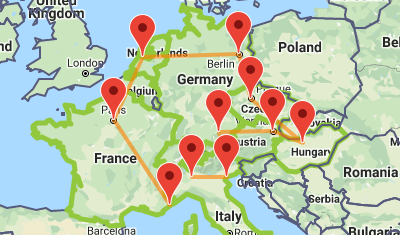
Click here or on the map to view this route in our Trip Planner.
You can adjust it in any way you want, and we'll show you the recommended Eurail Pass for your trip.
Cities visited in this trip:
1. milan, italy.
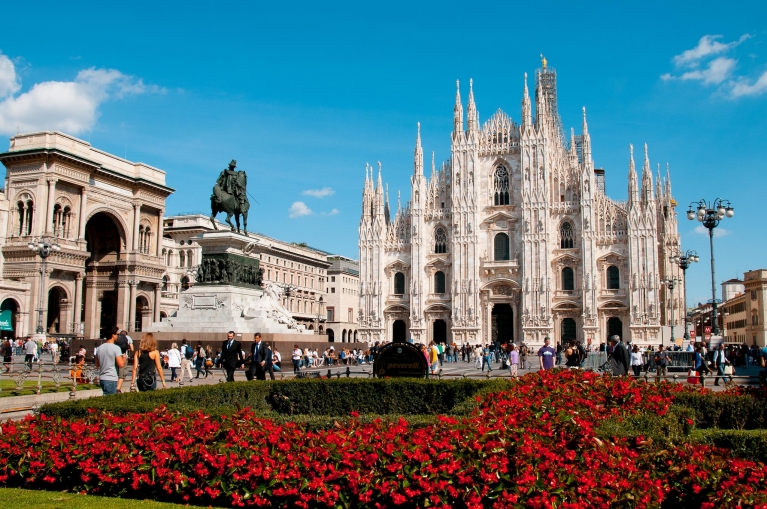
Visit young and cosmopolitan Milan, the finest place for Italian cuisine, coffee, and of course, fashion!
Don't miss: the Cathedral Square and its entertaining surroundings. View the city from the cathedral roof.
Got more time? Watch a soccer game at the San Siro stadium. Or take a day trip to celeb hotspot Lake Como.
Video train route Milan - Venice
2. Venice, Italy
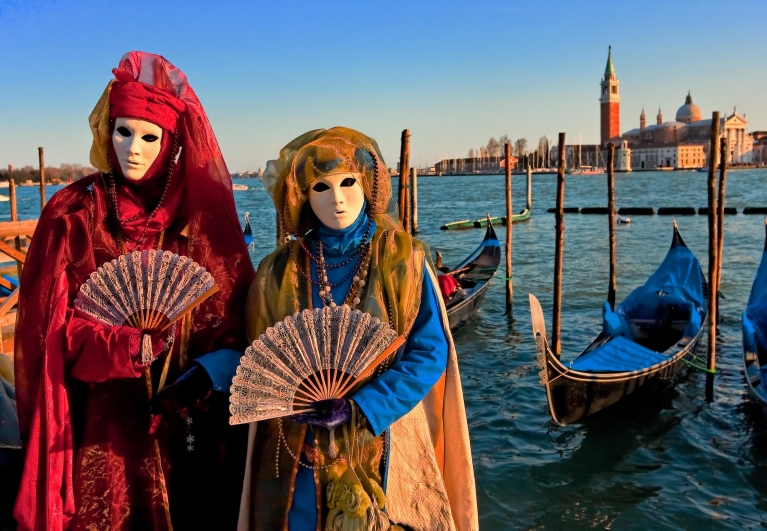
Arrive by train in Venice to be greeted by romantic views of canals, bridges, and boats.
Don’t miss: riding a gondola ferry ( traghetto ) across the Grand Canal or splash out on your own private ride.
Got more time? Stroll from Rialto Bridge to the squares of San Polo for markets and an afternoon spritz.

3. Munich, Germany
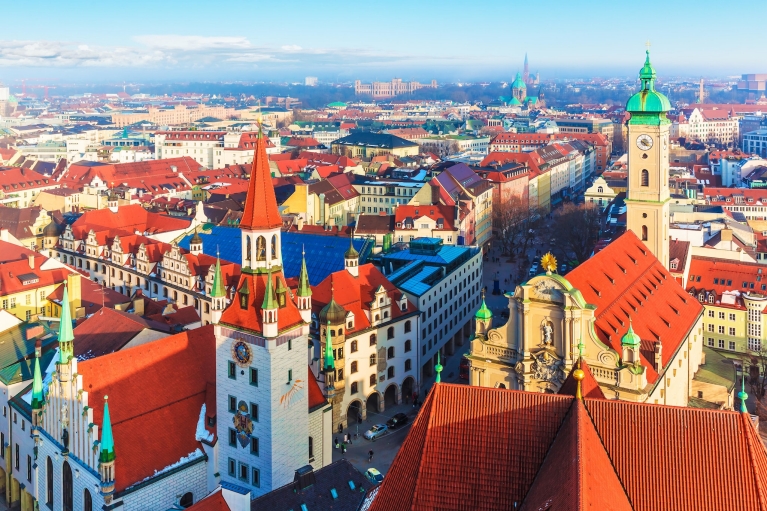
The Bavarian blockbuster, Munich. Expect a warm welcome, impressive architecture, and culture galore.
Don't miss: the Kunstareal district . Full of world-class museums and galleries, it has something for everyone.
Got more time? Enjoy a cold drink at the Hofbräuhaus beerhall after a stroll through the Englischer Garten .
4. Vienna, Austria
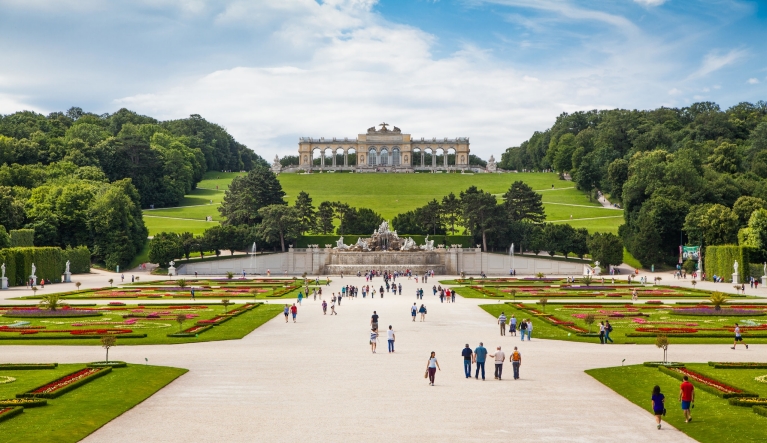
Follow in the footsteps of Mozart and Beethoven and visit Vienna, where you’re never short on entertainment.
Don't miss: the Schönbrunn Palace with its extensive gardens, sculptures, and truly decadent interior.
Got more time? Get your thrills at the Vienna Prater , the world’s oldest amusement park.
Video train route Vienna - Budapest
5. Budapest, Hungary
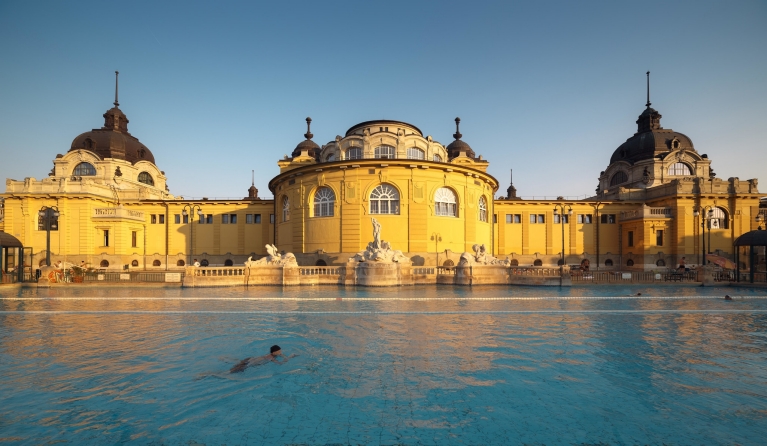
Explore the grand sights of Budapest. Check out Buda Castle by day, and the Chain Bridge by night.
Don't miss: the chance to unwind in this spa city. Take a dip in the Gellért or Széchenyi thermal baths .
Got more time? Take the train to Balatonakarattya and around Lake Balaton to see rural Hungarian life.
6. Prague, Czech Republic
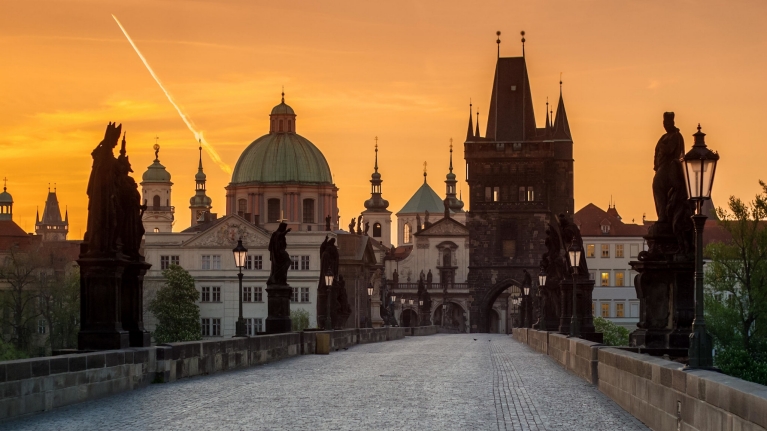
From medieval cobbled streets to rooftop restaurants, the magic of Prague will charm you.
Don't miss: the astronomical clock ( orloj ) striking the hour. While you’re there, explore the Old Town Square .
Got more time? Wander from the saintly statues of Charles Bridge up to the splendid castle complex.
7. Berlin, Germany

Historic sites and a vibrant social scene await you in Germany's dynamic, ever-changing capital.
Don't miss: hearing stories at the poignant Berlin Wall Memorial or graffiti-decorated East Side Gallery .
Got more time? Head to the Grunewald for a stroll through woodland or a swim in its freshwater lakes.
8. Amsterdam, Netherlands
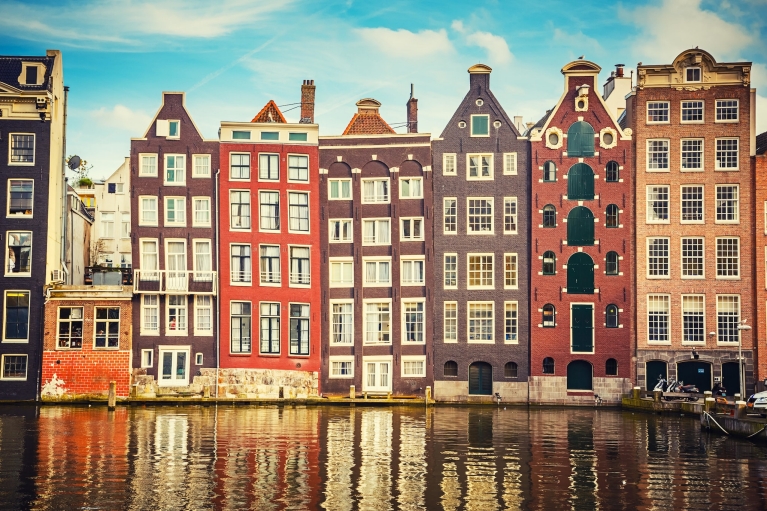
The "Dam". Tolerant, open-minded, and a labyrinth of narrow streets and canals. Expect the unexpected.
Must-do: Try a canal cruise for a different perspective of the city. If you prefer dry land, rent a bike!
Got more time? Get intellectual and check Dutch glory at the Rijksmuseum, then chill over a coffee or two...
9. Paris, France

Enjoy the good life in Paris with a glass of red Bordeaux wine while resting your feet by the River Seine.
Don't miss: standing before the Eiffel Tower in one of the most Instagram-worthy moments of your life.
Got more time? Check out art classics (think Mona Lisa) at the Louvre or modern art at the Centre Pompidou .
10. Nice, France
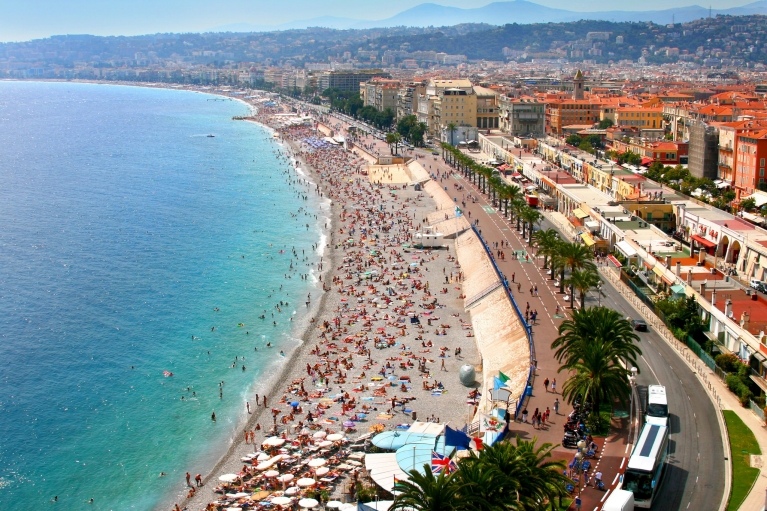
It’s time for you to relax and take it easy in the capital of the French Riviera. Nice!
Don't miss: soaking up the sun on the Promenade des Anglais with its cafés, palm trees, and pebble beach.
Got more time? It’s just 7 minutes to sandy beaches in Villefranche-sur-Mer , and 20 to Monte Carlo casino .
If you’re heading back to Milan, change trains in Ventimiglia to get there in just over 5 hours.
Is this itinerary for me?
This itinerary is designed to give you an example of what you can do with a Eurail train pass. It's made for independent travelers who want to shape their own Europe itinerary. Three weeks gives you enough time to spend 2 nights in all these famous cities. In each destination, you have the freedom to make your own plans. The best train pass to use to follow this itinerary is the Eurail Global Pass . It gives you the luxury and flexibility to travel by train in all these countries on any day of your trip. Want to spend more time in one city and less in another? With Eurail, that's not a problem! Simply choose a Pass with a longer validity period.
Change of currency
You cannot change the currency once you have a Pass in your cart. Remove the Pass, and then change the currency on the website header.
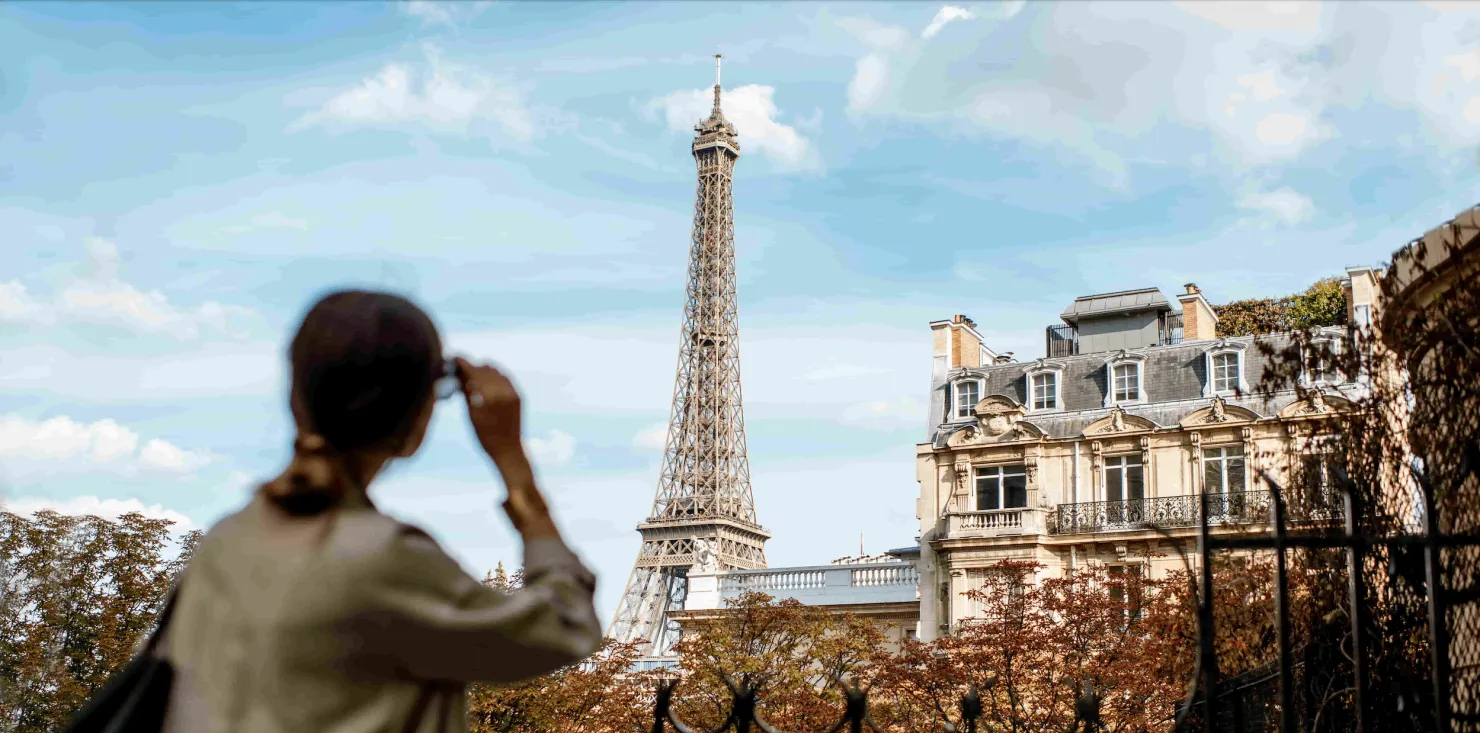
That's how you plan a perfect trip

Top destinations

Amalfi Coast
Best tours of europe.

Start Planning with Triptile
.png)
Easy Trip Builder
.png)
Book All in One Place
Flexible Modifications
Travel with us.

The Best 3-week Backpacking Route in Europe – using Interrail!
Are you planning a 3-week backpacking route through Europe using Interrail? Amazing! It’s such a great experience and you’ll have the best time. We’re here to help you plan your 3 weeks in Europe and how using interrail can make the journey a breeze! Read on to find out more about planning a 3 week interrail route in Europe.
This post may contain affiliate links. We will receive a small commission if you make a purchase using these links, at no additional cost to you .
How to Plan a 3-week Backpacking Route with Interrail
Table of Contents (Skip to a section!)
Europe is a continent full of history, amazing culture, multiple languages and a variety of countries. With so many countries, it can be hard to figure out where to start your 3 week interrail route!
In this travel guide, we’ll show you a 3-week Backpacking Route through gorgeous Europe and which cities are best to visit on a first-time trip. Of course, you can mix this itinerary up to your preference, however, we think everyone will enjoy this interrail route.
As we’re born in the UK, we grew up visiting some of these countries with our families, exploring well-known towns and impressive buildings.
It wasn’t until we took our first weekend trip together that we suddenly realized how big Europe is and how much we wanted to explore our home continent. So we created our own 3 week interrail route and hit the road!
This 3-week Backpacking route is the perfect mix of cities, nature and beaches! As part of our planning process, we purchased our Interrail tickets, pre-booked our accommodation, and noted down which trains we wanted to take.
What is Interrailing in Europe?
Interrailing is a European train pass that gives you more freedom than the average train ticket. You can purchase global passes that cover 33 countries within Europe or specific passes for one country.
Depending on how much travelling you’re doing they can be a good way to save money. However, this is not always the case if you’re travelling less often on your trip. Have a browse on the Interrail website to see the range of passes.
Interrail vs Eurail
They are the same thing! The only difference between the tickets is what country your passport is from. As a European citizen, you can get the Interrail pass, if you’re from a country outside of Europe then Eurail is your option. It’s just the price that changes.
Find out about 8 Great Backpacking Tips you need to know before hitting the road!
The first step – Do I need to plan a route before my trip?
If you’ve found our 3 week interrail route travel guide, you likely want to plan your route before starting your journey. It’s a great idea to at least have a rough plan for your trip, especially if it’s longer than 2 or 3 weeks.
There are over 40 countries in Europe , so it’s going to be a hard decision when figuring out which countries to travel to
Interrail passes are designed to make your trip flexible. You can book hostels on the day of arriving at a new destination, you can meet friends and they will take you somewhere new.
There are benefits to being flexible on a trip! When it comes to regions like South East Asia it’s popular to book accommodation within a day or two of the stay because there’s not much worry about the price and availability.
Why it’s good to plan your interrail route:
- Europe has higher prices, it can be more expensive to be flexible
- Travelling in high season means the good hostels will sell out
- You may miss the train to a destination on your bucket list
- Saves time on your trip worrying about travel plans
Even if you prefer to book a flight and go with the flow it’s a good idea to have a rough 3 week interrail route to start your journey.

Helpful Tips for a 3 Week Interrail Route
- 💤 Hotels – Book advance on Booking.com !
- 🛌 Hostels – Book advance on Hostelworld !
- Check prices for buses on Busbud , before using a day on your interrail pass!
- Here’s 8 Great Tips on Backpacking Europe you need to check out!
3-Week Backpacking Route using Interrail
If you’re struggling to create the best interrail 3 week route, you can follow this guide for a perfect trip with lots of variation! Here’s the countries we’ll take you to on in this Europe backpacking itinerary.
Countries: Poland – Germany – Czech Republic – Austria – Slovenia – Croatia Interrail Pass : 5 days within 15 days Interrail pass
This itinerary is based on our experience, so we’ll give you some tips along the way. We started with a northern destination in Eastern Europe and worked our way down to the south. This worked out amazing because we could feel the weather getting warmer as we travelled south on the trains.
Day 1 – 3 | Warsaw
Start your 3 week Europe backpacking route in Poland – an underrated country in Europe!
Warsaw is the capital of Poland and also the largest city! When it comes to Poland, most travellers visit Krakow , but Warsaw is the perfect place to start your interrail route as you can continue into Germany!
There are lots of things to do in Warsaw from museums to parks and trying Polish cuisine. The historic city has a beautiful Old Town and Łazienki Park is a great spot for a picnic .
When we visited Warsaw, it rained and stormed for a whole day, but it didn’t stop us from enjoying what the city has to offer. We tried pierogis for the first time and fell in love, we’ve been eating them ever since this trip!
We’re glad it was our first stop and will definitely be visiting more of Poland in the future, especially for the delicious perogies! It’s a great way to start your interrail route.
Tip : Make sure you don’t visit Warsaw on a Monday or Tuesday because the museums may be closed.

Best Things To Do in Warsaw
- Explore the Old Town
- Check out the museums
- Visit the Museum World of Illusion – find out more here!
- Watch a Chopin Concert in the Old Town
- Wander around Łazienki Park
- Try Polish Cuisine (pierogies)
Where to stay in Warsaw for Backpackers
- Chillout Hostel € – In the centre of Warsaw in a Pre-war tenement house – Find on Booking.com here !
- Oki Doki Old Town Hostel Warsaw € – Mixed and private rooms in the heart of Warsaw – Book your stay here !
- Safestay Warsaw Old Town € – A perfect hostel for backpackers – Book on HostelWorld here !
Day 3 – 6 | Berlin
The capital city of Germany is a great place to visit on any European adventure! It’s perfect for a city break or if you’re stopping by on a backpacking trip. The city has amazing culture, booming nightlife, iconic monuments and tasty cuisine. It’s easy to fall in love with Berlin.
Make sure to visit Tempelhofer Feld to experience another side of Berlin! It was once an airport, but it’s now a massive field to explore. You will find many Berlin locals rollerskating down the old airstrips.
Berlin is a must-visit on your 3 week interrail route as there’s so much to do, it’s a backpacker heaven. The prices aren’t too bad either, although they’re more expensive than in Poland. Try some currywurst, walk along the old Berlin wall and relax on the river Spree. Berlin will always have a place in our hearts!
Another reason to visit Berlin is for it’s amazing vegan food scene. It’s one of the best vegan-friendly cities in Europe and the options here make it so easy to travel as a vegan .

Best Things To Do in Berlin
- Visit Brandenburg Gate
- Eat the best German food
- Visit the Reichstag – Plenary Chamber, Dome & Government District Tour
- Go thrift shopping!
- Explore Potsdamer Platz
- Go up the TV Tower – Find tickets online here !
- Find Checkpoint Charlie
- Explore the city by boat on a river tour !
Where to stay in Berlin for Backpackers
- Circus Hostel € – A beautiful hostel in Rosenthaler Platz – Find on Hostelworld here !
- MEININGER Berlin East Side Gallery € – The perfect base for exploring Berlin’s highlights, also has a huge common area – Find here on Hostelworld !
- St Christopher’s Berlin Mitte € – A sociable hostel in the heart of Berlin – Find here on Hostelworld !
Wolfsburg – Day Trip from Berlin
Located west of Berlin is a city named Wolfsburg. It isn’t a top-rated stop on a European Itinerary as you don’t need long to enjoy its small city.
However, it’s known as the headquarters for the German brand Volkswagen . It’s also home to the Autostad, an automobile-themed park with a classic car museum and driving track. The AutoMuseum showcases Volkswagen models and prototypes, which is amazing if you’re a Volkswagen fan like Dan.
It’s only a 1-hour train journey away from Berlin, and it’s the perfect way to explore a new German city. If you don’t fancy visiting a car museum, spend the extra day in Berlin instead.

Day 6 | Dresden – Interrail Stopover
Dresden is another wonderful city in Germany. Filled with spectacular architectural buildings, Dresden stands out for its rich history.
The Zwinger , an important building with attractive gardens, is one of the city’s highlights. As we were only there for a day, we made sure to gaze at all of these grand buildings.
Germany is also known for its great beer gardens, which we took the time to enjoy!
We chose to visit Dresden after we realised our train from Berlin to Prague passed through. We spend most of the day here, lugging around our backpacks and resting in the sun. It was awesome to explore an extra city on our travels, so different to Berlin!

💤 Hotels – Book advance on Booking.com ! 🛌 Hostels – Book advance on Hostelworld !
Day 6 – 9 | Prague
Prague is the capital of the Czech Republic and there are many monuments to see throughout this cobblestoned city. It’s the perfect city for your 3 week backpacking interrail itinerary.
Charles Bridge is one of Prague’s astounding things to do and you can also climb to the top of Petrin Tower to overlook the city. Prague was one of the most affordable destinations on our trip, as long as you avoid eating in tourist areas.
Browsing the old town of Prague and finding all of the cathedrals will give you all the European vibes. You can’t leave the city without trying a Trdelník . It’s a sweet pastry often called a chimney cake!
Prague was one of the destinations that inspired our Interrail adventure because we almost chose to go here on a previous trip. It was one of the top destinations on our list! After looking at a few pictures, you will know what we mean!
Best Things To Do in Prague
- Climb up Petrin Tower
- Go on a River Night Cruise
- Try a Czech Beer
- Walk over Charles Bridge
- Admire Prague Castle ( Find ticket prices online here )!
- Indulge in a Medieval Dinner with Unlimited Drinks
Where to stay in Prague for Backpackers
- Prague Dream Hostel € – The perfect place to meet other travellers in a cosy hostel – Find them on Hostelworld here !
- Hostel One Home € – Close to the train station and main square – Find them on Hostelworld here !

Day 9 – 12 | Vienna
Next up on this 3 week interrail route is Vienna – Austria’s capital city! Austria is a landlocked German-speaking country. Home to part of the alps and famous for its palaces, buildings and castles.
Vienna is well known for its fascinating buildings and opera! Unfortunately, we are not that interested in opera so we opted for roaming the streets in search of museums.
We originally booked accommodation in the centre of Vienna, but they cancelled on us days before. We were trying to stick to a strict budget, so ended up booking an apartment next to the Danube River ! It worked out amazing though, as it gave us the unknown opportunity to relax by the Danube and see a more local side of Vienna.
From Vienna, you can also visit Bratislava on a day trip, but we didn’t have time on our interrail 3 week route. There’s much more of Austria to see, but after a few days in the capital, we decided to head to Slovenia next. Here’s a few things to do in Vienna for 3 days.
Best Things To Do in Vienna
- Visit the Natural History Museum
- Admire St Stephens Cathedral
- See an impressive Vivaldi’s Four Seasons Concert in Karlskirche
- Watch a Mozart Concert at the Golden Hall
- Discover Belvedere Palace
- Take a day trip to Hallstatt & the Alpine Peaks

Where to stay in Vienna for Backpackers
- Wombat’s City Hostel Vienna Naschmarkt € – The best location in Vienna! – Find on Hostelworld here !
- Hostel Ruthensteiner Vienna € – Great for meeting other travellers in Vienna! – Find on Hostelworld here !
Check out our tips on backpacking Europe (especially if you’re on a budget!)
Day 12 – 14 | Lake Bled
We have to admit that Lake Bled is a place we never knew existed before researching travel routes. It has become very popular for backpackers to visit on their route through Europe as it connects a lot of major countries.
It was one of our favourite destinations on the trip , but at this point, we were craving nature because we had spent almost 10 days in cities. Lake Bled is a town in Slovenia close to the Austrian border and a short distance away from Ljubljana, the capital city.
Lake Bled is one beautiful blue lake with an island situated near the middle, many boats bring visitors to the island. Although you don’t need to spend long as it’s very small.
When you’re not following the trail around the lake, there are areas you can swim in and spots you can sunbathe. You can also try the famous Bled Cake, a creamy pastry dessert!
Next to the lake is a hill where you can experience tobogganing for a small cost. It feels like a mini rollercoaster and definitely worth doing to get your adrenaline rush. Just remember to break!
Once we saw the pictures of the lake, it was instantly on our European Bucket List. The photos and recommendations enticed us to explore for ourselves, and that’s what we love about reading travel blogs!

Best Things To Do in Lake Bled
- Visit Bled Island
- Ride the Toboggan
- Walk around Lake Bled
- Swim the swimming areas
- Visit Lake Bled Castle
- Indulge in Bled Cream Cake
- Hike to Mala Osojnica
Where to stay in Lake Bled for Backpackers
- Bled Hostel € – Great location in the centre of Bled – Find on Hostelworld!
- Penzion Zaka €-€€ – In the most relaxing spot in Bled – Find on Booking.com !
Day 14 | Ljubljana – Interrail Stopover
Ljubljana pronounced: loo·blee· aa ·nuh
We took a local train from Lake Bled to Ljubljana in the morning to spend the day before catching our night train. This meant we had to carry our backpacks around for the day, which is why it’s a great idea to pack light when backpacking!
Slovenia is a beautiful country, so it was amazing to explore two locations within the country. Although Ljubljana is a small cosy capital city, it’s praised for its green spaces! The buildings are mesmerising, and it was lovely to see so many people enjoying the sun by the river.
The key landmark of the city is the towering castle and one of the ways to reach it is by the Ljubljana Castle funicular . There is a view of all the orange-coloured buildings in Ljubljana.
Ljubljana is a lovely stopover on the way to Croatia! As hard as it was to say goodbye to Lake Bled, we were excited to see more of Slovenia during our short time in the country.

Best Things To Do in Ljubljana
- The Triple Bridge
- Ljubljana Castle
- Prešeren Square
- Tivoli Park
- Ljubljana Cathedral
- Ljubljana Central Market
Where to stay in Ljubljana for Backpackers
- Hostel Celica €-€€ – The trendiest hostel in Ljubljana – Find on Hostelworld !
- Apartments Maria €-€€ – The best location in Ljubljana – Find on Booking.com !
Overnight Train Ride to Split – 1 night
The best way to get from Zadar to Split on your 3 week interrail route is to catch an overnight train. They’re actually pretty comfy and you’ll wake up to views of the ocean when you arrive on the coast of Croatia.

Day 15 – 18 | Split
Now it’s time for the beach part of our Interrail trip, we couldn’t wait!
Split is the second-largest city in Croatia, and a popular location for backpackers! With the sun shining almost constantly in the summer and many sandy or rocky beaches, it’s easy to see why Split is so enjoyable.
On one of our days, we walked around Park Šuma Marjan searching for small isolated beaches, it was another one of our favourite days from our 3-week backpacking route!
There are many restaurants and ice cream shops to indulge in whilst wandering in the Croatian heat.
We had our first overnight train experience getting to Split, and when we arrived a local told us it’s easier and faster by bus, so we will remember that in the future!
The main reason we chose to go to Croatia was because of the magical pictures we saw of Krka National Park and Plitvice Lakes National Park.
We managed to make it to the stunning Krka National Park, but when we arrived it was extremely busy. The waterfalls were definitely impressive! The only area that wasn’t too busy was when we were swimming in the water.
The park’s trail was only one-way and because of this, it was full of many slow people. We don’t like to be too negative about places on here, but the truth is, this spot is just very popular! However Split is definitely worth a visit, and now onto our last location of the trip.

Best Things To Do in Split
- Diocletian’s Palace ( go on a Game of Thrones Tour! )
- Relax at the rocky beaches
- Head to Krka National Park
- Visit St.Duje Cathedral
- Walk along the promenade
- Go on an island-hopping Tour
- Cetina River Rafting with Cliff Jumping Tour
Where to stay in Split for Backpackers
- En Route Hostel € – best location & perfect for meeting travellers – Find on Hostelworld !
- Sweet Dreams (Old Town) €-€€ – walking distance to all the best spots in Split – Find on Booking.com !
Day 18 – 20 | Zadar
Zadar is another city along Croatia’s Dalmatian coast and about 2 hours away from Split. The historic Old Town and wonderful ruins are what makes Zadar worth visiting.
It’s less famous than Split and very different! If you decide to go from Split to Zadar, we recommended getting the bus , instead of a train as it will be a lot faster and it’s affordable. Find bus tickets here!
A lot like most of Croatia, Zadar is covered in orange topped buildings, which is so beautiful to see and also convenient for the heat. The city has also created a sea organ which is an architectural sound art object, it uses the power of the waves to create sounds. There is also a big solar-powered dance floor next to the sea organ.
Zadar came up on our radar after we saw a great priced flight back to our home country, UK. It was only a couple of hours away from Split and a good opportunity to explore another area in Croatia.
Best Things To Do in Zadar
- Find the Sea Organ
- Chill at the beaches
- Explore Old Town
- Jump off dive boards
- See the Church of St. Donatus
- Walk around the Roman Forum
- Go on a Day Trip to Plitvice Lakes
Where to stay in Zadar for Backpackers
- The Lazy Monkey Hostel & Apartments € – the perfect hostel for anyone – Find on Hostelworld !
- Unique Rooms €-€€ – great location in Zadar – Find on Booking.com !
So that’s the end of our 3-week backpacking route in Europe using interrail! We have a few more tips for you about Interrailing Europe in this travel guide.

3 Week Interrail Route Overview
For most of our intercity trips we used our interrail pass! We paid separately for the train return to Wolfsburg and our bus from Split to Zadar.
As you can see we stopped off at many capital cities along this journey. This was our first time visiting all of these countries and it’s lovely to discover the capital of a city before finding the hidden gems.
Whilst we now love finding off-the-beaten-track places and pushing ourselves to discover the unknown more, we also enjoy learning about the capital.
It can be hard deciding where to begin your Interrail trip, but in the end, it’s really about your experience and how you spend your time. Throughout our travels, we decided to take it easy in Austria as our accommodation was near the Danube river and outside of the central city.
Catching the sun on a man-made beach whilst taking frequent dips into the river instead of rushing around in the city is something we will remember forever! Don’t get us wrong, we absolutely love cities.
When travelling for 3 weeks in Europe by interrail you have to give yourself a break because it can get tiring walking thousands of steps a day and you won’t be appreciating your adventure as much.

3 Week Interrail Route Breakdown
To summarise our trip we visited 10 locations in 6 countries and caught many modes of transport.
- Poland – Warsaw (2 days)
- Germany – Berlin – (3 days)
- Germany – Wolfsburg (1 day-trip)
- Germany – Dresden (1 day-trip)
- Czech R – Prague (3 days)
- Austria – Vienna (3 days)
- Slovenia – Lake Bled (2 days)
- Slovenia – Ljubljana (1 day-trip)
- Croatia – Split (3 days)
- Croatia – Zadar (2 days)
Immediately after the trip, we spoke about what we enjoyed the most and what we would change or recommend to someone else doing this route.
Ultimately, Lake Bled was our favourite location . We should have spent more days there, but cut ourselves short with only 2 days as we decided to see Ljubljana (which we don’t regret). Near Lake Bled there were amazing parks to explore such as Triglav National Park that we didn’t get to see.
We love being surrounded by mountains with fresh air and nature. Our Airbnb also offered rental bikes for €4, which is amazing! We didn’t get the chance to use them, but now we know for the future. If we were to plan this trip again, we would probably lose a day in Vienna in order to spend more time in Lake Bled.
Although Lake Bled was our favourite destination, Germany was actually the country we wanted to go back to the most. Germany has a great vibe and draws us in to want to explore more. Its cities have such a big energy and there is so much to do throughout the country, we can’t wait to visit again.
Interrailing in Europe can get quite expensive. It’s best to save enough money for your trip , so you can have the best time away!
3 Week Interrail Route Conclusion
Slovenia was definitely the country that surprised us the most as we didn’t realise how beautiful it was going to be. Even going past on the trains, we were mesmerised by the journey from Vienna to Lake Bled, although a lot of that journey was Austria too!
Another one of our favourite destinations was Prague. We tried amazing Czech food in underground restaurants and it’s definitely a walking city which we love!
Out of the destinations we visited, our top 3 recommendations are Berlin, Prague, Lake Bled . (We also recommend Budapest, but we didn’t visit here on this trip)
We are looking forward to visiting other regions of all 6 countries we visited. You can never complete a country, as there’s always so much to do!

Check out our – 8 Great Trips for Backpacking Europe Better !
Other 3 Week Interrail Routes in Europe
- Amsterdam 3 nights – Berlin 3 nights – Prague – 3 nights – Vienna – 3 nights – Salzburg 2 nights – Lake Bled 3 nights – Ljubljana 1 night – Budapest 3 nights
- Paris 3 nights – Amsterdam 3 nights – Berlin 3 nights – Prague 3 nights – Vienna 3 nights – Bratislava 2 nights – Budapest 3 nights
- Berlin 3 nights – Warsaw 2 nights – Krakow 3 nights – Prague 3 nights – Vienna 3 nights – Lake Bled 3 nights – Split 3 nights
- Amsterdam 3 nights – Berlin 3 nights – Prague 3 nights – Vienna 3 nights – Lake Bled 2 nights – Venice 3 nights – Milan 2 nights – Lake Como 2 nights
Tip : Sometimes Interrail have discounts on their passes if you book them before March 31st!
That’s the end of our 3 Week Backpacking Route using Interail! Enjoy your trip to Europe and if you need any more help planning – send us a message on Instagram (@thesunrisedreamers) or leave a comment below!
LIKE THIS POST? PIN IT FOR LATER & SHARE IT WITH OTHERS!

Amy & Dan are the founders of The Sunrise Dreamers. They are travellers from the UK who have been on the road since 2017 whilst living in places like England, Canada, Thailand and the Canary Islands. They share their knowledge of travelling the world with detailed travel guides and tips. They're experts in vegan travel and show their audience how to travel on a budget.
Similar Posts

The Best 7 Day Montenegro and Bosnia & Herzegovina Itinerary (2024)
If you’re looking for a 7 day itinerary for Montenegro and Bosnia & Herzegovina, you’re in the right place! In…

12+ Best Vegan Restaurants in Istanbul, Türkiye (2024)
Are you looking for the best vegan restaurants in Istanbul? In this guide, we’ll show you the best places to…

2 day Brasov Itinerary: Best Things To Do In Brasov
Planning a 2 day Brasov itinerary? In this in-depth travel guide, we’ll show you all the best things to do…

2 Week Cambodia Itinerary: Best Places to Visit in Cambodia (2024)
Planning a 2 week Cambodia Itinerary? We’re here to help you plan the best 2 weeks in Cambodia and show…

20 Best Hikes in the UK: Beautiful UK Hiking Trails
Looking for the best hikes in the UK? In this guide, we’ll show you incredible UK hiking trails from popular…

2 Day Plovdiv Itinerary: Best Things To Do in Plovdiv (2024)
Planning a 2 day Plovdiv Itinerary? Welcome to our Plovdiv travel guide! We’ll show you the best things to do…
This itinerary looks perfect for so many travelers! Sounds so easy to get around and get a taste of the main cities too
Thanks Tess! Yes, we love that about Europe! 🙂
That sounds like a dream trip. Backpacking Europe is my dream and I can’t wait to start prepping for it. Thank you for this amazing post, it is so inspiring and informative.
Oh wow thank you! 🙂 It will be so exciting when you begin your adventure, Europe is magical!
Leave a Reply Cancel reply
Your email address will not be published. Required fields are marked *
Save my name, email, and website in this browser for the next time I comment.

How to Plan an Epic 2 Week Europe Trip (+ Europe Itinerary Ideas!)
Ready to plan a 2 week Europe trip but not quite sure where to start?
We want to help!
Whether it’s your first trip to Europe or your tenth, there’s something simultaneously overwhelming and exhilarating about planning a trip through multiple countries that–for us and most of the readers of this blog post–lie across an ocean from home.
I’ll never forget planning our first 2 week Europe itinerary: I pored over flight schedules, bucket lists, budgets, and maps for months, desperate to pull together the ultimate Europe trip.
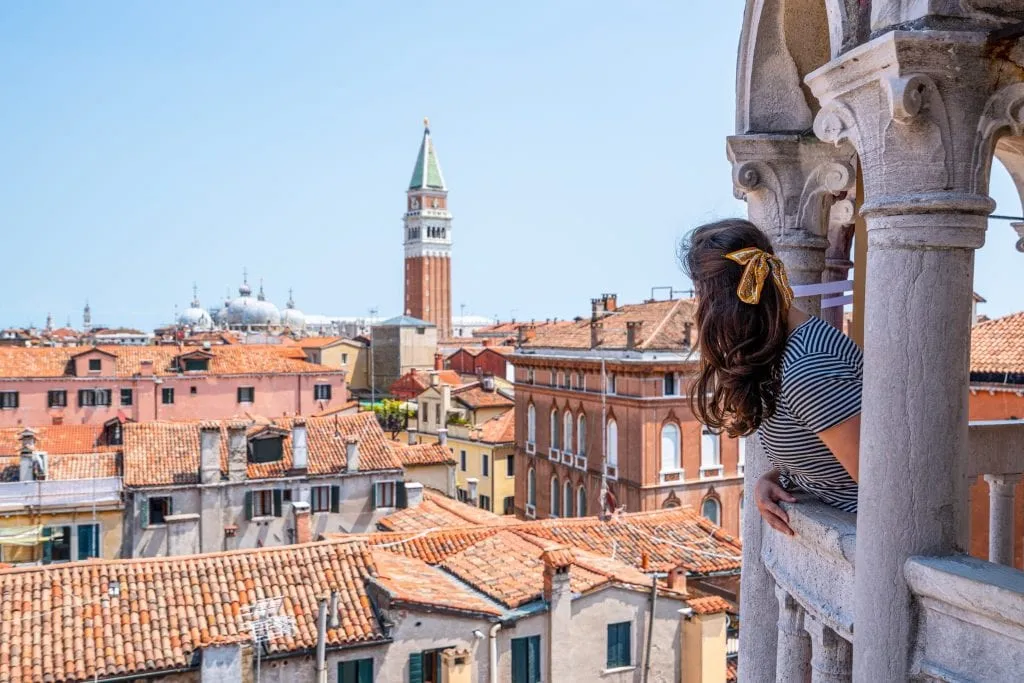
Some links in this post may be affiliate links. If you make a purchase through one of these links, we may earn a small commission at no extra cost to you. Please see our disclosure policy for more detail.
There were many, many lists involved in planning that first trip, and after months of planning, I emerged with an eclectic but incredible itinerary that kicked our love of travel into high gear.
In the summer of 2015, Jeremy and I spent a little over 2 weeks in Europe exploring Krakow , Budapest , Plitvice Lakes National Park , Zadar , Dublin , and the Cliffs of Moher (I told you it was eclectic!).
We’ve now cumulatively spent years of our lives traveling in Europe, falling in love with world-famous cities and less iconic locations alike, and there’s absolutely nothing we like better than helping people plan their own unforgettable adventures.
Over the years, we’ve explored the continent in almost every way possible, from backpacking Europe on a budget for 2 weeks to checking into luxury hotels to playing tour guide for family and friends to finally spending more than a year living in Lisbon, Portugal !
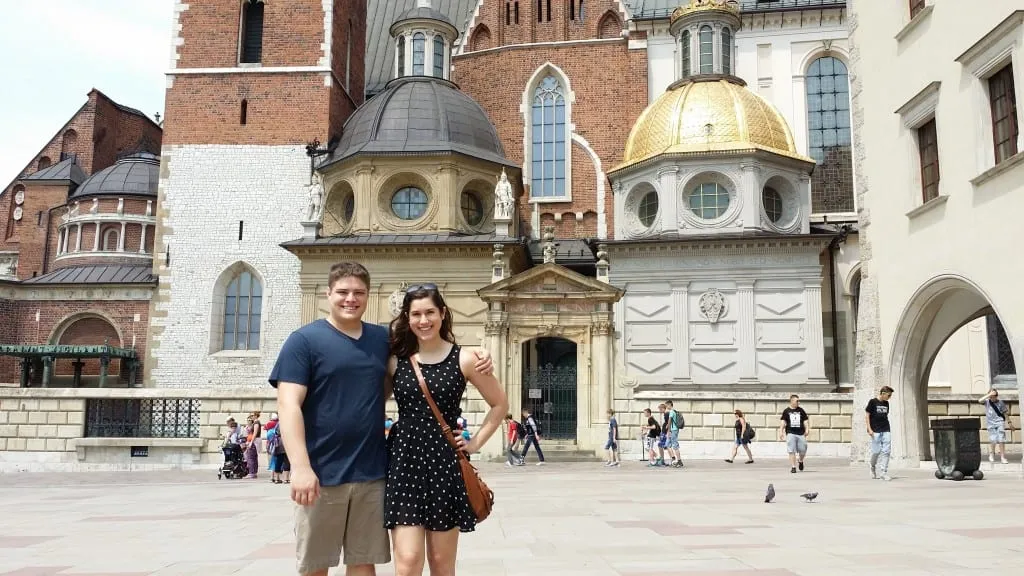
We’ve put together this 2 week Europe itinerary guide to help you plan your trip–here’s what you need to know before you go.
(Also, yes–this is an incredibly long blog post! We recommend using the table of contents right below this paragraph to help you navigate to different sections depending on what you’re hoping to read first.)
Table of Contents
How to Use This 2 Week Europe Trip Guide
Exciting 2 week europe itinerary ideas, how to get around during 2 weeks in europe, important tips for planning a 2 week europe trip, faq for spending 2 weeks in europe, what to pack for 2 weeks in europe, read more about visiting europe.
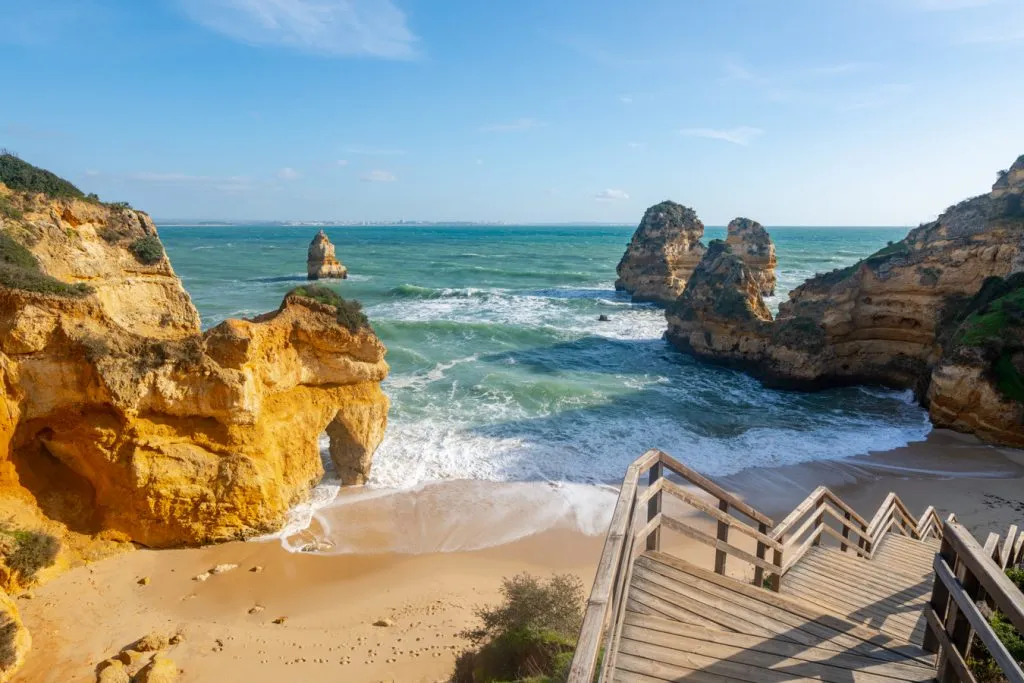
This 2 week Europe trip guide is designed for someone hoping to see the highlights of a few different European destinations, spread across multiple countries, in only a couple of weeks.
We’ve primarily written it for someone planning their first trip to Europe, but if this is your second trip, third trip, or beyond, hopefully, we have some interesting ideas and tips for you, too!
And, of course, given that Europe is home to more than 50 countries and is roughly the same size as the USA, no 2 weeks in Europe could hope to cover the entire continent or all of its numerous and distinct cultures, languages, and histories.
For ease of communication, we’ll talk in general terms about traveling in Europe here, but once you pick your itinerary, of course, you’ll want to follow up with further research on the specific locations you’ll be visiting.

And, once you’re further along in your planning process, we’d love to help you with some of that planning here on Our Escape Clause, too!
We’ll link to relevant blog posts throughout this travel guide, but given the hundreds of posts we have on the site, we won’t be able to link them all.
You can use our destinations page or the search bar on the top right of the page (on desktop) or at the top of the pop-out menu (on mobile) to find our content about various specific destinations across Europe or general travel tips.
For example, a few of our most popular guides that might come in handy next include our guide to traveling Europe by train , our 75 best Europe travel tips , and our (biased) guide to the best cities in Europe .
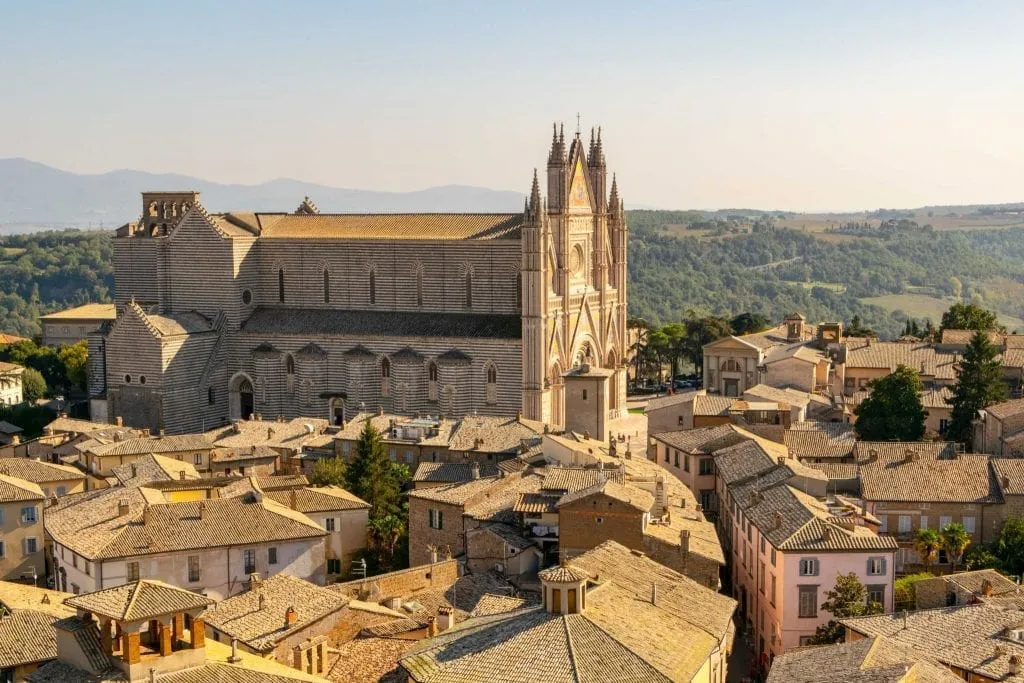
The number of possible 2 week Europe itinerary ideas is truly infinite–just look at the odd itinerary that I cobbled together for us in 2015 as an example !
However, the sample itineraries for Europe outlined below should give you a good idea of what you can accomplish with around 14 days in Europe .
I truly struggled to narrow down these ideas–I could name 10 more excellent 2 week Europe trips in an instant, and still feel like I was leaving so much on the table.
I aimed to keep these mostly focused on destinations that are popular for first-time visitors to Europe, with just a couple of slight curve balls thrown in.

The Classic: London, Paris, Rome
As three of the world’s most beloved and celebrated cities, you can’t go wrong with splitting your 2 weeks in Europe between London, Paris, and Rome.
As the capital of an English-speaking country and home to an enormous airport hub, London makes logistical sense for a first trip to Europe hailing from North America–and, of course, it’s a truly fascinating city.
Visit Buckingham Palace and Hyde Park, stroll through Notting Hill, snap photos of Big Ben, check out the Tower Bridge and the Tower of London , visit the Wizarding World of Harry Potter, stop by Piccadilly Circus, ride the London Eye , and tour the British Museum.
… And that’s just to get you started !
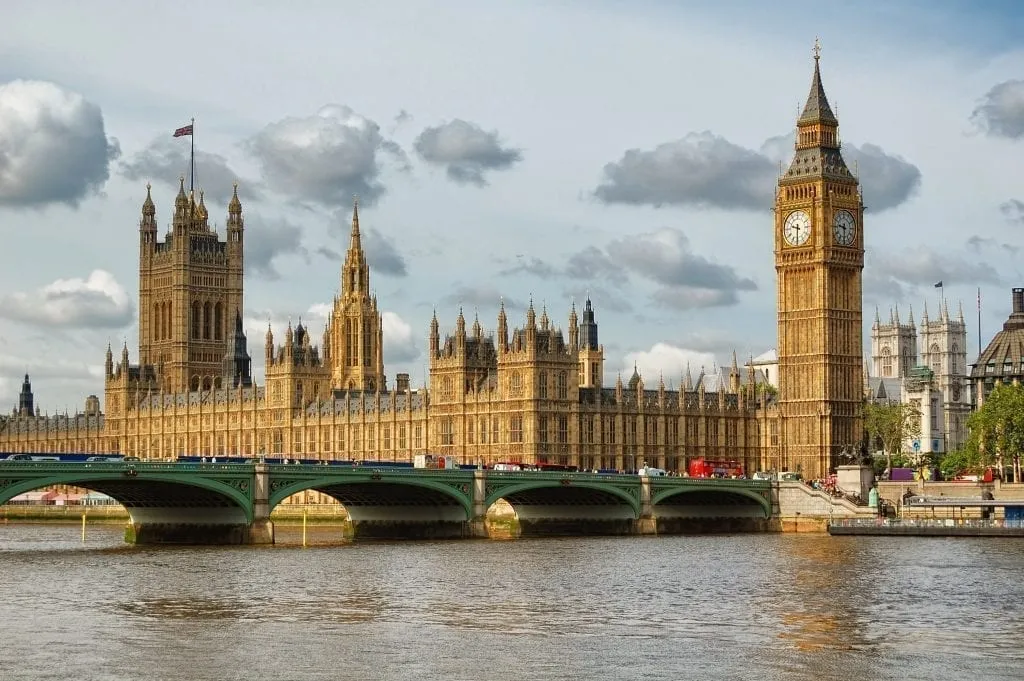
The City of Lights is one of our favorite cities in the world and was also the first place we visited on our very first trip to Europe (we spent a week there and then planned our 2 week Europe trip outlined in the introduction of this blog post the following year).
Since then, we haven’t been able to stop going back, and believe that it’s an excellent addition to any 2 week Europe itinerary!
While you’re in Paris , visit the Eiffel Tower, marvel at the beauty of Sainte-Chapelle, tour the Louvre and the Musee d’Orsay, stroll the picturesque streets of Montmartre and the Latin Quarter, visit the Palais Garnier, discover hidden passages and tiny cafes, and soak up every minute of that Parisian charm.
Our full guide to planning your first trip to Paris can help you get started!

Ah, Rome –if Paris is the first European city we fell in love with, Rome is probably our deepest love on the continent.
From wonders of Ancient Rome like the Colosseum, Roman Forum, and Pantheon to more recent additions like the Vatican Museums , Trevi Fountain, and winding cobblestone streets of Trastevere , exploring Rome is a captivating, engaging experience that we can’t recommend highly enough.
And, of course, you couldn’t ask for a better cuisine to savor during your 2 weeks in Europe: Rome is home to some of the best pasta in all of Italy!

Southern Europe Charm: Madrid, Rome, Amalfi Coast
Want your 2 weeks in Europe to focus on a delightful combination of history, food, and sunshine?
Head directly to Spain and Italy!
While Barcelona gets all the love (and a lot of the crowds), we’re personally smitten with the Spanish capital of Madrid… and excellent flight deals from North America make it almost irresistible on a 2 week Europe itinerary.
With a few days in Madrid , you can admire world-class art in the Prado, soak in Spanish culture with a stroll through Retiro Park, eat all the tapas and churros con chocolate you can get your hands on, tour the Royal Palace , check out an Egyptian temple, and take day trips to fairytale towns like Toledo and Segovia.
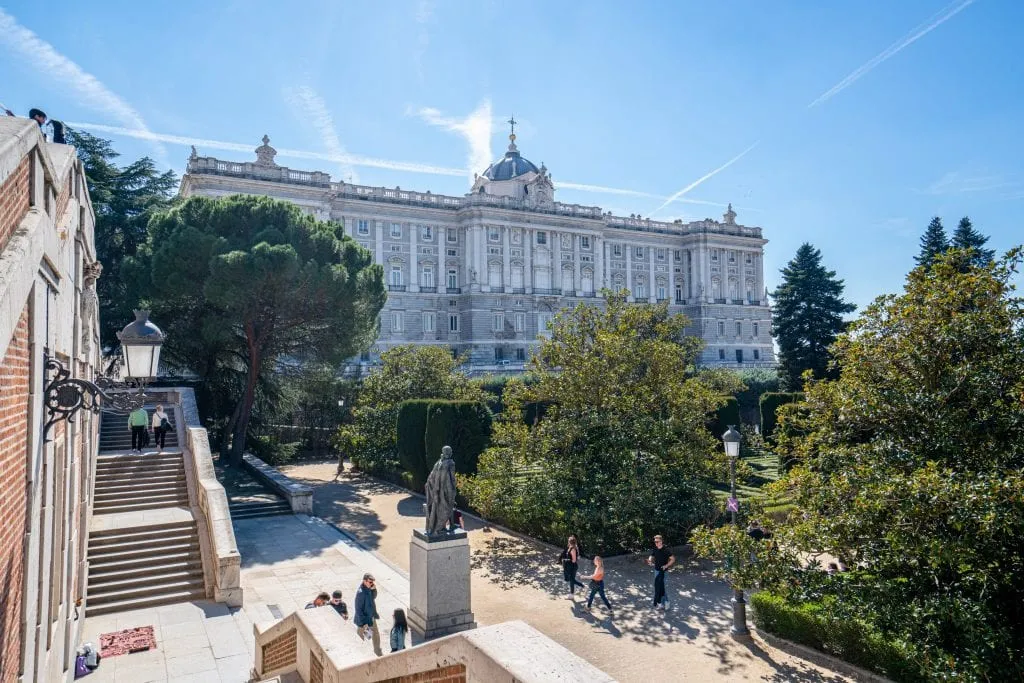
I described Rome in the first Europe itinerary on this list, so I won’t repeat myself here, but as I sit typing this Europe travel blog post out in a Rome apartment while dreaming of the carbonara I’ll eat for dinner tonight, all I can say is: you won’t regret coming to Rome (and scroll up for more details).
And, while I detailed some of Rome’s highlights above, let me also say… don’t forget to get off the beaten path in the Eternal City , either!
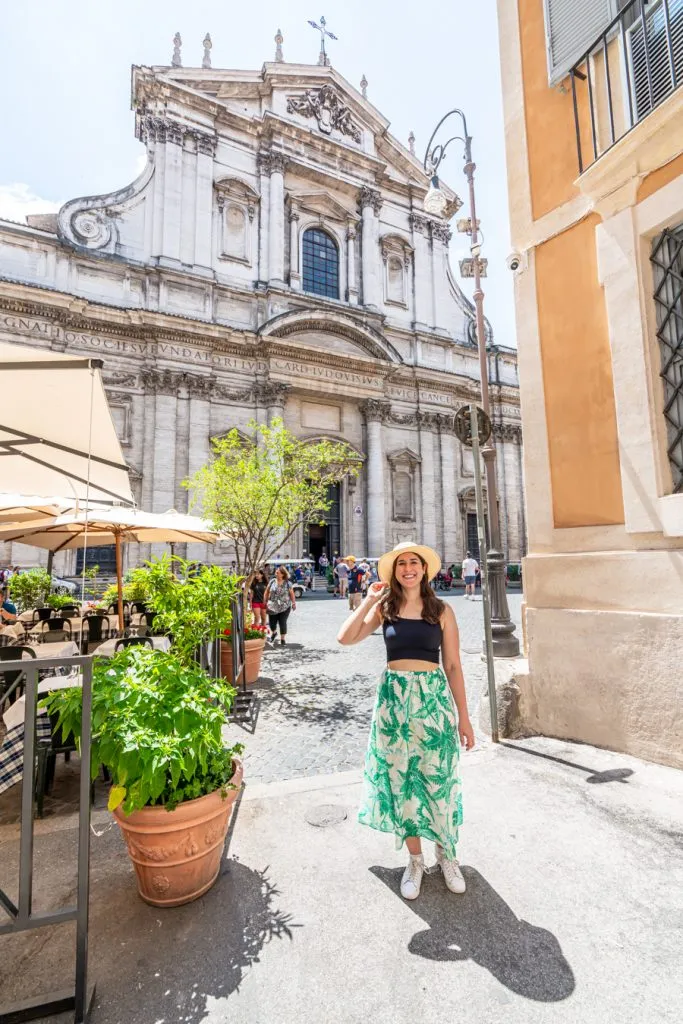
Amalfi Coast
The famed Amalfi Coast , with its dramatic cliffs, chic villages like Positano, delicious lemons, and jaw-droppingly beautiful hikes like the Path of the Gods, is a fabulous conclusion to any 2 week Europe trip–where better to relax than one of the most beautiful coastlines in the world?
While you’re there, be sure to make room for plenty of day trips!
Iconic locations like Capri and Pompeii , as well as less-popular but equally amazing spots like Ischia, Herculaneum , and Procida, are all at your fingertips when staying on the Amalfi Coast.
(Also, if you like page-turning novels about friendship and Italy, I highly recommend reading Elena Ferrante’s My Brilliant Friend series before coming or while visiting Europe).
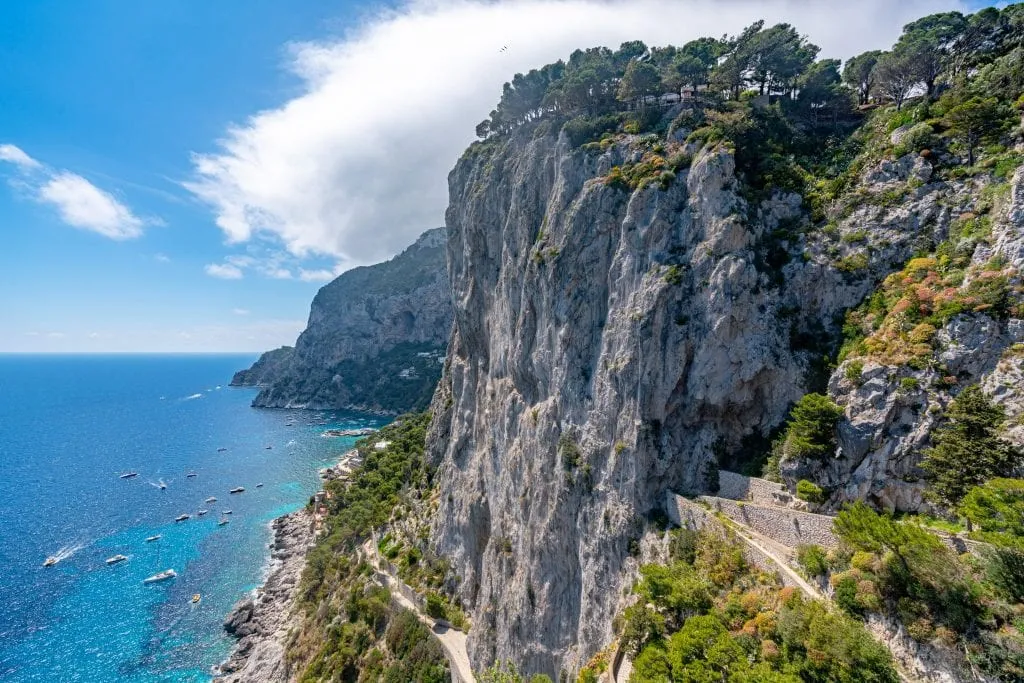
Regal Central Europe: Prague, Vienna, Budapest
Sweeping boulevards, dramatic architecture, beautiful coffeehouses, and tasty comfort food: a trip to Central Europe is an absolute delight.
In my opinion, this region truly shines during the winter months when Christmas markets are in full swing and the hearty cuisine keeps you warm from the inside out.
I’ll try to keep this section quite brief, as I’ve already written a detailed Central Europe itinerary here , but suffice it to say, we love it.
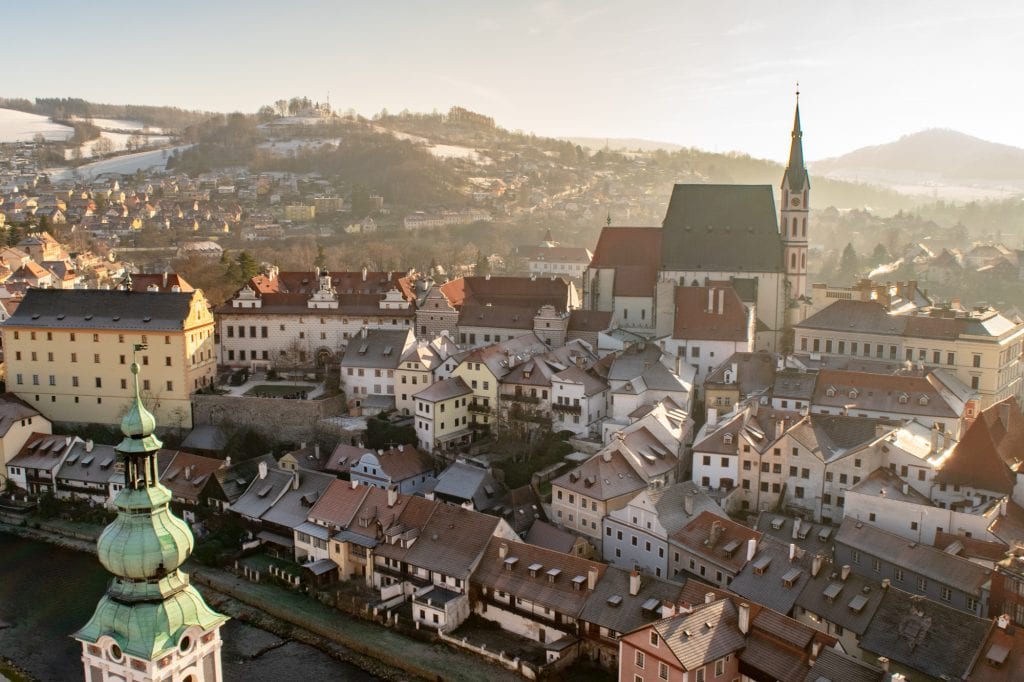
Known as the City of a Hundred Spires (and also for the fact that beer is cheaper than water here–true story, at least when it comes to pricey bottled water at restaurants), Prague is easily in the running for the most beautiful city in Europe.
The beauty of Prague Castle, St. Vitus Cathedral, the famed Charles Bridge, and Prague’s well-known astronomical clock will all draw you in.
If you have enough time, consider adding a day trip to a smaller Czech town like gorgeous Český Krumlov as well!
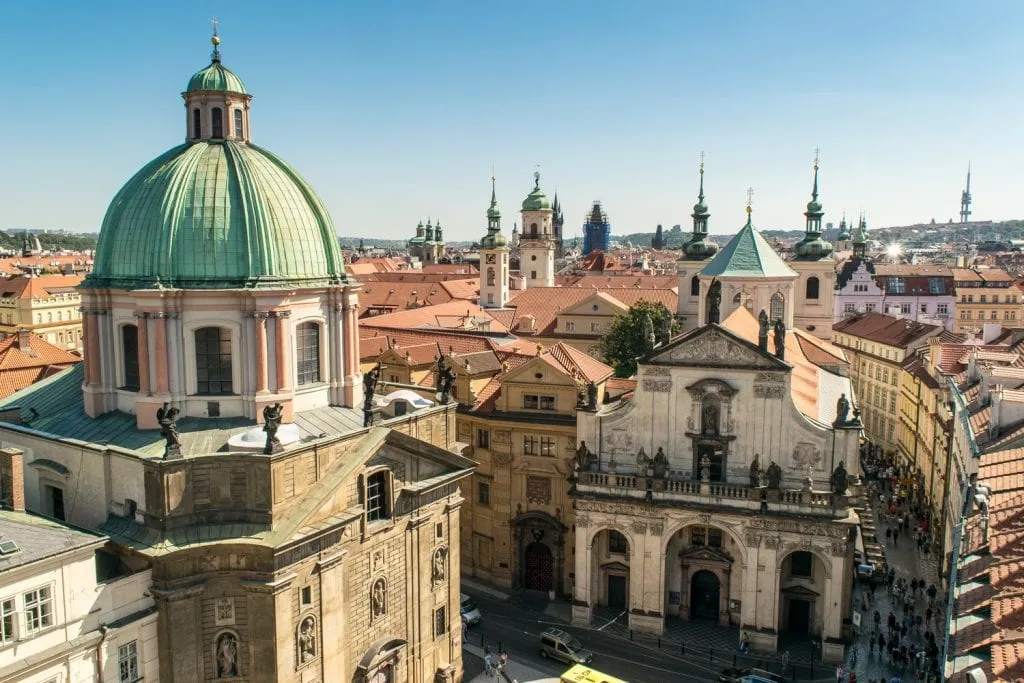
Regal and beautiful, full of spacious, wide avenues and ornate buildings, Austria’s capital city is the perfect place to come to tour grand palaces ( Schonbrunn is one of the most popular), see a show in one of the world’s premier opera houses, and to enjoy European cafe culture at its finest.
We absolutely adore Vienna’s coffee houses–be sure to try a slice (or several) of Esterhazy Cake while there, as well as Viennese hot chocolate.
The city’s famed Spanish riding school and striking St. Stephen’s Cathedral are also worth adding to your list!
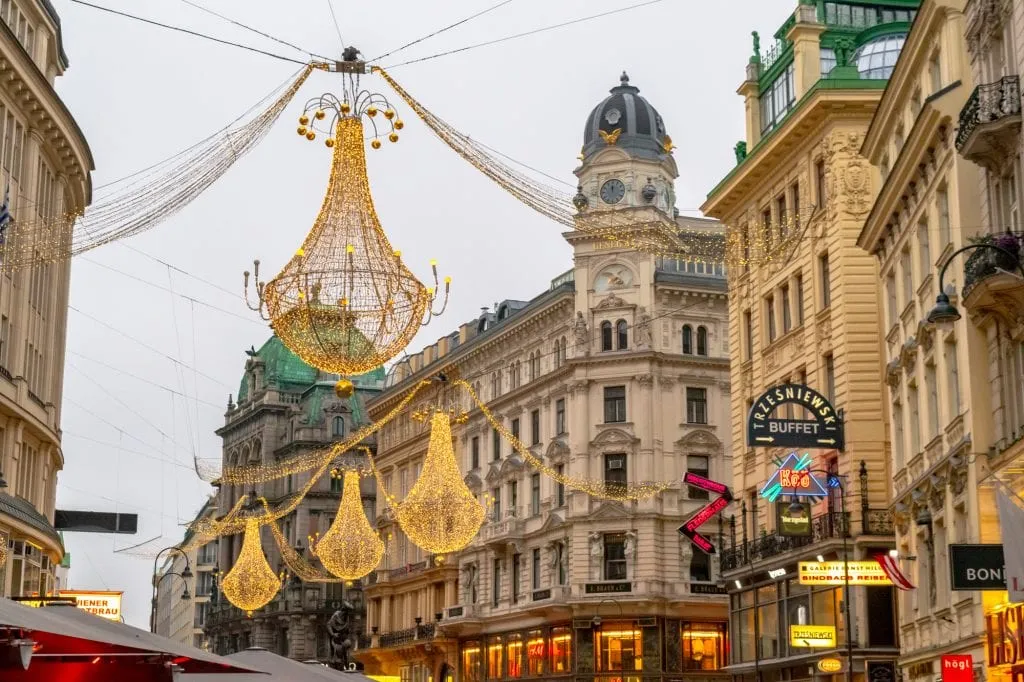
As our favorite city in central Europe and one of our top 10 cities in Europe overall, I really can’t say enough about how beautiful Budapest is!
The city is somehow, simultaneously, both grand and down-to-earth , absolutely gorgeous while also remaining accessible, affordable, and fairly simple to visit and explore.
While in Budapest, go for a soak in the famous thermal baths, tour one of the most beautiful houses of Parliament in Europe, check out a castle, visit grand basilicas, take a boat ride down the Danube, and, if you’re up for a bit of adventure, even go on a cave tour!
Be sure not to miss the great food , either–Budapest’s hearty cuisine is a delight, and one of our all-time favorite wine tastings took place there!
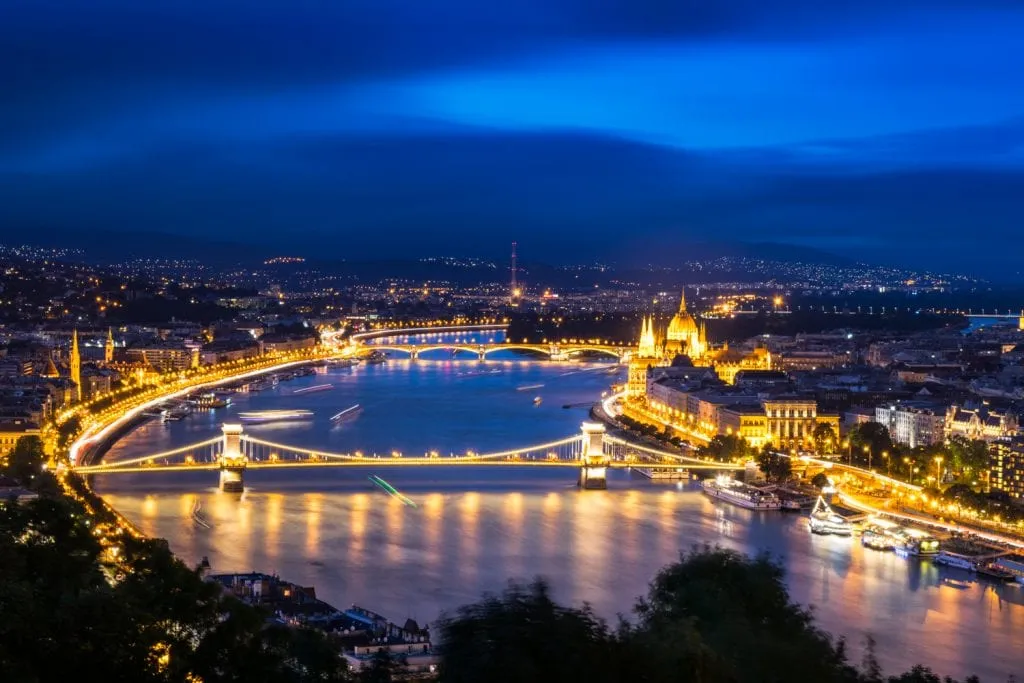
Europe for Art Lovers: Paris, Florence, Venice
If you’re an art buff at heart, you can’t ask for a better sampling of some of the continent’s most beloved artistic cities than the trifecta of Paris, Florence, and Venice (and it certainly helps that each city is practically an art museum in and of itself).
From the Louvre to the Musee d’Orsay to the Orangerie to the Musee Rodin to the Centre Pompidou to the Cluny Museum, it would probably take a lifetime to enjoy all the art museums in Paris alone.
And of course, the city has so much more to offer once you need a break!

Nicknamed the Cradle of the Renaissance, Florence boasts the finest collection of Renaissance art on the planet–and claims many of its most famous artists as locals.
Michelangelo, DaVinci, Botticelli, and more all originally hailed from Florence, and their works are scattered about the city.
Perhaps most famously, Michelangelo’s David is in the Galleria dell’Accademia and Botticelli’s The Birth of Venus is in the Uffizi Gallery .
And of course, no art-focused trip to the Cradle of the Renaissance can overlook Florence’s iconic Duomo , a masterpiece of the era!

Located an easy train ride away from Florence, Venice may be slightly less well-known for its art than the first two cities on this 2 week Europe itinerary, but there’s no doubt that there’s plenty to find!
From the utter masterpiece of St. Mark’s Basilica (don’t miss a chance to go in!) to the incredible Doge’s Palace to the famous Galleria dell’Accademia (not to be confused with the one in Florence!) that focuses mostly on Venetian artists, Venice is an art lover’s dream.
Mix it up by adding a visit to the Peggy Guggenheim Collection, which holds modern art, and a gondola ride .
A fter all, Venice itself is no doubt one of the best artistic masterpieces in the city, and it deserves to be seen from all its best angles.
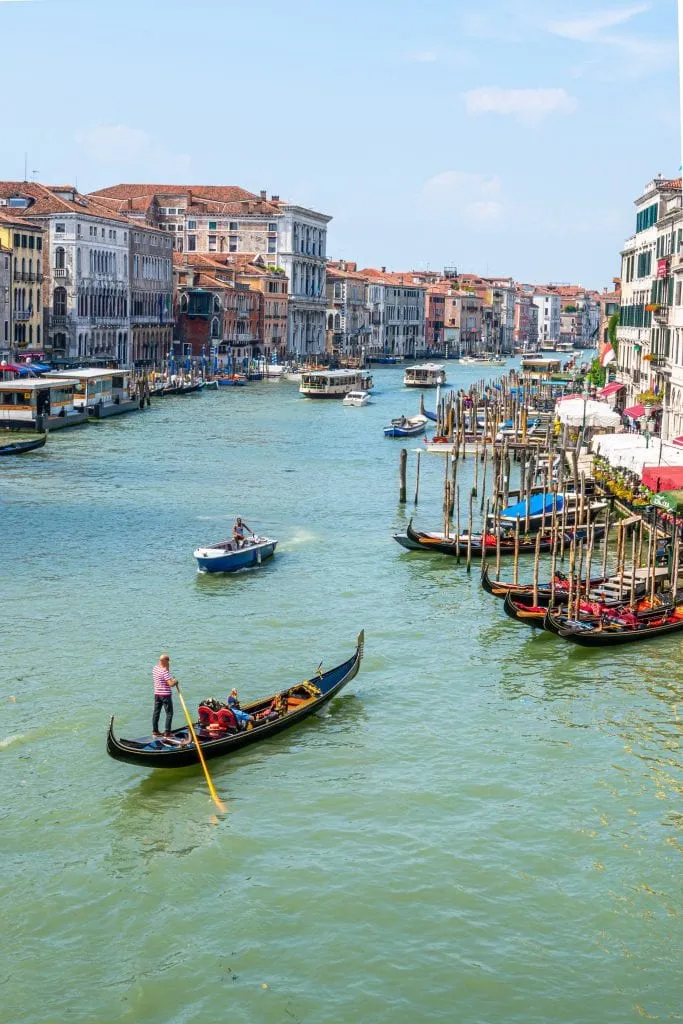
The Incredible Iberian Peninsula: Lisbon, The Algarve, Andalucia
The Iberian Peninsula is dominated by Spain and Portugal , and while I might be biased after spending more than a year living in Lisbon, it makes for an unforgettable Eurotrip!
(The fact that there are often flight deals from the US to Lisbon and Madrid doesn’t hurt, either).
There are infinite ways to craft southern Europe itineraries out of these two countries, but here’s one great option…
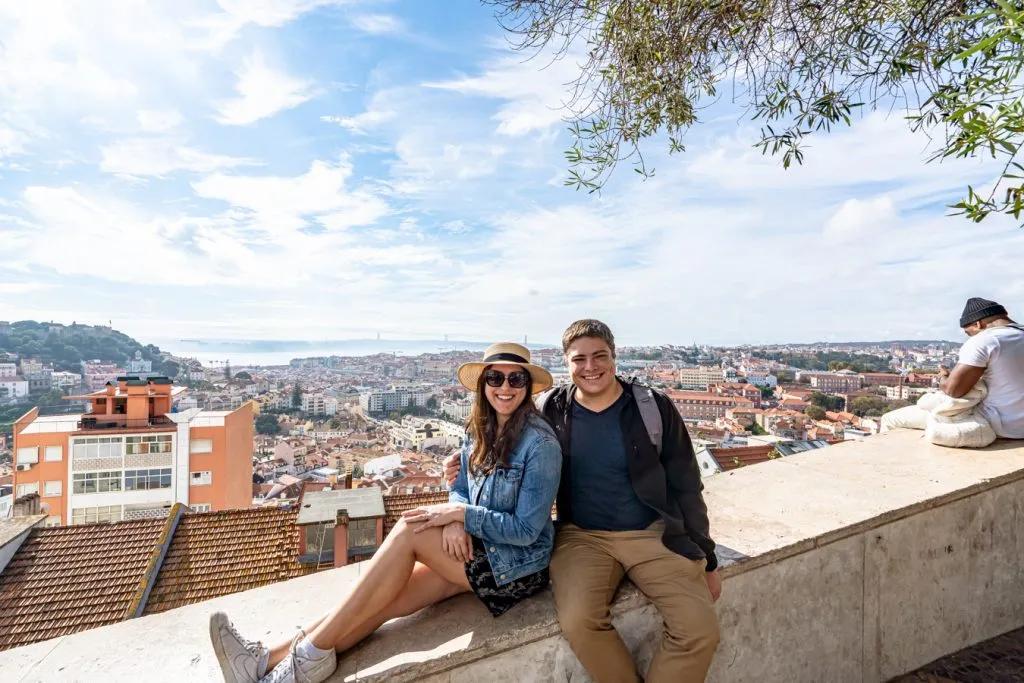
Start your trip with a few days in Lisbon , Portugal’s trendy capital city, soaking up beautiful views from its many miradouros , sampling Portuguese food (starting with pastéis de nata ), touring the incredible Jerónimos Monastery, and taking day trips from Lisbon to nearby gems like the palaces of Sintra and/or the beach resort town of Cascais .
Be prepared to head up and down a lot of hills while you’re there–but Lisbon is worth the climb.
If you’re looking for neighborhoods to wander through, Alfama, Castelo, Chiado, and Bairro Alto are particularly picturesque–keep an eye out for trams, azulejos, and peacocks as you explore!
And, while Lisbon’s top attractions are definitely worth a visit, seeking out some of the many hidden gems in Lisbon will add extra beauty to your trip.
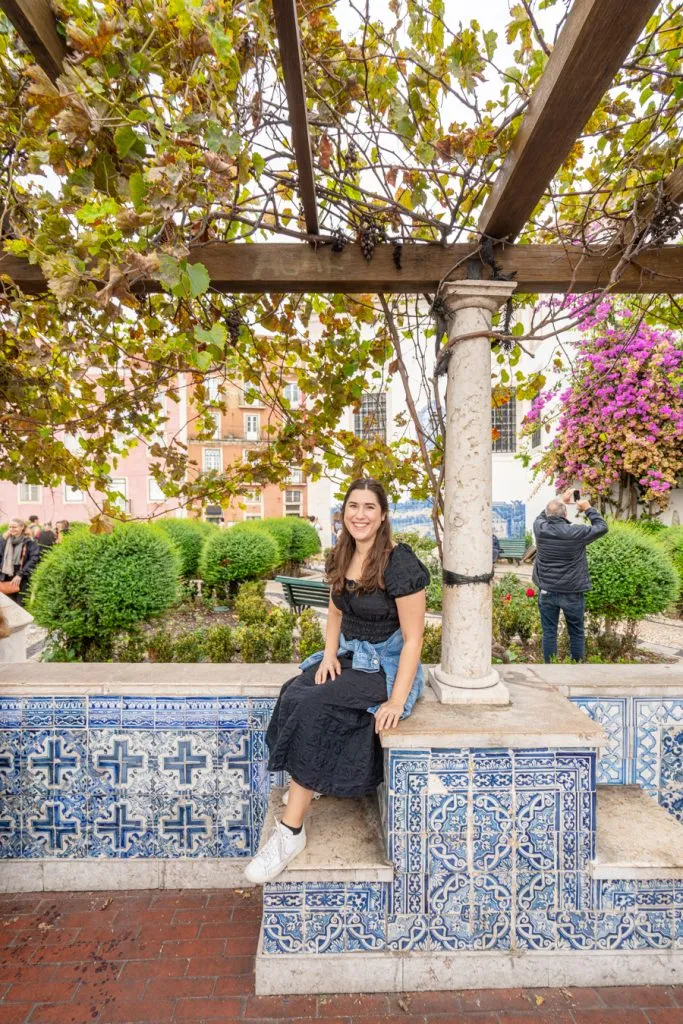
The Algarve
After saying goodbye to Lisbon, head south of Portugal’s Algarve for a dizzying array of whitewashed villages (you’ll find many of the best beach towns in Portugal here) and a picturesque coastline.
Lagos is one of the most popular places to stay, and we can highly recommend it–don’t miss the famous Ponta da Piedade, which photos can’t do justice to.
Nearby attractions (ideally, you’ll want to rent a car in the Algarve) include the famous Benagil Cave and the unmissable Seven Hanging Valleys Trail!
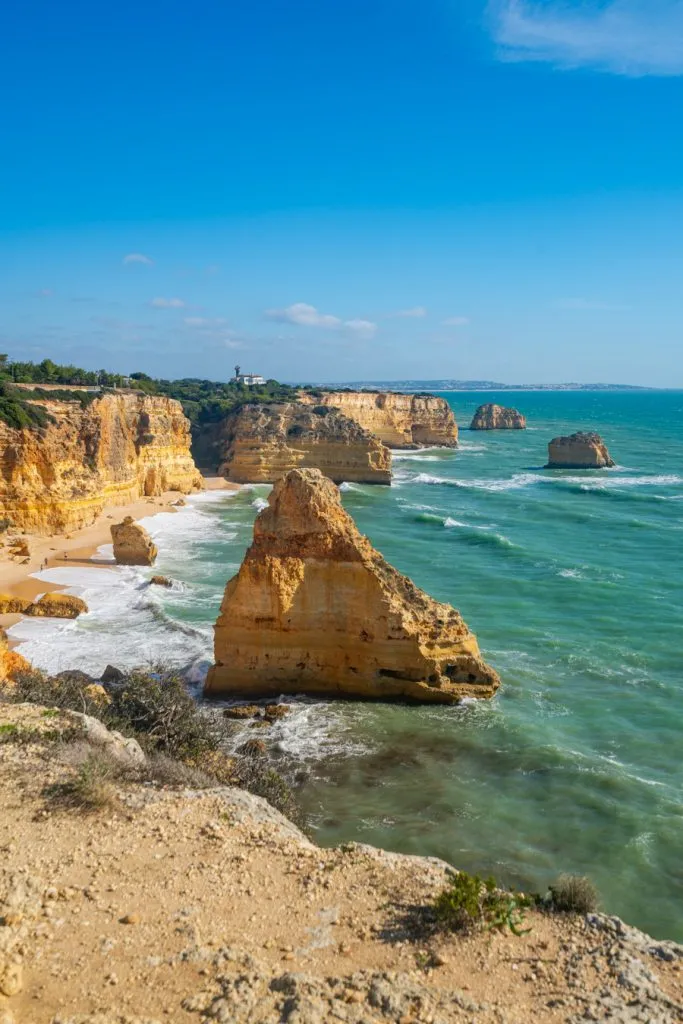
For the second week of your trip in Europe, cross the border into southern Spain (note: there’s no direct train access for this journey, but there are buses).
Split your time between any two of Andalucia’s incredible cities, taking nearby day trips from there.
Seville (with its Alcazar and famous Plaza de Espana), Granada (home of the Alhambra ), and Cordoba (home of the Mosque-Cathedral , one of the most unique houses of worship in the world) are all wonderful inland options.
On the coast, options include Cadiz, Malaga, Marbella, Tarifa, and many more.
With a bit more than 2 weeks in Europe or an ambitious schedule, you may be able to squeeze in a day trip to Gibraltar and/or Tangier, Morocco while here!

Food + History: Athens, Santorini, Istanbul
Feel like heading further east–as far east as you can get during a Europe vacation?
Greece and Turkey pair very well for a 14 day European itinerary–here’s what that might look like.

Start your trip in Athens, marveling at some of the world’s most remarkable ruins, including the famous Acropolis complex and museum.
Be sure to make time to explore non-ancient aspects of Athens as well, including the trendy Plaka neighborhood, Monastiraki Square (and nearby flea market!), and Syntagma Square.
And of course, one of the absolute best things to do after you touch down in Athens is to dive into plate after plate of phenomenal Greek food –that alone is worth traveling to Greece for ( our Athens food tour remains one of my favorites that we’ve taken in Europe).

Truly, any one of Greece’s amazing islands would fit nicely into this 2 week Europe itinerary, but where better to choose than Santorini , with its iconic blue-and-white color scheme, fantastic caldera views, and excellent flight connections?
While Santorini isn’t best known for its beaches–you’re better off heading to Crete for those–you sure can’t beat the charming villages or stunning nature.

The city of two continents, where thousands of years of history blend seamlessly with modern life, and where you can eat one of the best breakfasts you’ll ever experience in your life: Istanbul tops bucket lists around the world, and there is simply nowhere on the planet quite like it.
Marvel at the Blue Mosque, step inside the Hagia Sophia, eat your weight in Turkish breakfast (seriously, I can’t emphasize enough how tasty it is), admire the views of the Bosphorus, climb the Galata Tower, and shop your way through the Grand Bazaar.
Since this Europe travel blog post focuses on, well, Europe, I won’t sketch out any other possibilities further east in Turkey in detail…
But, if you have time, you could easily add a visit to Cappadocia , complete with a sunrise hot air balloon ride, to your trip, or even a visit to the ruins of Ephesus.

Architecture + Culture: Cologne, Amsterdam, Belgium
With this small triangle of destinations, you can easily visit separate countries via train, with very little travel time between them!
And, if you were particularly motivated to add another, you could even squeeze in a day trip to Luxembourg.
If you’re looking for a winter itinerary for Europe that focuses on cities, this is a fantastic option.

Home to a stunning cathedral and what may just be the best Christmas markets on the planet, Cologne is a gorgeous German city that is a delight to explore on foot.
Don’t miss its soaring Gothic Cathedral while you’re there!
… Though honestly, that would be hard to do, considering you can see it right as you step outside the train station.

As one of the most popular cities to visit in Europe, Amsterdam requires no introduction.
The city of canals, biking, and revelry is somehow even more beautiful in person than in the billions of photos of it.
While you’re there, be sure to take a canal cruise, stroll the 9 Streets, and visit at least a couple of the city’s museums (the Anne Frank House is incredibly moving).
If you visit Amsterdam in winter , you’ll no doubt need to bundle up–but the lack of crowds in this often-packed city is also a treat to experience.
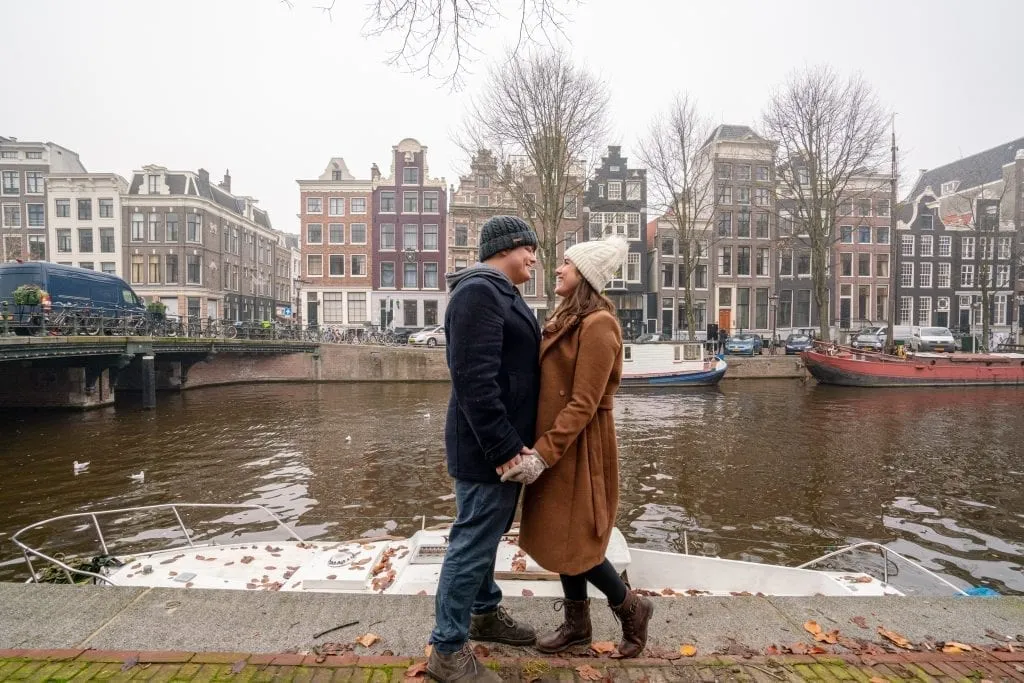
Perhaps it may be slightly unfair to list Belgium entirely while the other destinations are split into cities… but considering Belgium’s two most popular cities, Bruges and Ghent , are located less than an hour apart by train, you can cover quite a bit of the country in a few days !
With stunning architecture, canals, and carbs (bring on the waffles and frites), it’s easy to have a blast in Belgium.
Winter in Belgium brings a lack of crowds and plenty of festivities during the Christmas season!
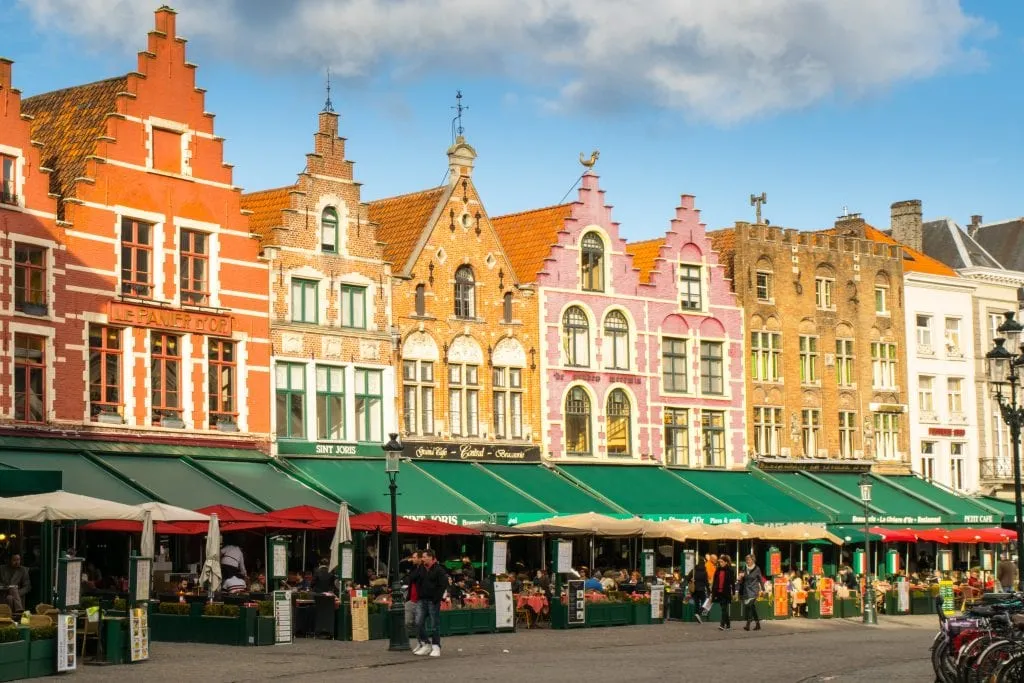
Alpine Escape: Bavaria, Switzerland’s Jungfrau Region, Milan, and Lake Como
If your dream Europe trip involves plenty of Alpine views with a side of cities, this is the itinerary for Europe in 2 weeks for you.
Start your trip in Bavaria, the land of castles, beer, and outdoor delights.
City lovers will enjoy being based in Munich (don’t miss the opulent Munich Residenz or view from St. Peter’s Church and/or the Town Hall Tower while there).
From Munich, you can easily day trip to more mountainous areas, starting with Fussen, home to Germany’s famous Neuschwanstein Castle .
If you get good weather and want to see as many mountains as possible, a day trip to the Zugspite–the highest point in Germany–is also an option.
Really, though, if there’s one thing to prioritize in Munich, it’s to eat and drink all the sausage, pretzels, beer, and beyond you can get your hands on!
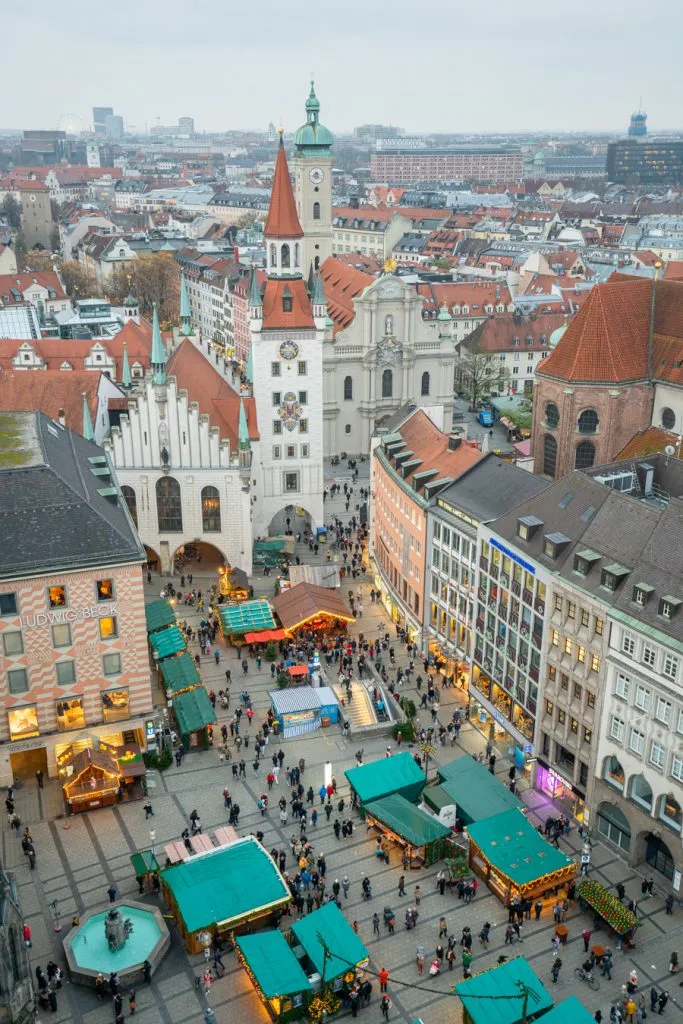
Switzerland’s Jungfrau Region
I am convinced that Switzerland’s Jungfrau region–located around (literally, above) Interlaken–is paradise on earth in the summer.
If you’re dreaming of the Alps, check into a hotel in Wengen, Murren, or Grindelwald (for the best views) or Interlaken (for a bit more selection) or Lauterbrunnen (to be in the literal center of the action) and have the trip of your dreams.
Switzerland’s legendarily efficient trains and gondolas mean that wherever you stay, the region is at your fingertips.
Hiking from Mannlichen to Kleine Scheidigg, riding the highest train in Europe to Jungfraujoch (aka the “Top of Europe”), eating daily fondue, walking from Murren to Gimmelwald , and riding a historic cogwheel train to Schynige Platte are just a few of the unforgettable experiences you’ll find here.
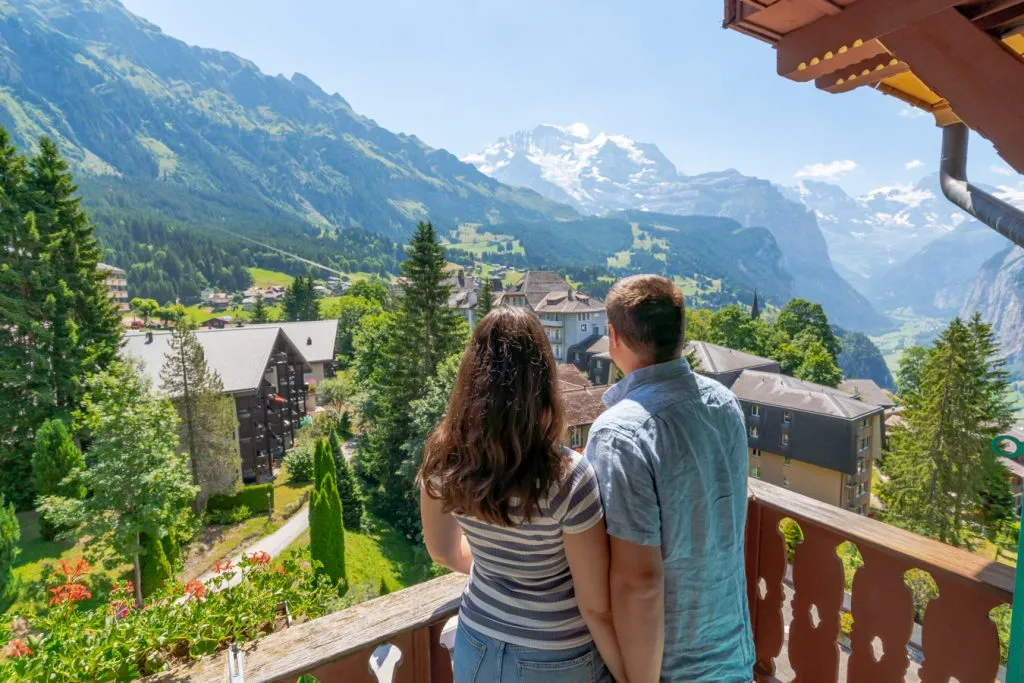
Milan + Lake Como
End your trip to Milan and Lake Como , two of the most popular destinations in northern Italy!
In Milan , be sure to visit its legendary Duomo, stroll through the Galleria Vittorio Emanuele II, visit Sforzesco Castle, and, if you can get tickets (plan ahead!) see Da Vinci’s The Last Supper .
At Lake Como (just an hour north of Milan by train), take a boat tour around the lake and visit delightfully charming towns like Varenna and Bellagio while admiring magnificent Alpine views.

Getting around in each city on your 2 week Europe itinerary is a question better suited to blog posts on that particular city, so this section is designed to address getting in between each destination during your 14 days in Europe.
We recommend checking several solutions for each destination, as you never know what will crop up!
Personally, our first 2 week Europe trip involved an overnight train, a budget plane ride, and a couple of rental cars.

Train travel is our absolute favorite way to travel in Europe!
I t’s much less stressful than traveling by plane, especially once you get the hang of it, far more comfortable, and for those of us hailing from North America, it’s a travel experience in its own right!
We recommend using services like Omio to compare train prices across multiple countries.
It works more or less exactly like a car rental aggregate does, searching multiple companies and generating the best routes and prices for your dates.
Keep in mind that train travel is most useful in western and central Europe–once you head into eastern Europe and especially the Balkans, train travel becomes more limited and bus travel more common (for example, popular Dubrovnik, Croatia doesn’t have a train station).
Shop train routes and tickets prices in Europe today!

For those traveling on a budget or between two smaller destinations where rail travel isn’t an option, buses can be a very affordable choice.
In addition to standard local buses, companies like Flixbus provide an easy-to-use service, and you can check their prices and availability directly or through Omio as well (that way you can compare train tickets at the same time).
Browse bus routes in Europe today!
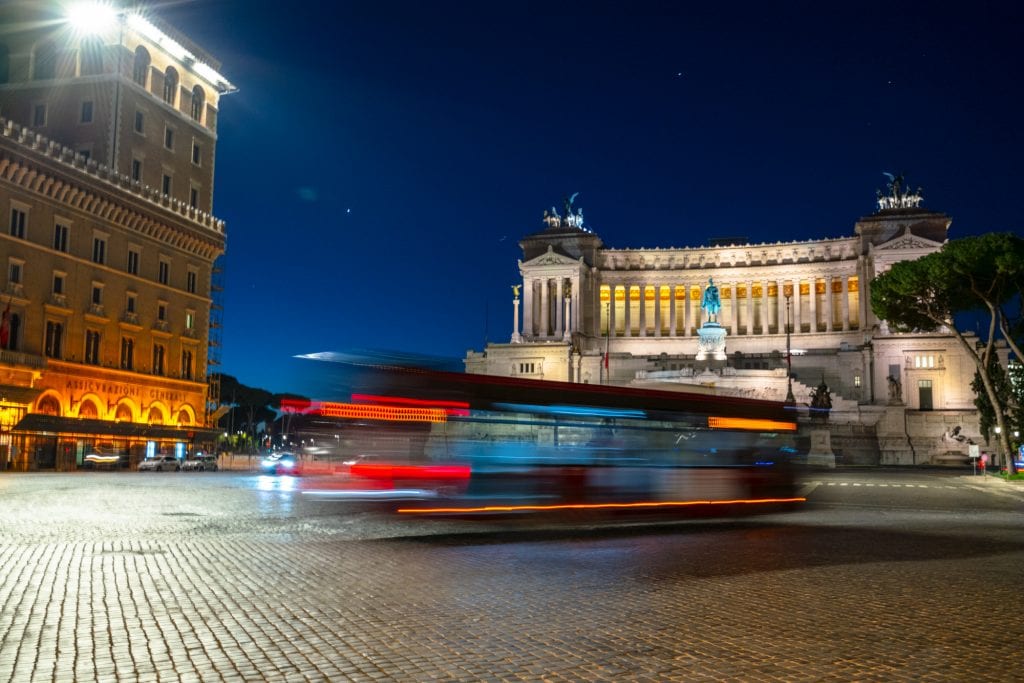
With plenty of budget airlines and plenty of airports to choose from, if you plan wisely, it’s possible to take flights in Europe that are so inexpensive you wonder how the company pays for the fuel.
S eriously: 10 Euro flights are possible, though we’ve never actually managed to pay that since we prefer to check our bags !
When looking for flights within Europe, we recommend using Google Flights in order to search the whole continent at once (you can simply put “Europe” in as the destination, and it’ll pull up a map of prices).
With a little flexibility on destination (for example, maybe flying into nearby Bologna is cheaper than flying into Florence ?) and even on dates if possible, you just might end up with an excellent flight deal or two during your trip to Europe.
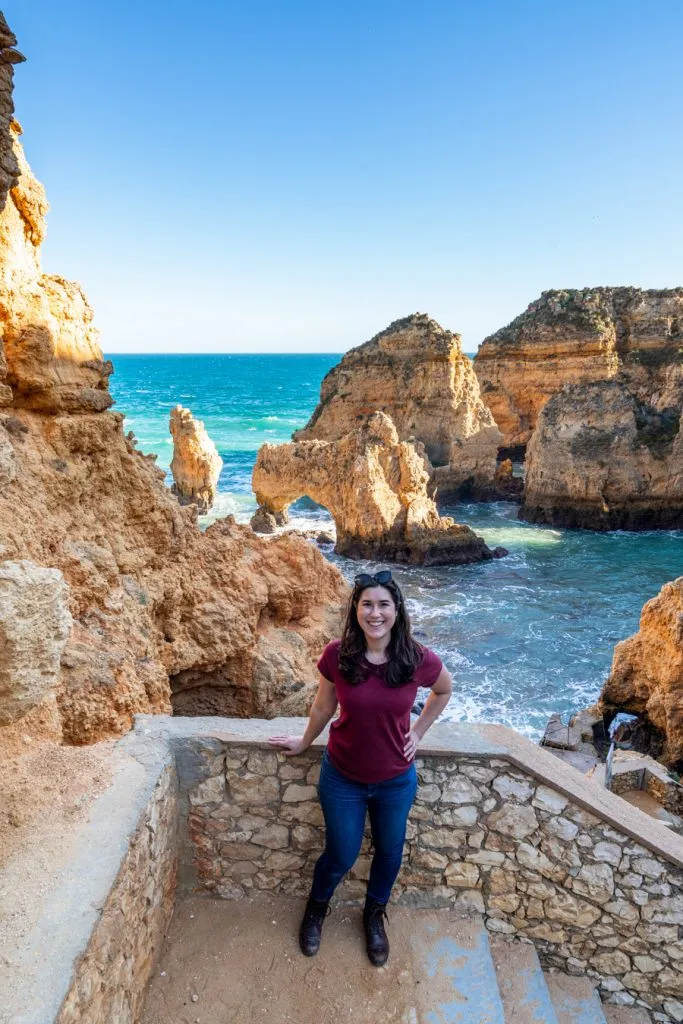
Personally, we recommend avoiding a car rental when possible during your 2 weeks in Europe, especially if you’re following anything resembling a Europe itinerary like the ones I outlined above.
In large cities, rental cars are a hindrance and a liability, not an asset, and they add quite a bit to your bottom line.
That being said, if you’re planning on visiting any rural areas or small towns, road trips in Europe can be a delight!
Y ou could consider renting a car for a couple of days in Tuscany , for example, or to visit the villages of Provence.
If you do choose to rent a car, we recommend searching for the best prices through Discover Cars , which will allow you to search multiple companies at once and come up with a great option.
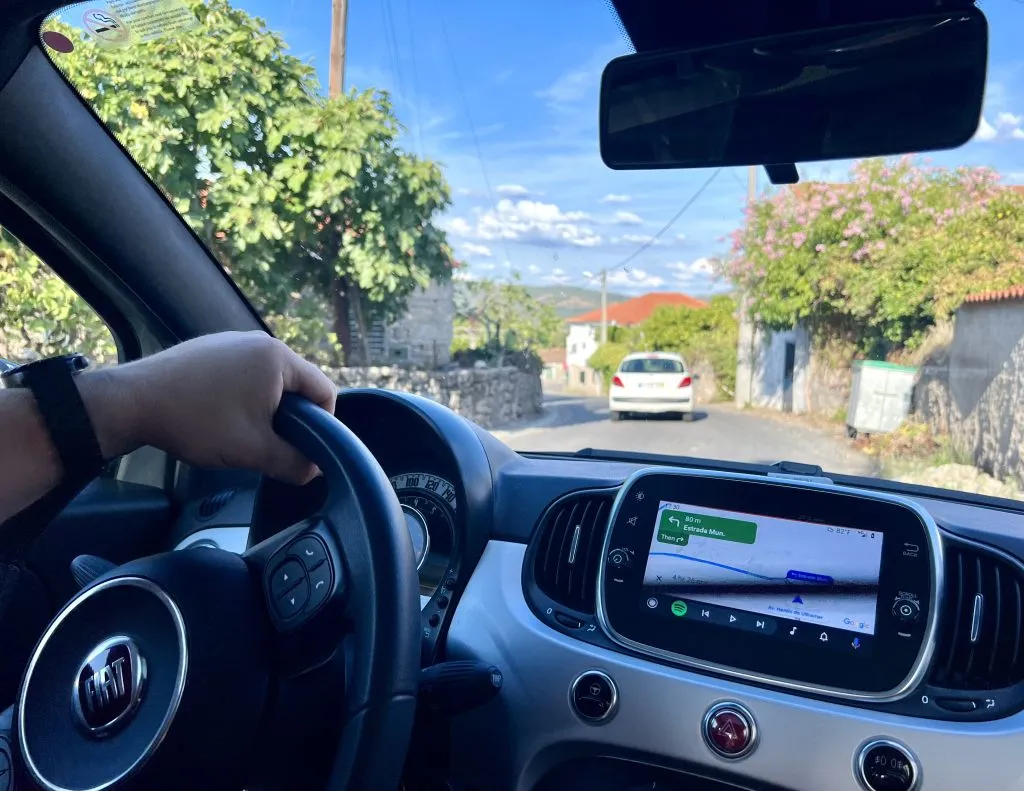
While major international carriers like Hertz and Enterprise are available in Europe, they’re not always the best deal, and searching for a combination of local and international companies is best.
Personally, we have no loyalty to any one rental car company, and book with whoever is most affordable (and we always buy the extra insurance).
As a result, we’ve rented cars through easily more than 15 or 20 agencies over the years (I’d be hard-pressed even to estimate it), and we’ve never had any issues with surprise charges.
Price out rental cars with Discover Cars now!
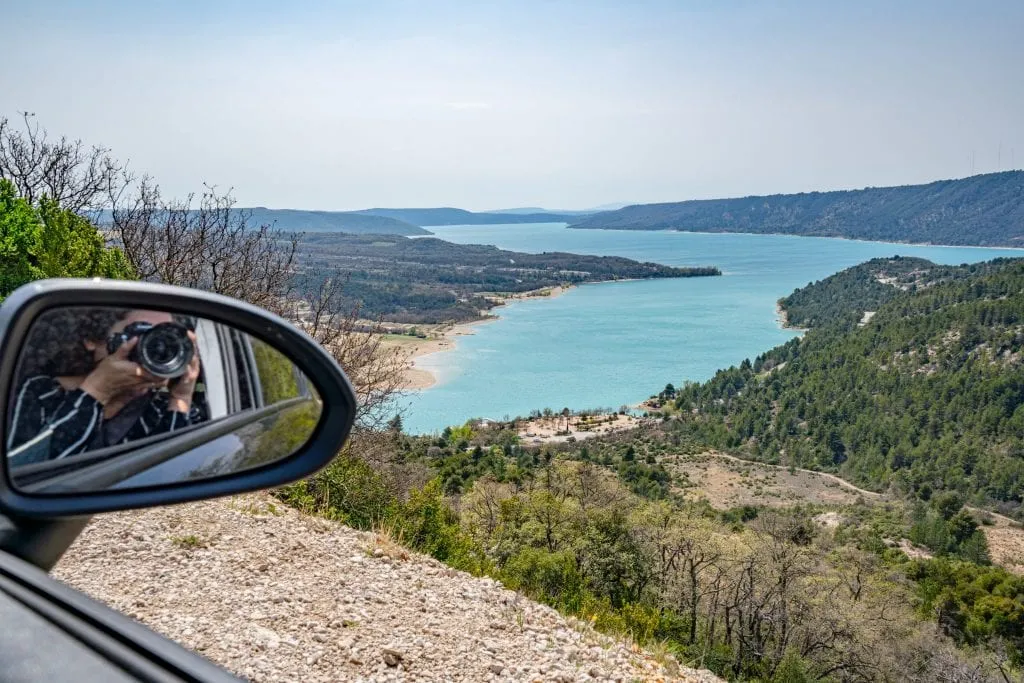
Don’t forget boats when it comes to planning a 2 week Europe itinerary, especially over the summer!
While ferries between or to/from islands are obviously the most popular ( Dubrovnik to Hvar , for example, or Barcelona to Mallorca), there are longer ferry options as well!
Last summer, we took a ferry from Barcelona to Rome and loved the experience of drifting along the Mediterranean Sea for 24 hours!
Many ferry routes are seasonal, but not all.

Don’t plan to visit too many destinations.
With only around 14 days in Europe, I know it can be incredibly tempting to squeeze in as many destinations as possible (and I have many fevered outlines of ridiculously ambitious trips I planned in my college days to prove it), but your trip will go so much more smoothly if you can resist that temptation.
In most cases, we recommend an absolute minimum of two full days per major city.
By full days, I mean with limited exceptions (like a red-eye flight that lands at 8:00 AM), the day you arrive and the day you depart don’t count as a “day” in a given city–just as a travel day.
Three or four days per city is even better and will allow you to potentially squeeze in a day trip from that city to a smaller city or village if you want to mix things up.
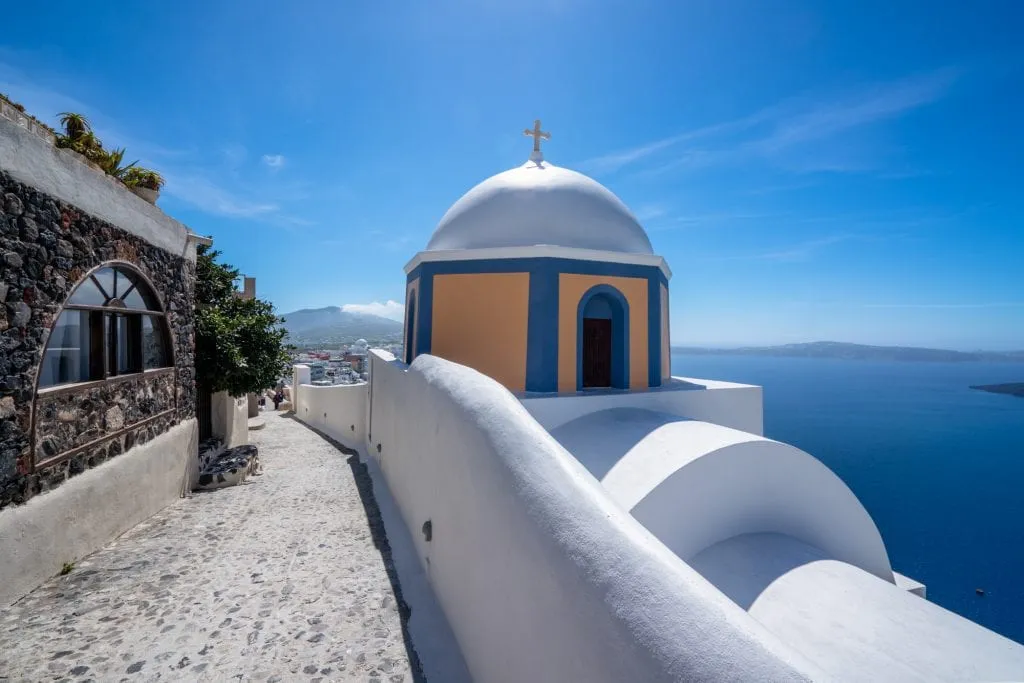
Start and end in a major airport hub.
It doesn’t necessarily have to be the same hub–more on that below–but there are definitely airports that are cheaper to fly into and out of for intercontinental flights than others.
Budapest may be affordable once you’re there, for example, but flying from the US directly to Budapest can hurt the wallet!
For those of you coming from the USA, London, Dublin , Madrid , Paris , Lisbon , Frankfurt, Amsterdam , and Milan are a few places to check ticket prices for.
That’s not an exhaustive list by any means, but there are often flight deals to and from these cities.

If you can, use an open-jaw ticket rather than a return ticket.
This will allow you to begin and end your 2 weeks in Europe in entirely different destinations, and let you avoid doubling back!
While one-way tickets can be pricier than round-trip ones, if you’re flexible on your dates and destinations (so deciding which cities to start and end in partially based on price), you can usually find excellent deals
This is exactly how we ended up flying into Krakow and out of Dublin for our first 2 week Europe trip!

You will be exhausted at some point. Plan for it.
Two weeks in Europe may not seem like a ton, but if you’re anything like us or virtually all of the travelers we have talked to, exhaustion will set in during your trip.
Sightseeing in Europe is fabulous, but it’s also tiring.
Add in navigating cultural differences, language barriers, and moving countries every few days, and you’re bound to need a break at some point.
We recommend planning a couple of laid-back days without museum visits, tours, or day trips so that you can catch your breath and avoid burnout.
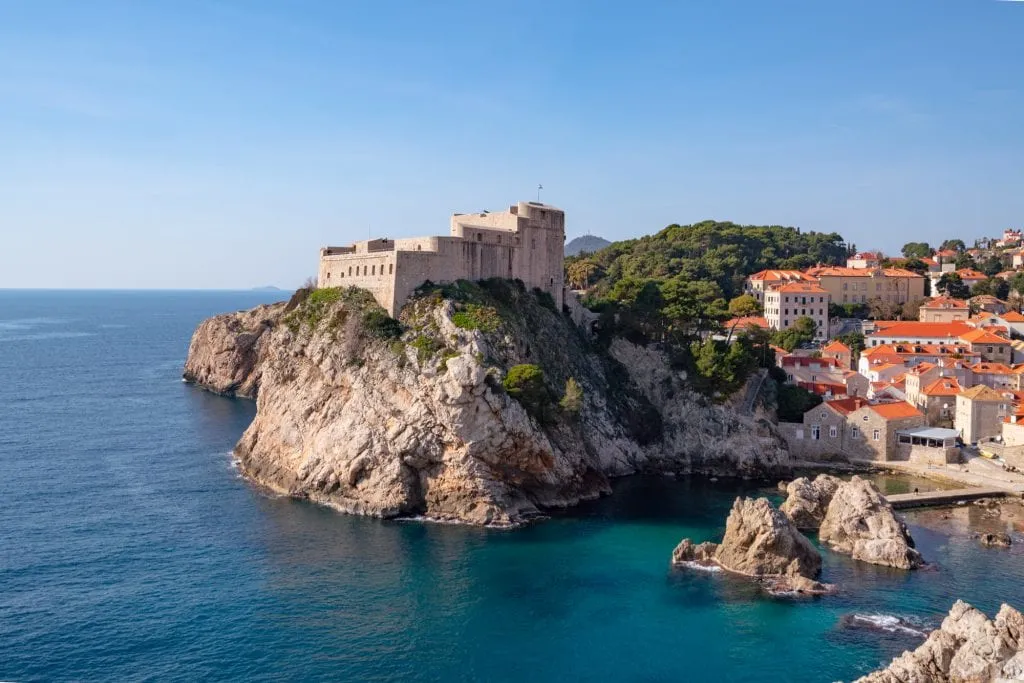
Try to be flexible with where you go.
As you start pricing train, plane, and bus tickets for your trip to Europe, you’ll likely notice dramatic shifts–for example, is it 4x the money to get to London instead of Amsterdam?
Does traveling to Prague require a long flight and 2 layovers but Rome is a quick hop away?
If you can, be flexible when you come upon these challenges: we recommend having 1-2 “must visit” destinations and filling in the rest of your trip based on a combination of logistics and desire.
After all, there’s no way you can see it all on a 2 week Europe trip anyway!
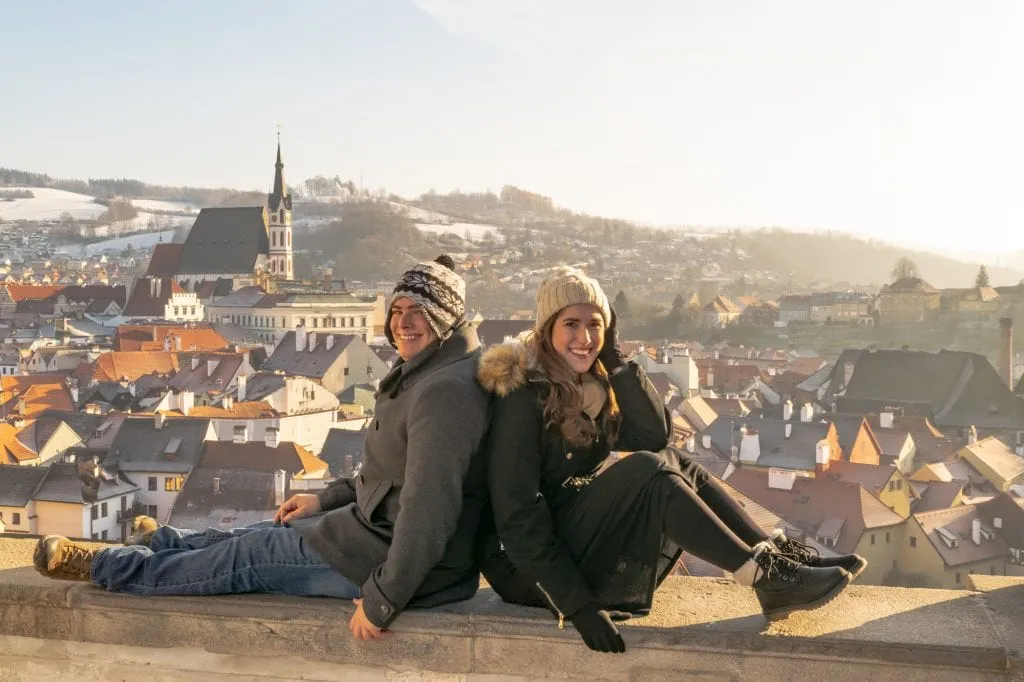
Don’t underestimate the time and energy it takes to change destinations.
“Oh, it’s only a 3-hour train ride away! That’s nothing!”
I think we’ve all said that at some point when planning a multi-country trip, but be cautious.
Three hours on the train doesn’t account for packing and unpacking, getting to and from the train station, checking out of and into a hotel… you get the picture.
If you’re looking at a high-level schedule without picking a specific date or time, you may also come to find that sure, there’s one direct 3-hour train between two cities… but it leaves at 10:00 PM or 6:00 AM, and the rest of the trains require layovers.

Or perhaps the direct train only runs 3 days a week.
Or maybe you’re looking at a plane, in which case, be sure to add at least 4 hours to your transit time: getting to and from the airport and security/check-in beforehand.
Long story short, travel days between countries are virtually always more tiring and time-consuming than they look at first glance, so don’t overcommit on those days when planning your ultimate Europe trip!
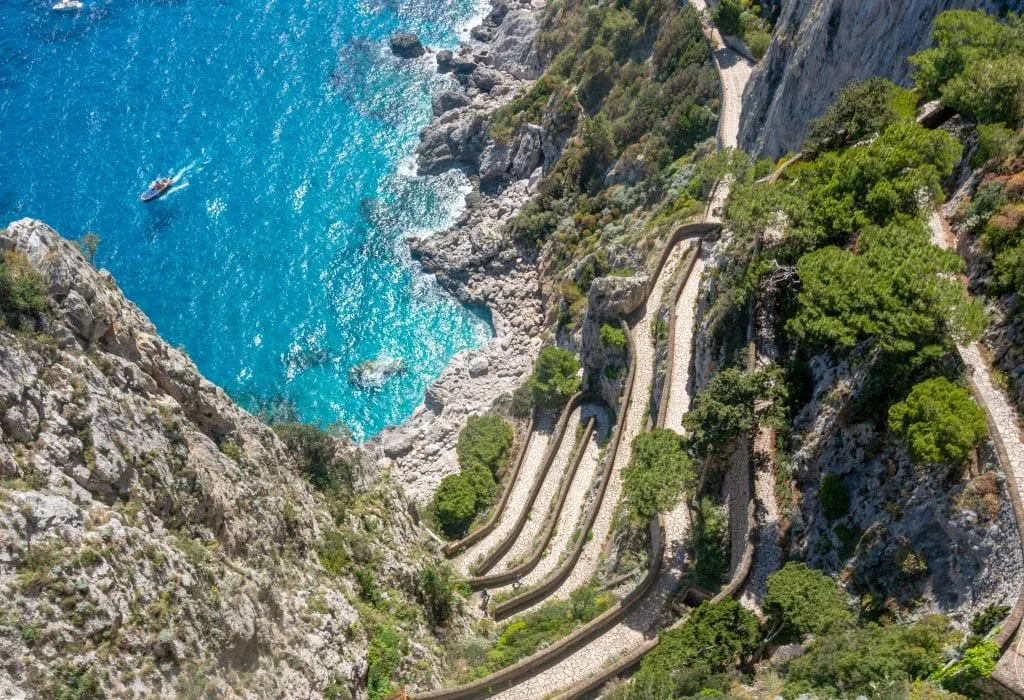
Big cities are more accessible than small towns and nature areas.
For the first trip to Europe especially, big cities are absolutely the easiest to plan your itinerary for Europe around.
They’re generally easier and cheaper to get into and out of, and there’s far more information available about them online to help plan your trips.
That’s no reason not to visit other places too, of course–but keep in mind that the more rural the area, the more logistically challenging your trip will be.
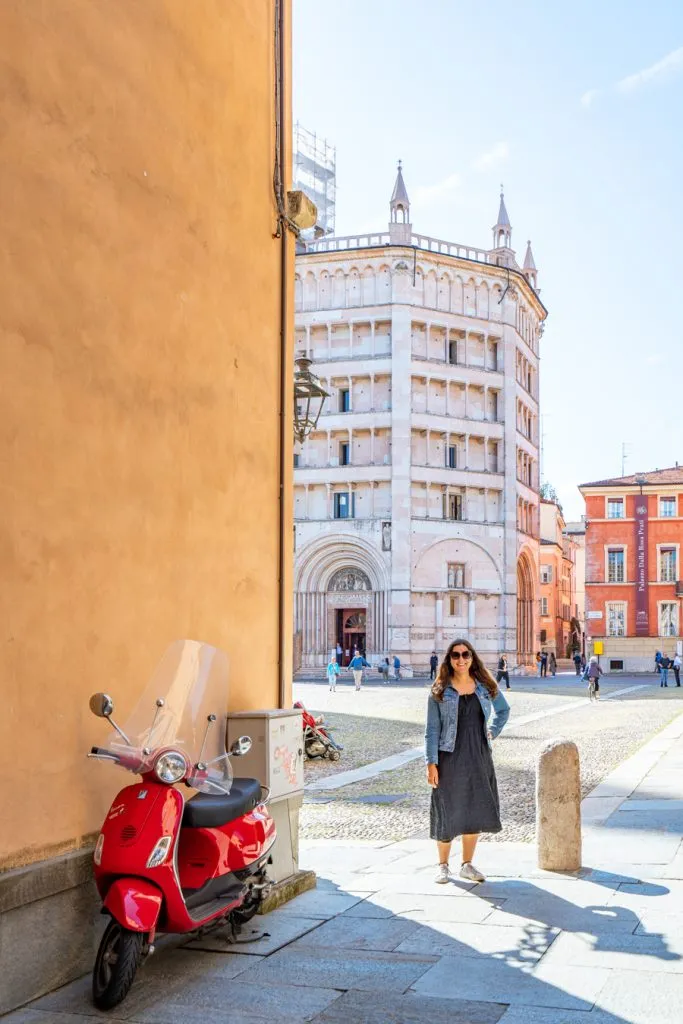
Skip-the-line tickets are incredibly useful.
I’m sure it comes as absolutely no surprise that the world’s most iconic monuments and museums tend to get a bit crowded… and that makes skip-the-line tickets invaluable, especially with only 2 weeks in Europe to squeeze in as much sightseeing as possible.
In some places (like the Arc de Triomphe ) they’re available without any additional fee, and in other places (like the Colosseum) they cost a bit extra.
Either way, though, it’s 1000% worth the price and effort to get tickets online beforehand for popular spots, especially if you’re traveling during the high season.

And, in 2024, it’s worth pointing out that given ever-changing capacity limits, it’s a better idea than ever to book in advance–and for some attractions, it’s even required!
When 2020 shook the travel industry to its core, many of the most popular museums and monuments in Europe found that life was easier with reservations and online bookings, and have continued prioritizing that system over traditional lines and ticket booths even as crowds returned to “normal”.
We use skip-the-line tickets all over the continent and book them through Get Your Guide .

Book your hotels and major transportation in advance.
Before kicking off your 2 week Europe itinerary, we recommend having all of your hotels and major transportation (so travel between destinations) booked and ready to go.
This dramatically cuts down on stress levels, makes it easier to budget and plan out your days, and generally helps your trip run more smoothly.
These days, we book virtually all of our lodging (including apartments, farm stays, houses, and more) through Booking.com .
Smaller things, like metro passes or tickets for getting around cities, can be handled once you arrive.
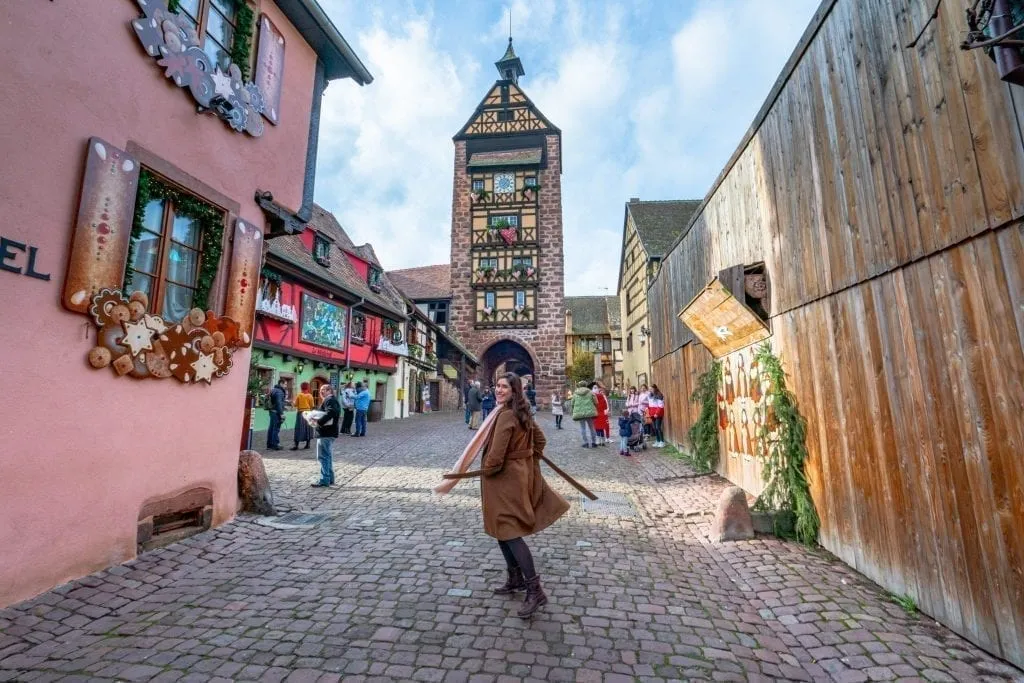
If you can, we recommend taking at least one food tour during your 2 weeks in Europe.
Food tours are one of our favorite ways to get our bearings in a new city while learning about the culture, history, and neighborhood through something we can all appreciate: a tasty meal.
We’ve taken food tours in several countries around the world, including many in Europe, and have never walked away unsatisfied!
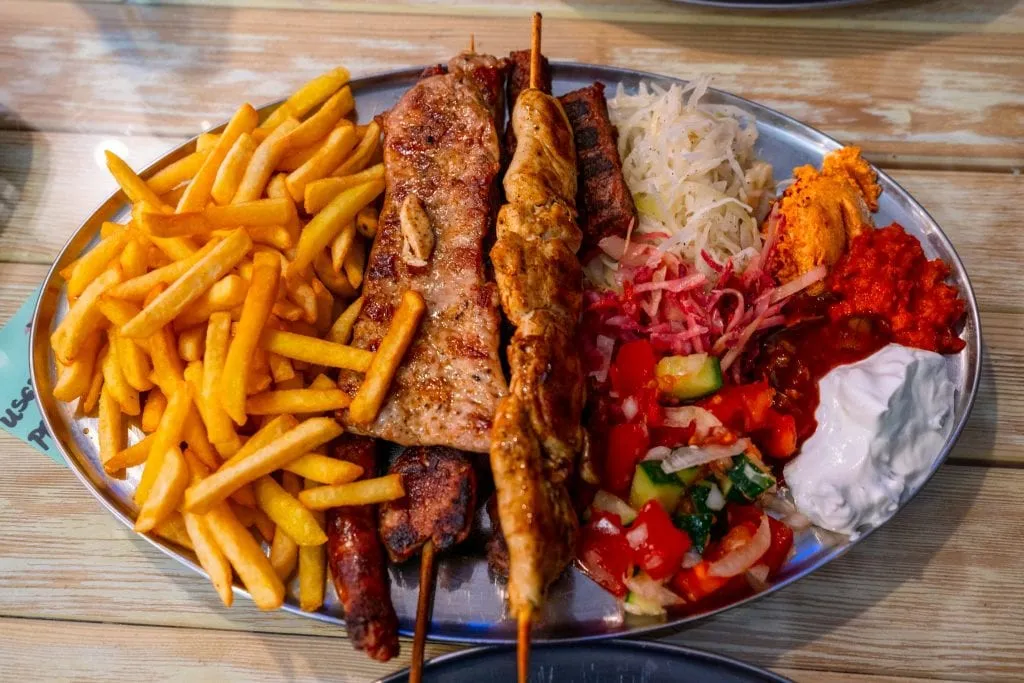
You do need to pay to use the restroom… sometimes.
Throughout Europe, public restrooms are generally available for a fee (typically either half a Euro or a Euro).
If you’d like to avoid those costs, be sure to take advantage of available restrooms in restaurants and museums as you sightsee !
Also, toilet paper is far from guaranteed in public toilets on the street.
We recommend carrying a small pack of tissues with you just in case.
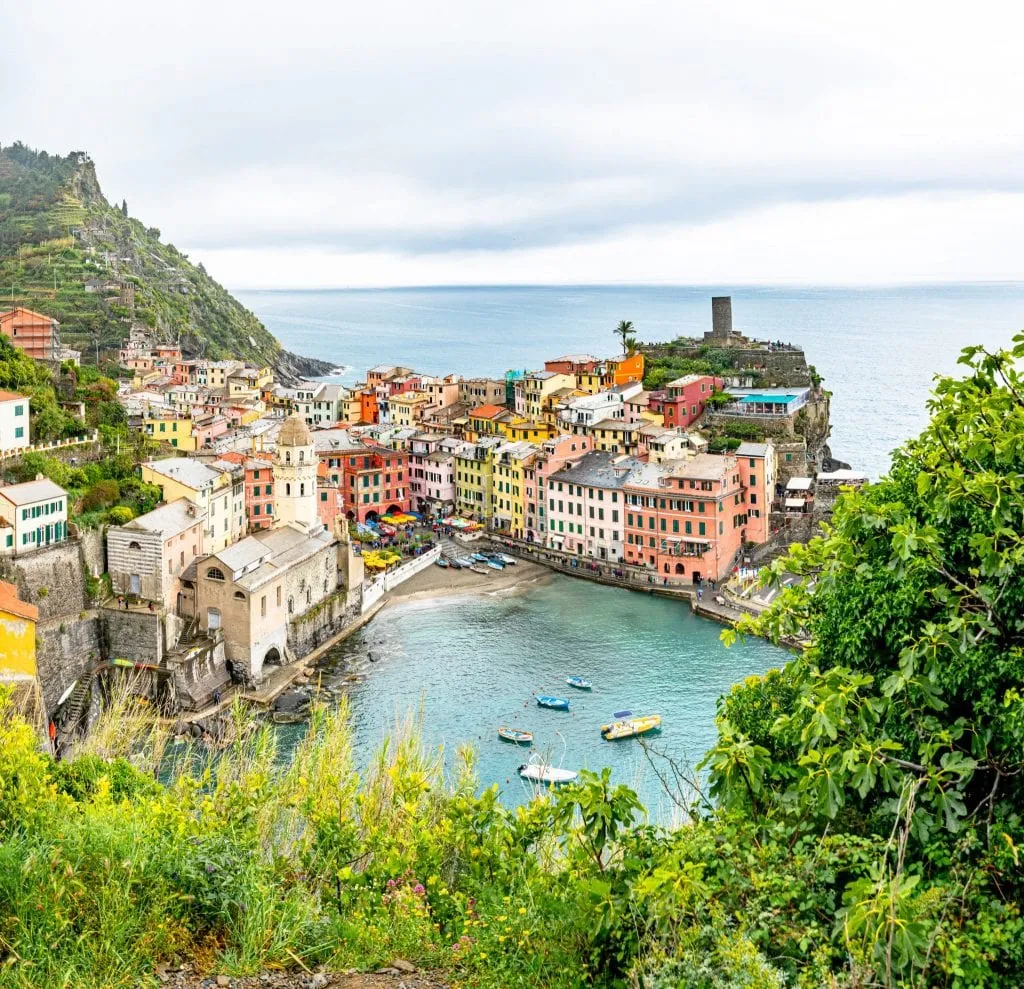
Will I need an adapter?
Most likely, yes!
Luckily, adapters are cheap to buy and easy to carry–we recommend picking these up before you go.
Keep in mind that the UK and a few other countries ( Ireland , Malta ) use a separate plug from the bulk of the continent.
If you’re heading to a place that uses UK plugs, you’ll want these adapters as well.

Is a money belt a good idea?
It depends, honestly.
We used a money belt for our first trip to Europe and for a couple after that.
Back then, we weren’t used to life in bustling big cities, and though we knew that thieves knew about them (because they definitely do), Jeremy found them comfortable enough to wear and it was an easy way to keep our belongings a bit more secure.
If you’re not used to traveling in a big city or watching for pickpockets, I don’t think it’s a terrible idea to use one– this is the one we used and we had no complaints–but I also don’t think it’s necessary, especially if you’re comfortable in large cities.
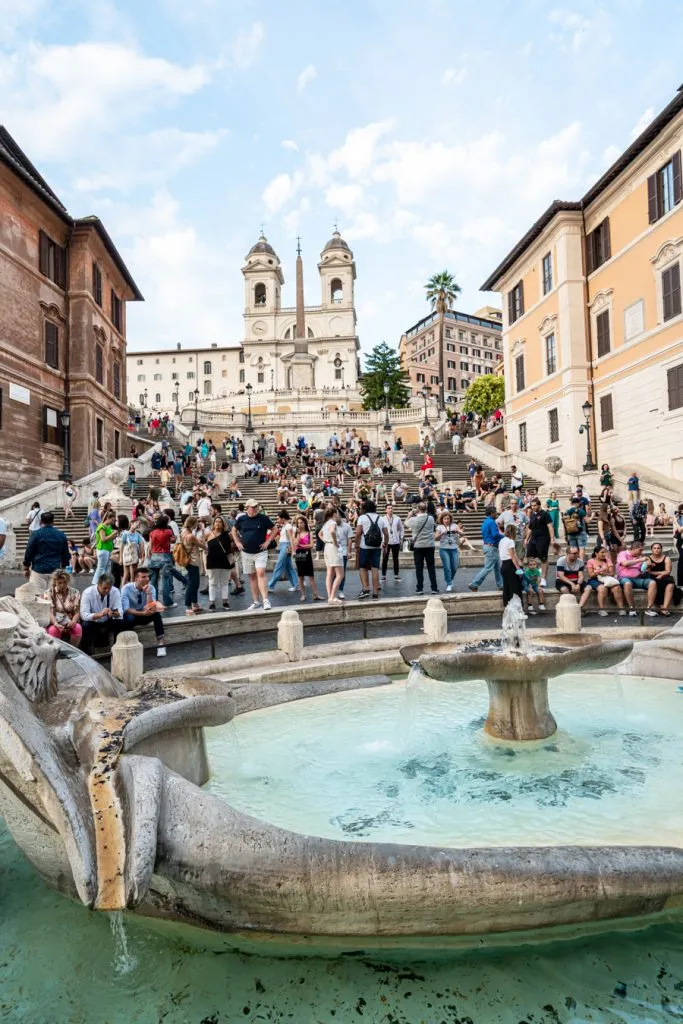
Is the water safe to drink?
Usually, yes.
We drink out of the tap just about anywhere in Europe.
In rare cases where the water is not safe to drink (usually in remote areas of southern and eastern Europe, or in very old buildings with iffy pipes), there will generally be large and obvious signs stating so.
If you’re worried about it, though, you can always ask your hotel concierge or host about it!
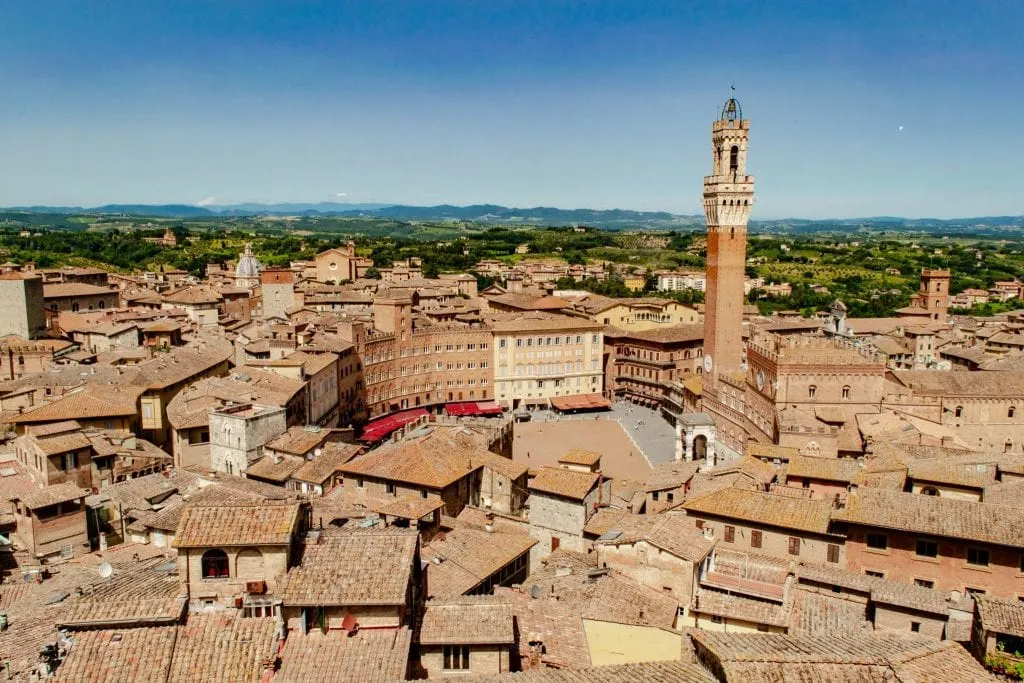
Is it worth going to Europe for 2 weeks?
This is a pretty common question, and honestly, I get it: with long and expensive flights, it’s easy to wonder if flying to Europe for “only” 2 weeks is worth it.
But yes, it absolutely is!
Two weeks in Europe is long enough that you’ll have plenty of time to get past jetlag, visit several destinations, and have a wonderful trip packed with memories.
Now whether or not it’s worth flying to Europe for just one week is a bit more controversial… but we love to travel Europe so much that we still say yes (for some people).

How extreme is the language barrier?
It varies significantly, of course, but generally, it’s not nearly as difficult as first-time visitors to Europe worry before they arrive (ourselves included).
We recommend learning basic phrases in the language of the countries you are visiting during your 2 week Europe itinerary, but this is usually more for good manners than out of necessity.
While you can absolutely find monolingual Europeans in virtually any country, especially in smaller cities and towns, the people employed in customer service roles and in the tourism industry in major cities–in other words, where most or all of your 2 weeks in Europe will likely take place–generally speak some English.

How many European countries should you visit in 2 weeks?
For most travelers, we recommend roughly 3 “base” destinations for a 2 week Europe trip, plus a couple of day trips from there to mix things up.
These can all be in one country (for example, here’s how we recommend spending 2 weeks in Italy ), or they can be in 3 separate countries!
There are plenty of exceptions to this standard layout, of course, but it’s a doable but exciting number of destinations to work with for most 14 day Europe itineraries.

When should I tip?
While this is very country and industry-dependent, generally speaking, tipping is not nearly as prominent in Europe as it is in the USA, and you’ll virtually never need to tip over 10%.
In some countries, you may also tip 5-10% at restaurants, while in others, you might round up the bill or leave nothing at all.
Frequently, a “service charge” will be automatically supplied to the bill which serves the purpose of a tip.
For tour guides, a 10% tip is common.
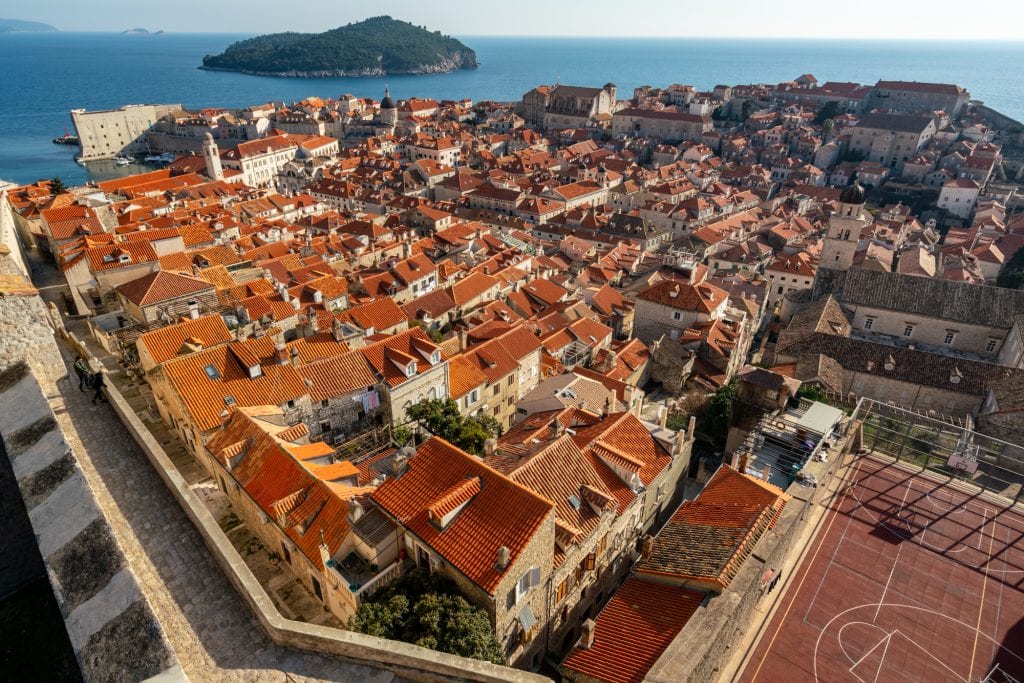
What’s the best month to visit Europe?
All of them, except August.
I kid–somewhat–but honestly, every single month in Europe has its perks!
For a concise answer, the late spring (April-May) and early fall (September-October) are considered ideal by most travelers.
August is specifically difficult because it’s not only very hot in many of Europe’s most popular destinations, but most Europeans take vacations then, so many places (especially in the mountains and on the coast) are at their priciest.
If we absolutely had to visit Europe only during one month for the rest of our lives, we’d pick September, though October is a very close second.

What’s the cheapest month to visit Europe?
It depends–trying to spot the northern lights in Tromso would be one exception to this, for example–but for standard first time Europe itineraries like the ones I outlined in this blog post, January and February are often the cheapest months to visit.
When the Christmas markets are over and the gray weather settles in, you can score great deals on vacations in Europe (and have plenty of room to stretch out at iconic monuments).
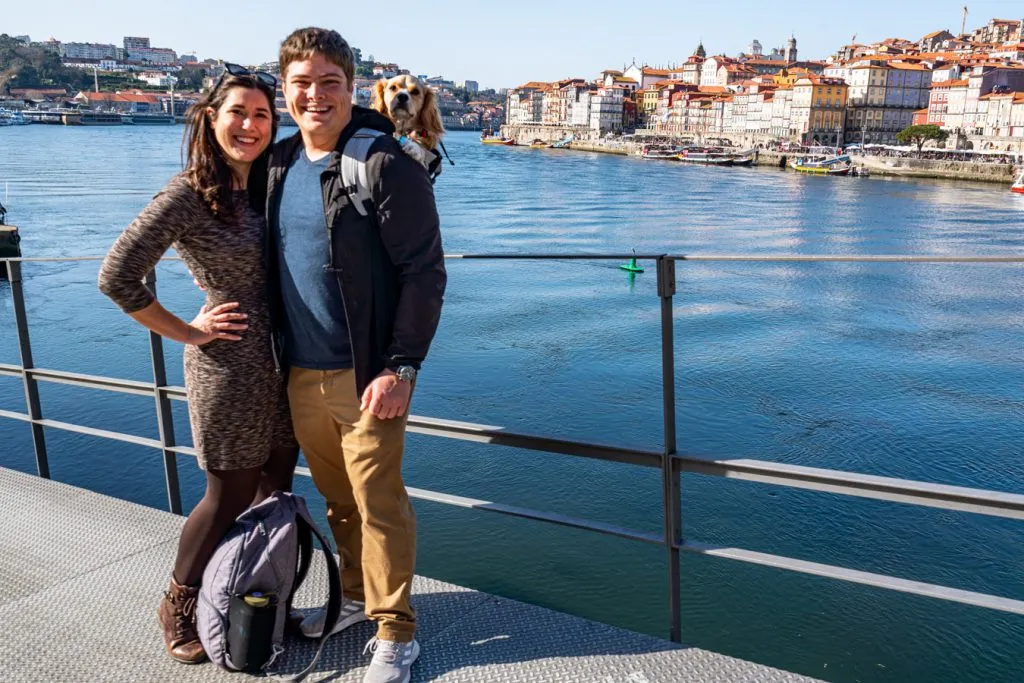
How far in advance should I book my trip?
For plane tickets, as soon as you can commit to dates!
Not only will this allow you to have more time to plan and budget with a bit of structure, but it will also spread out your costs a bit more.
During peak seasons, like coastal locations in the summer or popular destinations during the Christmas season in Europe , you’ll want to book your hotels as far in advance as you can commit to them as well.
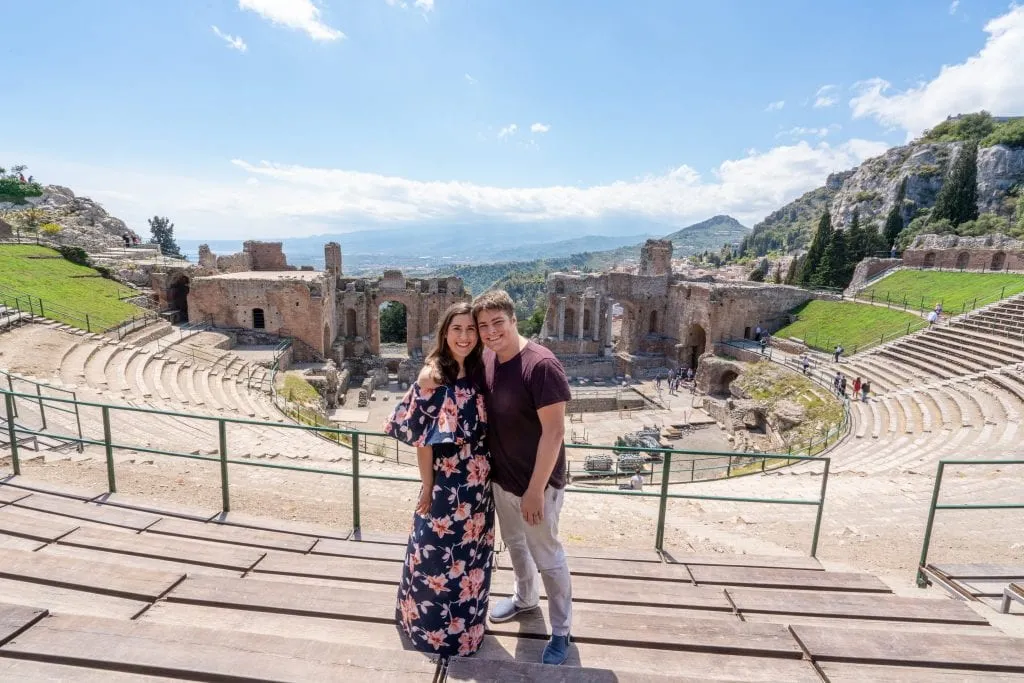
Can you do Europe for $100/day?
This depends a lot on the traveler, group size, etc, but my initial, instinctive answer is:
If you don’t include plane tickets to and from Europe, yes, absolutely, without a doubt–we’ve done it many, many, many times (as a couple).
The key is to shop for deals, visit during the off-season, not shy away from less common destinations (especially in Eastern Europe and the Balkans), and travel slowly.
The fewer destinations you visit, the cheaper a trip generally is!
If you want to stick to Western Europe, southern Spain , southern Portugal, and southern Italy can all be bargains (as compared to places like Paris and London) as well.
Here’s how we manage our travel budget.
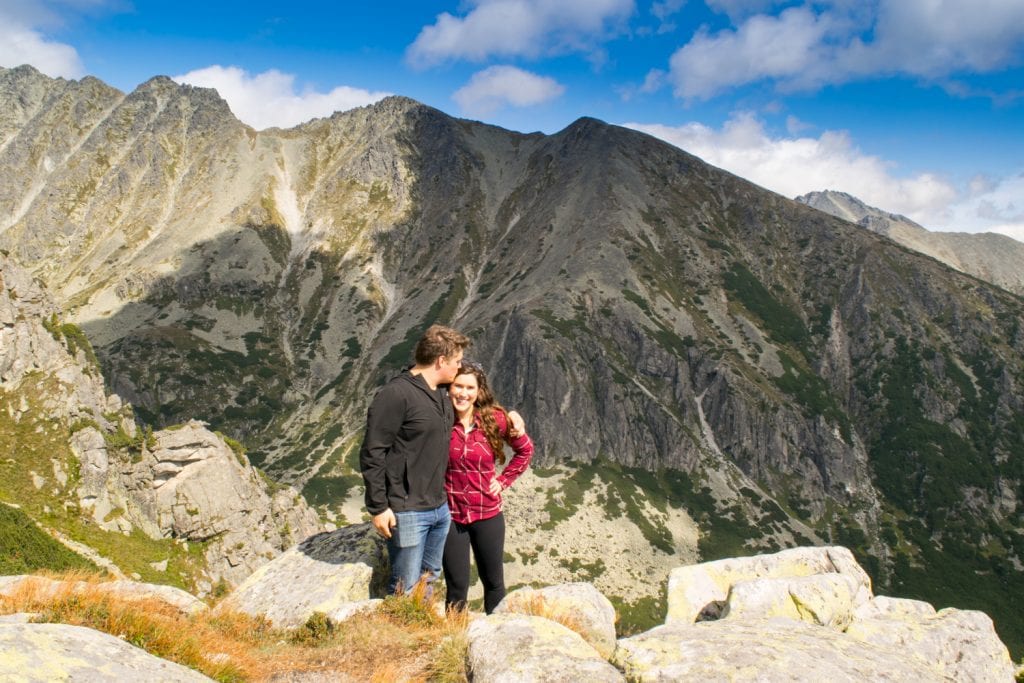
We’ve put together detailed packing lists for various seasons in Europe, so be sure to check out our complete suggestions for spring , summer , fall , and winter before you head off on your 2 weeks in Europe.
We go into far more detail on what to wear in Europe there !
To get you started, though, here are a few essentials that should definitely be at the top of your list .
Travel Insurance — We don’t ever suggest traveling without travel insurance–anything can happen, and it’s better to be safe than sorry during your 2 weeks in Europe.
Check travel insurance policy inclusions and prices for your trip here.
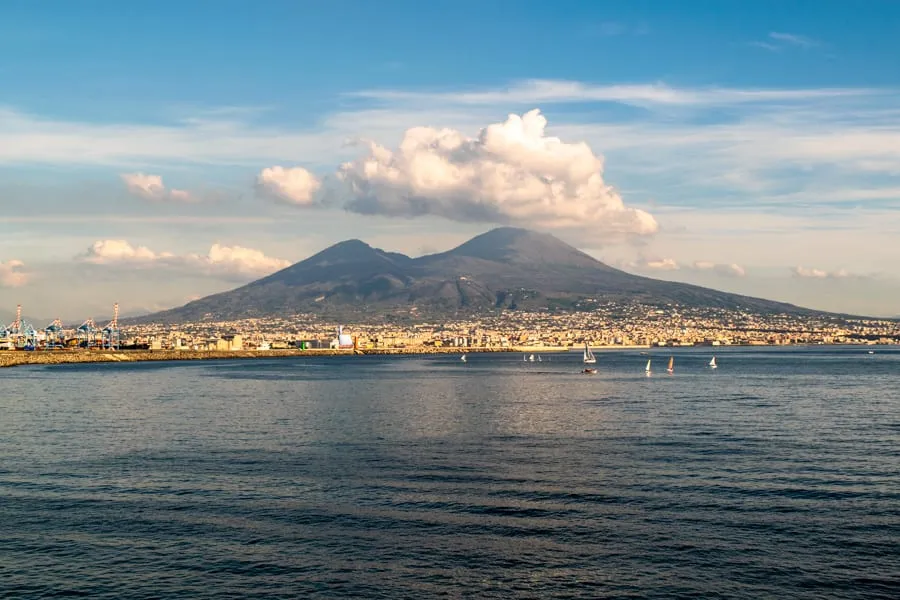
Pacsafe — We can’t recommend our Pacsafe enough!
This travel safe is affordable, sturdy, easy to pack, and will help keep your valuables safe in your hotel room (not that you should need to worry much about theft from your hotel room during your trip to Europe, but it’s better to be safe than sorry!).
Comfortable Day Bag — We currently use Pacsafe’s sleek anti-theft backpack and love it, but if you don’t want to shell out the cash for this trip, that’s totally understandable.
Just aim for something comfortable to wear, not flashy, and medium-sized–we used a Northface Jester backpack for years and loved it as well.

Travel Adapters for Europe — If you’re coming from outside of Europe, you’ll definitely need adapters for your electronics.
Be sure to check the requirements for any particular countries you visit–the United Kingdom, for example, is well-known for using different plugs than most of the continent.
Portable USB Charger — Don’t stress about your phone dying while you’re sightseeing!
Add a portable charger to your 2 weeks in Europe packing list.
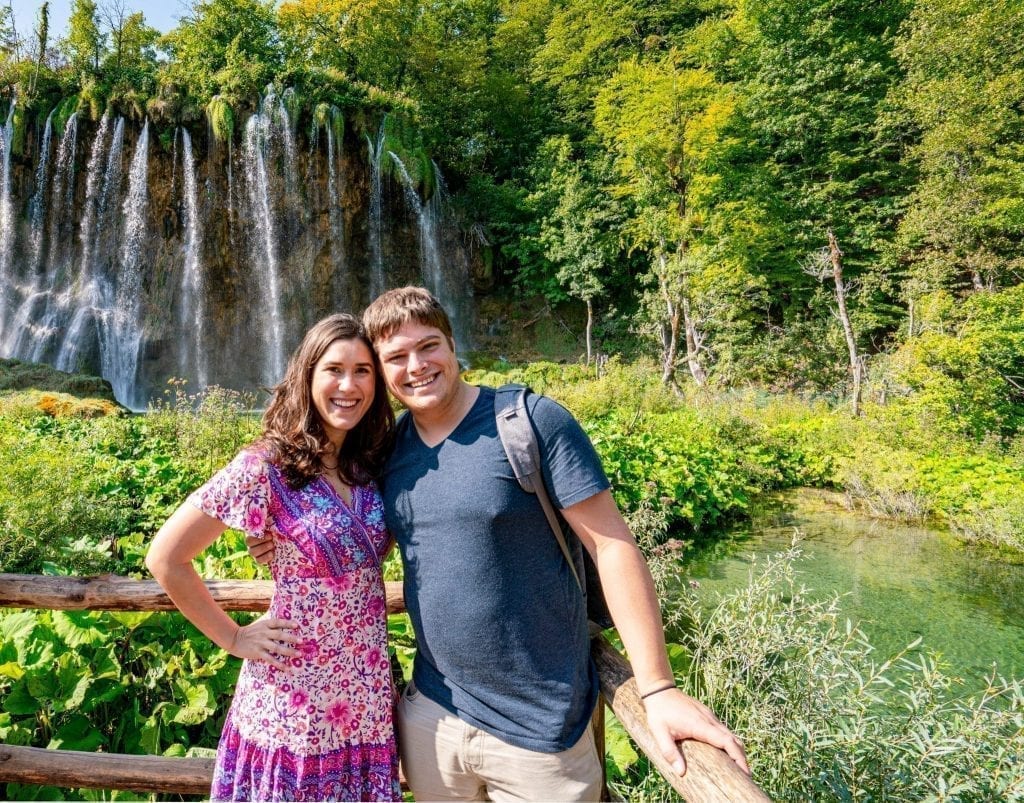
Hand Sanitizer — We carry this everywhere, and never been sorry to have it floating around in our day bag.
Travel Journal — If you want to keep a travel journal during your 2 week Europe trip but can’t commit to a huge amount of writing each night, I can’t recommend the One Line a Day Journal enough.
I’ve been using it for more than 5 years now (I’m on my second volume!) and I absolutely love it.

In the process of booking your Europe trip and eager to keep planning?
We’d love to help!
You can browse all of our general Europe blog posts here , find articles about specific places through our destinations page , or check out these guides:
- Your 13-Step Guide to Traveling to Europe for the First Time
- The Perfect 2 Week Spain and Portugal Itinerary (+ Essential Tips!)
- How to Travel Europe By Train: The Ultimate Guide (+ Tips!)
- 11 Quick Tips for Finding + Using Toilets in Europe
- Prague, Vienna, Budapest, Beyond: Epic Central Europe Itinerary
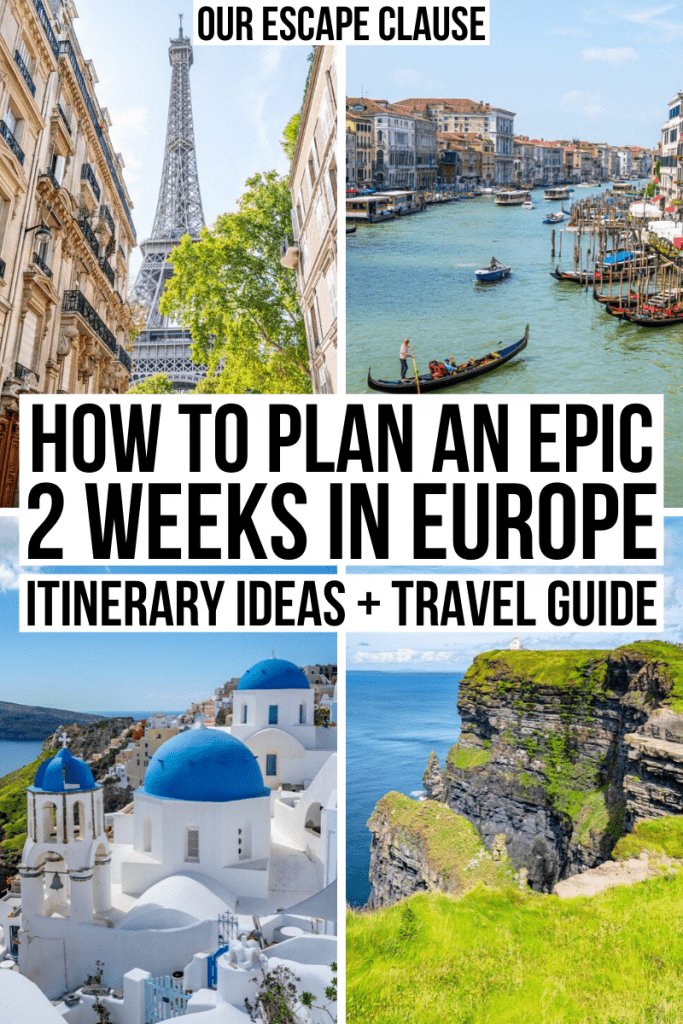
About Kate Storm

In May 2016, I left my suburban life in the USA and became a full-time traveler. Since then, I have visited 50+ countries on 5 continents and lived in Portugal, developing a special love of traveling in Europe (especially Italy) along the way. Today, along with my husband Jeremy and dog Ranger, I’m working toward my eventual goal of splitting my life between Europe and the USA.
58 thoughts on “How to Plan an Epic 2 Week Europe Trip (+ Europe Itinerary Ideas!)”
Great post! I’m actually working on my own 2 week itineraries through Europe post, but I might wait to publish until next year, when I’ve visited a few more spots. I totally agree that the key is to slow down and not switch cities every day or two. Three nights is perfect and sometimes more for the big cities. And yes, multi-city flights are so helpful so you don’t have to backtrack!
Thanks, Riana! We definitely love to slow down whenever we can. 🙂
Hi Kate! This is the BEST post related to Europe Itinerary out of the 1000 other posts that I have checked.
I am from India and I am planning for a trip in February end.
I definitely want to visit FINLAND (so that’s definitely in my list). From there, I am planning for Bupadest,Croatia OR Budapest, Prague OR Budapest/ Vienna.
Do you think this will be good for 2 weeks?
Waiting for your reply. And thanks a ton for such a beautiful detailed post.
Thank you so much, Akshay, that’s wonderful to hear!
That sounds like a wonderful itinerary. Croatia is a bit further out of the way than the other places, but it’s peaceful and beautiful during the winter and fairly simple to get to via a budget flight.
Hope you have an incredible trip to Europe!
Oh my goodness Kate, thank you so much for this post! This is exactly what I needed for my boyfriend and I to plan our trip to Europe in 2020. We want to visit Italy, Spain, France, and England but Greece and Croatia look amazing too! It’s so hard to decide.
Thank you, Jessica! So glad you found our blog helpful.
It is SO hard to decide, and honestly, it never gets any easier in my experience! All of those places are absolutely amazing, so no matter what you decide I’m sure you guys will have an incredible trip.
Italy, France, and Spain are really easy to pair together if you want to keep logistics simple, but really any combination of those would work.
What about panning around the seasons? Isn’t the Amalfi coast and Italy in general super hot during August?
It’s always nice to plan around the seasons when you can, but it depends on your availability!
Italy can be hot in August but it depends very much on where you go. It averages around 85 F / 30 C on the Amalfi Coast in August, which I have to admit isn’t enough to bother us, but it depends on where you’re coming from. It is high season there, though–very, very generally speaking, August is an expensive and crowded time to visit beaches in Europe because it’s when many Europeans tend to take their vacations and head to the coast!
Planning a trip in 2023-24 for my daughter’s graduation present. I was thinking maybe 2-3 weeks. On this trip, how much did you spend in total? I might end up being more because I usually pay for more luxurious than most, but will help with a little expectation of costs plus COLA increases obviously over the years. I figured I should start planning and saving now. lol
Hi Steven! We put this together based on years of traveling in Europe, so unfortunately I don’t have a specific figure to offer. So much varies, and can be impacted by where you go, how fast you travel (ie, how many times you change destinations), of course luxury as you mentioned, etc, etc. Generally speaking, for two people, I would say that $100/person/day is a good lower-midrange figure to calculate (excluding airfare), $200/person/day starts edging toward luxury territory, and of course, the sky is the limit.
That’s INCREDIBLY general, though. You’d be better off narrowing down which countries you plan to visit and calculating based on how long you plan to spend in each of them.
A few things to look at to give you an idea: price of hotels, price of day tours, projected cost of moving between destinations, and average cost of a meal. Those figures should give you a backbone to estimate a budget from.
What brand are the boots you are wearing in the photo “Comfortable Day Bag.” My wife loves them. Gift idea for when we go to Europe 🙂
Those are Ugg Kesey Motorcycle boots, and I love them too! Just got them out again for fall last week. 🙂
Hi kate I am planning to visit europe sometime in 2023(may/june) with my wife and son. Could you please guide me with an itinerary for 15 days Or so?? Swiss, italy, France, spain. After that we will go to a friend in England. If possible, the expenses involved as well. Thanks
Hi Abhijit! I’m not a travel agent, so that’s a bit beyond my scope. 🙂 Generally speaking, though, I’d recommend parring your itinerary down to 2 countries, or 3 at the absolute maximum. 4 countries in 15 days is a lot of travel! Luckily, all of those destinations pair well together, so you can mix and match fairly easily. Also very generally speaking, Italy and Spain will be the most affordable, and Switzerland by far the most expensive–but that depends a lot on where you go and what you do!
Hey Kate, All your pictures are amazing! What kind of cameras do you bring with you? And do you edit your photos? If so what do you use for that, they are all really bright, great pictures.
Hi Stefanie! Thank you so much! We’ve used different cameras over the years, but our main camera these days is a Sony A7 rIII. We love it, and yes, all the photos taken with it are edited in Lightroom. 🙂
Hi Kate, THANK YOU for the great article! I have booked my flights for a 2 week trip next spring, into London and out of Paris. I’ve been to both cities before, but do hope to get a few days in paris again. It’s stolen my heart.
What do you recommend in terms of getting from London to Rome, fairly quickly, and cheaply? I arrive into London mid-day and had hoped to just figure it out at the airport (Gatwick). Do you think that’s possible?
Thank you so much, Sarah! Your trip sounds fantastic.
I’d definitely plan on flying between London and Rome–it’ll be fastest and most likely cheapest, too. Check budget carriers like Ryanair, etc.
If you’re planning on flying out to Rome the same day you arrive in Gatwick, I’d absolutely recommend booking before you arrive. Be sure to double-check and make sure you’re flying out of Gatwick, too, or have time to change airports.
Hope you have an amazing time!
Oh wow I’m doing the same trip with my 3 sons. And unfortunately is the month that she said it’s the worst to go ..in August…oh well🤷🏽♀️ can’t do anything about it how but I am worried about the expense tho..
Love your information. I’m planning a trip to Italy and then we want to go to Salzburg as well in the summer of 2023. Our first time to Europe. We will be 60 in 2023 and we think we can plan this without going through a company. After reading your information, I feel comfortable. Two questions about hotels and transportation. What would you recommend for safe places for hotels in those two countries? We don’t need luxury but just comfort and clean. Would you recommend using rail between cities in Italy and it looks like you can travel from Venice to Salzburg by rail? Thoughts?
That’s great to hear, glad we could help!
Venice to Salzburg by rail is very doable in a day and a scenic journey. You’ll probably have to make a change, but that’s workable. Personally, we’d opt for it over flying in a heartbeat.
For hotels, I have several recommendations in our specific Venice and Salzburg posts (you can use the search bar to pull up everything we have on both cities). The centers of both places are quite safe, I wouldn’t worry much about that in a well-reviewed hotel.
Hope you guys have an unforgettable trip!
AWESOME Post!!!!
Please let me know if you have posted anything similar in 2020 or 2021. My wife and I are bringing our three teenagers and we will likely choose the Food & History trip. We both would like to speak with you if possible as we are planning our trip for December.
Hi guys! We don’t run tours ourselves, just provide information for independent travelers, but we’re always happy to answer a few questions about possible itineraries!
Hi Kate, THANK YOU for the amazing Pic ,for now i’m in South Africa Cape Town I’m planning a trip to Italy , France & Austria next year 2022 for 2weeks , Would you recommend using rail or Via Road way .
Thank you in advance & best Regards En vous remerciant d’avance et cordialement
Sounds like a fabulous trip!
Rail vs car depends entirely on where you’re going. If you’re sticking to cities, I’d recommend going by train. If you want to enjoy the countryside, a car could be helpful.
You can also mix-and-match, and rent a car for only part of your trip if you’re going to be in the countryside only part of the time.
Thank you for this awesome post, Kate! My husband and I are wanting to take our first international trip to Central Europe early spring 2022 and have reviewed your Central Europe post. What type of difficulties have you faced with international travel during COVID-19? Any issues with a country on your itinerary going into lock-down or no longer allowing tourists from the US?
We haven’t personally run into any issues with lockdowns interrupting our plans but of course, it’s always possible and things are changing constantly.
Most, if not all, countries in Europe are accepting vaccinated and/or tested US visitors now and haven’t shut their borders to US citizens again since the initial reopening. All of the countries included on our Central Europe itinerary are currently among them.
In addition to entry, some countries are requiring proof of vaccination in order to do certain things like eat in restaurants or check into hotels. Portugal, where we are now, is among them. It’s a very simple process as long as you have the paperwork in order!
Generally, if you plan to visit Europe from the US in 2022, we recommend arriving with proof of vaccination, a negative COVID test (check regularly for specifications as your flight gets closer), flexibility, and the expectation that you’ll wear a mask indoors and potentially in crowded outdoor areas.
I am not a public health expert, of course, and European countries all set their own restrictions, but in the early stages of planning, that’s what I’d keep in mind!
The reaction that we’ve seen from readers who visited in the second half of 2022 has generally been that it’s easier than they expected, but as we’ve all learned way too much in the last 2 years, none of us can predict the future!
Thanks so much, Kate! It definitely seems like flexibility is key as well as continuously monitoring each country’s individual rules for a multi-country trip. I think right now Hungary isn’t accepting tourists but fingers crossed that will change soon so we can replicate your trip. 🙂 Cheers to more adventures for you in 2022!
Hi Kate, my family is in the beginning phase of planning our first international trip and have decided on Europe! I really liked your recommendation of arriving and departing from different airports and I think departing from London would make sense (we’ll probably want to spend the most time there). All we’ve decided is to vacation for somewhere between 2-3 weeks, and we want to see London and Ireland (oh and I want to stay at least one night in a castle hotel!). Would you have any recommendations on destinations or experiences to share? Thanks!
How exciting–nothing like your first trip abroad. 🙂
We actually still haven’t been to London, which is a huge shame! Fingers crossed that 2022 is the year.
Ireland, on the other hand, is one of our absolute favorites! If you search “Ireland” on the top right corner of the blog (or on the pop out menu on mobile), all of our blog posts will come up, but this is a great one to start with: https://www.ourescapeclause.com/10-day-ireland-itinerary-ireland-road-trip/
We spent a night in this castle (slash manor house) and had a fantastic time: https://www.ourescapeclause.com/belleek-castle-county-mayo-ireland/
Ireland is one of our favorite places for road trips on the planet. You’ll love it!
Great post, thanks!
Need your advice here 🙂 We will be landing in London, staying there 3 days, then train to Paris (staying in Paris for 3 days). We fly back home from Lisbon and have 3 options: night train to Nice (spend some time there and then a few days in Lisbon), fly to Napoli (spend some time there and then fly to Lisbon) or fly to Lisbon and discover a bit more of Portugal… What would you recommend?
Oh and we are travelling with two teens who have never been to Europe… I’m trying to pack as much stuff, but wonder what would be too much :/
That’s a lot of hard choices! Each and every one of those destinations is a delight (and we’re living in Lisbon right now).
I’d opt for Nice if you’re looking for coastal views, picturesque villages, and something logistically simple. Nice is a delightful city and the day trips to nearby villages like Eze as well as Monaco are phenomenal. It is the most formal and pricey of the 3 cities and will have a resort feel near the coast in the summer.
Naples is a much less manicured city, it’s a love-it-or-hate-it place (we love it). I’d argue that it has the best food of the 3 options, but those are fighting words and many would disagree. The day trips are equally stunning but very different. If you or your family has an interest in ancient ruins, Pompeii and Herculaneum are unmatched. Visiting the Amalfi Coast or nearby islands is also doable, but it’s a trek if you’re staying in the city center. Keep in mind that there’s no train service to the Amalfi Coast proper, you will need a bus, car, or ferry to get beyond Sorrento.
Lisbon is delightful but honestly, our favorite parts of Portugal lie outside the city. Porto, in the north, has a much more regal feel while Lisbon is fairly spread out. The Duoro Valley (also in the north) is magnificent for port tastings and views, Sintra’s palaces located just outside of Lisbon are must-sees, and if you want to head to the south, the Algarve is incredibly striking.
Logistically speaking, I’d make sure you have at least 2-3 days in Portugal at the end of your trip before flying out, regardless. With 3 full days, you can spend 2 in Lisbon and take one day trip (probably to Sintra but the coastal town of Cascais is also easy and lovely).
If you have time to do that and add another stop for 3 full days, I would check detailed flight and train schedules and let that guide you–the logistics alone may make the choice for you.
That got a bit long, but I hope it helps! 🙂
Thanks a lot for the precious information!
Hi Kate! I know you said you are not a travel agent but are open to a few itinerary questions! We have recently done a European Cruise which hit almost all of Italy! We are wanting to go back independently. I am highly interested in Ireland, but would also like to see Paris. My husband is interested in Netherlands, Germany, Switzerland. With a 14 day trip wanted, what areas do you think we should do (based on best places to see, with allotted time?)
& Austria! 🙂
That is a lot of very different places, but you’ll definitely be able to pull together a great trip! I’d recommend narrowing it down to around 3 destinations, 4 if you’re comfortable moving quite fast and two of them are close together.
Ireland is definitely the odd one out geographically, but if you use two one-way tickets instead of flying in and out of the same airport, it can work (it’s what we did on our first multi-country Europe trip many years ago).
Since you’ll likely have 1-2 flights in this itinerary regardless, which destinations you pick can come down to a combination of your absolute favorites and what makes logistical sense. Paris is a very popular place to fly in and out of, so it’ll likely be easy to work in.
I’m not sure which parts of Germany your husband is interested in, but parts of western Germany have simple train access to The Netherlands and/or France.
As far as what places I’d personally visit, Ireland and Paris are two of my favorite places on the planet, so I’m biased! Switzerland’s mountain landscapes are truly beyond belief, so if you’re looking for nature (and aren’t concerned about the budget), it’s a winner.
Germany is also gorgeous, both its nature and many of its cities, though it’s quite big and varied–with a big trip like this, you’ll want to choose one small corner of it (Bavaria is a popular first stop, but you can also look at places along the Rhine, which makes more sense if you’re hoping to visit Paris or The Netherlands by train before or after).
The only part of The Netherlands we’ve had a chance to visit so far is Amsterdam, which is visually stunning but will be extremely crowded–probably more so than anywhere else you’ve listed, as there’s less room to spread out there than in, say, Paris.
When it comes to your itinerary, I’d recommend that each of you pick one place that is your absolute first choice, plan on a trip to those, and then fill in the 3rd and possible 4th destination based on what makes logistical sense as far as what planes/trains/buses are available to the spots on your shortlist.
Also, if you do need to book high-speed train tickets, book them ASAP, as prices increase as your trip gets closer.
What a wonderful blog, just when I feel like I’ve read them all I find another really helpful article. Heading to Europe for 1 month in May. Keen on Spain, definitely Italy, and probably 2 days in London and Paris respectively (arrival and departure). Feel like we have space for one more place and can’t figure out which is the better option (Portugal, Croatia or Greece) for potentially 5 days? Any recommendations?
Thank you for sharing all your wonderful insights.
That’s tough, because all 3 are fantastic but very different!
I’d probably recommend (if I had to choose), Greece for beaches/swimming and small towns, Portugal for cities, and Croatia for a combination of all. But we adore each and every one of them, so hard to go wrong!
Portugal fits nicely into your Spain section geographically, so there is that to consider.
Hi, Kate! Super love your blog. I just booked a trip to Europe for August, was thinking of going to France, Spain, and Italy in 2 weeks. Or should I cut it down to 2 countries? Hope to hear from you!
Less relevant than the countries are the destinations within them–I wouldn’t go more than 4 places in 2 weeks, max.
So if you’re hitting up Paris, Barcelona, and Rome, for example, your plan is fine. If you want to go to 2-3 places within each country, it’s time to cut it down. 🙂
HI! Thanks for the fantastic blog! My husband and I are planning our first trip to Europe from Canada and are feeling quite overwhelmed by all the choices! His family is from Holland, so we are spending one week touring with them for the first week of May, and then will stay an additional 2 weeks after that. What would you recommend? We are not keen on France but everything else looks so great, and it was good to read that you don’t recommend trying to fit everything else in, which is what we might otherwise be trying to do. Any suggestions for the 2 weeks after Holland?
Hi Michele,
That’s so exciting! You guys are going to have an amazing time.
Without knowing your tastes or the season you’re traveling, the sky is truly the limit when planning your itinerary! Anywhere that sounds exciting to you is going to be worth it. With 2 weeks, I’d opt for 1-2 countries and no more than 4 base destinations (3 would be even better).
I started trying to make a list of some of our favorite countries in Europe for you, but just backspaced the sentence because I was ending up just listing every country, LOL. But Italy is one of our special favorites that we would recommend to just about anyone!
We will be in Holland for the first week of May so we could do the other two weeks either before or after that (or split one before and one after). The suggestion to cut down to less rather than more is helpful – it’s our first time to Europe and everything looks like something we should see! We are 50 and really like most things – some scenery, some castles, etc. Do you think it would be do-able to do Germany and Italy on top of Holland? Any specifics on what you love in Italy? I am really NOT a crowd person, so we’re really going to try and avoid huge crowds or I’ll lose my mind 😉
A week in Germany followed by a week in Italy is definitely doable!
Personally I’d opt for either southwest Germany (Black Forest, Heidelberg, Burg Eltz) or Bavaria.
We love virtually all of Italy, but if you want something somewhat more offbeat that’s in the top half of the country (for geography reasons), I’d recommend looking into Emilia-Romagna.
It’s the region east of Tuscany, and has similar appeal with far fewer tourists. It’s also gorgeous and a culinary dream–Emilia-Romagna is the origin of many iconic foods like parmigiano-reggiano and traditional balsamic vinegar.
A few destinations in the region to poke into as you research: Bologna, Parma, Ravenna, Ferrara, Modena. The micronationa of San Marino is also accessible from there!
Kate-what a remarkably comprehensive, detailed and resourceful blog! I love the considerations offered from different perspectives. My family of 4 (including 2 kids ages 10 and 6) will be traveling to Paris for the second half of August for 2 weeks to visit family. We have already been to Paris a few times so this time around, I would like us to explore more of Europe for some of the time, ideally via trains. I am thinking of staying in Air B&B’s as we have been enjoying that accommodation when we travel locally within the US but would love your perspective on this (vs hotels) considering the cultural and language differences in certain destinations as well as any recommendations for either you may have. Based on some research, some destinations I came cross purely based on travel distance via train from Paris are Switzerland (3 hrs), Barcelona (6.5 hours! would probably have to be an overnight train for the kids), London (2 hrs, have family we can see), and Greece (2 hours), Belgium (1.5 hrs, also some family we can see). My goal is to show my kids/family different cultures, ways of living and experience foods, interesting architecture, beautiful cafe’s etc. Also curios if any of these can be “day trips”. I do not have specific destinations yet to see at these locations and would love your input. From your article, it sounds like limiting to 2 destinations maybe best (outside of Paris) and your thoughts may help me narrow down where to focus. Thanks so much and look forward to reading your insights on this.
So glad you found it helpful, Tez! Sounds like you guys have an amazing trip planned.
I’m sure you already know this, but August is the height of peak season for European travelers visiting the coast and mountains, so some destinations will be quite crowded and expensive (book your hotels and train tickets ASAP, especially in a group of four).
I’m assuming Greece is a typo, so I’ll pass over that one–pretty sure it’s much further than 2 hours even by plane. 🙂
Luckily Paris is a huge train hub for getting across Europe, so you have plenty of options! Most of them will take longer than it looks on the map once you navigate connections, train times, etc. We highly recommend using Omio to search exact routes and dates, and keep in mind tickets will increase in price as you get closer. With kids, you’ll probably want to search by the fastest available routes.
London, Belgium, and Switzerland all jump out at me from your list–simple to access and incredible. The Jungfrau region in Switzerland is pure paradise, though a bit further away.
You may also want to look into Amsterdam, it’s only 3.5 hours from Paris by train.
With the right schedule, you can get as far as Venice in a day from Paris (we’ve done this), so Italy is an option for you as well, as is Germany.
Essentially, the more you stick to major cities, the easier it will be to navigate solely by train. Smaller towns and cities are often connected, but you’ll virtually always need to pass back through the main city of a region to make your way back to Paris.
You may want to take a look at this post as well, we talk a lot more about train travel here: https://www.ourescapeclause.com/travel-europe-by-train/
Hi Kate Love your blog, lots of useful information. My husband and I are planning a 10 day trip to Europe end of April to early May. At the moment we are looking at flying from the US RT to Paris. We’re thinking of possibly going to Amsterdam and Belgium as well. this will be our second trip to Paris. We are open to other suggestions. Do you have any other recommendations?
Happy to be able to help, Daisy!
Paris + Amsterdam + Belgium is an excellent itinerary and doable in 10 days. It’s actually a route we recommend ourselves. We have posts on all those places, but here are our suggestions on spending 3 days in Belgium to give you an idea of what you can cover in a short time frame: https://www.ourescapeclause.com/3-days-in-belgium-itinerary/
Paris is extremely well-connected by rail (you can be in Venice in 9 hours or Munich in under 6, for example), so as far as ideas for other destinations go, the sky is the limit!
If you choose to extend your original itinerary, a few additional places that you might consider along that route are Strasbourg/Alsace, Heidelberg, and Cologne.
Thank you for your blog.. We are travelling to Europe for 14 days the end of May. Flying Calgary to Dublin, doing a couple days at the Isle of Man races then hopefully, London, Paris, Rome. Your blog shares what to pack for clothing in Summer, Fall and Winter, what would you recommend for spring? We are trying to decide if we take the trains or flights from London, Paris and Rome. We aren’t planning any beach time. Also, what do you recommend for luggage? I’m leaning towards a rolly carryon but have every size hard shell case and multiple back country camping packs.
So happy you find it helpful!
Funny you mention spring packing ideas–I’m actually working on a post for that right now. It will hopefully be up next week. But off the top of my head, you’ll definitely want a travel umbrella and to pack in layers. The end of May is a beautiful time to be in much of Europe but the weather could be unpredictable–you may want sundresses on some days and light jackets on some evenings!
As far as luggage, either is completely fine. There are advantages to both backpacks and suitcases, but as long as you’re comfortable carrying your bag up and down staircases, carrying (or rolling) it down the street for 10+ minutes, and loading it into and out of trains and/or cars, you’re good.
As far as trains vs planes–London to Paris can definitely be a train, but do a time and cost-benefit analysis between that and a plane (depending on the dates, your travel style, etc, you may choose either). Paris to Rome is better done as a flight!
Thank you very much for sharing your wisdom. We are really excited.
Hi Kate, Thank you so very much. You have provided an AMAZING amount of helpful information. Can you pretty please help me with the best location to travel to 1st, 2nd, 3rd & 4th and the best way to get to the locations? (We will NOT be doing any driving).I’m a 55 years old woman. I live in USA. I’m planning the 1st International trip for me and my husband for either the 1st or 2nd week of September 2023. My biggest challenge is knowing where to start and end the trip, based on logistically traveling to the different destinations, as well as, the best way to get to each destination.Here are the the things I have planned. I know you mentioned you’ve never been to London but i’m hoping you can assist based on me providing the area I want to be in. *LONDON-7 NIGHTS I’m a theatre/adrenaline junkie person so Theatreland West End of London near (North of the River Thames. 3-Plays (evening events) 2-Hour Sherlock Holmes museum (near West End) 1-Hour Ghost Bus tour (nearest tube stations are Embankment and Charing Cross) 4-Hours-day walking tasting tour (near London Bridge Station) 1-day Harry Potter Studio Tour (Leavesden London) 2 -Nights Theme park “Alton Towers” located Alton, Staffordshire near Manchester and Birmingham. (stay onsite at the parks resort)*PARIS-3 NIGHTS Moulin Rouge (BD de Clichy area) L’ATELIER DES LUMINERES -DIGITAL ART MUSEUM I would like to visit just one of the haunted castles in Paris (depending on recommendation) Château de Puymartin Château de Brissac Château Lagorce Château de Chambord Château de Versailles* GERMANY 3 NIGHTS-Phantasialand Theme park (located Bruhl Germany) Stay onsite at the parks resortThank you for any advice or suggestions you can provide.
Hi Melvina,
I definitely can’t speak to getting around London in detail, though a combination of the tube and buses will likely be doable! You can add cabs as needed as well.
In Paris, the metro is so dense you should have no issue getting around. Assuming you are planning to do the usual Paris sights (Eiffel Tower, Louvre, etc), our Paris itinerary might be able to help you out (and has hotel recommendations): https://www.ourescapeclause.com/3-days-in-paris-itinerary/
For the chateaus, Versailles is by far the closest to Paris and you can get there by RER train. Château de Chambord in the Loire Valley is doable via an organized day trip like this: https://www.getyourguide.com/paris-l16/loire-valley-castles-wines-day-trip-from-paris-t70389/?partner_id=1OI4D21&utm_medium=online_publisher&placement=content-middle
The others are way too far from Paris for day trips, so I’d focus on Versailles and/or Chambord this time.
Hope you have a wonderful time! 🙂
Thank you so very much.
Hi, thank you for this comprehensive post! We are planning a trip this summer and will be going to Paris, Rome, Florence and Amsterdam. My question is about changing money. We were in Iceland last year and used Apple Pay or credit card everywhere, never needed cash and didn’t get any. Is that possible in either France, Italy or Netherlands? Should I plan on getting cash for taxis, tips, etc?
Happy to help!
I’d definitely recommend having some cash with you as you travel, especially for small purchases like coffee, gelato, etc. Most hotels in Italy will require the city’s tourist tax in cash, too. Some taxis and tips will be best done in cash as well, and occasionally very small, offbeat tourist attractions.
While cash-only restaurants definitely aren’t the norm in any of those cities, they’re not unheard of, either.
Overall, I’d say you’re most likely to avoid cash entirely in Amsterdam and most likely to use some of it in Rome and Florence, but that’s not a hard and fast rule by any means (I used some cash on my trip to the Netherlands last spring, for example).
We find that the easiest way to get cash, by far, is to withdraw Euros from any bank’s ATM once you’re already in Europe (avoid Euronet–use an ATM branded by an actual bank). Luckily, since all the places you’re visiting use the Euro, you won’t need to worry about changing currency beyond that. 🙂
Hi Kate, thank you for this great, and helpful post! We’re are planning a trip to Europe for the first time in September for next year in 2024. My plan is to visit Spain, Italy and I’m still undecided on the third country to visit. What country would you suggest or advised that we can visit that has beautiful scenery, mountains, lakes, etc. We like the city, but we also want something where we can hike out in nature like Iceland maybe, Switzerland. Any tips on that? Also, is it cheaper to stay in hotels, Airbnb’s? Thank you!
Spain and Italy–two of our favorites! You guys are going to have a great time. 🙂
The hardest part about picking a third country with your criteria will be narrowing it down between many excellent choices–you really can’t go wrong.
Switzerland is absolutely spectacular, if the Alps are what you’re looking for, it’s iconic and hard to beat in every category except the price tag.
Germany and Austria also offer beautiful mountains and lakes and are a more budget-friendly than Switzerland.
The French Alps are also wonderful–towns like Chamonix and Annecy offer plenty of mountains, lakes, etc.
And, for a a wild card, you don’t necessarily need a third country at all: the Dolomites in Italy have everything you’re looking for.
Any of those that appeal to you and fit your budget will be a great addition to your trip. They’re well-connected to Italy and each other by train, the travel times aren’t too far, and they’re all phenomenal places to visit.
One small thing to keep in mind if you’re planning to travel by train a bunch is that Spain isn’t very well connected to the rest of the places you’re considering by rail–you may want to consider flying in and out of there.
Iceland is definitely far out of the way, but assuming you’re traveling to and from North America, look into the Icelandair stopover program if you want to add it on! I will say that while it does offer mountains, lakes, and beautiful scenery, it’s a very different vibe than Switzerland or any of the surrounding Alpine countries, so take a close look at the specific destinations and see if it’s what you’re looking for. It’s a stunning place, just very different than the others. Here’s one of our Iceland posts if you want to get a feel for it: https://www.ourescapeclause.com/10-day-iceland-ring-road-itinerary/
Leave a Comment Cancel reply
- Search Please fill out this field.
- Manage Your Subscription
- Give a Gift Subscription
- Sweepstakes
Here's How to Plan Your Very First Trip to Europe, According to a Professional Traveler
Heading to Europe for the very first time? We've got some advice for you.
:max_bytes(150000):strip_icc():format(webp)/Skye-Sherman-author-pic-2000-d5983bed0cce41e1bafcdb645c665479.jpeg)
Whether you study abroad , backpack solo, or go with a group for your first trip to Europe, it's an experience that will change your life — and alter your perspective in all the best ways — forever. Even if you visited the continent with your parents as a kid, your first "solo" adventure to Europe as a young adult promises to reward you with rich memories. From digging into freshly baked pizza in Italy to picnicking beneath the Eiffel Tower with a still-warm baguette, it's a trip filled with experiences you'll talk about for the rest of your life.
Though I had visited Italy with my parents as a kid, my own first adventure to Europe as a young adult was in 2015. I was 21, newly married, and heartbroken at the loss of my father four months earlier. I had been studying British literature and European history in my college classes and was eager to make real-world connections to my curriculum. In preparation, my husband and I watched every Rick Steves video on YouTube and movies like Under the Tuscan Sun , Midnight in Paris , Notting Hill , and Eat, Pray, Love . The spring semester of my junior year ended, and we set off with nothing but backpacks containing a few (and I do mean a few) sets of clothes, a budget of about $100 per day, and five short weeks to see it all.
Besides opening our eyes, pushing us to our limits, and expanding our perspectives in ways that nothing else could, that trip ignited in us a shared passion for travel — and for encouraging others to do the same. Read on for tips for planning your first trip to Europe like a pro.
Get Around With a Eurail Pass
Do you need a Eurail pass to get around Europe? Maybe not, but I devoted a large chunk of our shoestring budget to it on my first trip, and I've bought one for every extended trip I've taken to Europe since then — even now that I've hit the ancient age of 28 and no longer qualify forEurail's discounted youth pricing — so that should tell you something.
Most of Europe is well connected via a vast rail network spanning the continent. A Eurail pass — available exclusively to non-Europeans — makes it hassle-free to hop between countries and even navigate regional trains. Depending on your travel plans, you can purchase passes for specific countries or regions and choose whether you need unlimited use or a set number of travel days.
Remember that once you're in Europe, hops between major cities are often surprisingly low-price (I've seen flights for as little as $6), but often a train is the best choice when you factor in time, convenience, price, and the chance to watch the world go by from your window. Splurge on first-class passes , and you'll always have a comfortable seat.
Plan Your Trip Geographically
Make a list of all your must-hit places, then look at where they fall on a map — connect the dots, and you have your route. Maybe you start in Spain and work your way east, or fly into London, take the Chunnel to Paris , and work your way down to Italy. Whatever you choose, ensure that your route makes sense geographically so you don't waste time (or money) crisscrossing the continent.
Keep Seasons in Mind
Europe is a large continent covering a variety of climates. It may seem obvious, but if you're planning a summer trip, don't expect to frolic in fields of Dutch tulips (that happens in the spring) or ski the Austrian slopes (that would be a winter thing). And as enchanting as the European Christmas markets look on Instagram, don't be disappointed when you put two and two together and realize that they'll only make it to your feed if you're going to Europe in November or December.
An Italian summer is nothing short of sweltering and ice-cold AC isn't a given, so if you're planning to cover all of Rome on foot at high noon, you may want to rethink that. (I learned this the hard way and damn near had a heat stroke.) A midday siesta is common in countries like Spain and Italy for a reason, so do as the locals do and take the summer weather into account before you overexert yourself.
Book in Advance
A PSA for type-A travelers like me: You don't have to have your entire trip planned out before leaving home. (I had a down-to-the-minute itinerary mapped out for my type-B husband and me on our first venture to Europe, and he almost left me as I dragged him from museum to walking tour to restaurant reservation and back again.) Part of the fun — especially if you have a Eurail pass — is going where the wind blows you and deciding what appeals to you upon arrival.
Pro tip: Taking a bus tour on your first day in a destination is a great way to get the lay of the land and cover a lot of ground quickly (without exhausting yourself).
Make a general timeline and book your departure flight from the USA to Europe before you leave home, but perhaps wait until you've hopped the pond to book your flight back. You may decide to stay longer in a particular country or run out of time to make it all the way to Portugal, where you originally intended to fly out of. Create a general outline, but leave some of your trip open and stay flexible.
The one thing you may want to do in advance is reserve hotels, hostels, and Airbnbs because they can fill up during the popular summer months. That's why it's helpful to have a general idea of where you'll be and when — just don't cling to your plan at the expense of a spontaneous sidetrack or two.
What to Bring to Europe
Start working on your packing list a few months beforehand. What you bring will vary depending on destinations, length of trip, and your fussiness level, but there are a few non-negotiables.
Don't leave home without:
- Your passport
- Converters for European outlets (both UK and EU, as needed)
- A credit card and/or a debit card for getting cash out of an ATM (you'll get a better rate this way than doing it through a currency-exchange counter)
- COVID-era items such as your vaccine card, printed copies of your negative COVID test results (if required) , and a few self-test kits
- A secure envelope to hold all of these important documents (including a few color copies of your passport) in one place
- An international plan added to your phone (unless you're a T-Mobile customer)
- Global Entry (not necessary, but a definite plus when you return to the USA)
You'll also find life a lot easier with the Google Translate app and the XE currency conversion app on your smartphone. Before you depart, download the countries you'll be visiting to ensure offline availability. The Been app , where you can track which countries you've visited and how much of the world you've seen, is another fun app for travelers, especially on a trip like this where you'll be checking off a lot of countries.
And a note on packing light : You'll need nothing more than a backpack and a carry-on, max. Trust me. (There are laundry rooms at every hostel and laundromats in every city.)
Where to Go on Your First Trip to Europe
If you only have time or the budget to see a few places, start with the basics . You've likely learned about major cities like London, Paris , and Rome since you can remember — now's the time to see them through your own eyes.
Once you have the must-hit places on your itinerary, plan some additional stops according to your interests. There's a lot to see in Italy outside of Rome — I'd include Venice, Cinque Terre or the Amalfi Coast, Florence, and the surrounding Tuscan wine country on any trip to Italy, especially for first-timers.
Maybe you've been digging into your ancestry and found that you have Hungarian heritage like I have — Budapest was a shoo-in for us this summer — or perhaps you've always dreamed of hiking the Swiss Alps, clinking glasses in a German beer hall, or soaking up the sun in the Greek Isles .
Maybe you want to visit Poland and pay your respects at Auschwitz — I consider this sobering, heart-wrenching experience a must — or try every waffle you come across in Belgium. You can do it all if you have enough time, but start by arranging a shortlist with your top priorities and then tack on additional destinations if you have space.
These are some of the best places to visit in Europe, but the best destinations for you will depend on your interests, priorities, and goals. If you're purely on "vacation" with no remote work or school obligations, two to three days in each place should suffice, but if you can't devote your full attention each day to exploring, then you'll want a little extra time in each city to do it justice.

3 Weeks in Greece Itinerary
DISCLAIMER: This post might have links to travel services and products that we enjoy. We might make a commission from it at no extra cost to you.
Vacationing in Greece is like stepping into a mix of amazing beaches, ancient ruins, and super tasty food. Expect to see incredible places like the Acropolis in Athens, and get ready to be wowed by the beautiful islands, like Santorini with its famous sunsets.
Greek food will be a highlight, with yummy dishes like gyros and fresh seafood. People are friendly and love sharing their culture. The weather’s usually sunny and perfect for exploring or just chilling by the sea.
If you’ve been dreaming of seeing the place where civilisation was born and love history, Athens has so much to offer. It’s where you’ll see the Parthenon standing over. You’ll also get to enjoy the serene sunsets of Santorini and the stunning island of Crete.
The first time I went to Greece was a stopover during my European cruise. I also spent two days there, I fell in love right away and I knew I had to come back.
Spending 3 weeks in Greece means you can see its historical sites around Athens and make your way north and explore Meteora and Thessaloniki. Finally, finish your itinerary by visiting every stunning beach and island down the Mediterranean and Argean Sea.
Greece is one of South Europe’s famous destinations that you must visit at least once. If you want to see many places in a single trip, our 3 weeks in Europe itinerary and 3 weeks in Eastern Europe might be able to help you, especially if you’re on a budget.
THINGS TO KNOW BEFORE GOING TO GREECE
It’s not easy to plan a trip to a place you’ve never been. Perhaps the travel information below will help you visualise and start planning and creating an itinerary for your upcoming Greek holiday.
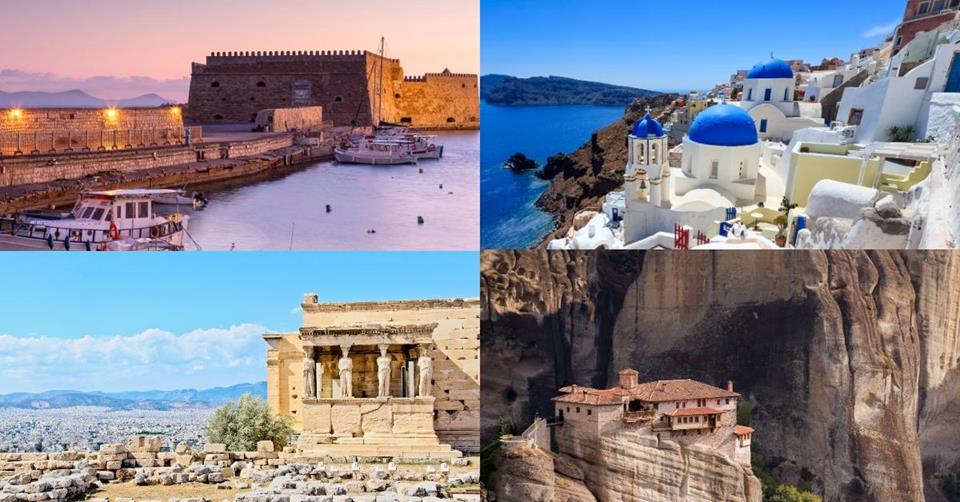
When is the best time to go to Greece
The best time to visit Greece depends on what you seek. Peak season runs from July to August , when the weather is warmest and sun-soaked beaches beckon, but expect crowded attractions and higher prices.
For a blend of pleasant weather and fewer tourists, the shoulder seasons — late April to June and September to early October — is the best time to travel to Greece . During these months, you can enjoy milder temperatures, fewer crowds, and lower accommodation rates.
The r ainy season usually spans from December to February , with colder temperatures and occasional showers, especially on the mainland. While this period sees fewer visitors, it offers a unique perspective of Greece’s landscapes, softer hues, and a calmness contrasting the summer bustle.
Are 3 weeks enough for Greece
Yes, three weeks is a substantial amount of time to explore Greece. While you can’t cover every nook and cranny, it’s sufficient to experience the major highlights: Athens’ historical sites, famous islands like Santorini, Mykonos, and Crete, and some off-the-beaten-path destinations.
The most important thing to remember when planning and writing your 3-week itinerary is to not plan to see more than 5-6 cities. Creating a busy travel plan will be exhausting in real time , and you won’t be able to relax or enjoy your trip.
What to pack
For a trip to Greece, pack lightweight clothing, a swimsuit, sunblock, comfortable walking shoes, a hat, sunglasses, a reusable water bottle, a power adapter, and a small daypack for sightseeing.
There will be lots of walking, especially around Athens, so make sure your walking shoes or sandals are very comfortable. Apart from that, pack your basic items for a 3-week trip . We have a packing list for a summer trip as well.
How to get around
Due to its geography, transportation around Greece combines various options. Getting around Greece offers a blend of modern and traditional transportation methods:
Most Comfortable: Domestic flights and high-speed ferries are comfortable choices for hopping between islands and major cities. For land travel, renting a car gives you the flexibility and comfort to explore at your own pace, especially on the mainland.
Most Affordable: Buses (KTEL) are the most budget-friendly way to travel between towns and regions. Standard ferries can be more affordable than high-speed ones for short island hops.
Around the cities: In cities like Athens, the metro and bus systems are popular for local commutes. Taxis, although more expensive, are also commonly used, especially in areas not serviced by public transport. Ride-hailing apps such as Uber and Beat are popular to use within the cities of Greece.
Regardless of your preference, Greece offers a range of transportation options that cater to diverse travel needs, ensuring that the country’s treasures are always within reach.
Language and currency
The main language in Greece is Greek . However, English is widely spoken, especially in tourist areas, hotels, restaurants, and attractions. Many Greeks, particularly the younger generation and those working in the tourism industry, have a good grasp of English.
The main currency in Greece is the Euro (€) . While some tourist-oriented businesses might accept USD, it’s not commonly accepted for everyday transactions. Visitors are advised to use Euros for hassle-free payments.
Both cash and bank card payments are popular in Greece . Credit and debit cards are widely accepted in urban areas and popular tourist destinations. However, carrying some cash in smaller towns or remote islands is advisable as card facilities might be limited.

Average travel cost for 3 weeks in Greece
The average cost per person of vacation for 20 days in Greece is around €2,000, that’s around €100 a day . If you’re visiting during the peak season (summer and winter), accommodation and flight costs are much higher.
Travel costs in Greece can vary widely based on your preferences:
Affordable:
- Accommodation: Budget hostels or guesthouses: €20-40/night.
- Food: Local tavernas or street food: €10-20/day.
- Activities & Transport: Using local buses, free or low-cost attractions: €15-30/day.
- Total: Approximately €45-90/day or €945-1,890 for 3 weeks.
- Accommodation: 3-star hotels or boutique guesthouses: €50-100/night.
- Food: Mix of tavernas, cafes, and occasional dining out: €25-50/day.
- Activities & Transport: Some organized tours, ferries, car rentals: €40-80/day.
- Total: Approximately €115-230/day or €2,415-4,830 for 3 weeks.
- Accommodation: 5-star hotels or luxury villas: €150-400/night.
- Food: Fine dining experiences: €80-150/day.
- Activities & Transport: Private tours, high-speed ferries, domestic flights: €100-300/day.
- Total: Approximately €330-850/day or €6,930-17,850 for 3 weeks.
Remember, these are ballpark figures; actual expenses can vary based on choices and unexpected costs. You should also remember that the price of flying to Greece and back home are not included in these estimated costs.
Greece is a member of the EU and executes the Schengen State visa policy . This means that passport holders in the US, Canada, Australia, New Zealand, the UK, Singapore, Japan, Malaysia, South Korea, Brazil, Mexico, Chile, Argentina, and many places in Latin America, can enter and travel around Greece for 90 days.
EU passport holders have freedom of movement in Greece. At the same time, the nationalities not mentioned above must apply for a Schengen visa at the nearest Greek embassy or consulate.
Other travel tips
When booking your travel arrangements, these travel sites may help you find the best accommodation and most affordable flights and tours for Greece. I sure love these travel services when booking my own travel needs.
PINNED MAP OF MUST-SEE PLACES IN GREECE
Click the enlarge button on the top right corner. Credit: map data: Google
3 WEEKS IN GREECE ITINERARY
When visiting Greece, this means you have the chance to explore one of the oldest sites in the world. Learn about the birthplace of democracy, the Olympics, Western philosophy, and even alarm clocks and umbrellas.
Once you’re ready to relax and enjoy the beach, go to the south, where many islands are waiting for you for some fun water adventure.
You’ll start your trip in Athens, but it also ends here. But you have 20 days in Greece to enjoy all its pristine islands and historical sites.
If you feel like 3 weeks in Greece is too much time, you can plan a 3-week Southern Europe itinerary instead, where you can visit other countries including Greece.
Athens for 5 days
Athens, the birthplace of Western civilization, offers a chance to travel back in time. It’s where ancient landmarks like the Parthenon and the Acropolis stand as a testament to the city’s glorious past.
The streets are full of life, with cool markets, yummy street food, and cafes where you can chill. If you’re looking to buy souvenirs, there are plenty of flea markets to visit. As the heart of Greek philosophy, politics, and arts, Athens provides a deep dive into human heritage.
For hiking enthusiasts, the surrounding hills and mountains, including Mount Hymettus and Philopappou Hill , present trails that lead to panoramic vistas of Athens, juxtaposing the urban landscape with nature’s grandeur.
Athens is the perfect city to start your 3 weeks in Greece trip. Most international flights land here, plus an extensive train, bus, ferry, and plane network leaves Athens.
Things to do in Athens
- Ancient Agora
- Explore Athens via a hop-on, hop-off red bus or yellow bus or an e-bike tour or hop-on or a half-day tour or a full-day tour or the Mythological tour or a biblical tour
- Monastiraki Flea Market
- Temple of Olympian Zeus
- Acropolis – book an afternoon walking tour or Acropolis tour combo with 6 other archaelogical sites
- Mount Lycabettus
- National Archaeological Museum
- Syntagma Square
- Panathenaic Stadium
- Ermou Street
- Go on a cruise – 3 islands featuring Agistri, Moni, and Aegina with lunch and drinks, see the price first
- Monastiraki Square
- The Prison of Socrates
- Lycabettus Hill Funicular
- Day trip – to Delphi or Delphi and Arachova or Cape Sounion and Temple of Poseidon or to Meteora by train
- Philopappos Monument
- Areopagus Hill
- Hellenic Cosmos Cultural Center
- Discover Greek cuisine through a food tour or gourmet walking food tour or this food-tasting tour
- Erechtheion
- Hike to Veikou Grove
- Attend a show at Petra’s Theater
- Statue of Athena
- Hadrian’s Library
- Technopolis City of Athens
Accommodations in Athens
- Affordable: When in Athens Hostel or Athens Quinta or Bedbox Hostel or Mosaikon Glostel or Athens Raise Acropolis Project
- Mid-range: Still Athens or Attalos Hotel or Ederlezi Boutique Hotel
- Luxury: B4B Athens Signature Hotel or Belle Epoque Suites or The Athens Gate Hotel or Colors Hotel Athens

Meteora for 3 days
Meteora, a UNESCO World Heritage site , is a stunning fusion of nature and spirituality. It’s famed for its gravity-defying monasteries perched atop towering rock pillars.
The incredible landscape, formed over millions of years looks like a picture out of painting. As you hike or drive through, the sight of monastic settlements with unique rocks offers an experience that is unique to Meteora.
Kalabaka is the town where Meteora Monastery is located, not many accommodations there. B ut you can also consider Theopetra as your main base when looking for accommodation during your stay.
To reach Meteora, you can take the train from Athens . The journey time is 5 hr and 45 minutes. The bus is more affordable but will take around 6 hours. If you’re driving, it’s a 4-hour drive.
Things to do in Meteora
- Monastery of Great Meteoron
- Varlaam Monastery
- Rousanou Monastery
- St. Stephen’s Monastery
- Holy Trinity Monastery
- St. Nicholas Anapafsas Monastery
- Meteora Rock Climbing
- Kastraki Village
- Meteora Nunneries
- Sunset at Meteora viewpoints
- Hiking the Meteora trails
- Meteora Natural History Museum
- Meteora Mushroom Museum
Accommodations in Meteora
- Affordable: The Holy Rock Hostel or Meteora Central Hostel or Panos House
- Mid-range: Guesthouse Bloutsos Rooms or Guesthouse Kastelia or Rooms Batalogianni or Zosimas House
- Luxury: Alsos House or Hotel Doupiani House or Tsikeli Boutique Hotel
Thessaloniki for 3 days
Thessaloniki is great in Northern Greece, where you can take a break from the tourist trail. As you walk its streets, Roman, Byzantine, and Ottoman legacies come alive in monuments and churches . The city’s lively waterfront, interesting markets, and art scene make it an awesome place to end your day of exploration.
You can reach Thessaloniki from Meteora by land . The drive will take around 3 hours. You can also take the bus (4 hours) or the train (3 hours).
Things to do in Thessaloniki
- Aristotelous Square
- Thessaloniki City Tour – get a hop-on, hop-off bus pass or a walking tour
- Arch of Galerius
- Ano Poli (Upper Town)
- Thessaloniki Science Center and Technology Museum
- Archaeological Museum of Thessaloniki
- OTE Tower – get your admission ticket with a light meal
- White Tower of Thessaloniki
- Go Sailing – to Shipwreck Bay or to Blue Lagoon
- Thessaloniki Concert Hall
- War Museum of Thessaloniki
- Day trip to Meteora – see the itinerary
- Museum of Byzantine Culture and the The Byzantine Walls
- Church of Agios Dimitrios
- Atatürk’s House
- Day trip to Mount Olympus – with Canyoning trip or with Dion combo
- Lazaristes Monastery
- Day trip to Pozar Thermal Baths and Edessa – read the reviews
- Kalochori Lagoon
- Day trip to Kerkini Lake – check the cost
- Mount Chortiatis
- Olympic Museum Thessaloniki
- Day trip to Vergina and Pella – book the tour
- Modiano Market
- Church of Saint Sophia
- Thessaloniki Waterfront
- Join a food tour – gastronomy and cultural tour or How Greeks Eat tour
- Pasha’s Gardens
Accommodations in Thessaloniki
- Affordable: Zeus is Loose Hostel or Luxury Aristotelous or Nea Metropolis
- Mid-range: V1 Boutique Rooms or Hotel Ilisia
- Luxury: Plaza Hotel and Resorts or Luxury Living Apartments and Spa or Mandrino Hotel

Santorini or Paros for 3 days
These two islands offer very different experiences, but I recommend you choose between them to save some time.
Santorini is ideal for those seeking dramatic landscapes, iconic sunsets, and luxury accommodations. It’s famous for its caldera views, unique volcanic beaches, and romantic ambience. However, it’s often more crowded and touristy. If you’re looking for the “traditional white stone houses”, it’s in Santorini.
On the other hand, Paros is a more laid-back alternative, offering beautiful beaches, traditional villages, and vibrant nightlife . It’s less commercial than Santorini and provides a more authentic Greek island experience.
Choose Santorini if you desire postcard-perfect views, and don’t mind the crowds. Visit one of the best black beaches in Santorini if you’re looking for something unique yet worth a visit.
Paros is a top choice for a relaxed atmosphere with a blend of beach and culture. If you choose Paros, you can also explore the nearby island of Naxos.
Both destinations have direct flights from Thessaloniki. The trip will take around 1hr and 20 minutes.
Things to do in Santorini
- Fira (capital town) – Hike the Fira to Oia Walk
- Travel around Santorini – via a bus tour with Oia sunset or Blue Shade tour or a 6-hour sightseeing tour
- Akrotiri Archaeological Site
- Skaros Rock
- Volcanic Islands – cruise with a hotspring visit or Caldera half-day tour
- Firostefani’s Blue Dome Church
- Pyrgos village
- Volcano and hot springs boat tour
- Catamaran cruise – with a meal and open bar or BBQ and drinks or all-inclusive luxury cruise or cruise with meal, drinks, and transfers
- Megalochori Village
- Castle of Oia
- Fira Theotokopoulos Main Square
- Santorini Old Harbor
- Go scuba diving – dive at Volcanic Caldera
- Fira Scenic Spot
- The Heart of Santorini
- Lost Atlantis Experience – Interactive Museum
- Castello Veneziano
- Do a wine-tasting – wine and tapas or highlights tour with wine-tasting and sunset in Oia
- Caldera Beach
- Akrotiri and Akrotiri Lighthouse
- Attend a Greek Wedding show – get your entry ticket in advance
- Ancient Thera
- Perissa Beach
- Kamari Beach
- Open Air Cinema Kamari
- Santorini Caldera
Things to do in Paros
- Parikia Old Town
- Explore Paros with a bus tour
- Panagia Ekatontapiliani Church
- Naoussa Village
- Kolymbithres Beach
- Kayak and Snorkelling – book the trip with a snack or picnic
- Paros Archaeological Museum
- Book a traditional cooking class or a pasta-making class
- Lefkes Village
- Golden Beach (Chrysi Akti)
- Boat Rental with Self-drive – check the cost
- Valley of the Butterflies
- Horseback riding – there’s an evening tour
- Ancient Marble Quarries
- Boat tour covering Paros, Antiparos, and Despotiko – read the reviews
- Frankish Castle
- Antiparos Island and Cave
- Day trip on a boat to Delos Island and Mykonos from Paros – see the price
- Aliki Beach
- Marble workshop or a watercolor workshop – a perfect way to make a unique souvenir
- Marathi Marble Quarries
- Sailing trip from Antiparos – book the trip with lunch and drinks
Accommodations in Santorini
- Affordable: Gianna Suites or Unique Galini Oia (adults only) or Cyclades Hotel or Kamari Beach Hotel
- Mid-range: Irene City Villas or Alleys All-Suites Hotel & Spa or Caldera Premium Villas
- Luxury: Altana Heritage Suites or Elitoz Suites or The Museum Project Oia or SantAnna Luxury Suites
Accommodations in Paros
- Affordable: Madaky Hotel or Siroco’s Rooms and Studios or Anixis Studios Aliki
- Mid-range: Villa Isabella or Hotel Iris or Apollon Boutique Hotel or Stella Hotel
- Luxury: Hotel Senia or Blue Waves Suites & Apartments or Katerina Mare
Naxos or Mykonos for 3 days
Again, these two islands are ver different. But as mentioned, if you already decided to go to Paros, you can easily get to Naxos from there.
Unfortunately, there are no direct flights from Santorini or Paros to Naxos or Mykonos. All flights will have to connect through Athens. However, there are many ferries that connect al these islands. So, you probably want to decide based on direct ferries between the islands to make your trip more hassle-free.
Naxos is known for its diverse landscapes . Naxos offers long sandy beaches, ancient ruins, and traditional villages. It’s family-friendly and typically more budget-conscious, providing a genuine Greek island feel.
Mykonos is famed for its vibrant nightlife, cosmopolitan atmosphere, and picturesque town with iconic windmills . It attracts a more upscale, party-centric crowd and is usually pricier.
If you’re after a lively scene with high-end shops and clubs, pick Mykonos. For a more relaxed cultural experience with varied landscapes, opt for Naxos.
Things to do in Naxos
- Amitis Beach
- City tour – full-day bus tour or bus tour with swim stop at Apollonas or Greek Mythology sunset tour or a sunset city walk
- Portara (Temple of Apollo)
- Naxos Old Town (Chora)
- Agios Prokopios Beach
- Sailing Cruise with lunch – read the reviews or a Catamaran Cruise with snorkelling and food/drinks or a Cyclades sailing cruise
- Temple of Demeter
- Kouros Statues
- Agia Anna Beach
- Hike to Cyclades Mount Zas – check the price
- Panagia Drossiani Church
- Halki Village
- Do a marble carving – look at the itinerary
- Melanes Olive Presses and Ancient Quarries
- Venetian Castle of Naxos
- Temple of Apollo – Portara
- Join a cooking class or food tour – half-day at Basiliko Family Tavern or a cultural food tour
- Agios Georgios Beach
- Temple of Dionysus, Yria
- Maragkas Beach
- Mikri Vigla Beach
- Go wine-tasting – a food tour with wine or wine-tasting at Saint Anna
- Zeus’ Childhood Cave
- Alyko Beach
- Tower of Ayia
Things to do in Mykonos
- Mykonos Town (Chora)
- Explore Mykonos’ main attractions through a – sightseeing-guided tour or this one with a local guide or Old Town walking tour or a half-day tour
- Windmills of Kato Mili
- Paraportiani Church
- Super Paradise Beach
- Delos Island Archaeological Site – read the tour reviews or an evening guided tour or just pay for the transfer only
- Panagia Paraportiani
- Matoyianni Street
- Cavo Paradiso Club
- Ano Mera Monastery
- Mykonos Folklore Museum
- Rhenia Island – book a combo Delos Island and Rhenia boat tour or this one
- Agios Sostis Beach
- Armenistis Lighthouse
- Discover Greek food and wine – check this wine-tasting tour or Souvlaki cooking class with a local
- Boni’s Windmill
- Paralia Ftelias
- Agios Stefanos Beach
- Go on a cruise – a sunset cruise with drinks
- Fokos Beach
- Paralia Kalo Livadi
- Paradise Beach
- Gyzi Castle
- View of Alefkandra (Little Venice)
Accommodations in Naxos
- Affordable: Iliovasilema or Infinity Apartments or Burgos Barrio
- Mid-range: Naxos Illusion Nikos Verikokos or Anatoli Hotel or Ippokampos Beachfront or Annio Studios
- Luxury: Portara Seaside Luxury Suites or Argo Boutique Hotel or Hotel Grotta
Accommodations in Mykonos
- Affordable: Island Mykonos Suites or Pension Alexandra or Elena Hotel or Villa Varnali Boutique
- Mid-range: Sunset Paraportiani Rooms or Mykonos View Hotel or Hotel Adonis
- Luxury: Semeli Hotel or Yalos Hotel or Harmony Boutique Hotel

Crete 3 days
3 weeks in Greece must include the beautiful island of Crete. It’s the largest Greek island , where beautiful beaches, mountains, ancient history such as the Minoan ruins, and delicious food come together.
Its diverse landscapes range from the pink sands of Elafonissi to the rocky Samaria Gorge. Exploring ancient ruins like the Palace of Knossos takes you back to the times of Greek myths and legends.
Crete is also a fantastic way to end your trip because you can simply relax on the beach or do watersports you enjoy. From here, there are plenty of direct flights to Athens if you’re catching your flight home from there.
There are three airports in Crete ; Heraklion, Chania, and Sitia. Heraklion and Chani are the two most popular, but neither has direct flights from Mykonos, Paros, or Santorini. However, there are direct ferries to reach Crete.
Things to do in Crete
- Balos Lagoon
- Chania Old Harbor
- Phaistos Minoan Palace
- Discover Crete wineries and olive farms through this food tour or this cooking class
- Spinalonga Island
- Vai Palm Beach
- Arkadi Monastery
- Enjoy Crete and go sightseeing with – this full-day tour
- Lake Kournas
- Preveli Beach and Monastery
- Old Venetian Port of Chania
- White Mountains Forest Preserve
- Knossos – visit the museums with audio guides
- Museum Of Typography
- Dia Island Cruise from Heraklion – either this sailing tour or this cruise
- Heraklion Archaeological Museum
- Heraklion Lighthouse – get a hop-on, hop-off bus pass for Heraklion
- Natural History Museum of Crete
- Samaria George – join a day hike from Chania or from Rethymno
- Elafonissi Beach
- Day trip to Santorini or Day trip to Elafonisi Island from Chania
- Rethymnon Old Town
- Boat trip to Spinalonga from Agios Nikolaos – read the reviews
- Dive in the Matala Caves
- Quad-bike safari trip from Rethymno – look at the price first or this one that picks up from other parts of Crete
Accommodations in Crete
- Affordable: So Young Hostel or Intra Muros Hostel or Alexis Hotel or Corinna Mare
- Mid-range: Notus Chania Crete or Hyperion City Hotel & Spa or Spilia Village Hotel & Villas
- Luxury: Seaside A Lifestyle Resort (adults only) or Creta Maris Resort or Manili Boutique Suites & Villas or Peninsula Resort & Spa
MUST-TRY GREEK DISHES AND DRINKS
Greek cuisine is easily one of the best and healthiest in the world. For this reason alone, you must try at least 4-5 dishes during your visit (recommend more!). See which one you like the most, and maybe you’ll even bring a Greek brand or wine back home.

- Moussaka: Layered eggplant, potato, and minced meat topped with béchamel sauce.
- Souvlaki: Skewered and grilled meat, often served with pita bread.
- Horiatiki: Traditional Greek salad with tomatoes, cucumbers, olives, feta cheese, and olive oil.
- Spanakopita: Spinach pie made with phyllo dough, spinach, and feta cheese.
- Dolmades: Stuffed grape leaves, usually filled with rice and herbs.
- Pastitsio: Greek pasta baked with layered pasta, minced meat, and creamy béchamel sauce.
- Tzatziki: Creamy yoghurt-based dip with cucumbers, garlic, and dill.
- Baklava: Sweet pastry made of layers of phyllo, filled with chopped nuts and sweetened with syrup or honey.
- Galaktoboureko: Custard-filled phyllo pastry soaked in syrup.
- Loukoumades: Golden fried dough balls drizzled with honey and cinnamon.
- Kadaifi: Shredded wheat dessert soaked in syrup, often with nuts.
- Ouzo: Anise-flavored aperitif, often diluted with water.
- Retsina: Resinated wine with a distinctive pine flavour.
- Metaxa: Greek brandy, smooth and fruity.
SUMMARY OF 3 WEEKS IN GREECE ITINERARY
Three weeks in Greece is a voyage through time, flavours, and breathtaking landscapes. From the ancient ruins of Athens to the cerulean waters of the islands, every moment is etched with wonder. When creating your itinerary, do not overload it and design one that is relaxing for you.
This 3 weeks in Greece trip is not just a vacation. It’s a soulful experience, a harmonious blend of past and present, tradition and innovation. I hope that this itinerary has helped you visualise what a holiday in Greece looks like.
SAVE THIS TRAVEL ITINERARY ON YOUR PINTEREST:

Nomadic Matt's Travel Site
Travel Better, Cheaper, Longer
How to Plan a Trip: A Month-by-Month Guide
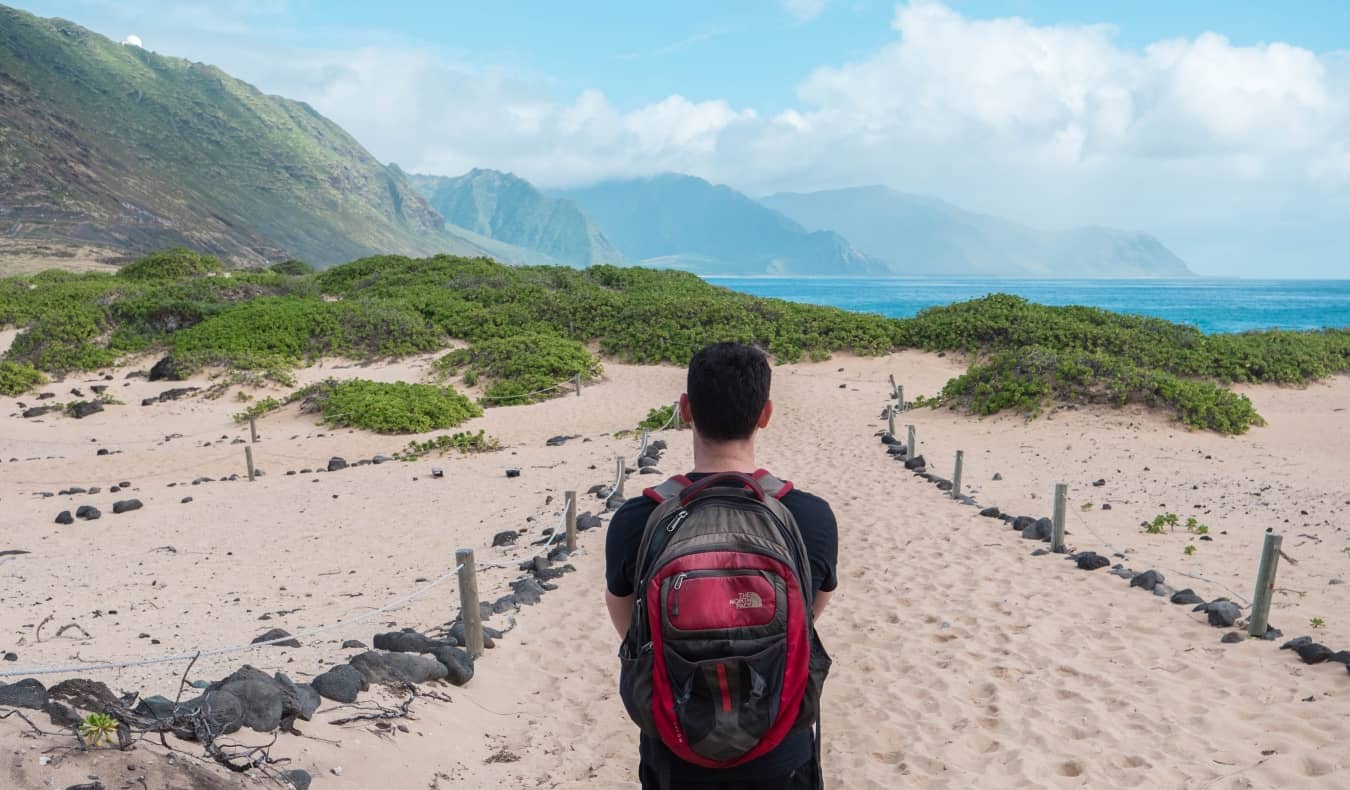
Trip planning can be a daunting task. Flights, insurance, gear, itineraries, accommodation, and so much more all need to be considered and sorted out before you go.
It’s easy to get overwhelmed , especially when you haven’t done something like this before.
After over close to twenty years of traveling the world, I’ve planned countless trips and vacations for myself, friends, and family, even group tours. In the beginning, it was trial by fire. I learned a lot of lessons the hard way . However, that helped me develop an efficient checklist that ensures I don’t miss anything important during the trip-planning process.
One big question I get asked a lot is when to start planning. To answer that question, this post breaks the planning process down into month-by-month steps so you can plan your next trip with ease.
Here’s how to plan a trip:
Table of Contents
12 Months Out: Decide on Your Destination(s)
12 months out: start collecting points & miles, 8 months out: visa requirements, passports, and vaccines, 4-6 months out: book your flight, 3-4 months out: book your accommodation, 2 months out: plan your activities, 1 month out: get travel insurance, 7 days out: pack.

If you already have a dream destination in mind, great! If not, here are some posts to help you get started:
- 11 Cheap Places to Visit on the US Dollar
- 10 Places to Travel on a Budget
- The Best Tropical Islands in the World
- My Favorite Cities in the World
- My 31 Favorite Places to Visit in the USA
But, this far out, the real thing you want to do is start saving money and figuring out your costs. Accommodation and flights are the obvious ones, but how much do restaurants, attractions, and other activities cost? Knowing these costs will allow you accurately estimate how much money you’ll need. Here is how to research costs:
- Buy a guidebook
- Check out my free travel guides (we break down all costs for each destination)
- Skim the cost of living on Numbeo.com
- Google prices for major activities you want to do, such as scuba diving, winery tours, etc. ( Get Your Guide is a good place to start)
- Use Skyscanner or Google Flights for flight prices and sign up for alerts to get emails if the price changes
- Use Discover Cars to price out (and book) a rental car if you need one
- Use Booking.com and Hostelworld to research accommodation costs
That may seem like a lot but you just want to get a general idea of how much you need to save. You can head to this page to see all my articles on how to save money for your trip .

These days, most cards have welcome offers of 60,000-80,000 points (some can be as high as 100,000) when you meet their minimum spending requirement (generally $2,000-5,000 USD within a 3–6-month time frame). That’s enough miles for a free round-trip economy flight to Europe from the East Coast of North America.
For more information on this subject, check out these posts:
- Points & Miles 101: A Beginner’s Guide
- How to Pick the Best Travel Credit Card
- My Favorite Travel Credit Cards
- How to Earn Points by Paying Your Rent
- The Ultimate Guide to Points & Miles
- How to Collect Points & Miles in Canada
In addition, get a fee-free ATM card. I use Charles Schwab, but there are lots of other banks that don’t charge ATM fees (don’t forget to check your local banks and credit unions too). Here’s how you can avoid bank fees while traveling .
While you likely won’t need a visa to your desired destination, you should still check to make sure. If you’re a US citizen, use the State Department’s search tool to learn about your destination’s entry requirements. (Canadians can use this search tool .)
Additionally, make sure that your passport is valid for at least six months after your trip ends. Many countries require this for entry. Passport application and renewal wait times can be long (the standard is 6-8 weeks in the US), so do this as soon as possible.
Also, research if you need any vaccines for your trip as many countries require vaccines to enter (and I don’t mean COVID). You can learn more about country requirements and recommendations at the CDC’s website . They can help you find a clinic near you as well (if you’re in the US).

Here are two articles on how to score a cheap flight:
- How to Always Find Cheap Flights
- 5 Steps to Booking a Cheap Flight
If you’ve signed up for a travel credit card and received your sign-up bonus, use your miles to book your flight and/or hotel. The further out you book, the more availability there will be. Use tools like Point.me and Awayz to help you find the best redemptions on your points (for flights and hotels, respectively).
But even if you aren’t using miles or didn’t find a cheap flight deal, there are still many ways to avoid being the person on the flight who paid the most for their ticket. My two favorite sites for finding cheap airfare are Skyscanner and Google Flights .
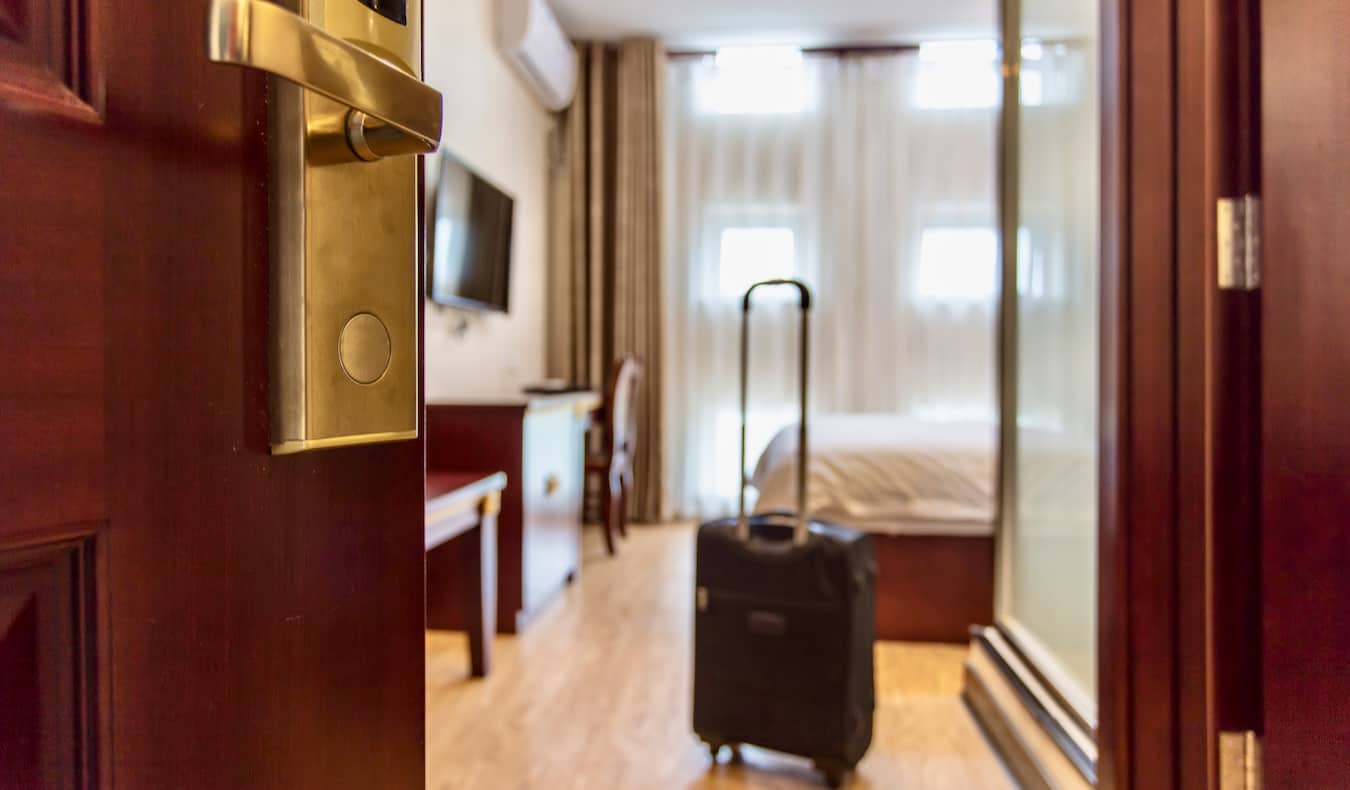
Here are my go-to sites when it comes to finding the best deals on accommodation:
- Hostelworld – Hostelworld has the largest selection of hostels and is my go-to site for finding affordable hostels.
- Booking.com – Booking.com is the best overall platform for finding budget hotels and guesthouses.
- Agoda – Agoda has the best results if you’re heading to Asia (though it sometimes has good US deals too).
I recommend checking the cancelation policy of wherever you book. I like having the flexibility to cancel if something comes up.
If you’re on a tight budget or you want to connect with more locals during your travels, consider joining platforms like Couchsurfing or BeWelcome . These communities allow travelers to stay with residents for free as a sort of cultural exchange.
Long-term travelers can also try housesitting or WWOOFing as well, as they both offer free accommodation (in exchange for pet sitting or farm work, respectively).
Now it’s time for the fun part of travel planning! That means reading books about your destination, learning general travel tips, connecting with online communities, and pre-booking any necessary activities.
Pre-booking ensures you don’t miss out on things that you really want to do on your trip. If you’re going to a popular destination, tours and activities fill up quickly, and if you’re going to a smaller place, activities or tours might only run on certain days and have limited availability.
Either way, Get Your Guide the best place to search for and pre-book activities, tours, and tickets. Local tour operators and attractions can list their offerings on this online marketplace, so you can find tons of stuff here, from food tours to museum tickets with skip-the-line entry.
Get travel insurance . That way, these purchases are protected should something happen that makes you cancel your trip.
A lot of people think, “I’m healthy. I don’t need travel insurance.” But travel insurance is much more than just medical protection. It covers you when your camera breaks, your flight is canceled, a family member dies and you have to come home, or something gets stolen. (That’s why you’ll also want to familiarize yourself with any common travel scams to look out for, as well as how to conduct yourself in order to blend in to avoid looking like a target for petty theft.)
Yes, it’s an added expense. But it’s always better to be safe than sorry. I never leave home without it, because I’ve seen firsthand just what can happen on the road.
I never thought I would pop my eardrum while I was scuba diving in Thailand, break my camera in Italy, or get knifed in Colombia.
Unfortunately, bad things can happen when you’re traveling. True, these events are few and far between. But they can cost tens of thousands of dollars. If you’re not prepared to pay out of pocket, buy travel insurance.
Here are some posts on travel insurance to get you started:
- How to Buy Travel Insurance
- The 5 Best Travel Insurance Companies
- The Best Travel Insurance for Seniors
I never leave home without travel insurance. You shouldn’t either.
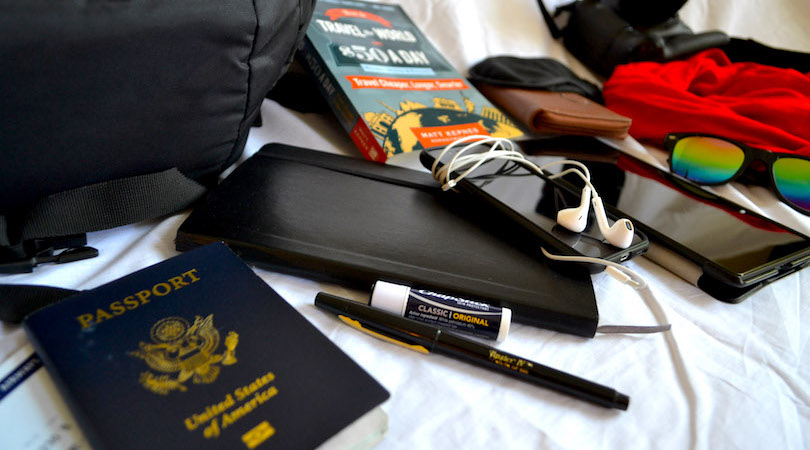
I travel with a 45L REI bag and then a smaller day bag. Here’s my suggested packing list to help you take just the right amount of stuff and avoid overpacking ( here’s a list for female travelers ).
Additionally, bring any prescriptions you need for the duration of your trip. Try not to rely on filling those abroad (though bring a prescription and doctor’s note just in case).
With everything taken care of, it’s time to go on your trip and have fun! Make a list of last-minute items you need to pack the day of (your toothbrush, glasses, phone charger, etc.) and check in online beforehand (you can do so 24 hours in advance). (If you’ve got lounge access through a premium travel rewards card , you might find yourself looking forward to getting to the airport early.)
If you’re feeling nervous, don’t worry. That’s perfectly normal. Feeling anxious or unsure is something every traveler experiences. But you’ve made it this far. Trust your planning and follow your instincts. You’re about to have the trip of a lifetime.
Book Your Trip: Logistical Tips and Tricks
Book Your Flight Find a cheap flight by using Skyscanner . It’s my favorite search engine because it searches websites and airlines around the globe so you always know no stone is being left unturned.
Book Your Accommodation You can book your hostel with Hostelworld . If you want to stay somewhere other than a hostel, use Booking.com as it consistently returns the cheapest rates for guesthouses and hotels.
Don’t Forget Travel Insurance Travel insurance will protect you against illness, injury, theft, and cancellations. It’s comprehensive protection in case anything goes wrong. I never go on a trip without it as I’ve had to use it many times in the past. My favorite companies that offer the best service and value are:
- SafetyWing (best for everyone)
- Insure My Trip (for those 70 and over)
- Medjet (for additional evacuation coverage)
Want to Travel for Free? Travel credit cards allow you to earn points that can be redeemed for free flights and accommodation — all without any extra spending. Check out my guide to picking the right card and my current favorites to get started and see the latest best deals.
Need Help Finding Activities for Your Trip? Get Your Guide is a huge online marketplace where you can find cool walking tours, fun excursions, skip-the-line tickets, private guides, and more.
Ready to Book Your Trip? Check out my resource page for the best companies to use when you travel. I list all the ones I use when I travel. They are the best in class and you can’t go wrong using them on your trip.
Got a comment on this article? Join the conversation on Facebook , Instagram , or Twitter and share your thoughts!
Disclosure: Please note that some of the links above may be affiliate links, and at no additional cost to you, I earn a commission if you make a purchase. I recommend only products and companies I use and the income goes to keeping the site community supported and ad free.
Related Posts

Get my best stuff sent straight to you!
Pin it on pinterest.
- Portugal Tourism
- Portugal Hotels
- Portugal Bed and Breakfast
- Portugal Vacation Rentals
- Flights to Portugal
- Portugal Restaurants
- Things to Do in Portugal
- Portugal Travel Forum
- Portugal Photos
- All Portugal Hotels
- Portugal Hotel Deals
- Last Minute Hotels in Portugal
- Things to Do
- Restaurants
- Vacation Rentals
- Travel Stories
- Rental Cars
- Add a Place
- Travel Forum
- Travelers' Choice
- Help Center
base locations for 2 week trip - Portugal Forum
- Europe
- Portugal
base locations for 2 week trip
- United States Forums
- Europe Forums
- Canada Forums
- Asia Forums
- Central America Forums
- Africa Forums
- Caribbean Forums
- Mexico Forums
- South Pacific Forums
- South America Forums
- Middle East Forums
- Honeymoons and Romance
- Business Travel
- Train Travel
- Traveling With Disabilities
- Tripadvisor Support
- Solo Travel
- Bargain Travel
- Timeshares / Vacation Rentals
- Europe forums
- Portugal forum

3 replies to this topic

Porto = culture&nature/Douro
- Train Questions 6:29 pm
- WhatsApp 6:19 pm
- Where is best to catch the Liverpool game on Sunday? 5:51 pm
- Sunbeds on Torralta Beach 5:40 pm
- Taxi or train from Faro train to Lagos? 5:10 pm
- Has inside access to Benagil caves reopened? 5:08 pm
- First visit to Madeira, staying at Câmara de Lobos 5:03 pm
- Lisbon - Soccer Match in Sept 2024 3:37 pm
- Local transportation in Aveiro 2:52 pm
- Chaos at Faro Airport 2:52 pm
- trip to Faro 2:35 pm
- Pico do Areeiro closed to rental cars? 2:29 pm
- Early morning flight from Faro need hotel that isn't $$$$$ 2:23 pm
- 10 days in Portugal at the end of May 2:19 pm
- Portugal in December - January 12 replies
- Flying versus driving from Lisbon to Faro and back 11 replies
- writing currency in euros 2 replies
- Best Places to Visit in Portugal 10 replies
- Where to go in Portugal in November 4 replies
- portugal trails travel 75 replies
- Rede Express vs. Mundial Turismo 10 replies
- Cuban Salsa Club in Lisbon/Porto/Coimbra 2 replies
- things to buy: clothes; food specialties; souvenirs? 3 replies
- Claim VAT at Lisbon airport -- a question for non-EU citizen 4 replies
Portugal Hotels and Places to Stay
- Eating Out - This is Just How it Is
- Train travel in Portugal
- The train less travelled


How to Plan a Trip to Europe with Kids: Essential Planning Tips
P lanning a trip to Europe with kids is equal parts exciting and equal parts daunting. It’s unlike any other destination as it involves multiple countries in one land mass, each with their own cultures, rules, foods, and prices.
Europe is filled in and jam packed with endless things to do. How do you decide where to go, what to spend, how to get around, and what to do in each country, while making sure the kids are entertained and happy?
We recently visited Europe for four weeks, visiting Paris for four days and the Loire Valley in France ; Rome, Tuscany, Florence , Cinque Terre , Verona , and Venice in Italy; plus we did an 8-day Danube River cruise with Avalon Waterways from Germany to Budapest, and Hungary.
Our Europe trip was not perfect, and we made plenty of mistakes, and sometimes had unhappy bored teens, but overall, it was an incredible experience that we’d do over (while correcting those mistakes).
From our Europe travel mistakes we learned plenty of tips on how to plan a trip to Europe with kids , including what you need to know once you get there! In this guide, we’ve shared those mistakes with you to help you learn from them, but also so you can see we are real-life travelers sharing these tips.
Grab an Aperol Spritz and get comfortable. It’s a long post, but full of valuable information – so you won’t need to keep searching. If you find it helpful, please share it with a friend traveling to Europe as a family!
1. Get Travel Insurance Before You Start Booking Things
2. involve the kids in the planning , 3. think about age-appropriate attractions, 4. think about your time frame, 5. try to use points and miles, 6. book (almost) everything in advance, 7. be realistic about what you can do, 8. where possible, try to reduce travel time, 9. plan for quieter destinations in between busy ones, 10. consider a river cruise or multi-day tour, 11. check your passports are valid, 1. write a bucket list of experiences and destinations, 2. map it out, 3. create a spreadsheet, 4. create an itinerary guide, avoid overnight flights (if you can), things to know about accommodation in europe, car rental tips, trains in europe, what about taxis and ubers, are european cities walkable, kids are often free, do 1-2 major activities per day, skip the line passes are essential, book the first tour of the day , use tour booking platforms, join a guided tour, consider a food tour or a cooking class, purchase go city attraction passes, check attraction opening times, what about booking restaurants, 9. write out your itinerary.
Thanks to our long-term partner Allianz Travel Insurance for sponsoring this content, we can share all our tips with you now!
How To Plan A Trip To Europe With Kids
Before you start planning and booking things in, you’ll want to consider the following so you can get it as close to great as possible.
Most people leave purchasing a travel insurance policy to the last minute. But, what if, after you book your flights, something unexpected happens and you can no longer travel – you’re not protected!
Protection starts from the moment you purchase insurance. Having travel insurance takes away many stresses and hassles of traveling if something goes wrong.
We love having an annual travel insurance policy that covers our entire family. We travel frequently enough to warrant it. It means we can plan a trip, pack our bags and walk out the door without even having to worry about purchasing a policy. It’s already done.
On our Europe trip, we saved money on expensive Collision Damage Waiver policies, because rental car loss/damage coverage is included in our annual policy and some single trip policies. You may also be able to add it to your policy if it’s not!
As the Allianz’s annual Vacation Confidence Index shows, more Americans than ever are taking an annual vacation this year. In fact, vacation spending is breaking records with the 2023 vacation spend expected to hit $214 billion! This means there is a high likelihood that there will be more travelers in 2023, which increases the risk of travel delays.
Having a travel insurance policy can help reimburse costs for any covered delay or baggage loss.
The kids aren’t always going to be happy, and neither are you. So don’t aim for perfection. Aim for an overall great time.
Before you start booking anything, try to get the kids excited. Talk about Europe with them, read blog posts and books, watch movies and TV shows set in Europe.
Discuss the countries and experiences you are considering and have them offer their own opinions.
Savannah really wanted to go to Italy for the food and do a cooking class, Kalyra wanted to go to Paris and Cinque Terre , so we made sure to incorporate those into our 4-week Europe itinerary.
The age of your children will impact how you travel Europe and the different experiences you have as a family.
Europe is a great destination for older kids as they’ll understand more of the rich history of the continent – it’s likely they’ll be learning a lot about it in school so they can connect to it better.
For younger kids, you may visit places that aren’t as busy, don’t involve so much walking, and have more younger kid activities.
And for older kids, here our our teen’s favorite things to do in London , the best things to do in Paris with teens, best things to do in Rome with teens and what our teens loved about our river cruise .
When you plan to travel to Europe, your time frame and how long you have will have a significant effect on your trip planning and itinerary.
Summer is the busiest time of the year, where you’ll need to book far in advance , and prices will be higher. Especially from June, July and August.
It may also impact the European destinations you decide to visit. Italy was extremely busy on our trip, whereas Germany, Austria and Budapest were much quieter.
An optimal time to travel to Europe will be May or September/October when the weather should still be nice, but crowds are fewer as most kids are in school in the USA and Europe.
Winter may also be perfect for some destinations for better deals and fewer crowds. Of course, choose destinations that aren’t beach or summer focused!
We traveled to London in March 2022 as we knew weather wouldn’t change the experience too much as it’s usually wet and cold year-round.
I’d rather do summer in a hotter destination, especially as most of the attractions like Tower of London, Big Ben, Buckingham Palace and Tower Bridge etc are best viewed from outside!
Length of time will also impact how many countries or destinations you can fit in, what kind of transport to take, and how busy your days will be with activities!
As Australians, we rarely travel anywhere for less than two weeks. It’s a habit we cannot break. But we understand Americans, due to shorter annual leave and closer proximity, will tend to travel to Europe for shorter periods.
Four weeks in Europe for us was a great amount of time. We could have scaled that back to three weeks as teenagers can get bored quickly and just want to be at home with their friends, especially during the long summer school break!
One of our biggest budgeting tips for Europe is to try to use miles and points to save on accommodation and transport costs. Thankfully, we had an accumulation of nearly a million points across various credit cards to tap into.
Because of that we used points for some of our flights and 90% of all our accommodation in the first three weeks of our trip.
I know, using points for flights is typically the best value, but why not also use them on accommodation, if it saves you money and is the difference between exploring Europe or staying home.
We have a Chase Ink Business Preferred card and an AMEX Gold card and normally book travel through the Chase or AMEX portal as we seem to get the best deals through there when it comes to accommodation.
Also, as it was the busy summer months, there were barely any award rooms available with hotel chain rewards programs like Marriott, Hyatt etc. As the Chase and Amex portal are more like booking engines and you are not locked into a particular hotel or airline brand , you can use your points at a variety of different hotels (and airlines), instead of transferring them to the Hyatt etc. programs.
Same too with booking flights, we tend to get better deals via these portals. I think it’s the best option if you have less flexibility with your travels.
We found a great points deal on our flights from Verona to Munich booking Lufthansa via my United mileage program.
Feel like you’re trapped in a box? I get it. I find booking things in advance, especially tours and attractions, very stressful.
I mean how do I know how long I’m going to need in each city? I may find a great coffee shop I want to linger in longer, or a cute cobblestone street to wander down, or a park to hang out in.
BUT travel no longer has the same freedom and spontaneity of twenty-five years ago when you could just show up and figure it out along the way.
For Europe, especially in the summer, if you don’t book in advance (and sometimes far in advance) you will miss out.
We booked our flights three months in advance, or accommodation not long after, and our tours and attractions at least a month in advance.
That was even too late for some tours and attractions like the Eiffel Tower ( we missed out on third floor tickets), a boat tour of Venice, the dome climb of St Peter’s Basilica in the Vatican , and the dome climb of the Duomo in Florence.
Most tours and hotels do offer free cancelation up to 24 hours in advance, so if you do feel like doing something spontaneous, there is always an option to cancel and try to rebook for another day.
Don’t forget to make a note of free attractions to visit too, such as the Trevi Fountain in Rome or the Arc de Triomphe in Paris .
Always double check your bookings. You can read how we nearly missed out on our Cinque Terre Boat Trip . Luckily, I found available spaces for the next day and could book on the spot.
Trust me, I can easily overbook and overextend ourselves. I want to do it all. Especially if it’s a dream trip, you’re traveling a long distance to get there, and you’ve invested a lot of resources.
But you can’t do it all. Our planning tips below will help you narrow it down to just those destinations and experiences you’d regret not doing.
We’ve been traveling for 25 years (mostly nomadic) and with two children , there is not much we haven’t seen and done, so we’re only choosing experiences unique to the destination that tell a great story you’re interested in and will give us rich memories.
I mean, we didn’t even go to the Louvre – vetoed by everyone. Three visits to Paris now and I still haven’t been, only on the outside for a photo. But, for you, it may be an attraction you will love. But I did finally make it to the top of the Arc de Triomphe on this visit and loved it!
After a week in Europe, you may start to get tired of cathedrals and castles, so only plan for the very best. That leaves more time to do other fun things like cooking classes!
As mentioned, there is so much to see and do in Europe, it’s hard to narrow it down to a few destinations. One great thing about traveling in Europe is you can visit multiple countries in one trip.
We visited seven countries in four weeks, and Craig and Savannah did eight, with a day trip to Cesky Krumlov in Czech Republic on our river cruise. Savannah is a country counter and was thrilled to get that many checked off!
One planning principle to help you is reducing your travel time (flights, trains, driving) as much as possible, especially if you have a shorter time.
Originally, I wanted to visit France, Italy, and Greece . I soon realized it was too much travel time and since Greece was the furthest away, we cut that (hopefully next year, but I was in the Peloponnese only the month before!).
I also had several destinations in France and Italy I wanted to visit and they were soon deleted.
We also planned to visit either Munich, Berlin , or Amsterdam after we alighted from our river cruise in Budapest, but after a bit of research, we realized it was going to involve too much flying and greater expense.
So, we decided to fly from Budapest directly to Paris, where our flight back to the US was leaving from. We hired a car from Charles de Gaulle airport to explore the Loire Valley for three days.
BUT hindsight tells us that was a massive mistake. We’ll share with you in our post on things to know before visiting Paris , that traffic in Paris is a complete NIGHTMARE and it took us HOURS just to get out of the city!
So maybe choosing Amsterdam may have been better. And in hindsight, we would have dropped France, flew into Rome, and spent extra that extra time in Italy.
We really enjoyed our two-night stay at a Tuscan farmhouse after a hectic week exploring Paris and Rome on foot.
This break from walking 25K steps per day and a quieter experience was much needed. Same with visiting Cinque Terre and Verona in between Florence and Venice . And then our river cruise was even more relaxing.
The kids will need these slower times. Europe can be hectic with its busy cities, endless attractions, and ancient history to absorb.
Sometimes you just need to visit a quiet sunny destination in Europe that offers a simple life. We enjoyed a cooking class and a glass of incredible Sangiovese with hundreds of sparrows flying over the beautiful Tuscan countryside.
As mentioned, we joined an 8-Day Danube River cruise with Avalon Waterways (paid partner) which vastly reduced our stress levels. A tour such as this, or any guided tour, is a fantastic idea for families.
A vacation is a time to escape the daily grind, but it’s hard to do that when you’re still responsible for EVERYTHING from planning, booking, to the day-to-day running of the vacation.
Our family river cruise was bliss because we could unpack as soon as we arrived and just show up to the scheduled tours and activities for the day and enjoy it.
We rarely had to take out our wallets as everything was included, and the BEST thing of all was all our meals with complimentary drinks were included.
One of the hardest parts of travel for us is finding places to eat that suit our dietary requirements, fussy taste buds, and budgets. I HATE it! We never went hungry on the cruise; the food was incredible and filled with regional dishes and wine, so we did not miss out on trying local foods.
We have the following posts that dive more into that… why we loved our European river cruise with kids and 9 reasons we loved sailing with Avalon Waterways and our 8 Day itinerary guide for our Danube River cruise .
We’ve all been there. We’ve booked a trip, got everything planned, and then you realize your passport expires in four months’ time.
To travel to Europe, your passport needs to have at least six months validity and have at least two empty pages for visa stamps!
Make sure you check this before booking anything, especially flights, as sometimes you need to insert your passport number in the booking stage.
IMPORTANT: there are serious passport approval delays. Give yourself plenty of time to organize a new or replacement passport. My friend almost had to cancel her Europe trip because of delays. She spent hours on the phone trying to get it expediated in time, and almost had to fly to Hawaii for an appointment. That is some detour to Europe from the East Coast!
How to Plan your trip to Europe with Kids (The Strategy)
There are many moving pieces to the puzzle when planning your trip to a destination like Europe, especially if you are visiting during peak travel times.
Below is how we plan a family vacation to make it all fit together using a few simple tools, mostly Microsoft Word or Google Docs.
Here is my strategy for planning a trip to Europe…
Why do you really want to go to Europe with kids? What do you have a burning desire to see and do?
Write out your bucket list of places. Go through and check the non-negotiable. For us it was Paris, Rome, Tuscany, and Cinque Terre . So, we planned our trip around those places. We included Paris as we were flying in and out of there.
In hindsight, we could have dropped France and spent more time in Italy, but Craig and the girls had never been, and we have direct 8-hour flights from Raleigh to Paris, however, we ended flying via Newark in New Jersey as they were $500 cheaper per person, a $2,000 saving for our family of four and we’d rather use that money in the destination (another tip).
Really, anywhere in Europe is great for kids, but here are our top suggestions for family friendly destinations in Europe: Italy, France , Greece , the UK , Spain , and Portugal.
HANDY GUIDES
- 36 Essential things to know before Visting Rome
- 39 Essential Things to know before visiting Paris
- 33+ Essential things to know before visiting London
This is the most important step for travel planning for me. Nothing makes sense until it’s plotted on a map (Google Maps is usually sufficient for this). Then I can easily see how to make things work.
I start with a general overview map . So, for our European trip, it started with a map of Europe, plotting the places we wanted to visit. Then I could see how easy or hard it was to get between each, and what may have to go or stay.
Once I have a good idea on where we’ll go, I’ll create a new map for each region, and destination with all points of interest plotted.
I’ll add to this map as I go and eventually my city map will have all points of interest, restaurants, coffee, gelato, etc. mapped out.
I’ll then start plotting out routes so I can see how long it will take to get between places, how to arrange each day so we’re not moving too much between attractions, and where I can find places to eat in each one.
I use Google My Places for this. It’s a very effective travel planning tool. However, it was not as great when using it on the ground in Europe, especially if I did not have an internet connection.
As I couldn’t pull up my plotted routes are places pinned on the map, I’m looking for an alternative map solution that enables me to do that.
While I’m creating a map, I’m also creating a spreadsheet which has my rough schedule laid out and intended stops for each, costs for attractions vs city passes, opening times etc.
Like the map, I do it as a general European trip overview, then have sheets for each destination.
As Europe is so complex, it’s a good idea to include this step as it can get very confusing as to what you’re booking where, and you will forget! I messed up several times even with the spreadsheet.
In between the spreadsheet and this step of my European planning, I am booking in accommodation, transport, and attractions and adding confirmation numbers to my spreadsheet.
I then start planning out each day of the Europe trip planner in a Word / Google Drive doc (choose your poison), where I lay it out time by time. I find this easier for me to follow than putting it in the spreadsheet, but you could do that instead.
Ok, so, you may be booking things in alongside the planning steps above as what you book in will guide your itinerary. Here are some of our itineraries for you: Paris in 4 Days ; 2 Weeks in Italy: Rome to Venice ; One day in Venice ; one day in Cinque Terre , 3 days in London and 7 days in London itinerary
5. Book Flights To and Within Europe
We have an in-depth guide sharing tips for finding cheap flights here , but here are some of our best tips for booking flights:
- Search for the cheapest (or easiest) flight to the continent and start your itinerary there. London, Amsterdam, Paris, or Frankfurt are usually the best ports of entry from the US.
- If you are transferring to another flight at the point of entry, leave plenty of time to get through immigration . Once you clear immigration in your arrival airport, you won’t have to again if you are flying within Schengen countries in Europe. It’s more like a domestic flight.
- Be prepared for possible flight delays or changes, especially on budget airlines . Our early morning flight from Paris to Rome was delayed by three hours, which was annoying. It reduced our time in Rome by almost half a day, and we were already only there for three nights.
- You may want to look at alternate airports. We flew to Rome via Orly Airport in Paris, which was smaller and much easier to get to. Flying from Verona to Munich was also easier and cheaper than from Venice.
This one deserves its own section! Avoiding overnight flights to Europe is hard if coming from the US as most flight options are timed to arrive in Europe early in the morning, after only 6-8 hours of flying time if coming from the East Coast.
When you factor in the dinner and breakfast service, you’re looking at a max of 3-4 hours uninterrupted. That is not enough time for a decent sleep. The first day in Europe can be brutal, especially with kids, if you all get ZERO sleep!
I also don’t recommend napping when you arrive at your destination. It is best to switch over to the local time and sleep when they do. Otherwise, it will make the jet lag worse.
It’s a bit of a Catch 22, as you’ll stay awake for over 24 hours and be a zombie on your first day, and be tired for the following days, but at least you’ll slip into a proper sleeping habit.
OR, you can take a nap, and then mess up your sleeping time and be wide awake when you should be sleeping etc.
With younger kids, it doesn’t tend to matter much, as they are napping anyways. Put them in the stroller as you explore on the first day so at least they can nap and won’t lose their minds.
If you can find a flight where you arrive in the afternoon, that will be optimal. Make your first day an easy one. Paris was probably not the best choice for our first stop, as it’s a big and hectic city that requires a lot of energy. We were complete zombies for the first few days which seriously impacted our enjoyment of it!
For those that say flying overnight means you don’t miss out on any travel days, if you get ZERO sleep and feel like crap and don’t enjoy the first few days anyways, it kinda defeats the purpose!
6. Book Accommodation
Here is an in-depth guide on finding family friendly accommodation in Europe . But below are some of our best tips for finding accommodation.
- Vacation rentals are typically more conducive to longer stays, while hotels are ideal if you only have a few days in a destination and plan on eating out rather than using the amenities like kitchen and laundry (more on that below).
- How often are you going to be in your hotel? Probably not much, therefore a budget hotel or even family-friendly hostels will work perfectly.
- We use Booking.com (you get free cancellation up to a certain date) and Hotels.com (great for booking multiple stays as you get a 10th night free) and will check prices directly from the hotel website. We will also use VRBO. We don’t use Airbnb. We don’t like them and think the cleaning fees are extreme (especially if it’s a short stay). We tend to book most apartments now on Booking.com.
- Perhaps add in a splurge. We used points to book the Hotel Milano & Spa in Verona for its rooftop views of the Verona Arena. However, see next point below…
- Check the booking carefully , as when we arrived, we discovered we were not booked in that hotel, but their apartments an 8-minute walk away! They don’t have rooms to accommodate four people and we missed that detail when booking. Admittedly they did not make it obvious, we just thought we were booking a 4-person room that was an apartment in the building. It was still a great apartment, and we could use the hotel facilities including the rooftop bar, but it was not the splurge that we wanted and a waste of our points!
Before you start booking accommodation, here are just a few things you need to consider first:
- Accommodation is cheaper than in the USA, but typically you’ll find rooms are much smaller!
- It’s challenging to find family sized rooms. You may have to book one with a sofa bed, two rooms, or apartment rentals.
- Look for apartment rentals in more local neighborhoods. We loved our apartment in the Rome neighborhood of Trastevere . It really enhanced our experience in Rome, it was cheaper and easier to walk everywhere. As accommodation was hard to find in the Cinque Terre towns, we stayed in an apartment in La Spezia , which was only 10 minutes away by train.
- Book accommodation that is centrally located, preferably in walking distance of top attractions or city centers. This will reduce the cost and time involved getting around, which can be particularly cumbersome with kids (and more expensive)
- You won’t find as many American chains (wahoo, although not great for using points.) Using local hotels tells a better story anyway!
- You won’t have as many in-room amenities though like body lotion and coffee. Some will. The body lotion is generally a no!
- There won’t be a lot of elevators, so be prepared to carry luggage up stairs!
- If you have an apartment rental, and there is laundry, be prepared for dryers that don’t work or aren’t there. The washing machines can be confusing to work too with no English instructions, and ours had no laundry powder included!
- Not all will have parking options . There will be some valet parking at hotels for a higher price, street parking if you’re lucky, or paid parking garages. We had trouble finding parking for our apartment in La Spezia and took a gamble parking in what looked like a housing complex right near where our apartment owner told us there would be free parking. It ended up being okay, but as we were leaving, we were pulled over by a soldier and told we were in a military zone and could not be in there! We were so lucky!
- You will be charged a hotel city tax at the end of the stay. Some places will only take cash . They will generally forewarn you.
- Not many hotels will include breakfast – our Florence hotel did, and it was lovely. I don’t recommend you purchase it anyway, as you can get much cheaper breakfasts from a bakery or lacal cafe.
7. Book (or Plan) Transportation for Getting Around
Once you have your main flights booked and your plan mapped out for destinations you’ll visit and how long you’ll spend on each one, it’s time to book in other transportation, or plan how you are going to get around. That is trains, any other internal flights, buses, and car rental.
Do the math comparing all of them and decide which will be, not just cheaper, but most efficient in getting you to your destination.
It’s a tricky balance. If you have a shorter time, you may want to pay a little extra to get there faster!
Which is what we did with our car rental in Italy. We needed one for Tuscany and could have rented it just from Rome to Florence , as we didn’t really need it in the other destinations.
But after running the numbers for four of us on train tickets between three more destinations (and the time it would take) we figured it was better to keep the rental car and drop it off in Verona.
We did have to pay for parking in Florence, but it still worked out better. The biggest reason was it was quite time consuming to get from Cinque Terre to Verona as it involved two trains, one going backward into Milan. We were short of time and did not want to mess around with this extra hassle!
As mentioned, renting a car can be a great idea to save on money and time and gain more flexibility especially if wanting to go off the beaten path. It’s easier for managing luggage.
Note: Fuel is more expensive in Europe though, so factor in those costs.
Who Can Drive in Europe?
You typically won’t need an international driver’s license (but check on that as it varies from country to country) and I wouldn’t recommend driving if you don’t feel confident.
On continental Europe they drive on the right (same as in the USA). However, in the UK they drive on the left, same as in Australia.
The cheapest rental cars will be manual transmissions , which is what we booked as Craig was the driver and more confident with manuals.
Always book the car in the name of the person driving the car . I did not know this and booked the Rome car in my name. We then had to add Craig as an additional driver, which was a mistake that cost us €80 euro!
You should also search for cheap car rentals using comparison sites such as Discover Cars, as these sometimes throw out the best deals!
Watch Out for Additional Fees For Pick Up / Drop Off Locations
Watch for the pickup location. With Discover Cars you can select filters so only cars appear that are picked up from the airport.
I thought I did that, but when we arrived in Charles de Gaulle airport in Paris to pick up our car to go to the Loire Valley , we discovered the pickup was a 15-minute drive away.
And we had to wait 40-minutes for the shuttle driver we had to call upon arrival. That added even more time to our Loire Valley mistake!
Likewise, if you are dropping your car off at a different location, you often have to pay a “drop off” fee. It could be more cost effective for you to drive it back to the same car rental pick up point and get a train or bus to the next destination.
Book Cars that can be Canceled
Prices change often with car rentals so keep checking. And just like how we enjoy booking hotels with Booking.com as they can be cancelled for free up to a certain date, if we find a better deal or change dates we do the same with cars.
For our Loire Valley rental , I first looked at prices and they were €500 which I thought was expensive, so I waited. Bad mistake. Next time they were €750. I booked one just in case I knew I could cancel.
Craig and I came up with a strategy to book a smaller car and leave our luggage at Charles De Gaulle to save on costs, which worked.
HOWEVER, the next time I checked Discover Cars and found a bigger car at only €400 I could easily cancel the rentalcars.com one and get this one.
Sigh, this is why we make mistakes, so you don’t have to.
Watch Luggage Space
European cars are small and the trunk space is tiny. It’s one reason we packed three carry-on bags for our European vacation. Also consider soft luggage versus hard-suitcases as they can fit in tighter spaces easier!
DiscoverCars.com has a handy feature that tells you how much luggage the car can take. You can also google the make and model and find the dimensions.
We had an issue with our Italian car rental, where we’d booked a car with a smaller trunk space. Discover Cars were excellent at getting on the phone and helping me change that looking to a bigger car and the same price.
Pick up at Train Stations
It might be easier to pick up a car rental from a train station. They tend to be cheaper at airports (which is perfect if flying in and out) but if you’re in the city, like we were in Rome, and need a rental, that’s a bad idea for the time it takes to get out of the airport and the cost of a taxi.
We picked up our Italian car rental from the Rome train station. Get there early though as it was busy and got worse once we picked up our car.
Watch for City Fees
Europe is far more eco-conscious than the US. Some cities will have restrictions on driving in the city center and can charge hefty fees and taxes if you do. Research that before you book your rental. You mostly don’t want to drive in these city centers anyway as they are chaotic.
In May, I rented a car for my Peloponnese road trip and had to drive through the Athens city center – it was an adventure!
Public transport is so good in Europe you don’t need a car in the cities.
Getting around Europe on a train is easy, popular, and typically affordable.
We caught the train daily in and out of Cinque Terre from La Spezia and from Verona to Venice. As Venice is crazy busy, and you only really need a day there, we decided to stay in quieter Verona (which we like better) and catch the early morning train for the day.
You can use Omio or Trainline to book your tickets. The European rail passes are another option for multiple destinations. I’ve heard from others it’s not as good as it used to be but still might save you money. Check Rail Europe for price comparisons and easy booking.
We also took the subway in Paris and the train down to Versailles without hassles.
On previous Europe trips, we’ve caught the train from London to Bath and Oxford. Now that’s a place where you’d rather catch the train than rent a car. And if you are visiting London, don’t miss our guide to get around London !
Y’all know the value of a taxi or Uber. Often, for families, catching an Uber may end up the same price or cheaper than individual train or bus tickets – especially for shorter distances. So, we always check it first.
Uber is not found as much in Europe as the US. Verona did not have it at all, so you will be using taxi meters.
Be careful of traffic. We thought it would be cheaper and easier to get a taxi from Charles de Gaulle in Paris to our hotel in the city after our red eye flight. MISTAKE! An extra two hours in traffic and 30 Euro later we arrived!
Most European cities are walkable, which helps reduce costs on daily explorations of a city. We walk almost everywhere.
In fact, we were clocking up 20-30K steps each day in Paris, Rome and Florence. We would be disappointed in ourselves if we went below that.
It’s cheap, a great way to see the cities – because in Europe there is something around every corner- and it can help keep off the pounds from all the delicious food and Aperol Spritz you’re consuming.
Our rule is if the public transport is 20-minutes in duration or less, we walk. By the time you get down to the subway station and wait for the train, you’d almost be there by walking.
TOP TIP: Get a comfortable pair of walking shoes for concrete pavement and cobblestone streets!
8. Book in Tours
Now your transport is sorted out, it’s time to book those tours and attractions. Before you book attractions, here are a few things to consider.
In Europe, many attractions are free or at a greatly reduced price for kids under 12.
Research all of this before you start booking things, especially if you are booking via online booking sites or purchasing attraction passes. See more on that below.
Try not to overload your itinerary, especially traveling with younger kids. Book just 1-2 attractions and tours per day, then allow for rest, free exploration, and sampling delicious treats.
If you have younger kids, you may need to fit in nap times and playground stops as well.
I’m shocked every time I arrive at an attraction and see people waiting in long lines to purchase a ticket on the spot.
Book the ticket in advance – timed slot or skip the line. You then walk straight up to the gate at your time slot and enter. You may have a wait getting through security, but generally you go straight in.
One prime example of where this comes in handy is if you want to visit the Vatican Museums in The Vatican City . If you don’t get your pass in advance, expect to queue for up to 3 hours!
The only time we had a long wait was for the Accademia in Florence and the Eiffel Tower which was a complete schmozzle with delayed openings and ineffective directing of crowds and poor signage with their different ticket options for the Eiffel Tower.
If you can, book the first tour, or timed-entry slot, of the day for the most popular attractions.
I could not believe that we had The Hall of Mirrors in Versailles , Doge’s Palace, and the Verona Arena and Juliet’s balcony in Verona almost all to ourselves using this strategy.
It won’t always work but take the chance! The further the day goes on, the larger the line gets because of domino effect delays.
I like to book tours and attractions through booking portals like Get Your Guide (preferred) Viator , or Tiqets .
They usually have book now & pay later options , and up to 24 hours cancellation protection, Plus, if something goes wrong, it’s easier to talk to someone.
Some of the attraction websites are difficult to understand because they’re foreign, and their booking process is difficult to follow.
This happened to me in Athens visiting the Acropolis and various attractions in Verona , and the Eiffel Tower . It was way easier to book via Get your Guide.
Plus, your tickets are stored in your app and very easy to access and scan at the attraction.
CAVEAT: One issue I found booking experiences as a family in central Europe through Get your Guide, is that Get Your Guide does not cater to the free or reduced tickets for kids . You can only get full price tickets. You could get your adult tickets and then book the kids individually directly on the attraction site – or wait until you arrive – BUT there is a major caveat with this.
When booking tickets, you typically have to select a timed entry, so if you aren’t getting all the tickets at once for your family, you might not get the same timed entry for the kids. In these cases, I booked directly through the attraction site.
I love love love guided tours for many reasons. Here’s a few reasons why:
- They include skip the line passes.
- A city tour gives you a great overview and starting point. You’ll learn what you want to go back to and explore more of, and insider secrets on best pizza, ice cream etc. Try to do one on your first day for this reason.
- You’ll learn so much more than doing it on your own.
- It engages kids more than you ever will.
- As a parent interested in learning, I get to learn. If it’s just me and the kids, they’re doing everything they can to pull me away from reading that information board and taking it all in.
- Guides will share with you the most interesting things, saving you hours looking at everything and trying to figure out what is important. Many are art majors and historians and know a lot!
- They know how to steer you around crowds, so you have a better experience. I would have hated the Vatican if we did it on our own (it was still tough anyways as it was unbelievably chaotic), but our guide steered us around and showed us what was most fascinating. In comparison, we hated the Colosseum because we did it on our own, did not know what we were looking at, got no insight on it, and got swept up in the chaotic crowd and spit out at the end missing half of it. As it was one way only, they would not let us go back to visit the section we missed because of the mental crowds!
- For small group tours in Europe, we highly recommend Take Walks (includes Devour Tours ) and LivTours .
We did five food walking tours and a cooking class on our Europe trip. The girls absolutely loved them, as did we.
There is no better way to connect with a foreign culture than with their food and Europe is one of the best places for this.
Apart from trying delicious food, yummy treats, and fine wines, you’ll also learn a lot about the history of the destination.
Choose food tours that are small groups and have a focus on local. We cannot recommend Devour Tours (Owned by Walks of Italy) high enough. They are all about supporting and preserving local culture and food traditions.
What child would not love learning how to make gelato, macarons, or pasta? Our cooking class at our agritourismo stay in Tuscany was one of our favorite experiences on our Europe trip. Read more about our Tuscan farm stay here .
We also loved our food tour of Montmartre Paris ; the street food and history tour of Rome ; and the food and wine tour of Florence . WE also did a food tour in Venice and a food tour in Hungary on our 8 Day Danube River cruise with Avalon Waterways .
RELEVANT READING:
- Your guide to a Montmartre food walking tour in Paris
- Unravel the history of Roman cuisine on a street food tour in Rome
- Food and wine tour in Oltrarno Florence
Go City has attraction passes for multiple cities in Europe. We use them often when traveling with kids around the world. They can be a great way to save money if you intend to visit multiple attractions in a destination.
They often have your typical tourist attraction entry tickets (with skip the line passes) as well as more interesting, and lesser known tours and attractions.
Once you start figuring out what you will see and do from your bucket list, you can do the math to figure out if a Go City attraction pass will save you money vs booking them separately.
Note that if you do purchase a Go City attraction pass, you will still have to reserve a timed entry to some attractions – I recommend you do this if you can anyway. All these details will be in the Go City app once you purchase your ticket.
We used a 3-attraction Go City for Rome and have also used a Go City for London on a previous Europe trip. The Go City for Paris Pass is also a good option.
Some tours and attractions may be closed on certain days which can impact how you plan your itinerary. For example, in Verona most are closed on a Monday, and the Vatican on a Sunday.
In Austria, all retail stores are closed on Sundays, only a few restaurants and attractions are open. You may also have to navigate mass times in some of the cathedrals.
On weekends, the Pantheon in Rome requires a reserved ticket when on weekdays you can just show up.
I was told multiple times to book in restaurants in Europe during the summer or I won’t get in.
This was one piece of advice I could not follow. Mealtimes can fluctuate so much depending on what you are doing each day and what unexpected things pop up.
Plus, I may have found a beautiful neighborhood to wander around and unknowingly ended up 30-minutes from that restaurant I booked, when I’d rather eat in the neighborhood. I never booked one restaurant and never had much of an issue!
In Europe you have tons of options, you can resort to street food snacks or grocery stores if you get completely stuck.
If you are a foodie intent on exploring Michelin star restaurants, you will need to book. I’m guessing as a family traveler this is not the case for you.
We would wander, look at a few restaurants, and typically choose ones that didn’t have long lines. In Europe the food is generally good everywhere.
Now you’ve got everything booked in, you can start to plan out each day of your Europe trip, which I highly recommend you write down somewhere or use the spreadsheet I mentioned earlier.
I love having a daily plan to follow so I can be present and enjoy the experience more. Each day will be busy, so you won’t get time to do it on the run.
On my map, I plot out my stops, food and drink places that seem interesting, my hotel, and train stations and airports.
I will often use that to plan out each day, as I can easily see how easy it is to get around and how to group things together.
Of course, this has to be centered around those tours and attractions you’ve booked, but in having attractions booked it gives you a location and time frame to work with and figure out the rest of the day.
Take that information and in a word, doc list out a brief itinerary with times, and any other important information you want to remember. Make sure you can access them on your phone or print them off if you like that better.
We have created a 3-page printable PDF with this step-by-step guide to planning a trip to Europe. Members of our free email community, get access to all our freebies – including planning guides, checklists, cheat sheets, and itineraries. Join by filling out the form below and get immediate access!
FREE Europe Travel Planning Guides
Want help planning your Europe Travels? Step-by-step guides, tips, and itineraries.
Final Thoughts
Thanks for sticking with us until the end! We hope you found it valuable with lots of information to help you plan your trip to Europe with kids.
So now you know how to plan a trip to Europe, what happens next? Well, it’s time to pack your suitcase and get ready to start exploring!
Of course, we all know it’s never as straight forward as that, so to help you out, we’ve prepared this other guide on tips for visiting Europe , which covers things you need to know when you’re actually there.
Be sure to check it out, as it covers everything you need to know to have a smooth trip.
If you have any more tips for planning a Europe trip, please leave them in the comments section below as well as any other questions you may have! And we’d love it if you could share this post with a friend or to your social channels! Have a fantastic family holiday in Europe!
![Planning a trip to Europe with kids is equal parts exciting and equal parts daunting. It’s unlike any other destination as it involves multiple countries in one land mass, each with their own cultures, rules, […] Planning a trip to Europe with kids is equal parts exciting and equal parts daunting. It’s unlike any other destination as it involves multiple countries in one land mass, each with their own cultures, rules, […]](https://img-s-msn-com.akamaized.net/tenant/amp/entityid/AA1enjEw.img?w=768&h=576&m=6&x=296&y=667&s=124&d=124)
- WEATHER ALERT Winter Weather Advisory Full Story
- travel tips
Tips to help you avoid vacation pitfalls as you plan your summer getaway

PHILADELPHIA -- With spring break in the rearview mirror for most and families now planning for summer, we have some important advice on how to avoid vacation pitfalls.
"Now is the time to book that summer beach vacation, especially if you want to stay in a private vacation rental," said VRBO Travel Expert Melanie Fish.
According to VRBO , beach rentals tend to book up earlier than any other type of accommodation. But before you book, be aware of how to avoid some common pitfalls.
Number one: "You want to make sure you're seeing all your costs upfront. You don't want any of those hidden fees," said Fish.
Number two: It's safest to book and pay directly through a trusted, reputable platform like VRBO , Airbnb , or Booking.com , that way you have protection against fraud as well as 24/7 customer service.
Do not wire money or send a check and remember the early bird gets the best beach house. You want to book when the selection is best.
"So that means for Memorial Day, you want to make sure you have chosen your vacation rental by mid-April," said Fish.
Travel experts say ideally for the Fourth of July and Labor Day weekends, you want to book in April as well, but you should book at least by mid-May.
When choosing a vacation rental, make sure you understand where it's located and how close it is to the sites and attractions you plan to see. Also, read the reviews and read them carefully.
If you'd like to explore this summer, here's a little inspiration.
VRBO's top vacation rentals of the year include a home in Sedona, Arizona with a view of the Red Rocks, a lakefront cottage in Winchendon, Massachusetts and a villa on the U.S. Virgin Islands.
"An amazing large home overlooking the ocean. It has a negative edge pool so you can hang out there or just walk down the path right to the ocean," said Fish.
And there are some lesser-known vacation rental websites out there. Travel & Leisure also recommends FlipKey , Vacasa , Plum Guide , and Paris Perfect , which has listings for vacation properties in Europe.
Related Topics
- U.S. & WORLD
- TRAVEL TIPS
- RENTAL SCAMS
- SUMMER RENTAL
Travel Tips

Tips for drivers traveling in the rain

Should you (still) wear a face mask when you travel?

There's now a three-and-a-half-year cruise planning to set sail in May

New requirements coming in 2024 for Americans traveling to Europe
Top stories.

Funding reached for Reedley athlete to get cancer treatment in Mexico

1 hospitalized after crashing car after being shot, authorities say

A's announce interim move to Sacramento minor league park before Vegas

Mom turns sons over to police: 'I don't play no games'

Man killed in hit-and-run in east central Fresno, police say
Fresno to consider Narcan ordinance for businesses serving alcohol
Biden to Netanyahu: Protect civilians or else
Porch pirate disguised as trash bag steals package from home: VIDEO
Middle East Crisis Aid Groups Pull Back After Workers Are Killed, Deepening Gaza’s Food Crisis
- Share full article
![how to plan europe trip for 3 weeks [object Object]](https://static01.nyt.com/images/2024/04/03/multimedia/03mideast-crisis-carousel-bzlh/03mideast-crisis-carousel-bzlh-square640.jpg?quality=75&auto=webp)
- Supporters of hostages kidnapped during the Oct. 7 attack smear yellow paint during a demonstration at Israel's Parliament, the Knesset, in Jerusalem. Oren Ben Hakoon/Reuters
- The bodies of World Central Kitchen workers being transported in Rafah, southern Gaza. Ahmad Hasaballah/Getty Images
- An explosion in Habbariyeh, southern Lebanon. Rabih Daher/Agence France-Presse — Getty Images
- A billboard in Tehran displaying pictures of Iranian commanders killed during the strike in Damascus, Syria. Abedin Taherkenareh/EPA, via Shutterstock
- A Palestinian woman in a makeshift tent made from a parachute used to airdrop aid into Gaza City. -/Agence France-Presse — Getty Images
- Masked Palestinians guarding a humanitarian aid truck in Rafah. Said Khatib/Agence France-Presse — Getty Images
- Demonstrators outside the home of Israel’s prime minister, Benjamin Netanyahu, in Jerusalem on Tuesday. Ronen Zvulun/Reuters
The attack on aid workers is already slowing the flow of aid into Gaza.
Inside world central kitchen’s work in gaza, world central kitchen has suspended its relief efforts in gaza after seven aid workers were killed in israeli airstrikes on monday. videos reveal the challenges of food distribution in a territory under siege..
Zomi Frankcom and Damian Soból arrived in Gaza on a mission to feed Palestinians, documenting their efforts in social media videos like these. Then on April 1, they were killed by Israeli airstrikes, along with five other colleagues, bringing the work of the World Central Kitchen in Gaza to a halt. The charity’s videos offer a rare window into the challenges of food distribution in Gaza, a territory on the brink of famine that’s been cut off from the outside world. Celebrity chef José Andrés started World Central Kitchen in 2010 in response to the earthquake in Haiti. The organization brings meals to areas impacted by natural disasters or conflict, including communities displaced inside Israel after the Oct. 7 attacks. Since October, the group said it delivered more than 43 million meals to Palestinians through community kitchens, truck convoys and airdrops. In mid-March, they were the first to deliver aid by sea with a ship carrying nearly 200 tons of food from Cyprus. The Israeli military released footage of the coordination behind that effort, which brought food to northern Gaza, where the U.N. says people are facing catastrophic levels of hunger. “I’m very hopeful that we can be bringing millions and millions of meals daily. We may fail, but the biggest failure will be not trying.” A second maritime delivery arrived just hours before the attack. In a video statement, the Israeli military called the attack a grave mistake. Since Oct. 7, nearly 200 aid workers have been killed in Gaza, according to the U.N. And for now, the World Central Kitchen has suspended its operations there.

A deadly Israeli strike on an aid convoy run by World Central Kitchen in Gaza is already setting back attempts to address a hunger crisis in the territory, with aid groups saying they are being more cautious about making deliveries and at least two suspending operations.
In the wake of the attack that killed seven of its workers, World Central Kitchen stopped its work in Gaza and sent three ships with hundreds of tons of food back to port in Cyprus. The food was meant to be unloaded at a makeshift jetty in northern Gaza that was built by the group, which says it has provided 43 million meals to Gazans since the start of the war.
Gaza faces what United Nations officials say is a man-made humanitarian crisis, as the war and Israeli restrictions on aid have caused severe hunger that experts say is approaching famine. The most dire shortages are in northern Gaza, and aid groups say that, in the short term at least, the killing of the aid workers will make things worse there.
“Humanitarian aid organizations are unable to carry out their work safely,” the International Committee of the Red Cross said on Wednesday.
Another aid group, American Near East Refugee Aid, or Anera, which said it had operated in the Palestinian territories for more than 55 years, also announced that it was suspending its work in Gaza. The United Nations has stopped movement at night for at least 48 hours from Tuesday to evaluate security, the organization’s spokesman, Stéphane Dujarric, told reporters according to Reuters.
The U.N.’s World Food Program is still operating by day, he said. “As famine closes in we need humanitarian staff and supplies to be able to move freely and safely across the Gaza Strip,” Reuters reported him as saying on Wednesday.
The World Food Program and UNRWA, the main U.N. agency that supports Palestinians, have long said that they face unacceptable hurdles in delivering aid, including Israeli restrictions on deliveries and lawlessness in northern Gaza.
“Our staff have guided our work, and they, themselves, feel like there’s a target on their backs,” Sandra Rasheed, Anera’s country director in Gaza and the West Bank, told the Al Jazeera network.
Michael Capponi, the founder of Global Empowerment Mission, a nonprofit aid group, said he was reconsidering his plans to travel to Gaza next week. Some staff members “basically want to pack up and go home now,” he said.
Gaza has faced an Israeli blockade for more than a decade, backed by Egypt, but since the war started in October, residents said the amount of food available has fallen dramatically.
“No aid or anything comes down to us,” Rawan al-Khoudary, who lives in northern Gaza, said in an interview. She said in an interview that her baby, Anwar, had died a few weeks ago, in part because of a lack of nutrition. Another resident of northern Gaza, Ezzeldine al-Dali, 22, said that his family had only received one bag of flour in aid, which had lasted a few days.
In recent weeks, the United States, other countries and aid groups have increased pressure on Israel to allow more aid to enter Gaza, a territory of more than two million people. Israel, which announced a siege of Gaza at the start of the war, says it places no limits on the amount of aid that can go into the territory, but wants to prevent food or other supplies from falling into the hands of Hamas.
Countries including the United States, France, Jordan and Egypt have increased their use of airdrops to get aid into Gaza, and the World Central Kitchen ships were part of a multinational plan to create a maritime route that would deliver aid from Cyprus. As part of the effort to increase maritime shipments, the United States military is building a temporary pier on Gaza’s coast, but that will take weeks.
The United Nations says that the only effective way to ramp up aid sufficiently is by truck.
Figures from the United Nations show that the number of aid trucks entering Gaza through the two main crossing points, Kerem Shalom and Rafah, which are both in the southern part of the enclave, increased in March by nearly 75 percent compared with February.
Overall, however, an average of around 117 aid trucks have entered Gaza each day since Oct. 7, down roughly 75 percent from prewar figures, the U.N. data show. The World Food Program estimates that 300 trucks of food are needed daily to begin to meet people’s basic food needs.
Despite the short-term difficulty, the strike could galvanize a push for a cease-fire, said Jan Egeland, secretary general of the Norwegian Refugee Council and a former U.N. emergency relief coordinator.
He said it could also push governments to intensify efforts to protect aid workers, press for more entry points for aid and speak out more strongly against Israel’s planned invasion of Rafah, the southern Gaza city where more than a million people have gathered in an attempt to escape the fighting.
The aid workers were part of a growing number killed in Israel’s bombardment, with 203 killed since the war began, most of them Palestinian, according to the Aid Worker Security Database .
“The international aid workers have gotten more attention than the previous 200 Palestinian aid workers killed, which is of course tragic,” Mr. Egeland said. “But this could provide the watershed moment we have been hoping for.”
Hiba Yazbek contributed reporting.
— Matthew Mpoke Bigg
Biden says he is ‘outraged’ by the attack on an aid convoy, after Israel’s military says it was a mistake.
President Biden said he was “outraged and heartbroken” by the killing of seven humanitarian aid workers in a strike by Israeli forces, strongly condemning the attack just hours after Israel’s top military commander acknowledged its military had made a “grave mistake.”
Lt. Gen. Herzi Halevi made a rare admission of fault by Israel in the six-month-old war in the Gaza Strip as he accepted responsibility for the deaths of the aid workers.
“It was a mistake that followed a misidentification, at night, during the war, in a very complex condition,” he said, adding, “It shouldn’t have happened.”
General Halevi’s mea culpa was a change in tone from that of Israel’s military, which throughout the war has largely rejected criticism of its conduct by arguing that it was doing what was necessary to defeat Hamas. It came as many of Israel’s closest allies voiced indignation and demanded explanations for the attack.
The seven workers, traveling in a convoy, were with World Central Kitchen, a charity that was helping to feed hungry Palestinians in the besieged Gaza Strip.
In a sharply worded statement, Mr. Biden said that Israel had not done enough to protect civilians and noted that the deaths were not a “stand-alone incident.” He said the conflict “has been one of the worst in recent memory in terms of how many aid workers have been killed.”
The president’s blunt criticism of an ally highlighted his growing impatience with Israel’s conduct of the war and increasing tensions with its leader, Prime Minister Benjamin Netanyahu, as the death toll in Gaza has climbed, according to Gazan health authorities, past 32,000.Mr. Biden is scheduled to speak with Mr. Netanyahu on Thursday, according to a senior administration official. That official, who was not authorized to speak publicly, said that Mr. Biden’s anger and frustration had hit a peak in recent weeks.
David Cameron, the British foreign secretary, called the workers’ deaths “completely unacceptable,” saying in a statement that “Israel must urgently explain how this happened and make major changes to ensure the safety of aid workers.”
The World Central Kitchen workers — a Palestinian, an Australian, a Pole, three Britons and a dual U.S.-Canadian citizen — were traveling in clearly marked cars after leaving a warehouse in Deir al Balah, in central Gaza, when their convoy came under fire late Monday, the organization said in a statement. The Israeli military had been informed of the workers’ movements, the charity said.
The bodies of the six foreigners were driven to Egypt on Wednesday and from there were to be flown to their home countries.
The killings drew condemnation from countries around the world, including those of the people killed, and prompted aid agencies to reassess their operations in Gaza. World Central Kitchen, which was founded by the renowned chef José Andrés, said on Tuesday that it was suspending its operations in Gaza.
Throughout the war, Palestinians and relief organizations have accused Israel of bombing indiscriminately, heedless of civilian casualties — claims Israel has consistently denied. The killing of aid workers from countries that have backed Israel could add fuel to rising international anger over the way it has conducted the war.
General Halevi said that an independent body would investigate the killings and that the military would learn from the conclusions and share the findings with World Central Kitchen.
“Israel is at war with Hamas, not with the people of Gaza,” General Halevi said. “We are sorry for the unintentional harm to the members of the W.C.K. We share in the grief of the families, as well as the entire World Central Kitchen organization, from the bottom of our hearts.”
The remarks from General Halevi and Prime Minister Benjamin Netanyahu, who said on social media that Israel “deeply regrets the tragic incident,” came within 24 hours of the strike.
In December, it took several days for the Israeli military to acknowledge that it had carried out two airstrikes in the central Gaza Strip that health officials in the enclave said had killed dozens of civilians.
Katie Rogers contributed reporting.
— Ben Shpigel , Cassandra Vinograd and Erica L. Green
Advertisement
The national security adviser postpones a trip to Saudi Arabia after cracking his rib.
Jake Sullivan, the national security adviser for President Biden, has postponed a planned trip to Saudi Arabia to discuss the turmoil in the Middle East after an accident that left him with a cracked rib, a National Security Council spokesman said on Wednesday.
Mr. Sullivan had been expected to meet with Mohammed bin Salman, the Saudi crown prince, to discuss the push for normalization between Saudi Arabia and Israel, which has been stalled since the Hamas attacks on Israel in October.
The trip was to have included Mr. Sullivan and a small delegation of American officials. But John Kirby, a spokesman for the National Security Council, said Mr. Sullivan suffered an accident that left him with a broken rib, so the delegation would not travel to the region as planned.
“Jake was planning to head to the region this week,” Mr. Kirby told reporters. “That trip has been postponed.”
Mr. Kirby did not say what kind of accident caused the injury but added that “it was not caused by anybody.”
“It was not the result of a nefarious act,” he said.
The delay in the visit comes one day after a strike by Israeli forces in Gaza killed seven aid workers for World Central Kitchen who were distributing food in the war-torn area. Israel has said the strike was an accident. Mr. Kirby did not address whether the strike also contributed to Mr. Sullivan’s decision to postpone the visit to Saudi Arabia.
— Michael D. Shear
In a televised show of unity and defiance, Iran and its proxy militias denounce Israel and the U.S.
The leaders of Iran and the militia groups it backs around the Middle East made an unusual televised show of unity and defiance on Wednesday, railing against Israel and the United States, as war rages in the Gaza Strip.
On a joint broadcast, the leaders of a group that calls itself the Axis of Resistance, speaking from different locations, delivered fiery speeches ahead of the upcoming Quds Day, a show of solidarity with Palestinians held each year on the last Friday of Ramadan.
The war between Israel and Hamas gave this year’s iteration a sharper edge than usual. The broadcast also came just days after Israel struck an Iranian embassy compound in Damascus, Syria, killing three generals of Iran’s Quds Force and four other Iranian officers in one of the deadliest attacks in the yearslong shadow war between Israel and Iran.
President Ebrahim Raisi of Iran said that Israel would be punished and made to regret its attack in Damascus. He focused most of his speech on what he called Israel’s demise in world public opinion and said any normalization of ties with the Jewish state — referring to Saudi Arabia — would be akin to “betting on a dead horse.”
Last April, a similar event took place to commemorate Quds Day, with a broader list of speakers representing political and military leaders from across the Arab world and Iran. This year’s event, however, was tightly focused on militant groups supported by Iran that have been fighting Israel on multiple fronts since Hamas’s Oct. 7 assault on Israel, which they refer to as Al Aqsa Flood.
The speakers, in addition to Mr. Raisi, included Ismail Haniyeh, the political leader of Hamas; Hassan Nasrallah, the leader of the Lebanese group Hezbollah; Ziad al-Nakhaleh, the leader of Palestinian Islamic Jihad, which, like Hamas, is active in Gaza; Abdul-Malik al-Houthi, the leader of the Houthi movement, which controls a large part of Yemen; and Hadi al-Ameri, the leader of Hashd al-Shaabi, an Iraqi Shiite militia.
“The Al Aqsa Flood united the Muslim people and this collective unity has manifested with the help of Iran on battlefields in Lebanon, Palestine and Iraq,” Mr. Haniyeh said. He said that the United States had aided crimes committed by Israel by supporting it financially, providing it with sophisticated weaponry and vetoing cease-fire resolutions at the United Nations Security Council.
Since Oct. 7, Hezbollah has launched daily attacks against Israel after a long lull in fighting, raising fears of a wider regional war, and the Houthis for the first time have launched drones and missiles against Israel and vessels in the Red Sea, disrupting international shipping.
Iran has tried to calibrate its response, applying pressure on Israel while avoiding all-out war. Earlier this year, it made an effort to rein in Iraqi militias , including Hashd al-Shaabi, that had been firing on U.S. bases.
Mr. Nasrallah, the Hezbollah leader, urged his followers not to “overlook the achievements of the resistance” in six months of battle with Israel.
Mr. al-Ameri focused most of his speech on the resolve of militant groups to force the American military to withdraw from Iraq saying, “we are steadfast and there is no turning back.”
Separate from that broadcast event, Ayatollah Ali Khamenei, Iran’s supreme leader, held a large meeting on Wednesday with government, military and religious leaders of the country, and pledged that Israel would receive “a slap” for killing Iranian officers in Syria. The crowd, fists in the air, chanted back, “Death to Israel.”
— Farnaz Fassihi and Hwaida Saad
The killing of aid workers will not affect U.S. plans to build a pier in Gaza, the State Department said.
The killing by Israel of seven relief workers in the Gaza Strip will not interfere with the American project of building a pier to deliver aid to the embattled enclave, a State Department spokesman said on Wednesday.
The deaths of the seven workers, from the charity World Central Kitchen on Monday night, prompted the group to halt operations in Gaza, and has spurred other aid groups to curtail or reassess their own efforts, at a time when people there are facing starvation.
“It will not affect our efforts to stand up the pier to deliver aid through sea,” a State Department spokesman, Matthew Miller, told reporters. “That effort is ongoing.”
With airdrops by several countries supplying only a small fraction of the need, and an insufficient number of deliveries entering Gaza by truck, the Biden administration has ordered the U.S. military to build a pier so that ships could dock off Gaza’s Mediterranean shore and unload supplies in bulk. The coastal waters are too shallow for large vessels, so a long pier is needed.
Israel has taken responsibility for the attack on three World Central Kitchen vehicles, calling it a mistake and vowing to conduct a thorough investigation. But Mr. Miller noted that the deaths of the aid workers were not isolated. More than 200 aid workers have been killed in Gaza during nearly six months of war, most of them local Palestinian employees of relief groups.
World Central Kitchen has said it had complied with the travel procedures laid out by the Israeli authorities, communicating with them where its convoy would be going on Monday and when.
Mr. Miller said the Biden administration has repeatedly told Israel that it must do better in working with aid groups.
“They don’t have to wait for the outcome of this investigation to do it,” he said. “They need to put in place better de-confliction and better coordination measures to protect humanitarian workers and to protect all the civilians on the ground.”
José Andrés, the Spanish chef who founded World Central Kitchen, spoke to news organizations on Wednesday, voicing anger and grief. The Israeli strike, he told Reuters , targeted his colleagues “systematically, car by car.”
He told Channel 12 in Israel , “I believe, obviously, Israel has all the right to defend their people, but defending your people is not killing everybody else around.”
Fears grow that an Israeli strike in Syria could spur retaliatory attacks.
Current and former U.S. officials expressed fears on Tuesday that Israel’s airstrike on an Iranian embassy compound in Syria could escalate hostilities in the region and prompt retaliatory strikes against Israel and its American ally.
The officials said the attack , which killed three generals in Iran’s Quds Force and four other officers on Monday, had dealt a serious blow to the force, the external military and intelligence service of the Islamic Revolutionary Guards Corps.
Ralph Goff, a former senior C.I.A. official who served in the Middle East, called Israel’s strike “incredibly reckless.”
“It will only result in escalation by Iran and its proxies, which is very dangerous” to American troops in the region who could be targeted in retaliatory strikes by Tehran’s proxies, Mr. Goff said.
Indeed, after the Israeli strike in Damascus, Syria’s capital, American troops based in southeastern Syria knocked down an attack drone, a Defense Department official said. It was unclear if the drone was aimed at the U.S. forces, the official said, speaking on the condition of anonymity to discuss operational details. If it were, it would be the first attack by Iran-backed militias against American troops in Iraq or Syria in nearly two months. No injuries or damage were reported.
The official said there had been no further attacks overnight, but that Pentagon officials were monitoring the situation closely.
Mr. Goff said the deadly strike in Syria fit Israel’s “longer-term strategy of degrading” Iran’s Islamic Revolutionary Guard Corps and its Quds Force unit, and “punishing them for ongoing plots to kill or kidnap Israeli Jews around the world.”
In the yearslong shadow war between Iran and Israel , Syria has been key terrain for Israel as it works to degrade Iran’s ability to move advanced weaponry by land and air closer to Israel’s borders.
“The strike yesterday is a significant escalation and risks tipping an already volatile, unstable region into full-scale war,” said Dana Stroul, formerly the Pentagon’s top Middle East policy official who is now at the Washington Institute for Near East Policy. “This is the Israeli version of the U.S. strike on Qassim Suleimani,” she said, referring to the former longtime leader of the Quds Force, who was killed by an American drone strike near the Baghdad airport in 2020.
Ms. Stroul said assessing the post-Suleimani era is instructive because the command and control of the Quds Force was degraded.
“We have seen Iran-backed militia groups take decisions into their own hands under the leadership of Qaani, as well the rise of rival power centers in Iran,” Ms. Stroul said, referring to Gen. Ismail Qaani, the current Quds Force commander. “This has led to a more diffuse, but not less lethal, Quds Force-led network abroad. But Iran’s core strategy never changed. Tehran will continue to invest in its terrorist network abroad in order to keep the fight away from its own borders.”
More broadly, Ms. Stroul said, the message is that Islamic Revolutionary Guards “operatives and leaders are not safe anywhere.”
She continued: “It should have strategic effect on how the Quds Force operates abroad and should erode any semblance of invincibility or deniability that this terrorist organization only brings instability and violence to the places it seeks to operate.”
Kenneth F. McKenzie Jr., a retired four-star general and former leader of the Pentagon’s Central Command, which oversees American military operations in the Middle East, said the deaths of the senior Quds Force officers was “a blow.”
“Their long-term, carefully developed relationships will be lost,” he said.
Ms. Stroul said the strike would further inflame Tehran. “The question is, will Iran respond in a manner that de-escalates the situation, or will it climb further up the escalation ladder?” she said.
Sabrina Singh, a Pentagon spokeswoman, sought on Tuesday to tamp down fears of escalation, saying that the United States had no involvement in the airstrike and did not know about it ahead of time.
Ms. Singh said at a news conference that the message had also been conveyed directly to Iran. “Tensions being high in the region, we wanted to make it very clear in private channels that the U.S. had no involvement in the strike in Damascus.”
General McKenzie said he expected Iran would retaliate in some way, but he downplayed fears of a major escalation of hostilities between Israel and Iran.
“Iran’s options to hit Israel are very, very limited,” General McKenzie said. “And the Israelis aren’t going to back down.”
— Eric Schmitt
Israel’s military says U.N. observers in Lebanon were wounded by a buried explosive device.
A buried explosive device was the source of a blast that injured U.N. military observers in Lebanon over the weekend as they were patrolling the border with Israel, Israel’s military said Wednesday.
Three observers and a Lebanese translator were wounded in the blast , on Saturday morning near the town of Rmeish. Two senior Lebanese security officials, who spoke on the condition of anonymity, had attributed the blast to Israel, without providing evidence. The Israeli military denied striking in the area.
In a statement on social media, a spokesman for the Israeli military, Avichay Adraee, said that the blast was caused “by an explosive previously installed there by Hezbollah.”
Hezbollah, the powerful Lebanese militia and political movement, did not immediately comment on the claim. Hezbollah, which is backed by Iran, and other militant groups have been trading fire with Israeli forces across the border for months.
The U.N. peacekeeping mission in Lebanon, UNIFIL, had not completed its investigation into the incident, Andrea Tenenti, a spokesman for the mission, said, but a preliminary report showed that “the explosion was not caused by direct or indirect fire.” He did not provide further details.
UNIFIL said that the wounded peacekeepers were an Australian, a Norwegian and a Chilean.
The peacekeeping mission was established to observe Israel’s withdrawal from Lebanon in the late 1970s. Since the 2006 war between Israel and Hezbollah, it has monitored and reported on violations of the subsequent cross-border truce.
Euan Ward contributed reporting.
In a U.N. meeting, U.S., Britain and France do not join the condemnation of an Israeli strike in Syria.
In an emergency session of the United Nations Security Council on Tuesday, the majority of diplomats condemned Israel, saying that it had violated international laws and breached the U.N. charter that protects diplomatic premises when it bombed an Iranian diplomatic compound in Syria.
The United States, France and Britain did not condemn Israel, but they joined other nations in reiterating that diplomatic structures should be considered off limits during wartime and that the airstrikes, on Monday in Damascus, the Syrian capital, had risked plunging the Middle East into further instability.
“Any miscalculation could lead to broader conflict in an already volatile region, with devastating consequences for civilians who are already seeing unprecedented suffering,” Khaled Khiari, the U.N. assistant secretary general, told the Council.
Russia, a close ally of Iran, had called for the meeting to discuss Israel’s attack, after Iran’s mission to the U.N. submitted a letter to the world body arguing that the airstrikes had violated international law. The attacks killed seven members of Iran’s Quds forces, including three generals.
Iran and Syria both attended the meeting and addressed the Council. Israel, which did not attend the meeting, has said that the target was not a diplomatic one because it had been used frequently by Iran’s military commanders and personnel in Syria.
Robert A. Wood, the U.S. representative at the meeting, told the Council that Washington had communicated to Iran that it was not involved in the attack and had no prior knowledge of it. Mr. Wood did not directly criticize Israel, saying instead that the United States was concerned about Iran and its proxy militia’s use of Syrian territory to attack Israeli targets and American bases.
“Any confirmed attack on property that was in fact a diplomatic facility would be of concern to the United States,” Mr. Wood said. “Diplomatic missions and their property, as well as official diplomatic residents, must be protected even in and especially in terms of armed conflict.”
Russia’s ambassador to the U.N., Vasily Nebenzya, said his country was extremely concerned by what he called Israel’s disregard of international rules, and described the attacks as “reckless actions.” Mr. Nebenzya also lashed out at the United States, Britain and France for their “verbal gymnastics” in applying double standards by refusing to directly criticize Israel.
“If it was your embassy that was attacked or your consulate in the region, would you respond in the same way?” Mr. Nebenzya said. “This is your rules-based order in all its glory.”
Geng Shuang, China’s deputy ambassador to the U.N, said Israel’s attack was “of an extremely vicious nature” and violated the sovereignty of both Syria and Iran. China is a key economic partner for Iran and helps the government stay afloat financially by buying its embargoed oil at a discount price.
Iran’s deputy ambassador to the U.N., Zahra Ershadi, said Iran had so far exercised “considerable restraint” but that there was a limit to its patience. Ms. Ershadi called for the Council to hold Israel accountable and take actions against it.
Syria’s ambassador to the U.N., Koussay Aldahhak, said the Iranian diplomatic compound was in a densely populated civilian area in Damascus and near buildings that house diplomatic missions, banks, other international agencies, such as the World Food Program, a private hospital and faculty of Damascus University.
“This vital area is crossed by thousands of civilians on daily basis,” Mr. Aldahhak said. “Some of those civilians have suffered severe injuries.”
— Farnaz Fassihi
What we know about the Israeli strike that killed 7 aid workers.
Seven aid workers with World Central Kitchen were killed in the Gaza Strip when their convoy came under fire on Monday night, according to the aid organization and Gazan health officials.
The disaster relief organization, founded by the Spanish chef José Andrés, said the convoy was hit in an Israeli strike. In a statement following the attack, Prime Minister Benjamin Netanyahu of Israel referred to a “tragic case of our forces unintentionally hitting innocent people.” He said Israel was in touch with foreign governments over the episode.
Here’s what we know.
The convoy of three vehicles had just left a food warehouse.
The World Central Kitchen staff members were leaving a warehouse in Deir al Balah, a city in the central Gaza Strip, when their convoy — two armored cars and a third vehicle — came under fire late Monday, the organization said in a statement.
The Israeli military had been informed of the aid workers’ movements, the charity said. Aid workers had just unloaded more than 100 tons of food brought to Gaza by sea at the warehouse, according to the group.
Videos and photos verified by The New York Times suggest the convoy was hit multiple times. The imagery shows three destroyed white vehicles, with the northernmost and southernmost vehicles nearly a mile and a half apart.
The World Central Kitchen logo could be seen on items inside the charred interiors of the northernmost and southernmost cars. The car in the middle was left with a gaping hole in its roof, which was clearly marked with the group’s logo. All three vehicles, though far apart from each other, were on or near the Al-Rashid coastal road.
It remained unclear on Tuesday morning what sort of munition struck the cars and whether those explosives were launched from the ground, a warplane or a drone.
Six foreign citizens and a Palestinian were killed.
World Central Kitchen said one of those killed was a dual citizen of the United States and Canada, while the others were from Australia, Britain, Gaza and Poland. In a post with the victims’ names and ages on the group’s website , its chief executive, Erin Gore, said “We are reeling from our loss.”
Prime Minister Anthony Albanese of Australia identified one of the victims as Zomi Frankcom, an Australian citizen and a senior manager at World Central Kitchen. “The tributes flowing for Lalzawmi ‘Zomi’ Frankcom tell the story of a life dedicated to the service of others, including her fellow Australians during natural disasters,” Penny Wong, the country’s foreign minister, said on social media .
Damian Sobol, an aid worker from the southeastern Polish city of Przemysl, died in the attack, according to the city’s mayor, Wojciech Bakun. “There are no words to describe what people who knew this fantastic guy feel at this moment,” he said in a post on social media.
David Cameron, the British foreign secretary, said on social media that three of the aid workers who were killed were British citizens. The BBC reported their names: John Chapman, James Henderson and James Kirby. Local British media outlets described Mr. Chapman and Mr. Henderson as former Royal Marines who later turned to volunteer work.
Jacob Flickinger, who also died in the attack, was a 33-year-old dual citizen of the United States and Canada, according to the World Central Kitchen, and worked on the group’s relief team.
Palestinian medics retrieved the bodies of the seven victims and took them to a hospital in Deir al Balah, according to the Palestine Red Crescent Society. The bodies of the foreigners were to be taken out of Gaza into Egypt, the group said.
Saif Abu Taha, a 25-year-old Gazan working as a driver and translator for World Central Kitchen, also died in the attack. Mr. Abu Taha was an enterprising young man who worked in his father’s business and spoke good English, his brother Shadi said.
Mr. Abu Taha and other World Central Kitchen workers were thrilled to have the opportunity to unload the desperately needed food aid. “They were so excited, like they were going to a wedding,” his brother said. It was the last time he saw him.
Mr. Cameron said on social media that “it is essential that humanitarian workers are protected and able to carry out their work.” He called on Israel “to immediately investigate and provide a full, transparent explanation of what happened.”
At least 196 aid workers were killed in Gaza and the West Bank between October 2023 and late March, according to Jamie McGoldrick, a senior U.N. relief official. “This is not an isolated incident,” he said, later adding: “There is no safe place left in Gaza.”
The prime minister appeared to take responsibility for the ‘unintentional’ attack.
In a video statement on Tuesday, Prime Minister Benjamin Netanyahu of Israel referred to a “tragic case of our forces unintentionally harming innocent people in the Gaza Strip.” Mr. Netanyahu did not name World Central Kitchen in his remarks.
But an Israeli official familiar with the matter, who spoke on condition of anonymity because the strike was still under investigation, clarified that the prime minister was referring to the strike.
“It happens in war, we are fully examining this, we are in contact with the governments, and we will do everything so that this thing does not happen again,” Mr. Netanyahu said.
An Israeli military official, who spoke on condition of anonymity to discuss an internal investigation, said the military had concluded it was responsible for the strike on the convoy. Gen. Herzi Halevi, the Israeli military chief of staff, is expected to review findings of an initial inquiry into the incident on Tuesday evening, the official said.
A spokesman for Israel’s military, Rear Adm. Daniel Hagari, said the investigation had been referred to the Fact Finding and Assessment Mechanism, a military body tasked with investigating accusations and looking into the circumstances behind battlefield episodes. “We will be opening a probe to examine this serious incident further,” he said. “This will help us reduce the risk of such an event from occurring again.”
The Israeli military said the mechanism was an “independent, professional and expert body.” Human rights groups have generally been critical of the Israeli military’s ability to transparently investigate itself, charging that inquiries are often long and rarely lead to indictments.
The World Central Kitchen aid ship is headed back to Cyprus.
At the time of the strike, workers had unloaded 100 tons of aid from the Jennifer, a World Central Kitchen vessel that had left the Cypriot port of Larnaca last weekend and arrived in Gaza on Monday. Another 240 tons were to be unloaded on Tuesday, according to Theodoros Gotsis, a spokesman for the Cypriot foreign ministry.
Mr. Gotsis said that the Jennifer instead left Gaza to sail back to Larnaca on Tuesday. He added that several more tons of aid were waiting at warehouses in Larnaca, but that it was not clear when and whether a mission to deliver them would take place.
Patrick Kingsley , Rawan Sheikh Ahmad , Gabby Sobelman , Matina Stevis-Gridneff , Lauren Leatherby , Nader Ibrahim and Kim Severson contributed reporting to this article.
— Adam Rasgon and Aaron Boxerman
The 7 aid workers who were killed were known for their passion for helping others.
To those who knew them, the World Central Kitchen workers who were killed in Israeli airstrikes in Gaza on Monday were described as devoted humanitarians who would do anything they could to help those in need.
Six of them came from around the world to help deliver and distribute food throughout the enclave, joining the dozens of Gazans already dedicated to relief work. One was a local Palestinian who was excited about having a job that involved helping others. They had just left a food warehouse in Deir al Balah, a city in central Gaza, when Israeli airstrikes hit their convoy, despite the World Central Kitchen coordinating with the Israeli military. All seven of them were killed.
They are the latest casualties in the growing toll of aid workers killed in Israel’s bombardment of Gaza, and they are among more than a dozen workers who have been killed while doing their jobs.
Gaza has been the deadliest place for aid workers since the Oct. 7 attacks. According to the Aid Worker Security Database , a compilation of data on attacks funded by the United States Agency for International Development, 203 aid workers have been killed in Gaza since the war started. All were Palestinian, except for six of the World Central Kitchen workers most recently killed, who were citizens of Australia, the United States, Canada, Poland and Britain. As of Monday, 176 workers from UNRWA, the U.N. agency dedicated to Palestinians, have been killed, according to the group.
Aid worker deaths since 1997

In Gaza and West Bank
In other countries and territories
All 161 deaths of Palestinian aid
workers in 2023 were after Oct. 7

After Oct. 7, 161 aid workers were killed in Gaza in the last weeks of 2023. That total is larger than all aid worker deaths worldwide in every year since 1997, when the aid worker database started collecting figures.
Prime Minister Benjamin Netanyahu said on Tuesday that Israel “deeply regrets” the attack on the World Central Kitchen convoy, a rare acknowledgment of an attack that killed aid workers, and the Israeli military said it was investigating the incident. Humanitarian personnel are protected by international law.
Saif Abu Taha, the sole Palestinian traveling with the convoy, had volunteered with World Central Kitchen when it set up operations in Gaza, said his older brother Shadi; the group said it later hired him. At 25, Saif was an enterprising young man who “wanted to do something for others,” his brother said, adding that he worked in their father’s business and spoke good English.
Shadi recalled seeing his brother depart on Monday for work with other members of the World Central Kitchen team. The workers “were so excited, like they were going to a wedding,” he said, intending to go to the jetty in northern Gaza and unload the desperately needed food aid.
He never saw his brother again, he said.
Lalzawmi Frankcom, 43, who was known as Zomi, was the Australian worker who was killed on Monday. She began volunteering for the World Central Kitchen in 2018 and was hired the next year, according to her former partner, Josh Phelps.
Their last text exchange was on Sunday, just before she and the aid convoy set out from central Gaza. He sent her some photos from their time together delivering food on a reservation in South Dakota. She sent back a heart emoji.
A day later, he found out that she had been killed.
“Anywhere she needed to go, she was willing to go,” he said. “She was following her dreams to make a life around the world.”
Damian Sobol of Poland was described as “the Michael Jordan of humanitarian work” by a former colleague, Noah Sims, a chef in North Georgia who has been at the site of several World Central Kitchen disaster relief efforts.
They first met while feeding refugees in the southeastern Polish city of Przemysl, Mr. Sobol’s hometown and where he had been studying hospitality.
“Anything I ever needed, Damian could get it done,” Mr. Sims said.
According to the World Central Kitchen, three British citizens were also killed in the attack: John Chapman, 57; James Henderson, 33; and James Kirby, 47. All three of the men were part of the organization’s security team. Local British media outlets described Mr. Chapman and Mr. Henderson as former Royal Marines who later turned to volunteer work.
In a statement, Mr. Chapman’s family called him an “incredible father, husband, son and brother.”
“He was loved by many and will forever be a hero,” it said.
The seventh worker, Jacob Flickinger, was a 33-year-old dual citizen of the United States and Canada, according to the World Central Kitchen, and worked on the group’s relief team.
Kim Severson and Aaron Boxerman contributed reporting.
An earlier version of this article misstated the age of Saif Abu Taha, one of the World Central Kitchen workers who was killed on Monday. He was 25, not 26.
How we handle corrections
— Gaya Gupta
A protest turns into a ‘riot’ outside Netanyahu’s Jerusalem home, the police say.

The Israeli police clashed with antigovernment protesters outside Prime Minister Benjamin Netanyahu’s home in Jerusalem overnight, on the third day of demonstrations calling for early elections and his ouster.
The chaotic scenes drew an appeal for calm and unity from Mr. Netanyahu’s chief rival, Benny Gantz, on Wednesday morning.
“We must not accept violence from any side, we must not accept ignoring police instructions and breaking barriers as we saw last night in Jerusalem,” he wrote on X . “A protest is legitimate, the pain is also understandable, but the law and the rules of the game must be respected.”
Thousands of protesters have taken to the streets of Jerusalem since Sunday, when a planned four-day antigovernment protest began outside Israel’s Parliament, the Knesset. Many protesters have camped out in tents outside the Knesset, where the demonstrations have swelled each evening.
The protest and an authorized march started peacefully on Tuesday night but then turned into what the Israeli police force called an unbridled “riot.” It said in a statement that hundreds of people had tried to break through barriers near Mr. Netanyahu’s house but were blocked by police officers.
Dozens of people caused disorder in the street afterward, the police said, forcing officers to deploy riot control measures. Five people were arrested and one officer was injured in the melee, the police force added.
Photographs of the scene showed that the police used water cannons to disperse protesters, many of whom carried Israeli flags.
There was no immediate comment about the latest protest from Mr. Netanyahu, who earlier on Tuesday was released from the hospital where he had been recovering from surgery to treat a hernia.
Many of the protesters accuse Mr. Netanyahu of prioritizing his political survival over the broader interests of the Israeli people and hold him responsible for his government’s failure to prevent the Oct. 7 attack led by Hamas. He also has been accused of not doing enough to bring home the hostages held by Hamas and other armed groups in Gaza.
Posters bearing the names and faces of the hostages have been ever-present at the protests, along with signs and banners reading “Bring Them Home.”
Many Israelis have refrained from protesting the government during the war. While this week’s protests have been some of the most significant demonstrations against Mr. Netanyahu’s government since the war began, the crowds have appeared smaller than those at the demonstrations last year at the peak of a wave of antigovernment protests, which the prime minister’s coalition survived.
Gabby Sobelman contributed reporting.
— Cassandra Vinograd reporting from Jerusalem
Total solar eclipse April 8, 2024 facts: Path, time and the best places to view
In the U.S., 31 million people already live inside the path of totality.
Scroll down to see the list of U.S. cities where the April 8 total solar eclipse will be visible, the duration of the eclipse in those locations and what time totality will begin, according to GreatAmericanEclipse.com .
"Eclipse Across America," will air live Monday, April 8, beginning at 2 p.m. ET on ABC, ABC News Live, National Geographic Channel, Nat Geo WILD, Disney+ and Hulu as well as network social media platforms.
On April 8, 2024, a historic total solar eclipse will cast a shadow over parts of the United States, prompting a mass travel event to the path of totality -- from Texas to Maine and several states and cities in between.
A total solar eclipse occurs when the moon passes between the sun and the Earth and, for a short time, completely blocks the face of the sun, according to NASA .

The track of the moon's shadow across Earth's surface is called the path of totality, and to witness the April 8 total solar eclipse, viewers must be within the 115-mile-wide path. To discover when to see the solar eclipse in totality or the partial eclipse in locations across the U.S. outside of the path, check out NASA's Eclipse Explorer tool .
Eclipse travel
In the U.S., 31 million people already live inside the path of totality, bringing the celestial phenomenon to their doorsteps, Michael Zeiler, expert solar eclipse cartographer at GreatAmericanEclipse.com told ABC News.
MORE: Eclipse glasses: What to know to keep your eyes safe
But for individuals outside of the path, investing time and money are needed to experience the event in totality.

Eclipse chasers, or umbraphiles, are individuals who will do almost anything, and travel almost anywhere, to see totality, according to the American Astronomical Society .
"There's a very active community of solar eclipse chasers and we will go to any reasonable lengths to see solar eclipses anywhere in the world," Zeiler said. "All of us are united in pursuing the unimaginable beauty of a total solar eclipse."
MORE: The surprising reason why a Texas county issued a disaster declaration ahead of April total solar eclipse
Bringing together both eclipse experts and novice sky watchers, the total solar eclipse on April 8 is projected to be the U.S.'s largest mass travel event in 2024, according to Zeiler, who likened it to "50 simultaneous Super Bowls across the nation."
"When you look at the number of people expected to come to the path of totality for the solar eclipse, we estimate those numbers are roughly the equivalent of 50 simultaneous Super Bowls across the nation, from Texas to Maine," he said.
Eclipse map, path of totality
In the U.S., the path of totality begins in Texas and will travel through Oklahoma, Arkansas, Missouri, Illinois, Kentucky, Indiana, Ohio, Pennsylvania, New York, Vermont, New Hampshire and Maine. Small parts of Tennessee and Michigan will also experience the total solar eclipse, according to NASA.
Best times, places to view eclipse
Below is a list of some American cities where the April 8 total solar eclipse will be most visible -- pending weather forecasts -- the duration of the eclipse in those locations and what time totality will begin, according to GreatAmericanEclipse.com.
- Eagle Pass, Texas, 1:27 p.m. CDT: 4 minutes, 23 seconds
- Uvalde, Texas, 1:29 p.m. CDT: 4 minutes, 16 seconds
- Kerrville, Texas, 1:32 p.m. CDT: 4 minutes, 23 seconds
- Austin, Texas, 1:36 p.m. CDT: 1 minute, 53 seconds
- Killeen, Texas, 1:36 p.m. CDT: 4 minutes, 17 seconds
- Fort Worth, Texas, 1:40 p.m. CDT: 2 minutes, 34 seconds
- Dallas, Texas, 1:40 p.m. CDT: 3 minutes, 47 seconds
- Little Rock, Arkansas, 1:51 p.m. CDT: 2 minutes, 33 seconds
- Jonesboro, Arkansas, 1:55 p.m. CDT: 2 minutes, 24 seconds
- Poplar Bluff, Arkansas, 1:56 p.m. CDT: 4 minutes, 8 seconds
- Cape Girardeau, Missouri, 1:58 p.m. CDT: 4 minutes, 6 seconds
- Carbondale, Illinois, 1:59 p.m. CDT: 4 minutes, 8 seconds
- Mount Vernon, Illinois, 2:00 p.m. CDT: 3 minutes, 40 seconds
- Evansville, Indiana, 2:02 p.m. CDT: 3 minutes, 2 seconds
- Terre Haute, Indiana, 3:04 p.m. EDT: 2 minutes, 57 seconds
- Indianapolis, Indiana, 3:06 p.m. EDT: 3 minutes, 46 seconds
- Dayton, Ohio, 3:09 p.m. EDT: 2 minutes, 46 seconds
- Wapakoneta, Ohio, 3:09 p.m. EDT: 3 minutes, 55 seconds
- Toledo, Ohio, 3:12 p.m. EDT: 1 minute, 54 seconds
- Cleveland, Ohio, 3:13 p.m. EDT: 3 minutes, 50 seconds
Pennsylvania
- Erie, Pennsylvania, 3:16 p.m. EDT: 3 minutes, 43 seconds
- Buffalo, New York, 3:18 p.m. EDT: 3 minutes, 45 seconds
- Rochester, New York, 3:20 p.m. EDT: 3 minutes, 40 seconds
- Syracuse, New York, 3:23 p.m. EDT: 1 minute, 26 seconds
- Burlington, Vermont, 3:26 p.m. EDT: 3 minutes, 14 seconds
- Island Falls, Maine, 3:31 p.m. EDT: 3 minutes, 20 seconds
- Presque Island, Maine, 3:32 p.m. EDT: 2 minutes, 47 seconds
Related Stories

April total solar eclipse: Where to avoid clouds
- Apr 1, 5:02 AM

Why April’s total solar eclipse will be historic
- Apr 4, 10:23 AM

Total solar eclipse weather forecast on April 8
- Apr 4, 11:52 AM

How the solar eclipse will impact plants, animals
- Apr 3, 6:06 AM

'Suspicious': Search underway for 2 women
- Apr 2, 7:16 PM
ABC News Live
24/7 coverage of breaking news and live events

IMAGES
VIDEO
COMMENTS
Most fairytale stories are plucked straight from the lovely and quaint villages scattered throughout France, Germany, and Austria. This 3 weeks Europe itinerary is just the ticket for a dreamy fairytale trip to see magical castles and enchanting storybook towns. Day 1-4: Paris, France. Day 5-7: Colmar + Riquewihr, France.
Below are the budget ranges you should allocate for food, guided tours and accommodation. You can also check out our 3 weeks in France, Italy, and Spain itinerary. food budget per day: $20. guided tours cost per day: $15-$30. accommodation cost per day: $25-$45 as a backpacker or $70+ for mid-range.
This 3 week Europe itinerary explains how to plan a trip, the best destinations to visit, and how to hit the highlights of Europe in three weeks. Europe is a stunning continent with so many places to visit and is a bucket list vacation for many. Planning an itinerary to see many destinations can be overwhelming. My first "big" international ...
The Ultimate Route Ideas & Plans for the Perfect 3 Week Europe Itinerary | Baltic, Balkans, Mediterranean, Iberian, Greek Islands & More. ... While this can differ depending on your travel style, the average cost for a 3-week trip to Europe is around $2,000. With this price, you can eat out most nights and stay in a private room at a hostel or ...
Check out Algarve; it's probably the best place in Europe to see cliffs by the Ocean. This Europe itinerary for 3 weeks can be customized according to personal preferences and interests. It is advisable to book accommodations, RailEurope train tickets, and popular attraction tickets in advance.
We share this 3 week in Europe itinerary so you know where to go and how to plan the perfect trip. It's finally happening! You are all set to embark on your long-coming vacation to Europe and the UK. You have the budget, the fashion accessories to stop people on the tracks of European roads, your passport, and 3 weeks of free days ahead.
Here is a sample three-week travel itinerary for Central Europe. Week 1. Day 1: Arrive in Prague, Czech Republic. Day 2-4: Explore Prague and visit Prague castle, the old town square, the Charles Bridge and the Prague Castle. Day 5-7: Drive to the German region of Bavaria and visit the cities of Munich and Nuremberg.
The only not-so-good thing is that airfares and hotel rates are more expensive. There are many budget airlines that normally offer flights between major European cities for only $50 to $250. If you're lucky, you can even score cheaper deals. In order to get the cheapest fares, book as early as possible.
Day 15 to 18. Next up on our three-week Europe itinerary is Athens, the birthplace of modern democracy and Western civilisation. Once one of the world's most influential cities, Athens is full of ancient monuments to marvel at, like the Parthenon and the Panathenaic Stadium.
Best 3 Weeks Europe Itineraries 2024/2025 (with Reviews) - TourRadar. Looking for inspiration for a three week Europe itinerary? Whether you want to explore explore Great Britain, Scandinavia, or Western Europe, you'll find a perfect itinerary here!
Watch now. @ckanani. Replying to. @thatgworlbianca. Italy places to visit near Naples and the Amalfi Coast: I would recommend going to Capri, Ischia, and Procida. All great Italy honeymoon spots and also non-honeymoon spots! Perfect Italy itinerary additions. #italyplacestovisit. #italytraveltips.
Your 3-week Europe trip is set to offer an eclectic blend of sunbathing, swimming, and adventure. ... 3 Week Europe Itinerary. Planning your three-week European adventure can be as exciting as the ...
How to plan a 3 week European road trip itinerary. With so many Countries, routes and languages, it can be hard to know how to start planning your 3 week European road trip itinerary. The best start is to set a budget, select a few places you don't want to miss and go from there. Europe is easy to explore in 3 weeks so don't stress.
Itinerary 1: Classic London and Paris. London (3 or 4 nights) Paris (3 or 4 nights) Fly into either city and take the 2-hour Eurostar train between them. Honestly, unless you have a specific reason why not, this is probably the best one-week itinerary for most first-time visitors to Europe.
It's made for independent travelers who want to shape their own Europe itinerary. Three weeks gives you enough time to spend 2 nights in all these famous cities. In each destination, you have the freedom to make your own plans. The best train pass to use to follow this itinerary is the Eurail Global Pass. It gives you the luxury and flexibility ...
By Rick Steves. Turning a wish list into a day-by-day itinerary for your European vacation isn't just smart, it's fun. Filling in the blanks between the flight out and the flight home is one of the more pleasurable parts of trip planning. It's armchair travel that turns into real travel. I never start a trip without having every day planned out.
Welcome to Triptile, your ultimate online tour planner for global adventures. While Europe remains a focal point, we offer over 3,990 locations worldwide to explore. With 7,625 hand-picked activities and 436 customizable templates, craft your dream journey with ease. Start planning your next unforgettable escape with Triptile today.
3 Week Central Europe Itinerary: Germany, Czech Republic, Poland, Slovakia, Hungary & Austria. Kick off your itinerary is the beating heart of Central Europe. Starting in Germany's capital city, buzzing Berlin, make your way down to Munich. From that point, prance across the border into the Czech Republic's terracotta-tiled gem, Prague.
I've put together some sample itineraries for planning travel in Europe ranging from a short trip (2-4 weeks) to a long-ish trip (1-3 months). These can help you get a sense of where and when to travel and a few of the fun seasonal happenings that occur! Bellagio, Italy [Lake Como]
Berlin is a must-visit on your 3 week interrail route as there's so much to do, it's a backpacker heaven. The prices aren't too bad either, although they're more expensive than in Poland. Try some currywurst, walk along the old Berlin wall and relax on the river Spree. Berlin will always have a place in our hearts!
Alpine Escape: Bavaria, Switzerland's Jungfrau Region, Milan, and Lake Como. If your dream Europe trip involves plenty of Alpine views with a side of cities, this is the itinerary for Europe in 2 weeks for you. Bavaria. Start your trip in Bavaria, the land of castles, beer, and outdoor delights.
Plan Your Trip Geographically. Make a list of all your must-hit places, then look at where they fall on a map — connect the dots, and you have your route. Maybe you start in Spain and work your ...
First, cook your own food as much as possible. Shop at the local supermarkets to purchase fresh produce and seek out unique food items native to that place. Second, eat like a local. Give a wide berth to the overpriced restaurants catering to tourists and check out authentic restaurants serving traditional dishes.
Average travel cost for 3 weeks in Greece. The average cost per person of vacation for 20 days in Greece is around €2,000, that's around €100 a day. If you're visiting during the peak season (summer and winter), accommodation and flight costs are much higher.
4-6 Months Out: Book Your Flight. The best time to book your flight is generally around 3-4 months before your departure, or 5-6 months before if you are going during a destination's peak season. This isn't a hard-and-fast rule, though, so use it as a guide. Here are two articles on how to score a cheap flight:
base locations for 2 week trip. Looking to visit Portugal in Sept/October and spent about 2 weeks. We like to base ourselves in 2 locations and day trip out from there. Like to see both culture and nature - some hiking would be great. We can rent a car for some or all of the time. Any advice would be greatly appreciated!
Do 1-2 Major Activities per day! Try not to overload your itinerary, especially traveling with younger kids. Book just 1-2 attractions and tours per day, then allow for rest, free exploration, and ...
According to VRBO, beach rentals tend to book up earlier than any other type of accommodation. But before you book, be aware of how to avoid some common pitfalls. Number one: "You want to make ...
The national security adviser postpones a trip to Saudi Arabia after cracking his rib. In a televised show of unity and defiance, Iran and its proxy militias denounce Israel and the U.S.
On April 8, 2024, a historic total solar eclipse will cast a shadow over parts of the United States, prompting a mass travel event to the path of totality -- from Texas to Maine and several states ...